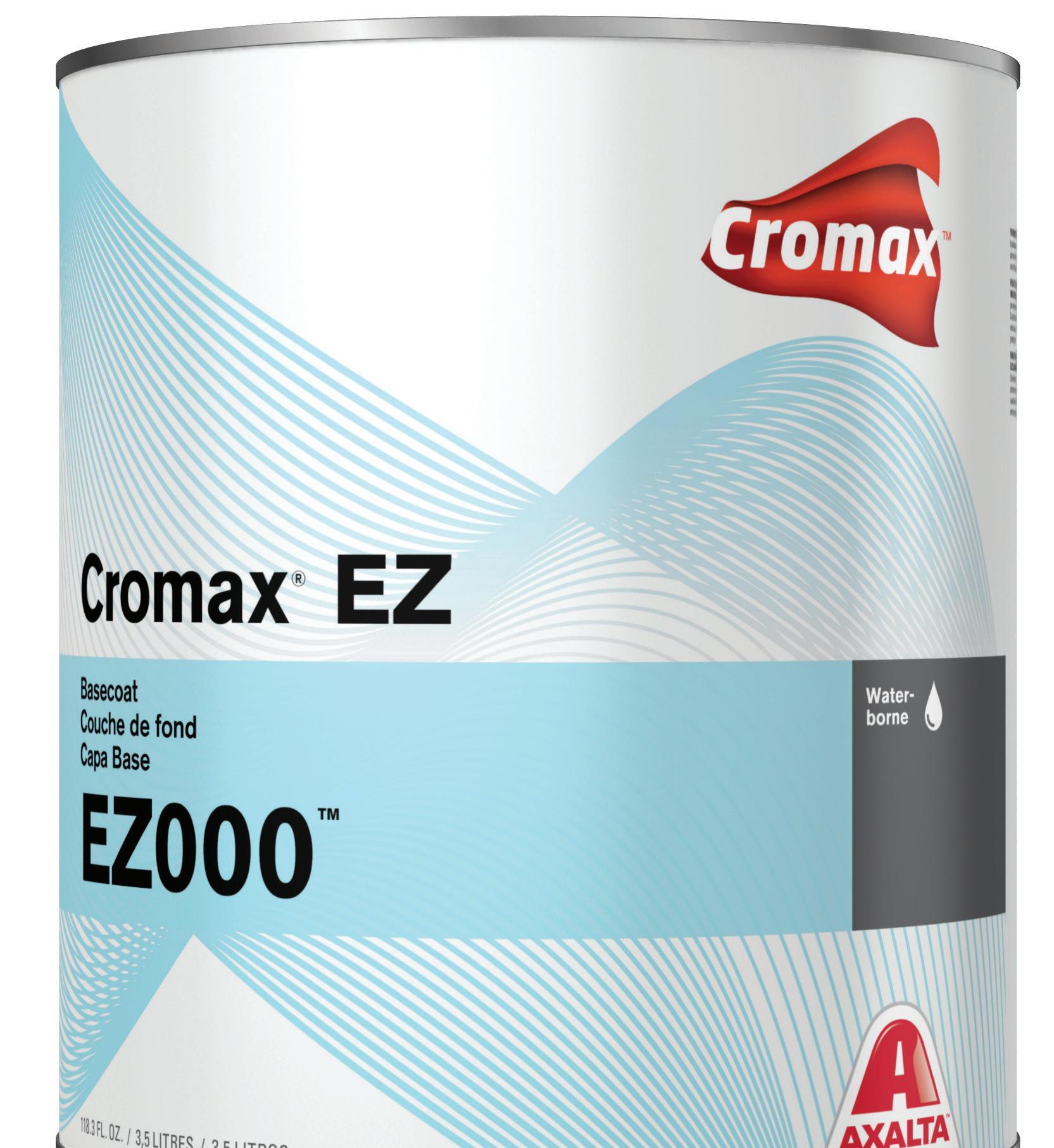
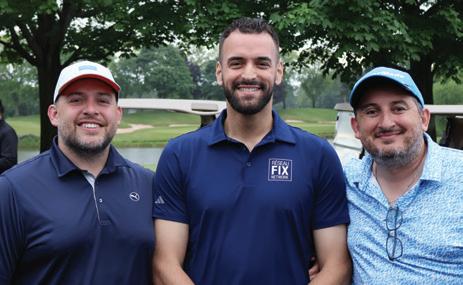
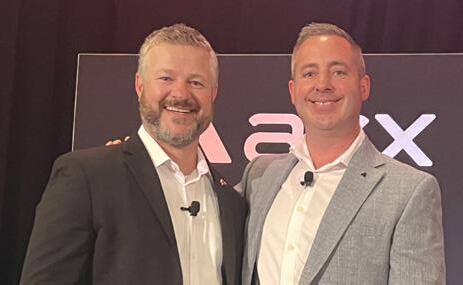
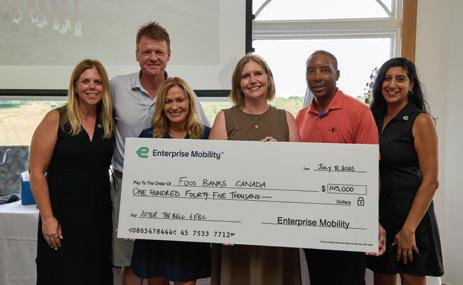
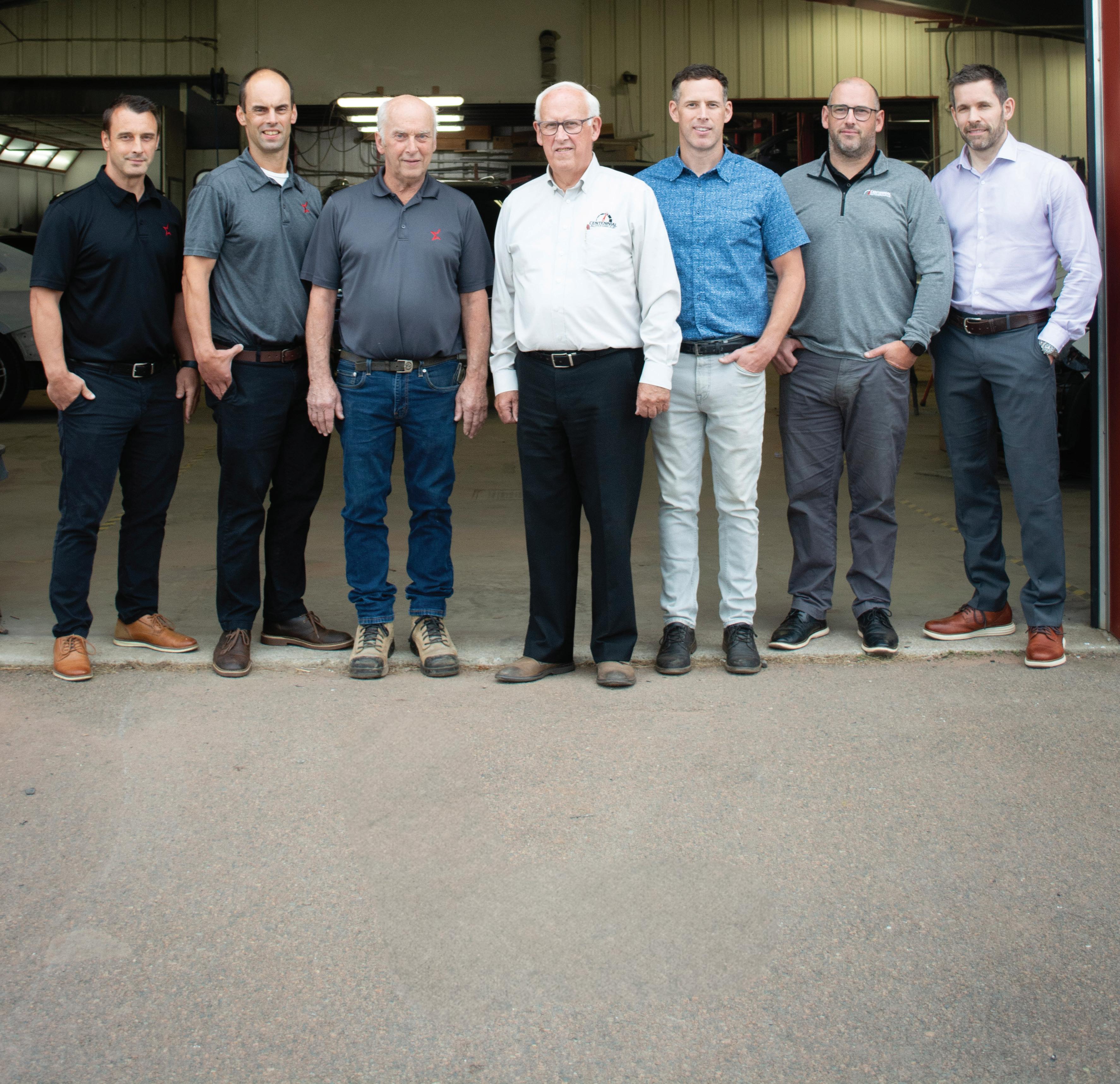
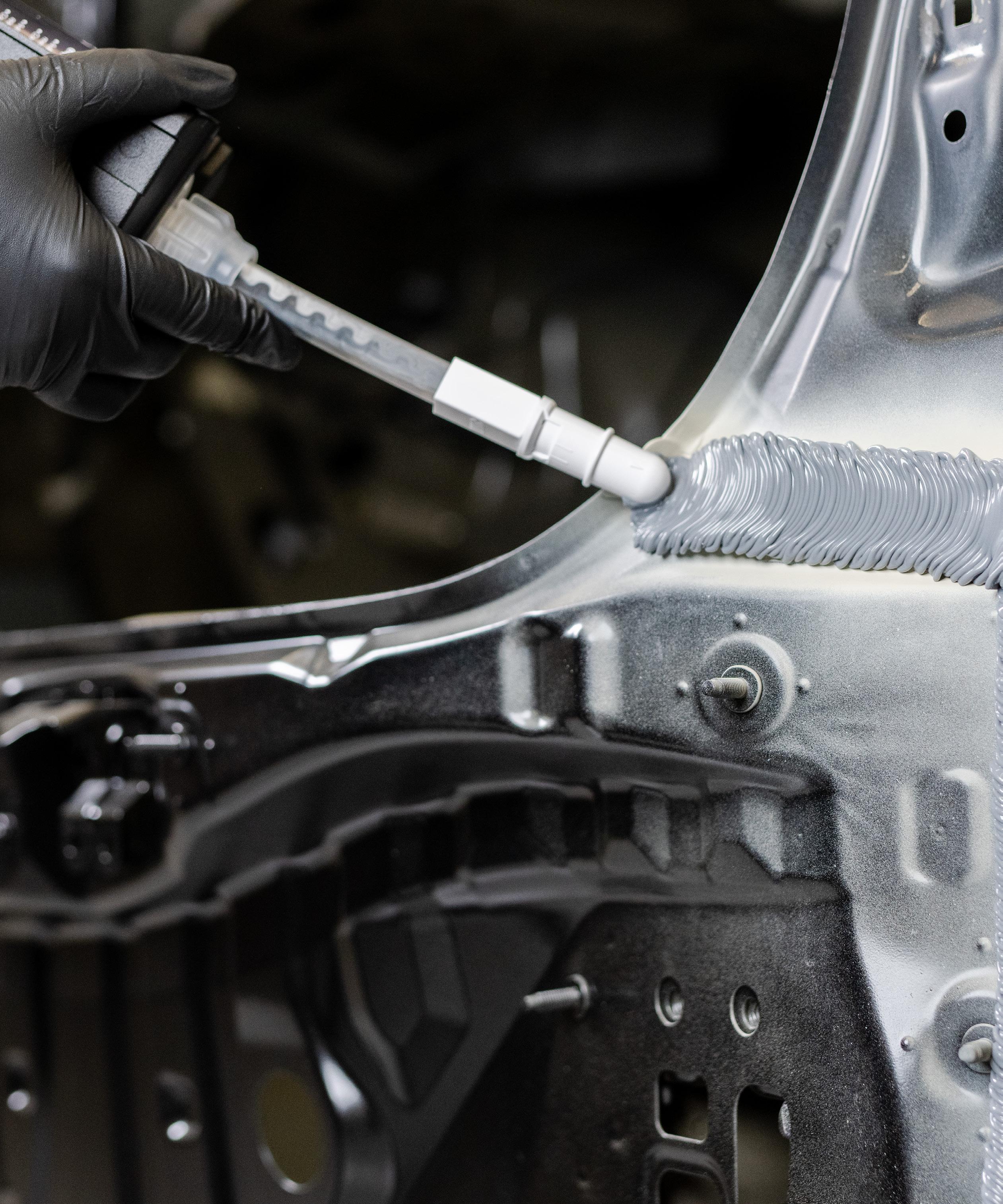







OEMs reference specific products and tools to complete the repair for a reason. They have been rigorously tested to OEM’s performance requirements for strength and corrosion resistance.
3M is more often referenced in OEM repair procedures for panel bonding and impact resistant structural adhesives than any other adhesive supplier.
Want to know more about OEM recommended products?
Get started here: 3MCollision.ca
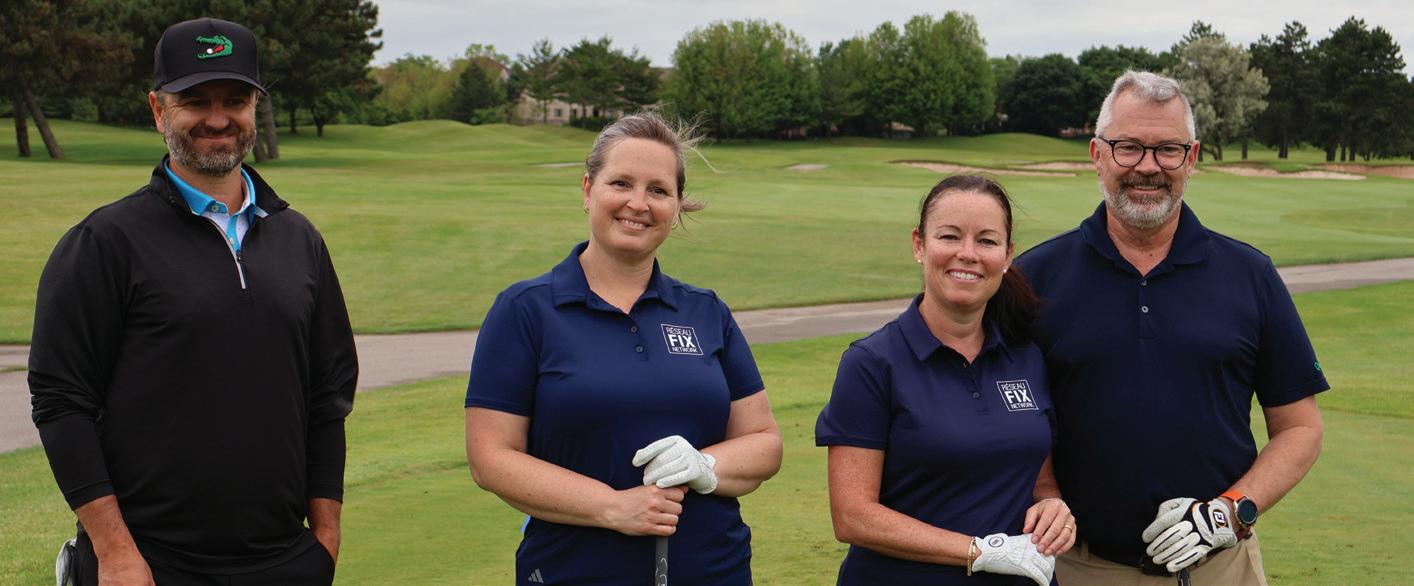
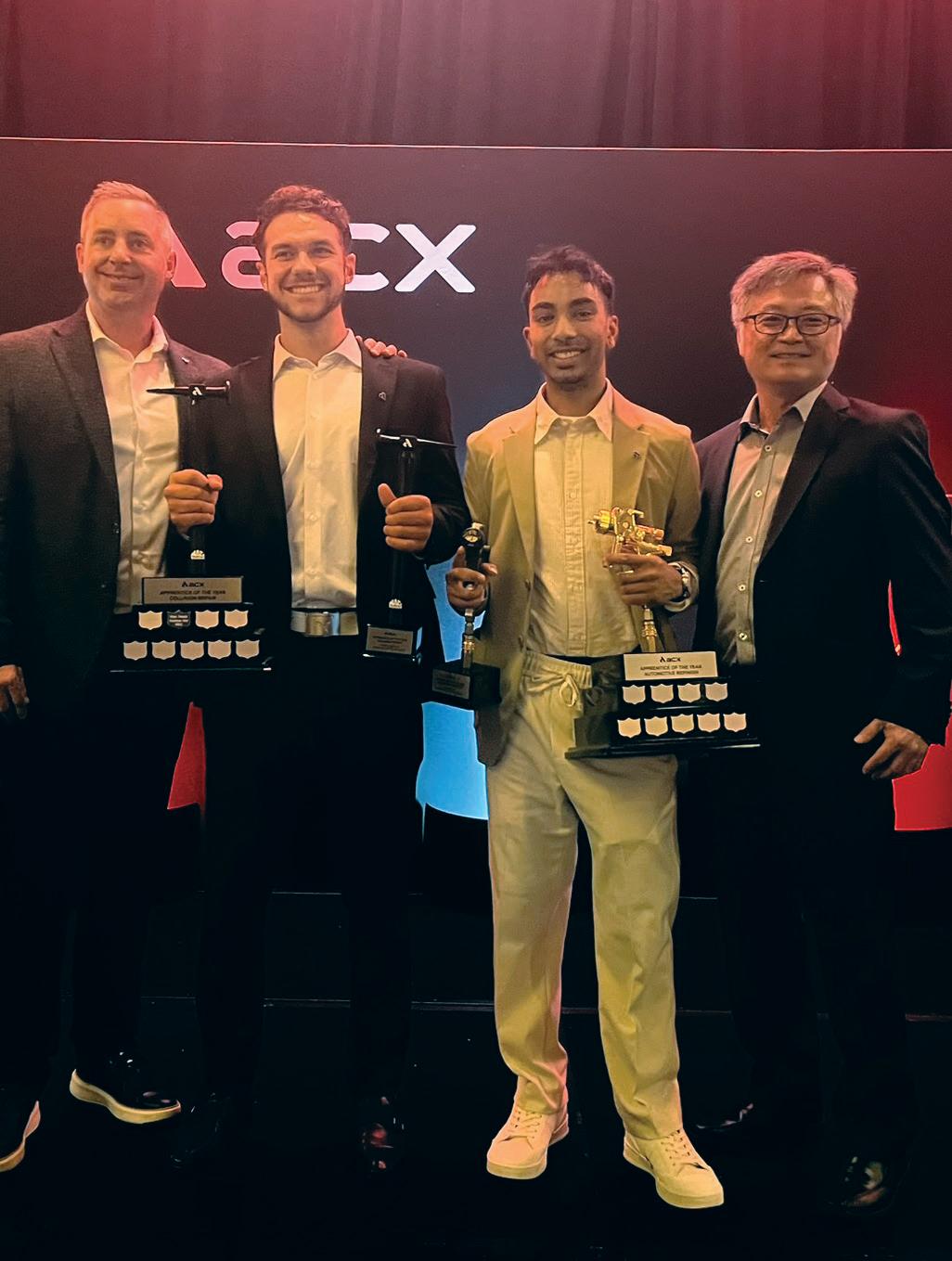
At ALIGN 2025, ACX unveiled its revitalized identity and digital roadmap—marking a pivotal moment of growth, clarity and connection across its expanding collision network.
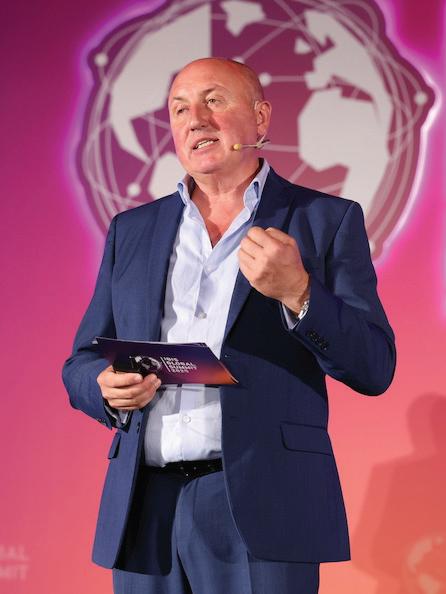
At the 2025 IBIS Global Summit in Istanbul, more than 350 collision repair leaders from over 30 countries gathered to confront global challenges—and shape the future of the industry through collaboration.


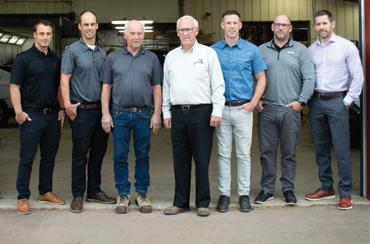

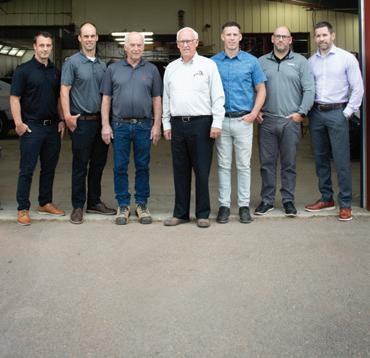



If you’re not at the table, you might be on the menu
BY DARRYL SIMMONS, PUBLISHER
There was a time when writing an estimate meant grabbing a clipboard, walking out to the lot, squinting at the damage, and jotting down a few numbers based on a combination of memory, gut instinct, and time spent on the floor. You’d punch it into the computer, fax it over (if the machine worked), and hope no one asked too many questions.
That era is—for the most part—behind us.
Today’s vehicles are smarter, more complex, and packed with systems that simply can’t be assessed visually or estimated loosely. We’re dealing with radar, lidar, battery packs, and more onboard computing power than the original space shuttles. And yet, some shops still treat estimating like it’s just a formality, something to get through on the way to the “real” work.
But here’s the truth: estimating is the real work. It always has been—and now, more than ever, it’s also the key to a healthy bottom line.
and justify their line items with documentation, have more influence than they think.
AI has the potential to dramatically improve estimating speed and accuracy. It may be able to recognise damage from images, flag calibration needs, and even recommend repair procedures. That’s helpful—especially when time is tight and vehicles are complex.
But it’s not infallible. AI doesn’t know what’s behind a bumper until you take it off. It doesn’t always account for rust, prior damage, or the judgment of an experienced tech. That’s why human insight still matters.
It’s also worth noting that many AI estimates— particularly those used early in the claims process—are designed more for triage than for teardown accuracy. Shops that take these estimates at face value may find themselves underpaid or overexposed.
Artificial intelligence is transforming estimating standards. The question isn’t whether it’s happening—it’s whether shops will help shape the rules.
Where estimating was once about quoting visible damage, today it’s about designing a repair strategy that accounts for unseen systems, safety protocols, and a growing list of OEM-specific requirements.
Modern estimating platforms now claim to offer features like real-time parts sourcing, calibration prompts, repair vs. replace suggestions, and even blueprint-level breakdowns based on a vehicle’s VIN. Some systems use artificial intelligence to analyse photos and flag damage patterns. Others integrate with scan tools, repair databases, and parts distributors to help streamline workflow.
Whether or not they always deliver on those promises is still a matter of debate—but the potential is there. And the more your team understands how to harness that potential, the more accurate, efficient, and profitable your estimates can become.
It’s no secret that many estimating systems are developed with insurers in mind. That means certain rules, defaults, or cost-saving measures may be built into the software itself.
Does that mean they’re inherently biased? Not necessarily. But it does mean shops need to be aware of what’s influencing the numbers behind the screen.
That doesn’t mean shops are powerless. Far from it. Estimators who understand how to navigate these systems, override defaults when necessary,
As the repair industry evolves, estimating is no longer something to rush through or hand off without care. It’s becoming a core competency— one that touches profitability, cycle time, liability, and customer satisfaction.
Done well, modern estimating tools have the potential to reduce unnecessary supplements, streamline parts ordering and scheduling, improve communication with insurers, and support better outcomes for both safety and customer service.
But only if they’re used properly. That means ongoing training, active oversight, and a willingness to challenge the system when it doesn’t reflect reality.
If you’re an owner or manager, don’t fall into the trap of treating estimating like a back-office task. Get involved. Understand how the tools work. Ask where the numbers are coming from. Question why a labour operation is missing or why a procedure wasn’t included.
The future of estimating isn’t just faster—it’s smarter. But only if the people using the systems are, too.
So don’t fear the technology. Learn it. Shape it. And make sure it serves your shop’s commitment to safe, complete, and properly paid repairs.
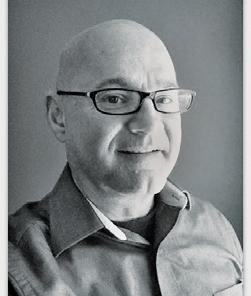
PUBLISHER
Darryl Simmons publisher@collisionrepairmag.com
ASSOCIATE PUBLISHER
Orest Tkaczuk | orest@mediamatters.ca
EDITOR
Allison Rogers | allison@mediamatters.ca
ART DIRECTOR
Yvonne Maschke | yvonne@mediamatters.ca
STAFF WRITERS
Mackenzie Grant | mackenzie@mediamatters.ca
Sadie McDonald | sadie@mediamatters.ca
VP OF INDUSTRY RELATIONS & ADVERTISING
Gloria Mann 647.998.5677 | gd.mann@rogers.com
INDUSTRY RELATIONS ASSISTANT
Wanja Mann 647.998.5677 | wanjamann1@gmail.com
DIGITAL OPERATIONS MANAGER
Cassie Doyle | cassie@mediamatters.ca
ONLINE EDITOR
Gideon Scanlon | news@collisionrepairmag.com
AUDIENCE ENGAGEMENT MANAGER
William Simmons | william@mediamatters.ca
MEDIA PRODUCTION SPECIALIST
Dayna Dicuangco | dayna@mediamatters.ca
CONTRIBUTORS
Abdallah Amro, Corey Carlaw, Greg Horn, Stefano Liessi, Jay Perry
SUBSCRIPTION
Single edition $7.99 One-year $39.95 ( 6 issues) Collision Repair™ magazine is published bimonthly, and is dedicated to serving the business interests of the collision repair industry. It is published by Media Matters Inc. Material in Collision Repair™ magazine may not be reproduced in any form without written consent from the publisher. The publisher reserves the right to refuse any advertising and disclaims all responsibilities for claims or statements made by its advertisers or independent columnists. All facts, opinions and statements appearing in this publication have been compiled and included with the permission, though not necessarily the endorsement, of the editor, or of independent columnist contributors, and are in no way to be construed as those of the publisher, or as endorsements of them.
PRINTED IN CANADA ISSN 1707-6072
CANADA POST CANADIAN PUBLICATIONS MAIL
SALES PRODUCT AGREEMENT No. 40841632
RETURN POSTAGE GUARANTEED
Send change of address notices and undeliverable copies to: 317 Reid St., Peterborough, ON K9J 3R2

“We acknowledge the financial support of the Government of Canada”
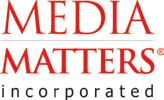
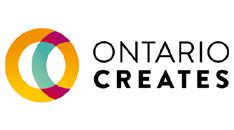
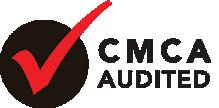

Collision Repair magazine is published by Media Matters Inc., publishers of:








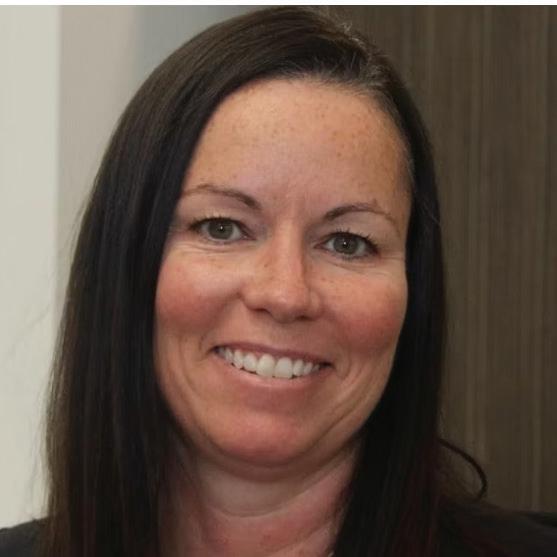
Fix Network has appointed Sonia Bouthillette as its new vice-president of sales and operations in Canada. In her expanded role, she will lead national sales and operations for Fix Auto, NOVUS Glass, and ProColor Collision, reporting directly to president and CEO Steve Leal. Bouthillette joined the company in 2009 and most recently served as vice-president of operations, overseeing field support and training across the country. She succeeds Jeff Labanovich, who was credited with strengthening Fix Network’s Canadian presence. “Sonia’s dedication and operational expertise have been key to our success,” said Leal. “We’re confident she’ll continue driving our growth across Canada.” Prior to joining Fix Network, Bouthillette held executive roles in the automotive and franchising sectors. Fix Network operates over 2,000 locations in 20 countries, with a strong presence in Canada’s collision, glass and mechanical repair markets.
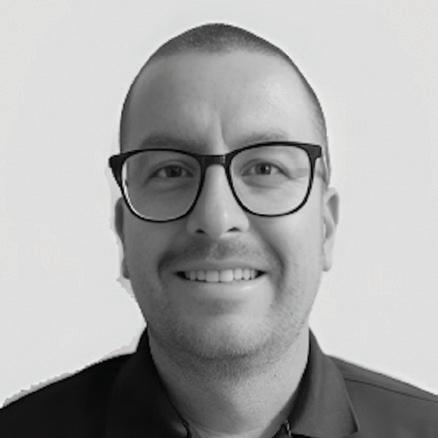
Martin Smith announced the new role in a social media post. “I’m very happy to share that I’ve started a new position as business development specialist for Manitoba/Saskatchewan with SATA Canada Inc! Looking forward to seeing many familiar faces and meeting new ones. See you soon.” Alongside many other well wishers, Joern Stoever, general manager of SATA Canada, offered his congratulations to his new colleague. “Martin, great to have you on board! Welcome to the SATA family—with family members around the world. I am sure that you will bring us forward and be a great asset for your customers.” Smith was previously head painter at Connexion Truck Centre and held business development roles with the TED Group. He holds a Red Seal journeyman certification in autobody collision and repair technology from Red River College Polytechnic.

AkzoNobel has named Fredrik Westin as its next chief financial officer, effective Jan. 1, 2026. He will succeed Maarten de Vries, who is set to retire in April 2026 after two terms with the company. Westin, currently CFO at Autoliv, brings over 25 years of experience in the industrial and automotive sectors, including senior roles at Sandvik and Johnson Controls. “Fredrik is a proven financial leader, well-equipped to build on Maarten’s strong legacy,” said supervisory board chair Ben Noteboom. CEO Greg Poux-Guillaume praised Westin’s global and operational expertise and thanked de Vries for his lasting impact. Westin’s appointment is subject to shareholder approval at the 2026 AGM.

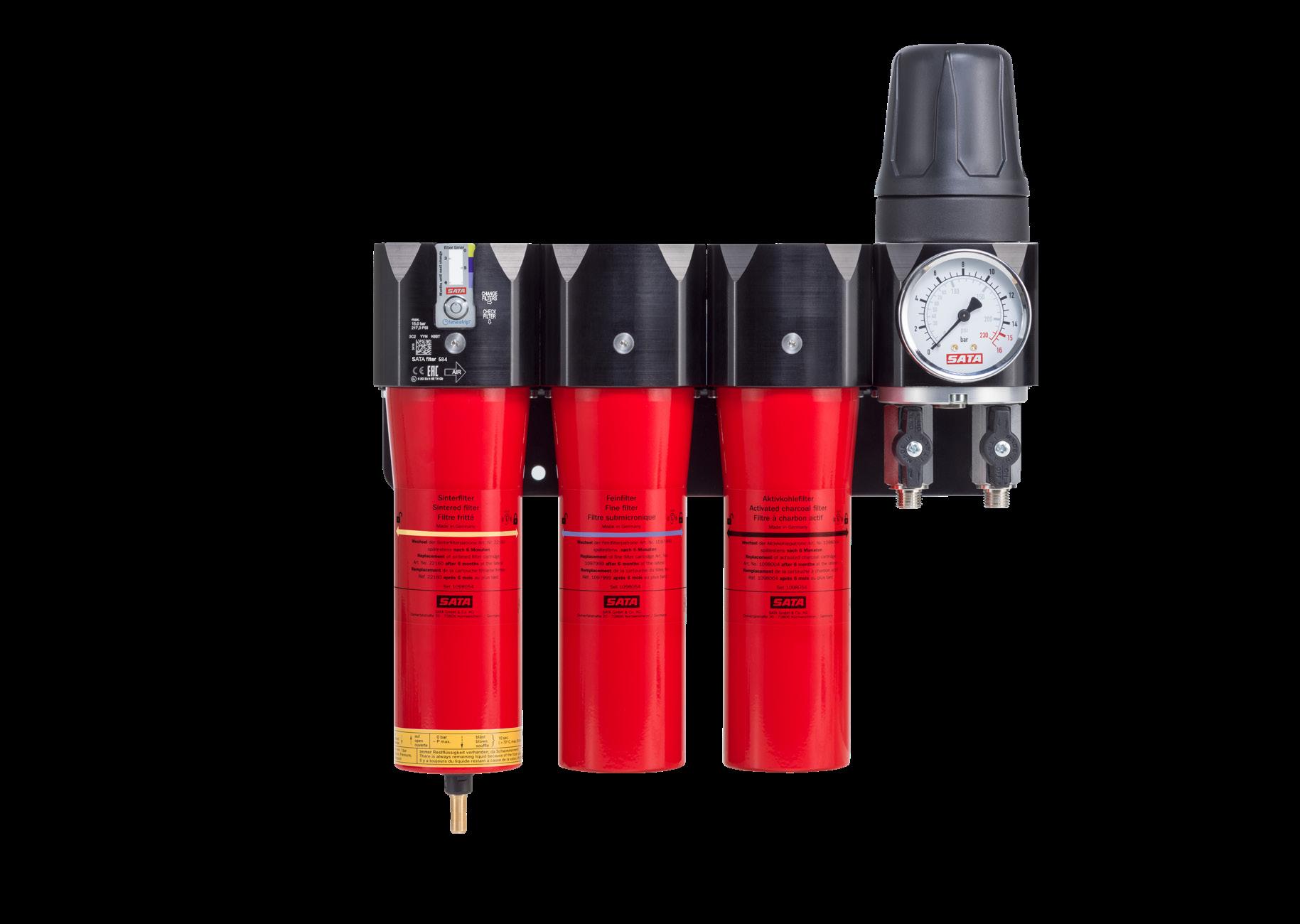

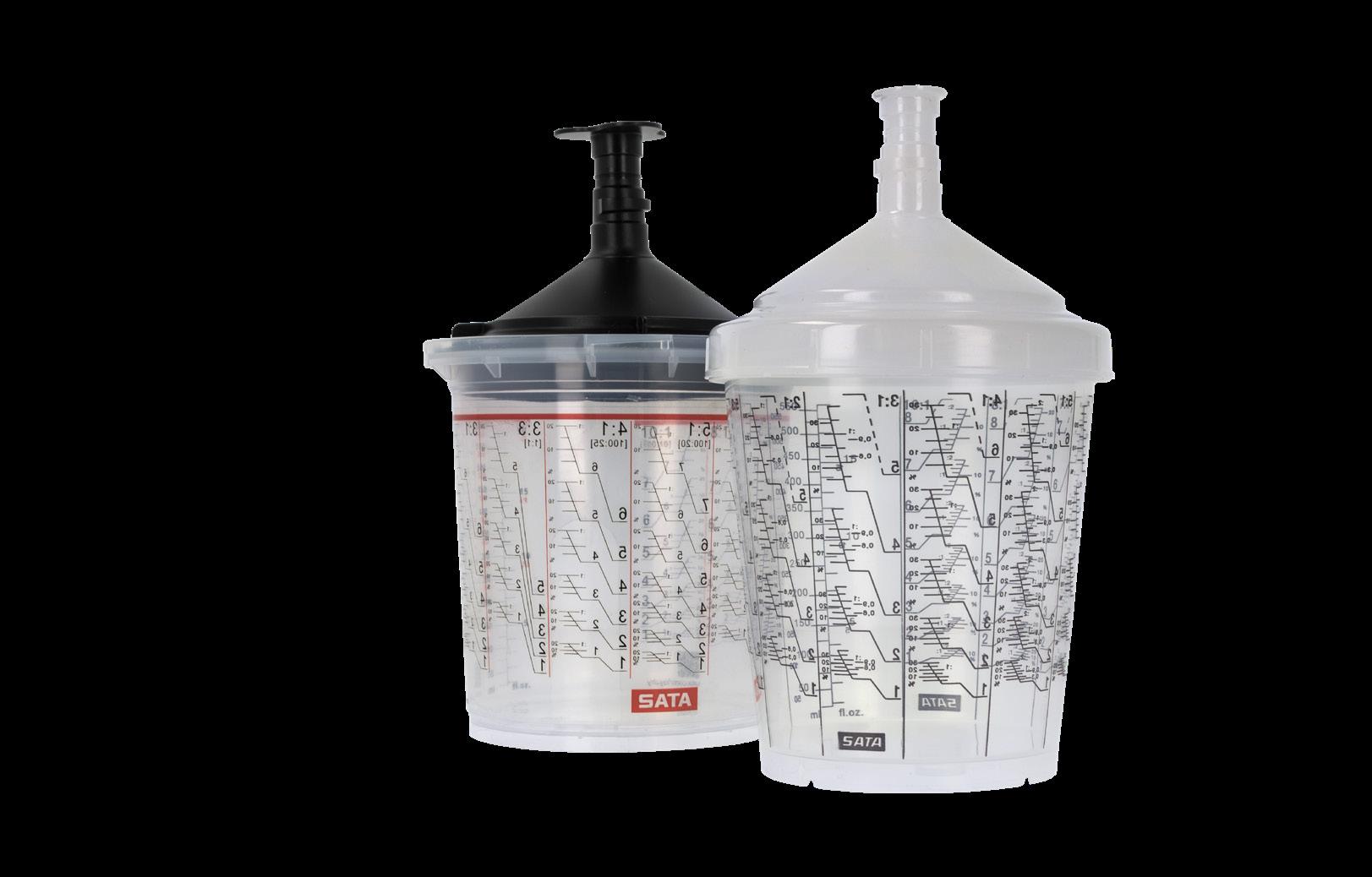
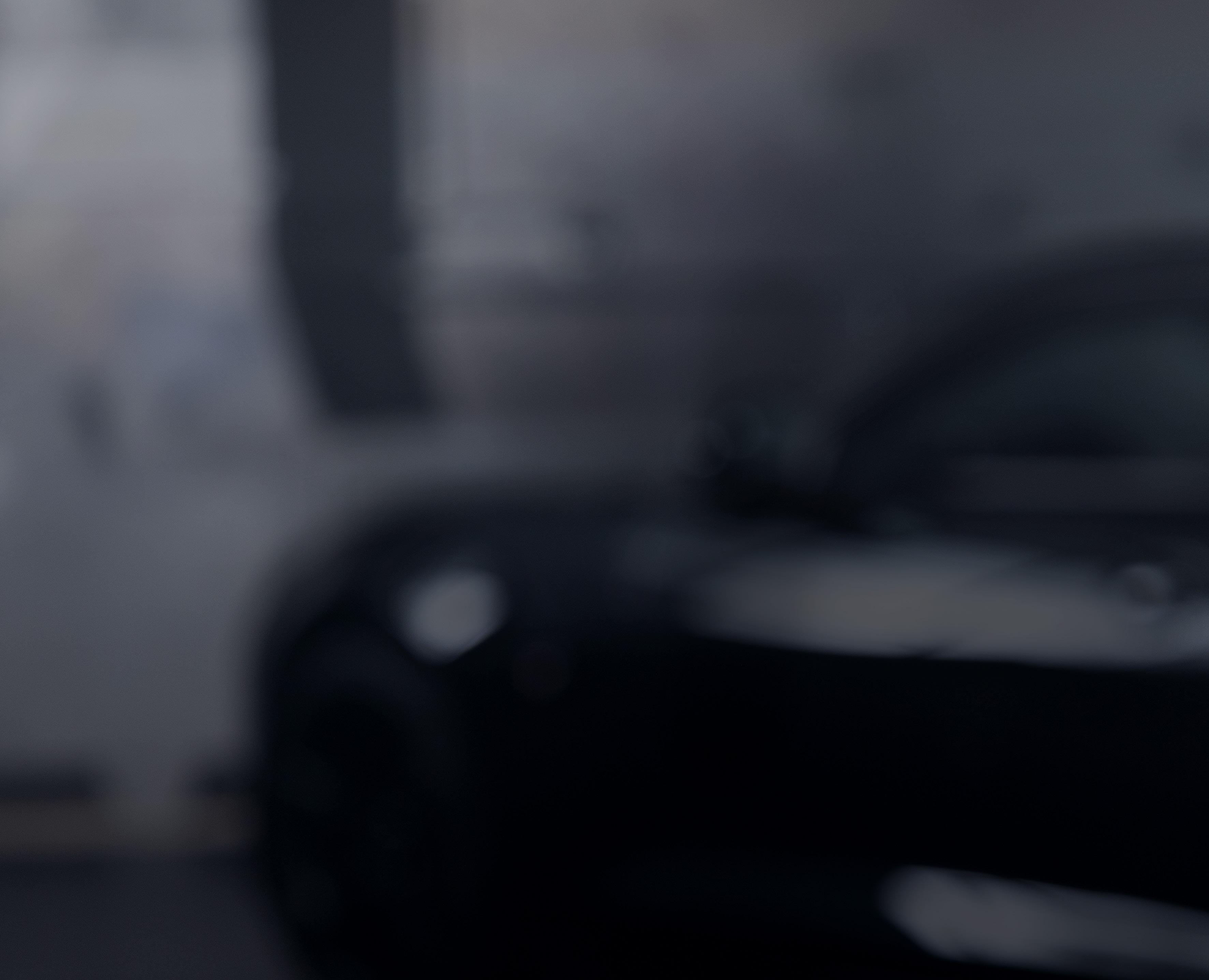
SATA products help guarantee perfect finishes through their excellent precision and highest quality.
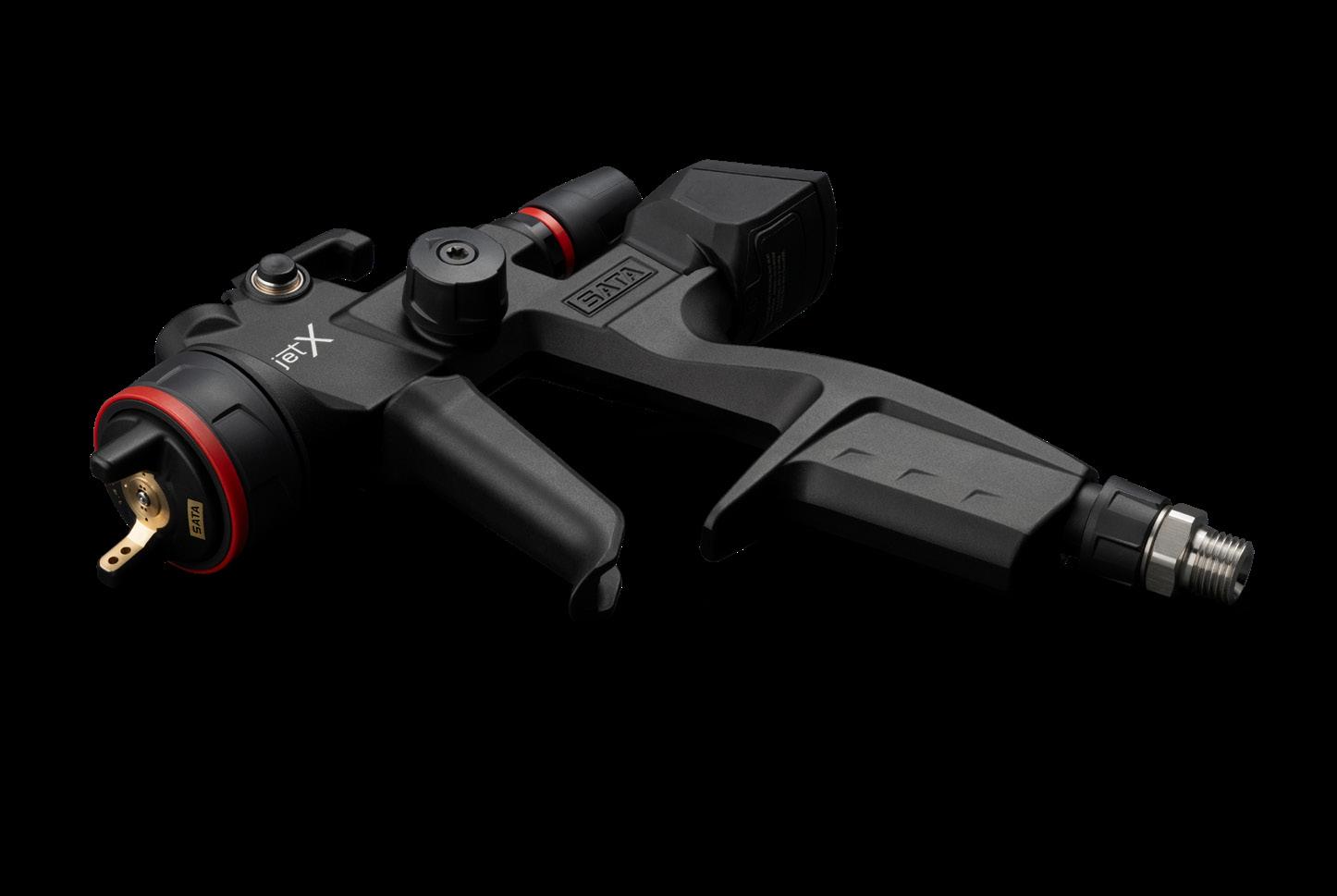
SATA products help guarantee perfect finishes through their excellent precision and highest quality.
You think nothing beats a perfectly finished surface?
You think nothing beats a perfectly finished surface? We agree. We have been developing spray guns, breathing protection systems and accessories to meet the highest standards for decades.
We agree. We have been developing spray guns, breathing protection systems and accessories to meet the highest standards for decades.
You are welcome to judge us by the results you achieve with them.
You are welcome to judge us by the results you achieve with them.




Canada catalogue
Canada catalogue

When spraying a catalyzed paint or waterborne paint product inside a spray booth or prep deck, the proper personal protection equipment is an air-supplied respirator. Air supplied respirators must be supplied with Grade “D” Breathable Air.
Quality Air Breathing Systems are designed to provide Grade “D” Breathable Air from your existing compressed air system, for compliance with current CSA Standards when using an air supplied respirator. Systems sized from one person to twelve persons at the same time. We offer complete systems, with proper filtration and carbon monoxide monitors, panel mounted, and ready to use. Available in belt mounted, wall mount, and portable versions.
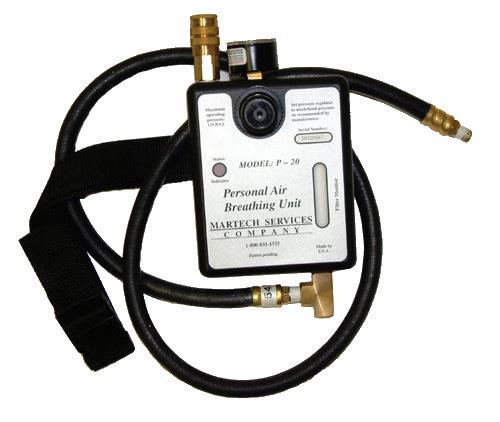
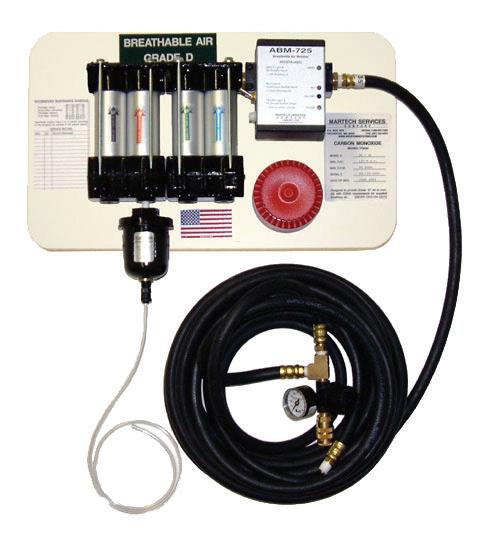
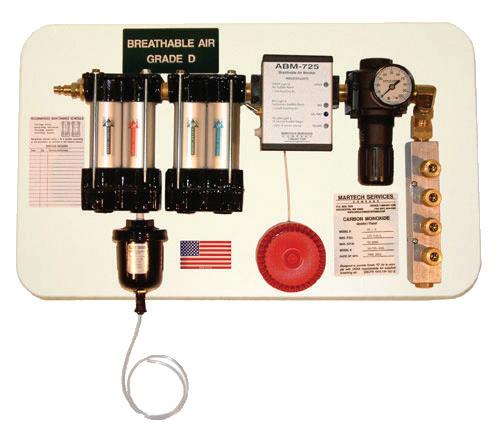

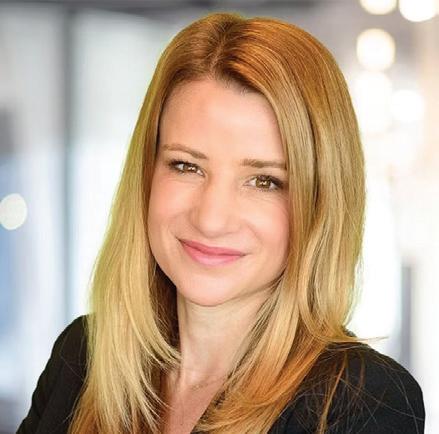
Marian Van Hoek has been appointed managing director of BASF Canada, headquartered in Mississauga, Ontario. A BASF Canada team member since 2015, Hoek most recently served as general counsel and chief compliance officer, and sits on the Canadian Leadership Team and Executive Committee. With over 20 years of legal experience, including roles at BlackBerry and BASF, Hoek brings extensive expertise to her new position. In a LinkedIn post, she expressed her commitment to driving innovation and sustainable growth for BASF Canada.
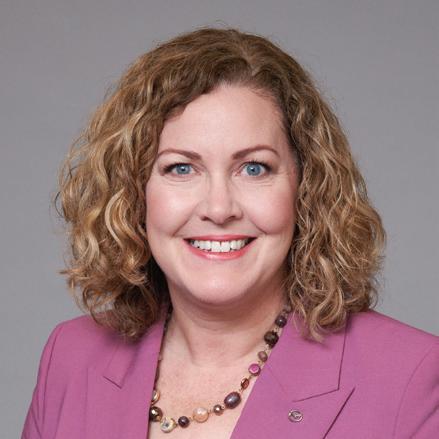
Mazda Canada has announced Amy Fleming as its next president and CEO, succeeding David Klan, who will retire on September 30 after 33 years with the company. Fleming, currently chief operating officer, will officially take over this fall. Fleming will be the first woman to lead Mazda’s Canadian operations. Originally from Antigonish, N.S., she joined Mazda Canada in 2006 and has held leadership roles across sales, marketing, operations and customer experience. “It’s an incredible honour to lead Mazda Canada at such a pivotal time,” said Fleming. “I’m committed to building on the strong foundation Dave established.” Klan, who became president in 2019, led the company through a period of record performance and industry recognition.
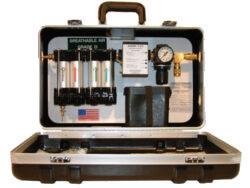

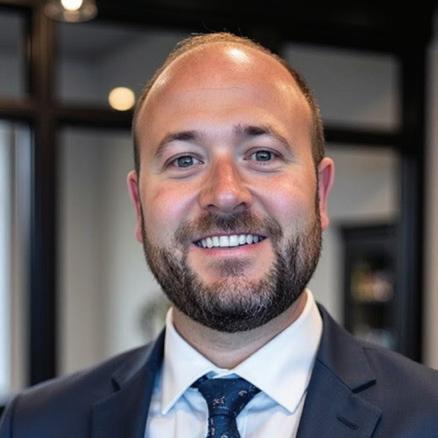
Advantage Parts Solutions has named Adam Tolowitzki as its new vice-president of strategy. The former OEC executive will lead efforts to expand the company’s presence in the collision and mechanical repair sectors.Tolowitzki brings deep experience in strategic development and cross-sector collaboration, having led growth initiatives across the OEM and aftermarket spaces. In his new role, he will align strategy, sales and customer success while strengthening partnerships across North America. CEO Bob Kirstiuk called Tolowitzki a “thoughtful, strategic and people-centered” leader whose values align with Advantage’s mission. Tolowitzki, while excited for the opportunity, expressed gratitude for his time at OEC.
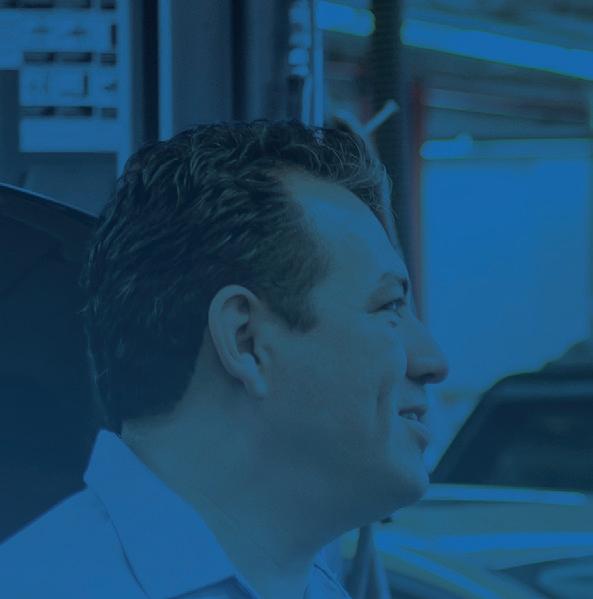

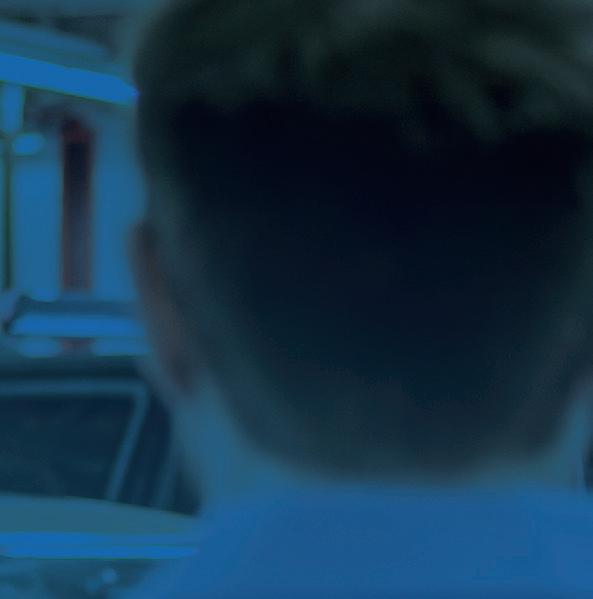

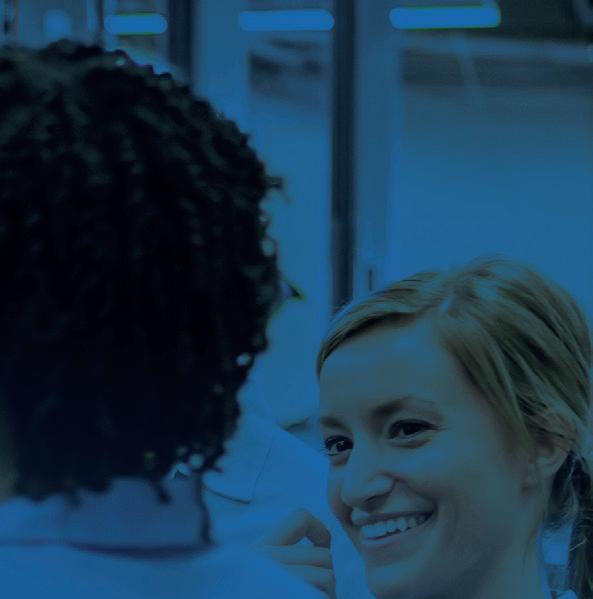



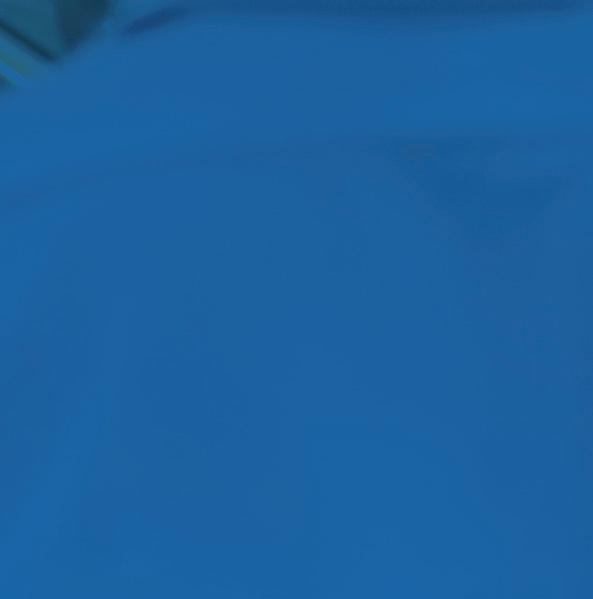


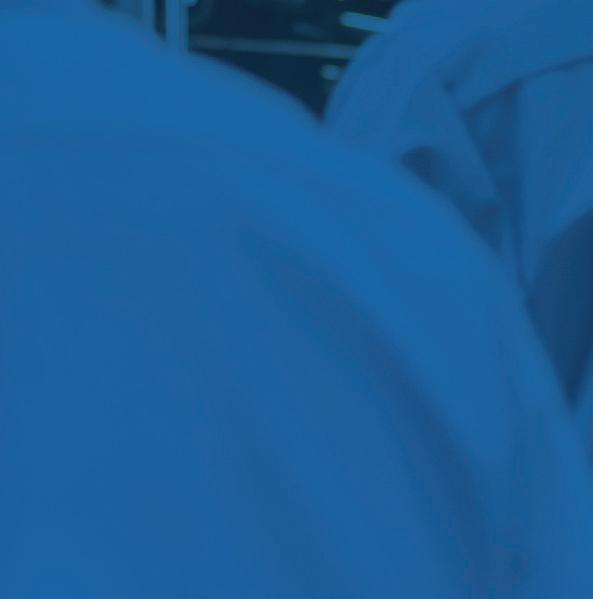


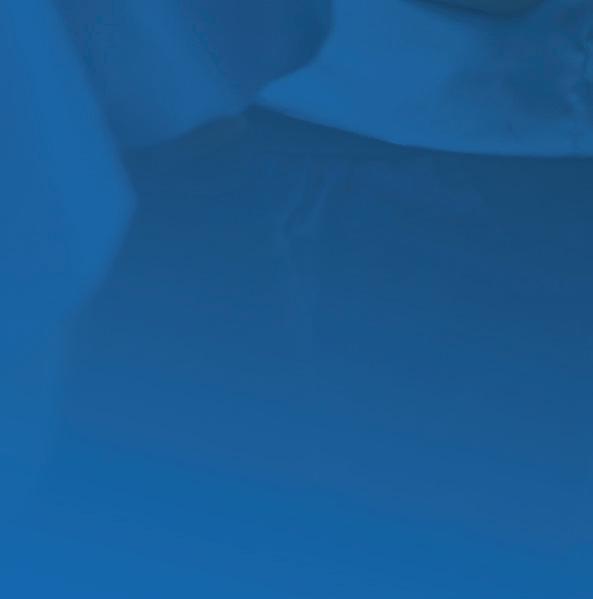

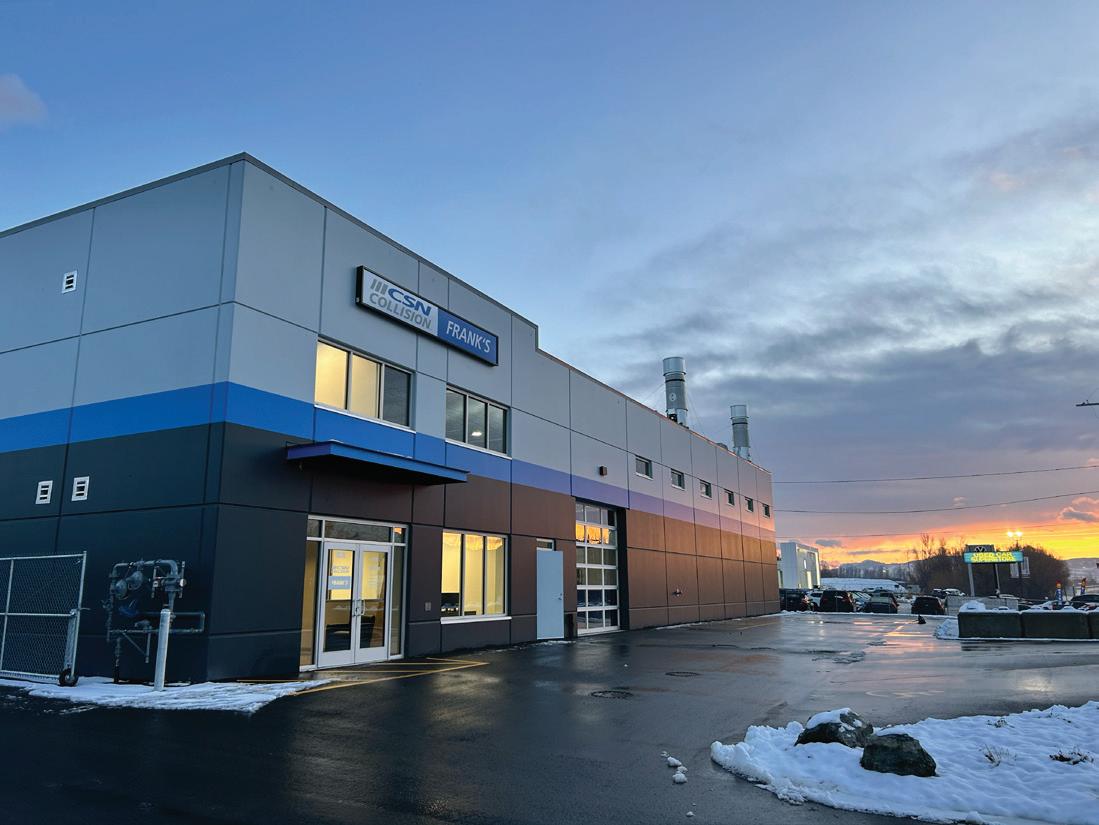

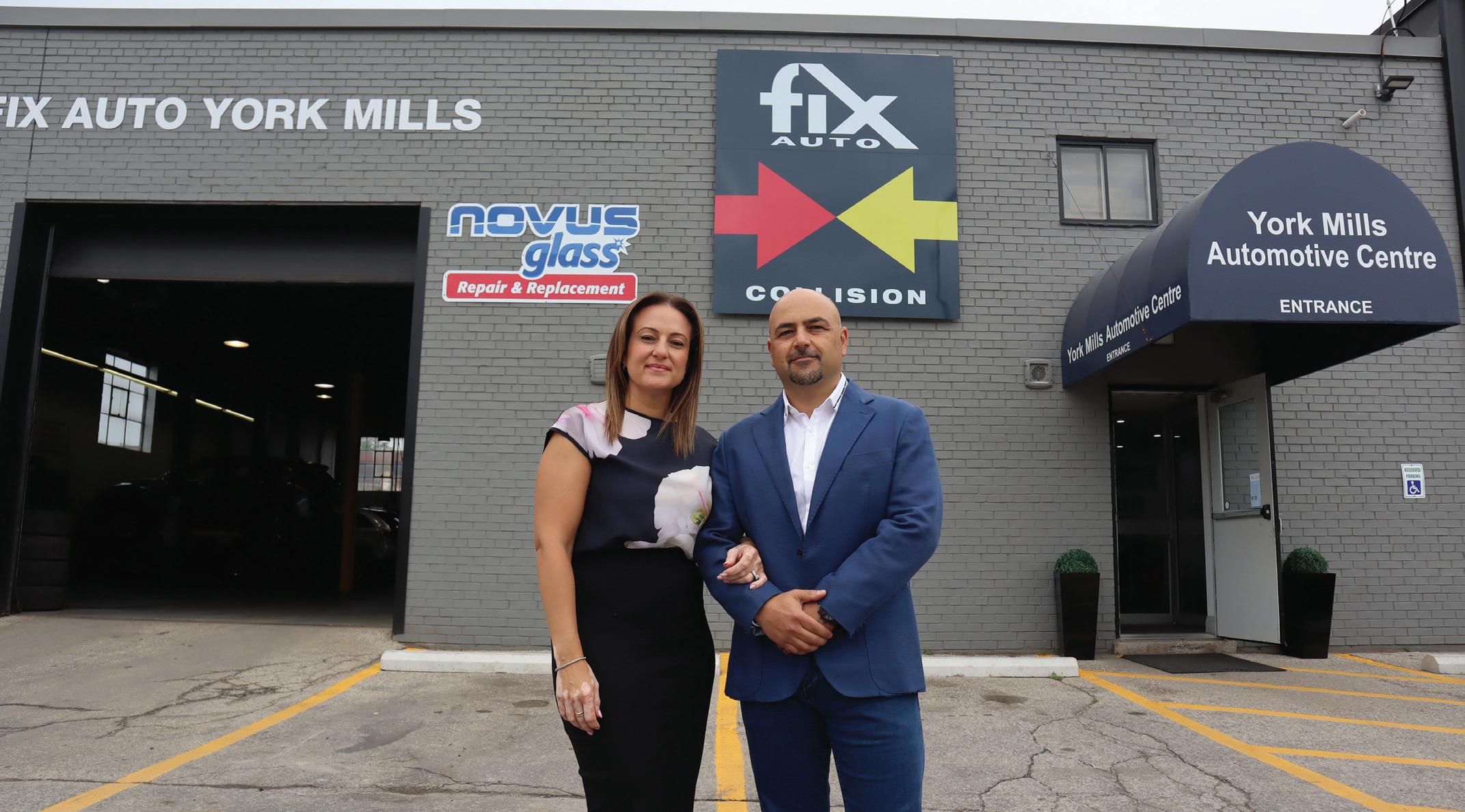
In a rapidly evolving industry driven by technology, Louie Riccelli exemplifies resilience and innovation. With deep family roots and decades of experience, he has transformed his longstanding collision locations—North Seven Auto Body and York Mills Automotive Centre—into integrated, futurefocused destinations. As a new member of Fix Network, Louie is leading his legacy into the future, blending traditional family values with cutting-edge services.
For Riccelli, this isn’t just about rebranding; it’s a strategic evolution. His shops—already well-established in the community—are now comprehensive centres that uphold trust, quality, and service excellence. By fusing history with innovation—such as advanced diagnostics, OEM repair standards, and integrated glass services—Louie is advancing Fix Network’s “Shop of the Future” vision, one repair, family, and generation at a time.
Louie’s journey began in 1973 at North Seven Auto Body, a cornerstone of Vaughan’s community, founded by his father, Elio Riccelli. Growing up alongside his father, he developed a passion for cars and a drive to innovate. At 18, he managed the shop alone when staff unexpectedly left, learning resilience and humility—lessons he still values today.
Reflecting on that pivotal moment, Louie shares: “I learned how valuable every employee and customer is, and I realized the grit it takes to lead when the odds are stacked against you. Those lessons have stayed with me ever since.”
Over the years, Louie transformed North Seven Auto Body into a successful collision shop and expanded York Mills Automotive Centre into a thriving hub for mechanical and collision repairs. Recognizing the significance of strong brand identities, he strategically rebranded the time-honoured family businesses under the Fix Auto and ProColor Collision brands—names trusted within the collision community that harness the strength of the Fix Network. With both locations now rebranded as ProColor Collision Vaughan Central and Fix Auto York Mills, Louie has established top-tier shops within the Fix Network.
His leadership has been recognized industry-wide: “Louie Riccelli is a true example of a successful entrepreneur who brings great value to our network,” says Amin Youssef, Regional Vice President of Fix Network Canada. “His ability to adapt and innovate while respecting his roots sets a benchmark for excellence across the entire Fix Network.”
He then acquired and revitalized a second location, doubling output with the same team, proving that tradition fused with innovation drives success.
Louie’s success isn’t just about preserving legacy; it’s about continuous evolution. His shops now serve as reliable, comprehensive centres offering both mechanical and collision repairs, fostering trust and loyalty across generations.
Recently, Louie made a strategic investment in top-of-the-line Hunter Engineering wheel service equipment, ensuring his shop can provide the best service for high-end vehicles in the York Mills area. The addition of NOVUS Glass complements his collision services, supporting both his collision clients and retail customers with advanced glass repair and calibration, especially critical for vehicles equipped with ADAS.
“Louie has effectively integrated auto glass repair into his existing operations, emphasizing safety and technology,” notes Zakari Krieger, Vice President of Prime CarCare. “His focus on calibration equipment and staff training highlights how a modern, high-quality shop should operate—delivering safety, efficiency, and peace of mind to clients.
Louie’s shops feature in-house scanning, OEM repair software, and certified calibration tools—reducing cycle times, improving quality, and elevating customer satisfaction. His proven success in retail service now extends further with the addition of glass, demonstrating a comprehensive approach to serving both collision and retail clients.
His core values—humility, respect, and embracing change—are the foundation of his leadership. With credentials like I-CAR Gold Class and multiple OEM certifications, Louie continues to inspire his team and push for continuous improvement.
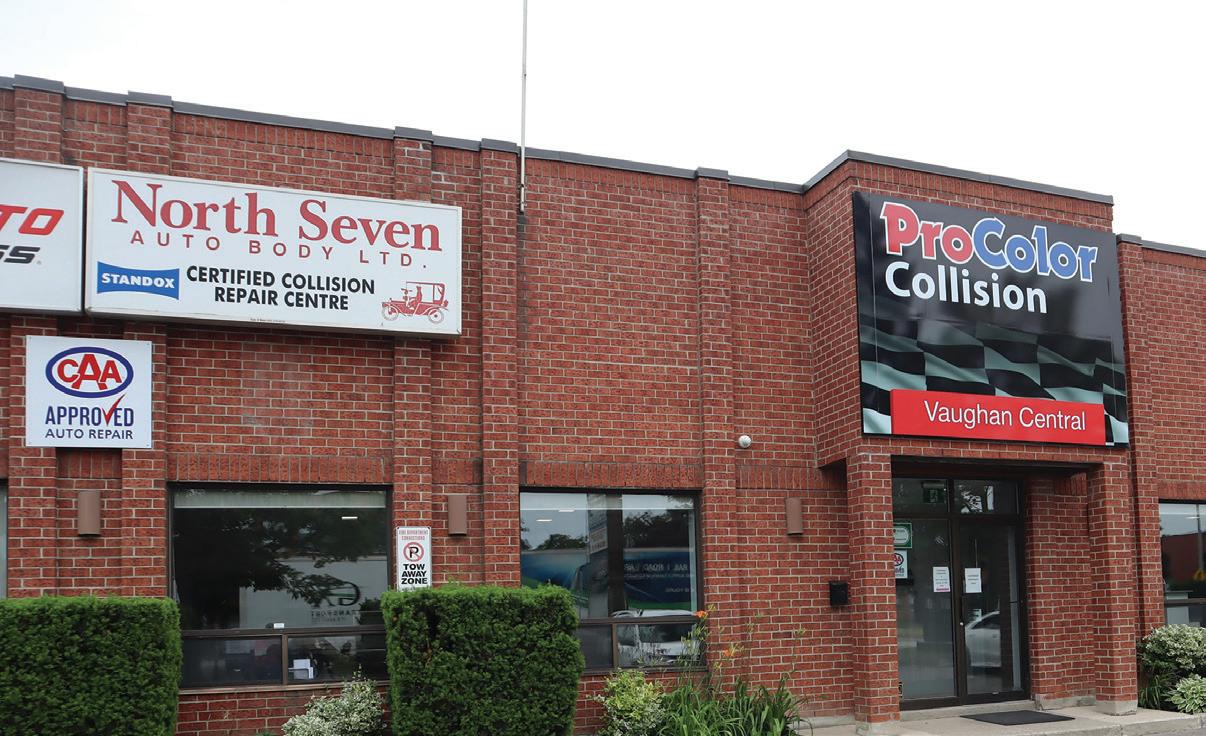
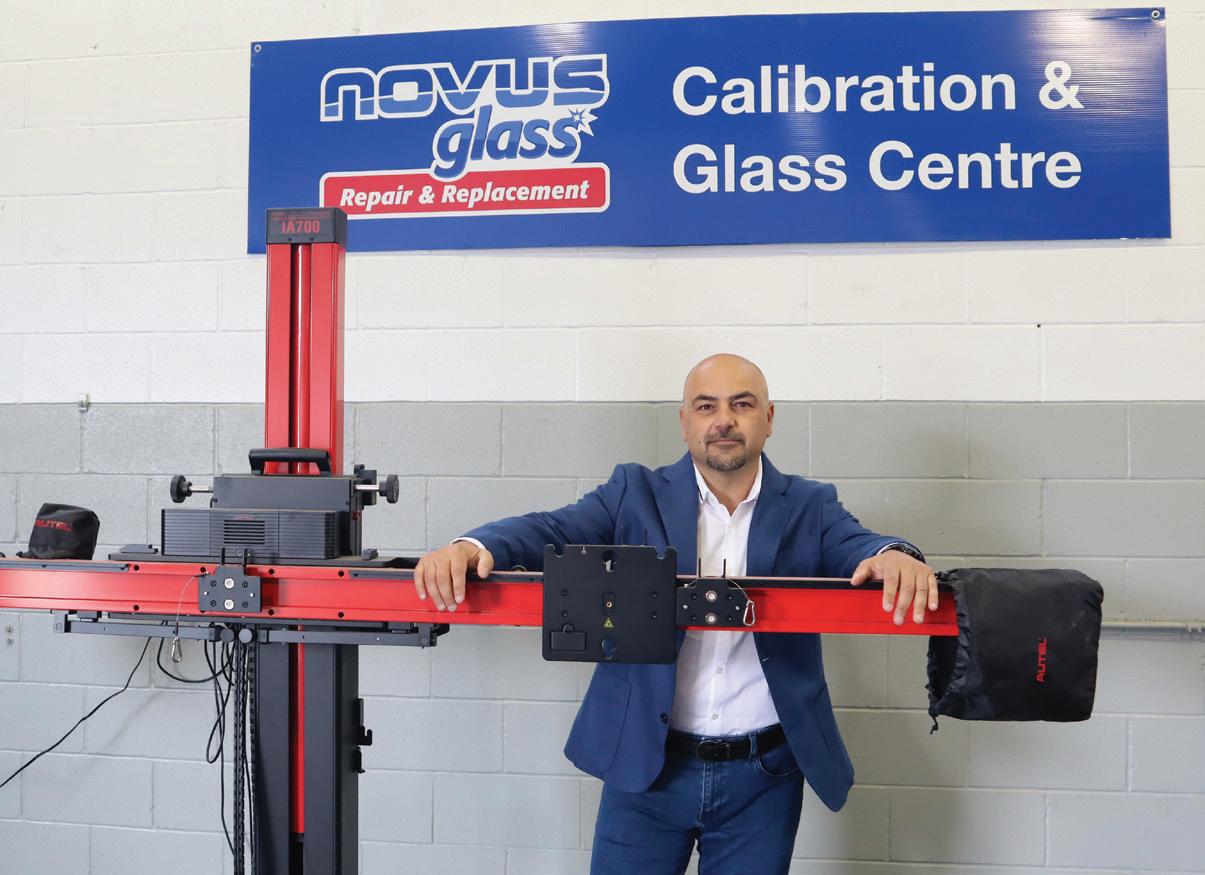
Partnering with Fix Network was a strategic move to accelerate Louie’s growth and innovation. The alliance with trusted brands like Fix Auto, NOVUS Glass, and ProColor Collision allows him to expand service offerings, strengthen insurer relationships, and leverage co-marketing initiatives— creating a full-service automotive destination.
His core values—humility, respect, and embracing change— are the foundation of his leadership. With credentials like I-CAR Gold Class and multiple OEM certifications, Louie continues to inspire his team and push for continuous improvement.
Louie’s shops are community pillars, with loyal clients trusting decades of high-caliber service. From supporting local initiatives to welcoming co-op students, giving back is second nature. “Our door’s always open,” Louie says, reflecting on the families he’s helped keep on the road.
Family is central to his community focus. His wife, Chiara, is an active partner, fostering a culture of trust and support that extends to staff and clients alike.
Louie’s advice for family-business owners: “Don’t let small issues snowball. Set boundaries, prioritize family, and embrace change. When family businesses work, nothing beats it.”
Through his leadership rooted in tradition and innovation, Louie Riccelli continues to steer his shops—and the industry— toward a sustainable future that honours his legacy while embracing the opportunities ahead.
On Sunday, June 15, the Fix Network team cheered on the Stake F1 Team Kick Sauber during the Canadian Grand Prix.
“Our franchisees, partners and members of the Fix Network team experienced an extraordinary day at the Canadian Grand Prix, thanks to our partnership with the Stake F1® Team KICK Sauber,” the franchise wrote in a social media post. “Under perfect sunshine, [members of the Fix Network team] enjoyed exclusive paddock access, met the drivers and watched the race from breathtaking VIP seats. Some of our Atlantic franchisees even made the trip to Montreal to be part of this once-in-a-lifetime experience!”
Kick Sauber is a Swiss Formula One team operating with Ferrari engines. It entered a partnership with the Fix Network in 2024. The auto repair franchise’s logo features prominently on the team’s C45 car, appearing on the inner rear wing and nose.
According to its members, the partnership reflects shared values of performance, precision and forward-thinking innovation, while also giving Fix Network international brand visibility through its association with the global F1 platform.
The Stake F1 Team Kick Sauber had a solid showing. Nico Hülkenberg finished eighth, earning valuable points, while teammate Gabriel Bortoleto crossed the line in fourteenth, one lap down.
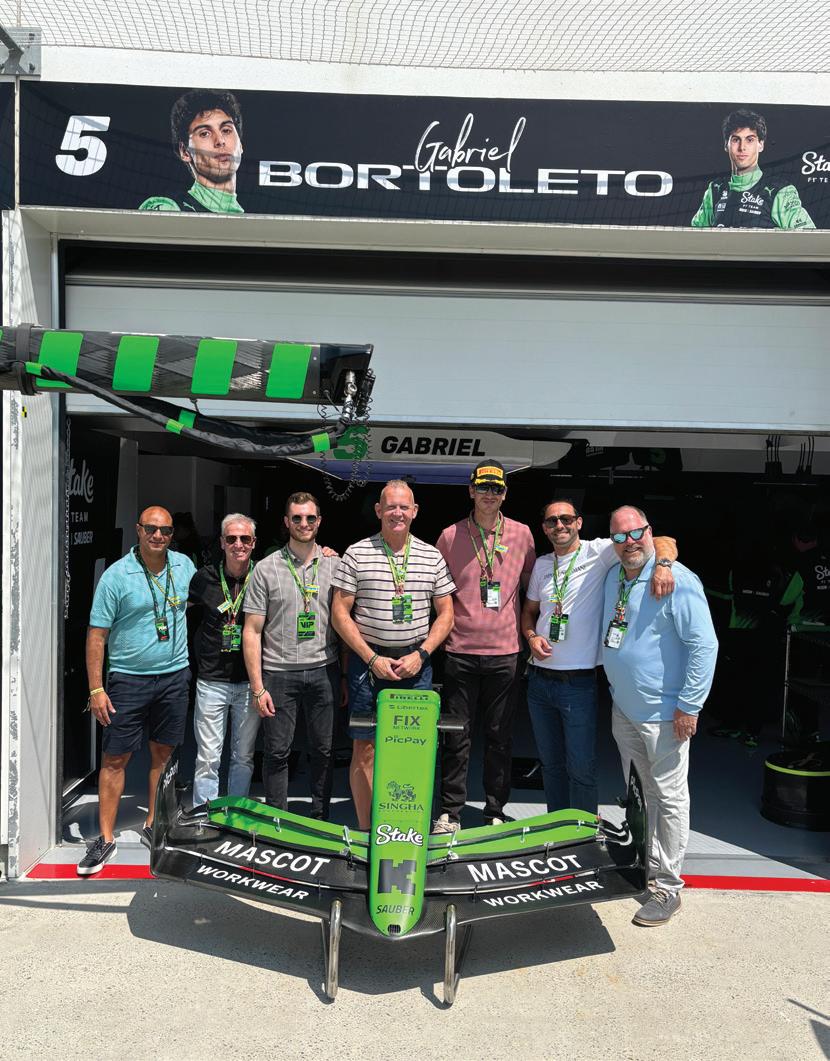

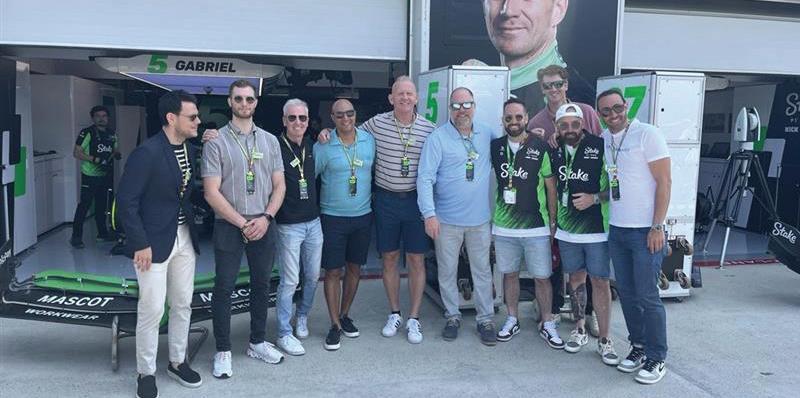
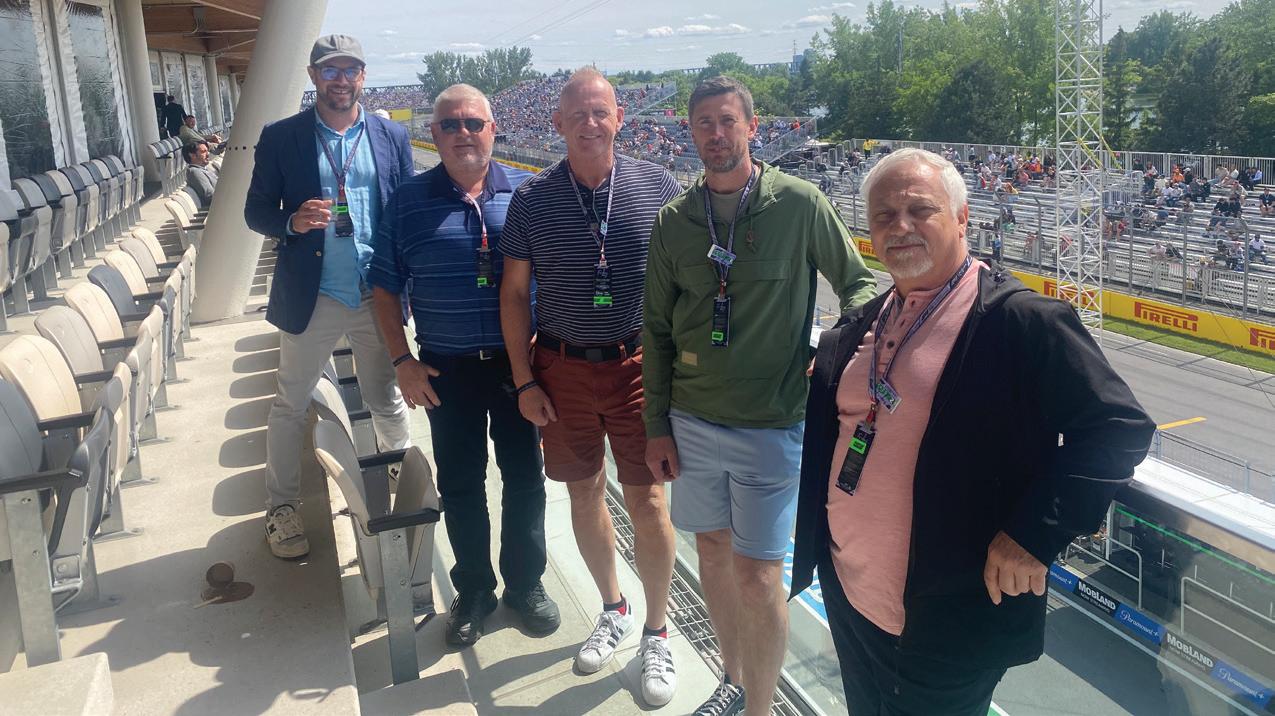
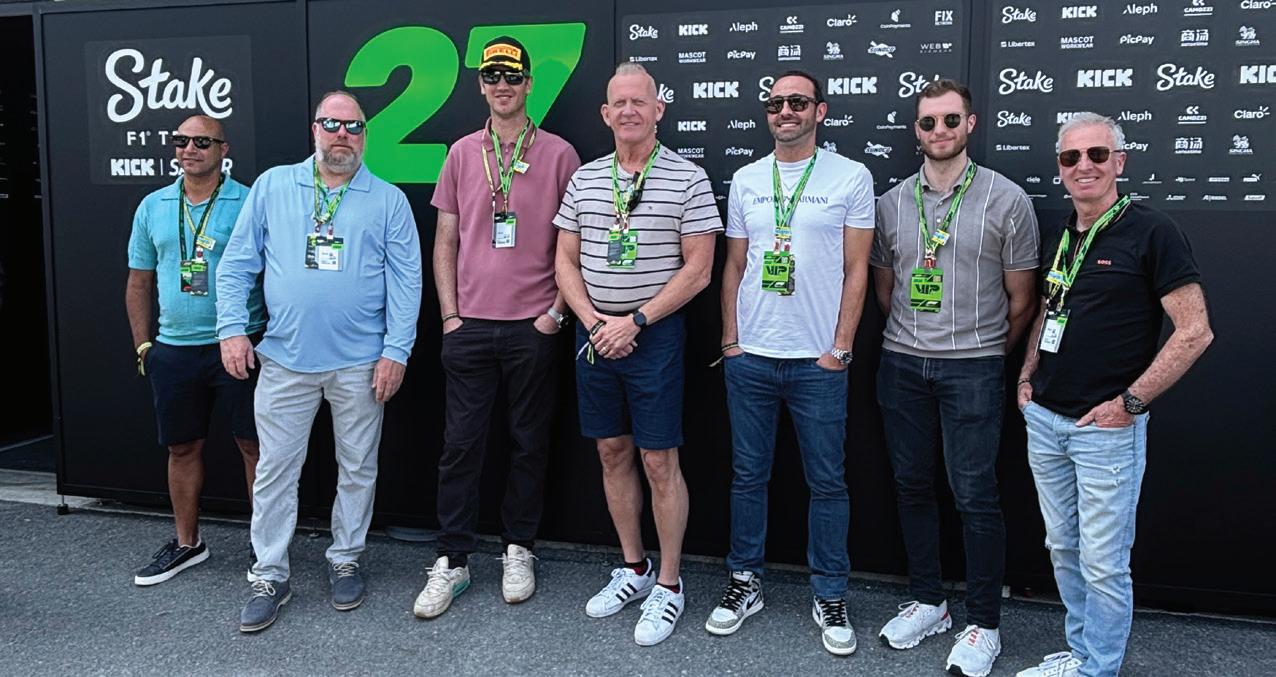
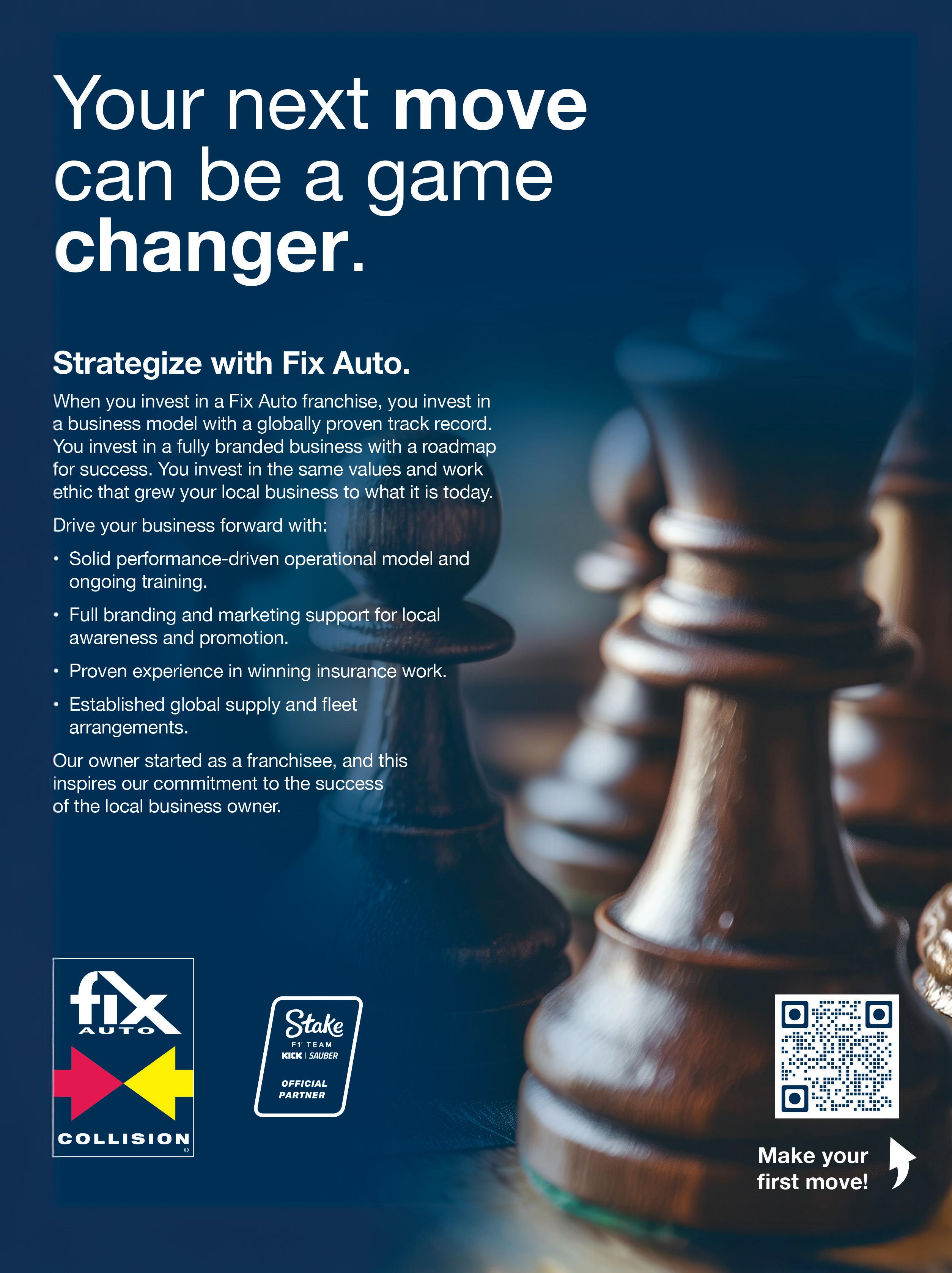
CARSTAR recently highlighted the story of a father-daughter duo making an impact at one of its Greater Toronto Area locations. Ashley and Bisram Deokinandan are both part of the family behind CARSTAR Newmarket, which first opened its doors in 2012. Now in its 13th year of operation, both Deokinandans are working at the shop alongside Bisram’s wife, Romena, and his son, Ryan. The report highlighted how Ashley had come to admire her father’s work ethic, kindness and willingness to make sacrifices for loved ones as a result of her time working beside him.
“We had no idea then how hard he worked all day, often juggling multiple jobs,” she said in the press release. “But no matter how tired he was, he never skipped those moments with us. That time together is one of our fondest memories. He’s a real hero in our hearts.”
She also talked about how her father had begun preparing them for positions of responsibility in business from a very young age.
“When my brother Ryan and I were younger, our dad would bring out Monopoly almost every night—it was our greatest joy” said Ashley. “He taught us every strategy —and made sure we knew whoever bought Boardwalk would always win!”
Ashley added that she hopes to see the business continue to thrive in the future.
“CARSTAR is part of our family’s legacy,” Ashley said. “We hope to continue sharing in the experience of being franchise owners for generations to come.”
A survey by Collision Repair magazine found that 74 percent of Canadian collision repair businesses are family-owned. Of those, 83 percent were started by a parent’s generation and 13 percent by grandparents.

According to Collin Welsh, senior director of CARSTAR, the Deokinandans’ story is a “perfect example of what makes CARSTAR so special.”
“The Deokinandans truly embody what it means to be a family business,” he said. “Bisram’s dedication and values have not only built a strong store, but a strong culture rooted in kindness and service. Their story is a perfect example of what makes CARSTAR so special and it’s a privilege to work alongside them.”
While the banner is well-known for providing family businesses with the support needed to compete against MSOs, many other collision repair shops have been passed down through multiple generations in Canada.
A survey by Collision Repair magazine found that 74 percent of Canadian collision repair businesses are family-owned. Of those, 83 percent were started by a parent’s generation and 13 percent by grandparents.
In Regina, Western Autobody was founded in 1944 by Nickolas Hauck. His son joined in 1952, and now the business is run by Hauck’s grandchildren.
Parr Auto Body in Saskatoon began in 1952 and remains a family-led shop. Its current team includes several relatives of the founder, along with long-time staff.
Even some larger networks like Distinctive Auto Works and Craftsman Collision also remain under family leadership.
ABritish Columbia collision repair facility is celebrating its 45th birthday. Founded on June 12, 1979 as Terminal Autobody by Al Descoteau in Nanaimo, B.C., the facility was later moved to Parksville, where the Descoteau family set up a 465 square metre (5,000 square foot) shop. Al, along with his children, Marc Descoteau and Sari Smith, and his daughter-in-law, Christina Descoteau, continue to provide outstanding service to the community, though the business has now moved into a state-of-the-art, 1,115 square metre (12,000 square foot) facility. Terminal joined the CARSTAR network in 2017. The franchise highlighted the location’s anniversary in a social media post.
“Please join us in celebrating Al Descoteau and the entire team at CARSTAR Terminal Autobody on this remarkable milestone of service, innovation and leadership. Here’s to many more years of success!”
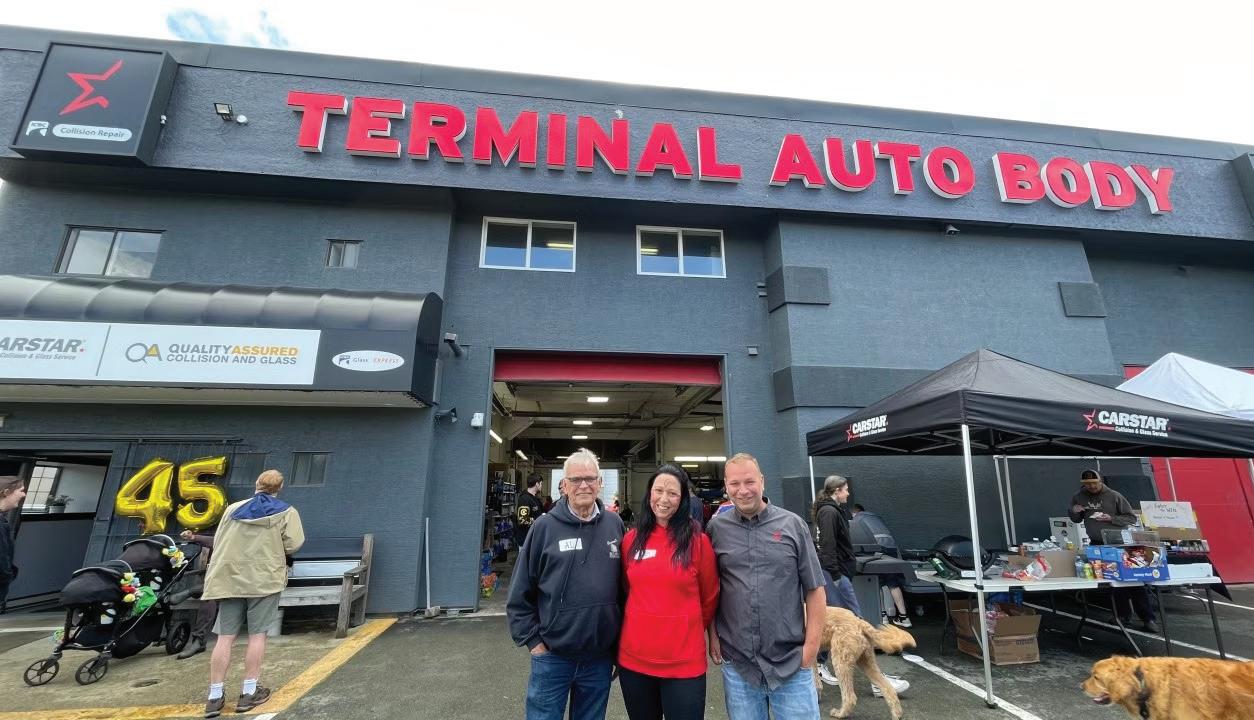

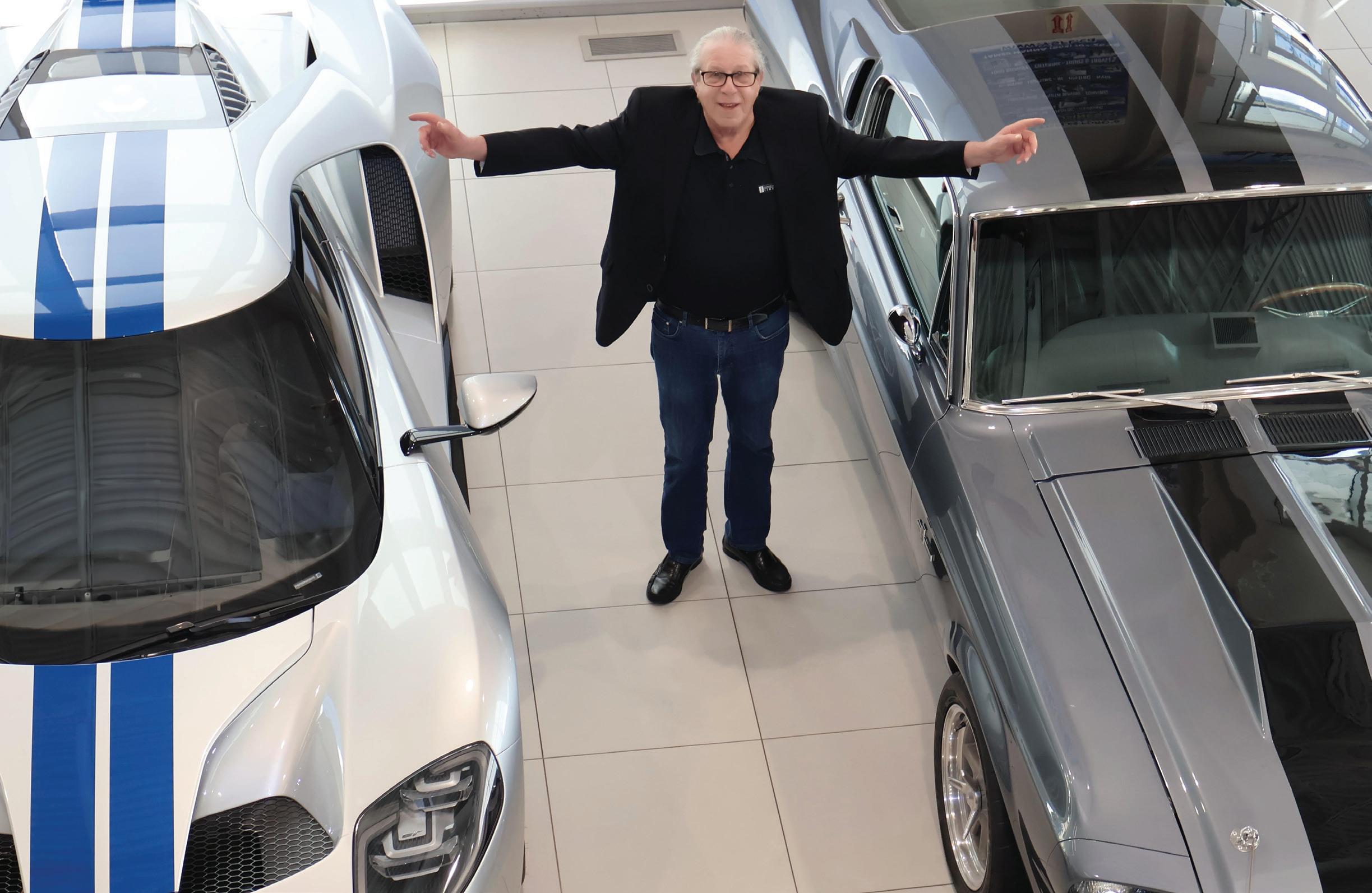
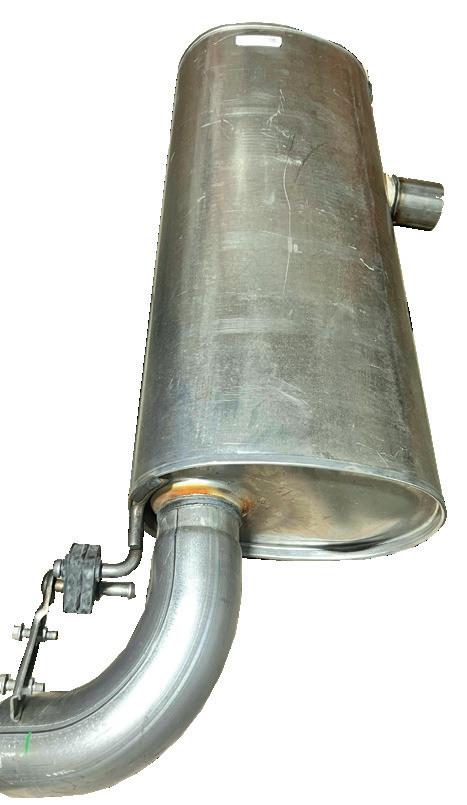


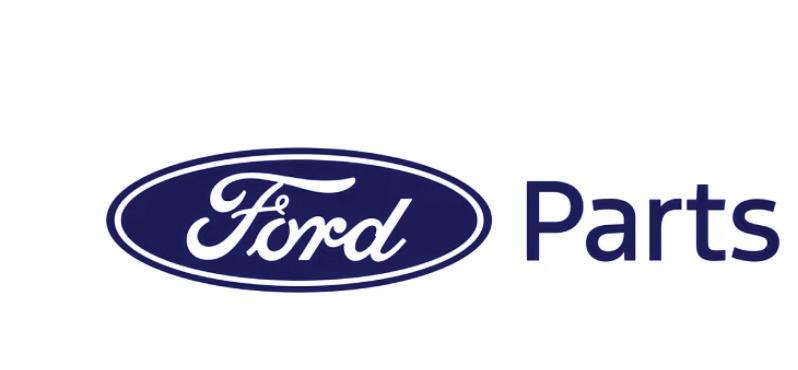


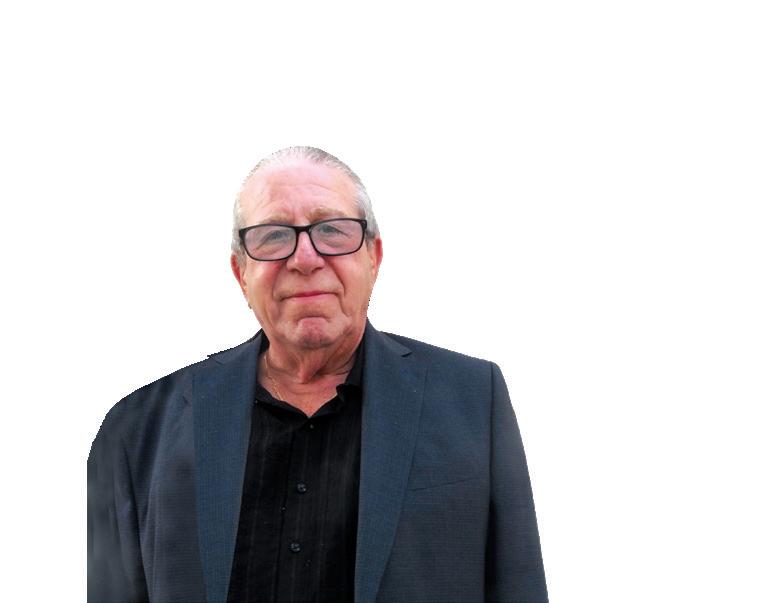

Speed of a faster grit, Finish of a finer grit A K-2500 cuts as fast as P2000, but finishes like P2500 or finer K-SYSTEM FOR TOPCOAT FINISHING
Ultra-Uniform Finish Less Re-work & No Deep Scratches
Flexible Bonding Fast Sanding Coverage THAT BENEFIT FROM THE MOST ADVANCED
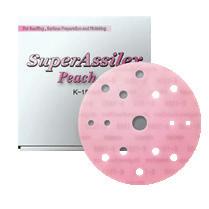

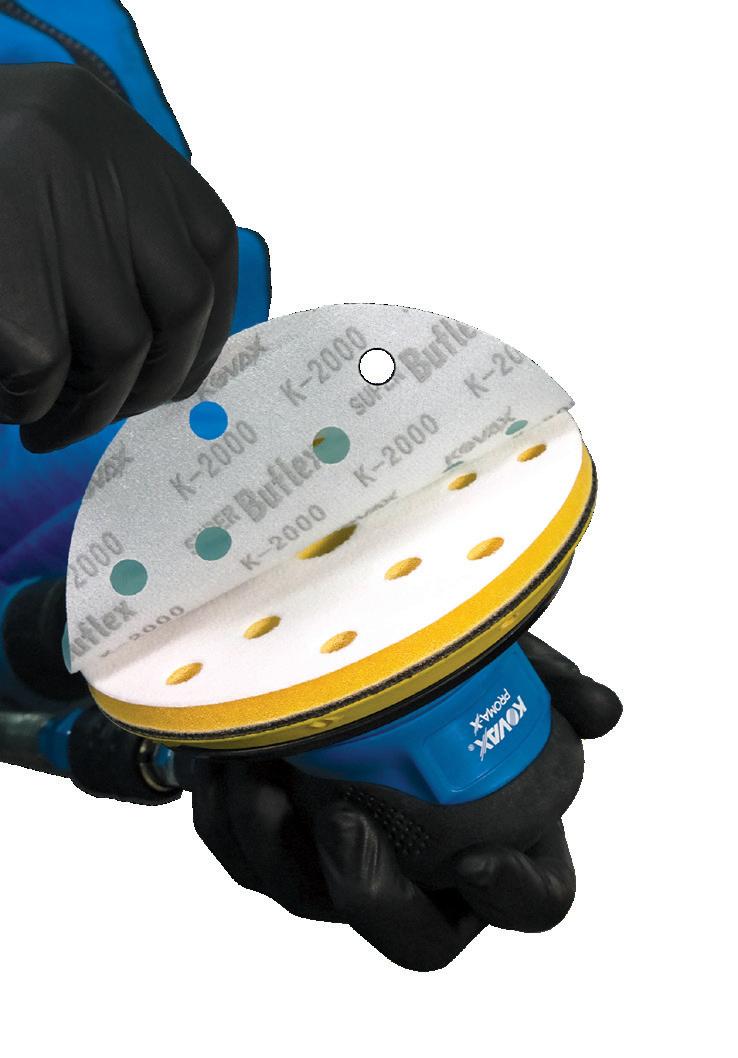
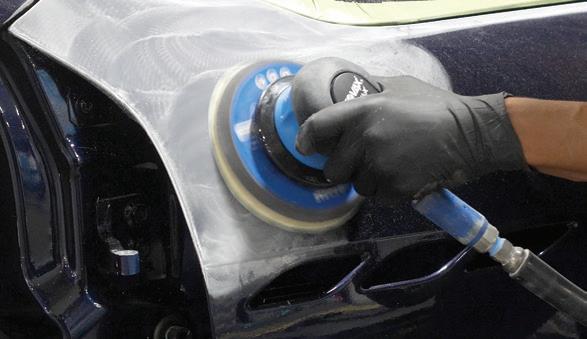
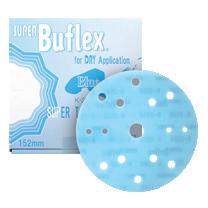
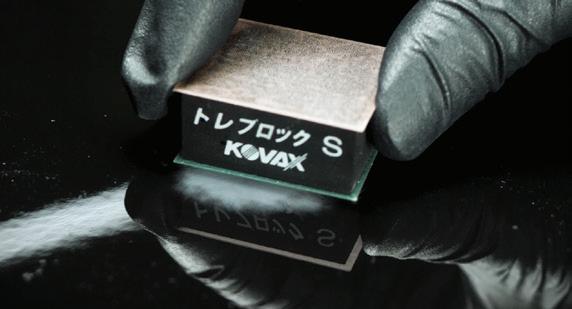
Replace costly and messy multi-pad and multi-compound buffing to leave a finish that can be buffed to final shine in a single polishing step. The entire K-System is Total DRY which means instant progress monitoring without the mess, prep and waiting of wet sanding.
Still taking razor blades and nib files to delicate clearcoats? Repair paint nibs, runs and texture even faster with Tolecut, while leaving a shallow, uniform finish that can be buffed out in a fraction of the time.
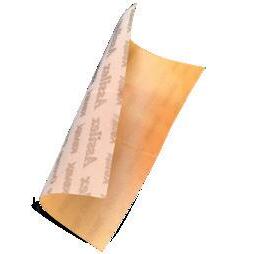
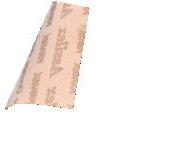

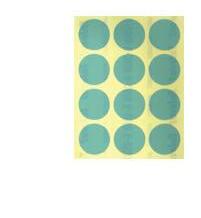
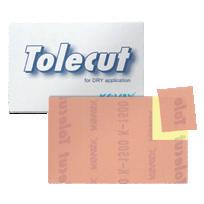

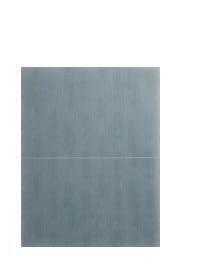
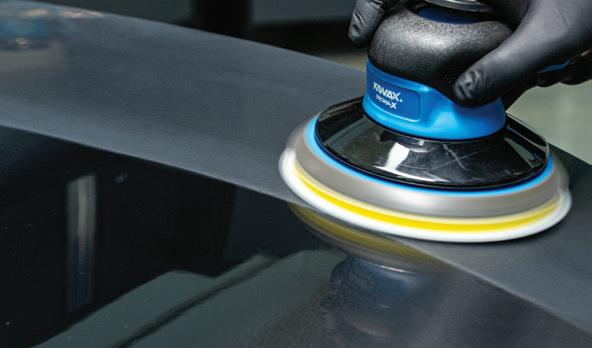

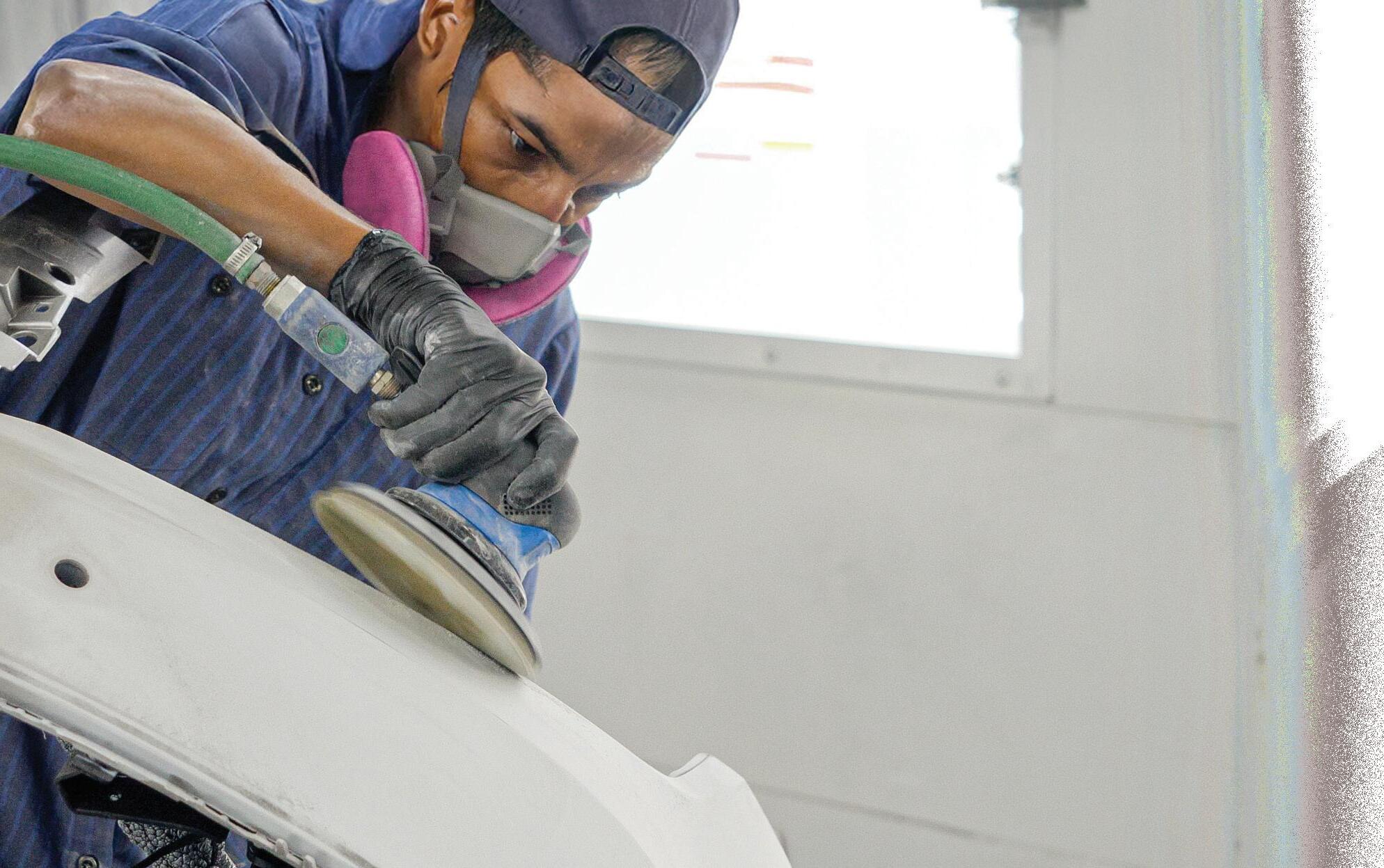


As part of its ongoing commitment to community impact, Simplicity Car Care is announcing a $10,000 donation to the Windsor Regional Hospital Foundation.
The donation was generously made by two Simplicity Car Care Windsor franchisees, brothers Sia and Arash Mokhtari.
The funds will be allocated by the hospital toward areas of greatest need, which may include essential equipment purchases, facility renovations or enhancements to patient care programs.
“At Simplicity Car Care, we believe that real success is measured not only by business growth but by the positive impact we make in the communities we serve,” said Paul Prochilo, chief executive officer of Simplicity Car Care.
“Supporting Windsor Regional Hospital allows us to give back to a community that has welcomed and supported us, and we’re proud to play a small part in helping deliver high-quality healthcare to families across the region.”
Simplicity Car Care’s Windsor locations have long been supporters of the local Windsor community. This donation reflects their shared dedication to helping improve the lives of residents and strengthening vital public services like healthcare.
“Healthcare is the backbone of a thriving community. We’re proud to stand behind
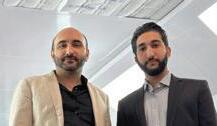
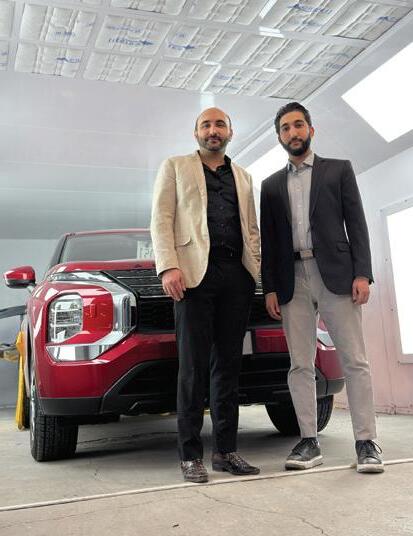



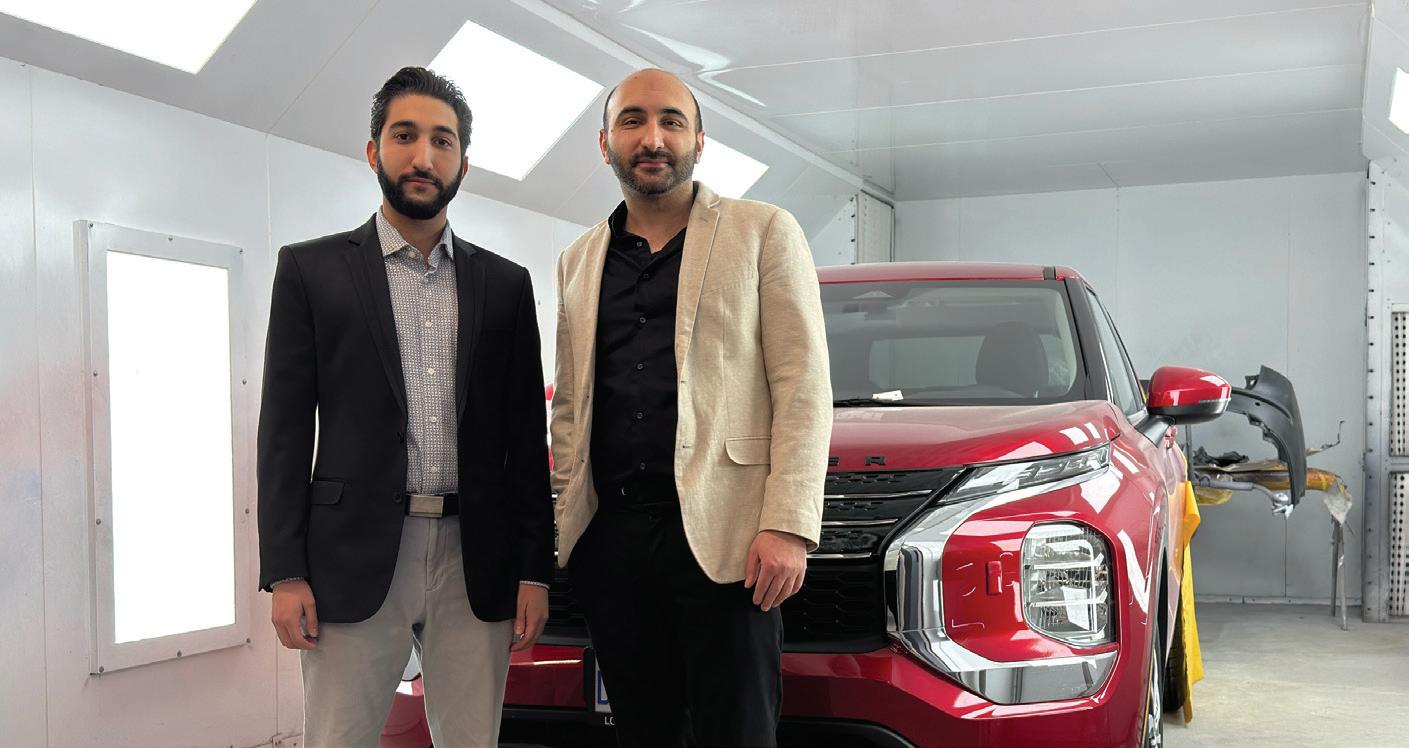
our local hospital and the incredible team that works tirelessly to care for our friends, neighbours and loved ones,” said Sia Mokhtari.
“For us, giving back isn’t just a responsibility—it’s a privilege,” Arash Mokhtari added. “We’re humbled to support our hospital and the dedicated professionals who deliver hope and healing every single day.”
Windsor Regional Hospital Foundation expressed its appreciation for the unrestricted nature of the gift, which provides flexibility to meet urgent and evolving needs within the hospital.
The contribution is part of Simplicity Car Care’s broader commitment to community investment, corporate responsibility and supporting the pillars that keep Canadian communities strong.
The Mokhtari brothers are the co-owners of Simplicity Car Care Windsor, Windsor East and Windsor LaSalle. Sia serves as the general manager of Simplicity Car Care Windsor and Windsor East locations while Arash manages the Windsor LaSalle location.
Earlier this year, the Mokhtari brothers were featured in the cover story for Collision Repair.
Ukraine’s Miroslav Hubenko claimed top honours at Camauto’s 2025 PDR & GPR International Competition, held in Montreal from July 11 to 13.
The event brought together 10 technicians from around the world for a weekend of live repairs, tool demonstrations and friendly rivalry. Sponsored by Anson PDR, competitors were selected through public voting. Over two days, each was tasked with repairing a dent under the gaze of judges and a crowd of fellow technicians and toolmakers.
The competition kicked off with demonstrations from Camauto Pro Tools, giving attendees a look at new equipment and repair techniques. Competitors were introduced and assigned their repair panels by random draw.
While techniques varied, their goals did not—to make clean, complete repairs under strict time constraints. Repairs continued through Sunday.
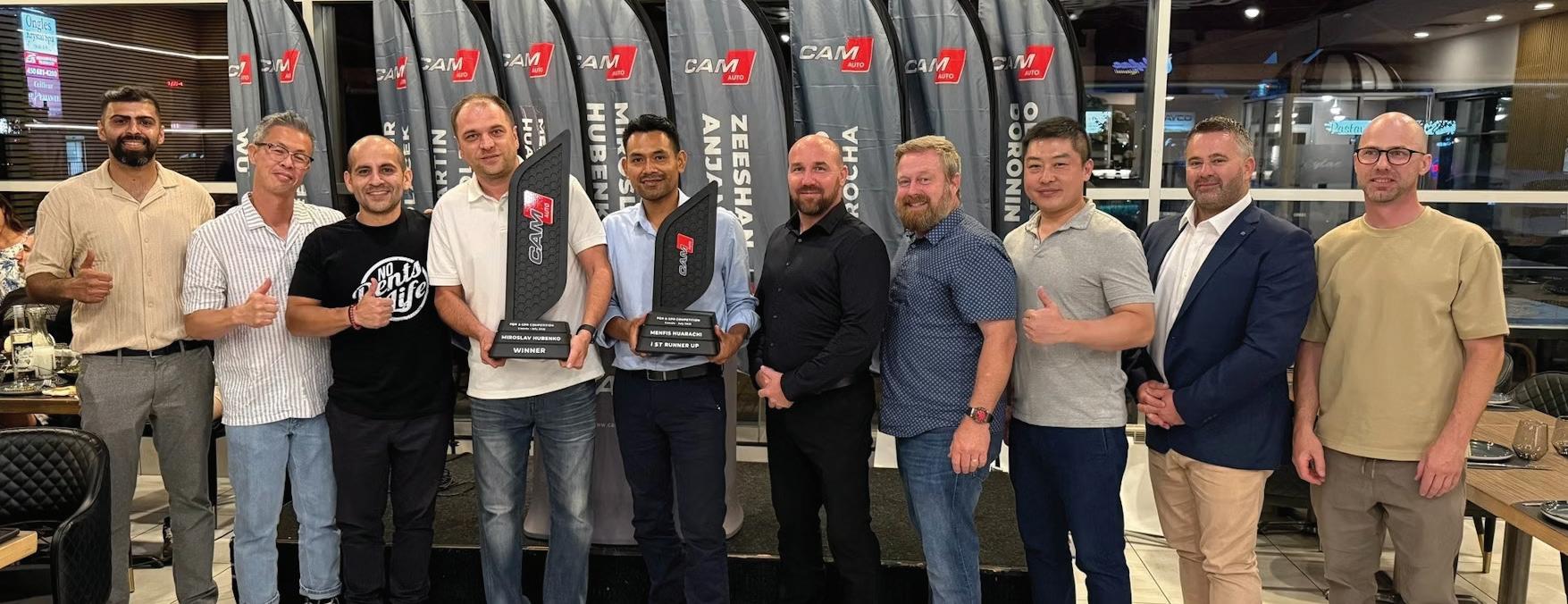
Judging was handled by four industry veterans: Arilson Guedes (Brazil), Charles Aoun (Canada), Ken Clark (U.S.A.) and Craig Dyer (U.S.A.). Scores were sealed until the evening Gala Dinner, where results were announced.
Second place was awarded to Menfis Hurachi of Brazil. All 10 competitors received certificates of participation and gift packages from Camauto.
Also competing were:
• Gene Fetty (U.S.A.)
• Martin Sadler (U.K.)
• Oleksandr Doronin (Canada)
• Pak Narlin (Canada)
• Pablo Rocha (Mexico)
• Vladimir Polacek (Czech Republic)
• Wei Wu (China)
• Zeeshan Anjam (Germany)
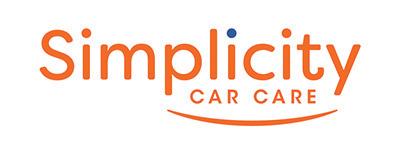
Simplicity Car Care is announcing its expansion into the United States with the launch of its U.S. brand, Clarity Car Care.
The move marks a significant step in the company’s continued vision to make car care simple and affordable for every vehicle owner in the world.
“The launch of Clarity Car Care in the U.S. marks an exciting new chapter in our growth journey,” says Paul Prochilo, Simplicity Car Care’s chief executive officer.
“This expansion reflects our commitment to delivering a consistent, high-quality customer experience while empowering independent
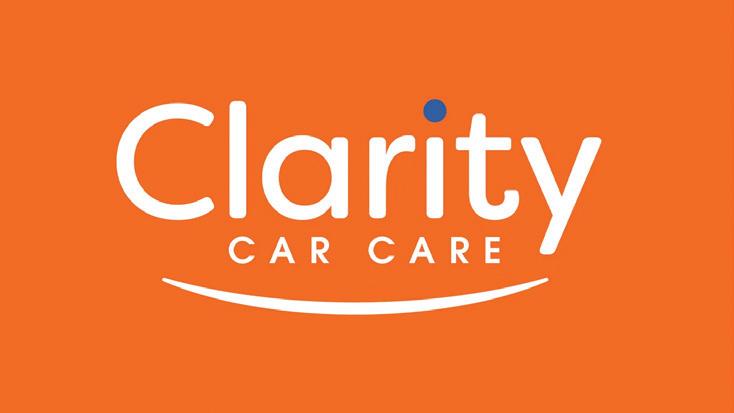
collision repairers with a proven system. We’re proud to bring our unique value proposition to a broader market and continue transforming the car care industry across North America. We believe there’s a real opportunity to support collision repairers with a modern platform that drives performance at scale.”
Simplicity Car Care’s expansion is the result of a thoughtful, long-term strategy grounded in value creation and modernizing the collision repair industry.
As the industry continues to evolve, Clarity Car Care will bring forward a scalable model that supports both independent collision repairers and large-scale partners with the

resources they need to thrive.
The US expansion will be led by the company’s president, Domenic Ieraci, who will oversee the strategy and growth plan with the support of its US-based team, as Clarity Car Care expands in key regions.
“This expansion is an extension of the foundation we’ve build alongsideour franchisees, employees and customers,” says Ieraci. “A stronger, more diversified platform allows us to greatly improve our value proposition on both sides of the border.”
Founded in 2017, Simplicity Car Care is one of North America’s fastest growing colliion repair networks.
Toyota has released the latest in a threepart retrospective detailing how its advanced safety features—now standard in most of its vehicles—were developed and rolled out between 2010 and 2015.
The most recent article, released on June 24, details how Toyota engineers overcame the challenge of balancing advanced safety functionality with affordability. It outlines how systems like automatic emergency braking, lane-departure alert and adaptive cruise control were developed to meet regulatory standards while remaining feasible for largescale production.
“In the future, we’re hoping to be able to cover more speeds and extend protection to increasingly difficult crash scenarios,” said Derek Caveney, senior executive engineer at Toyota Motors North America.
This release follows one from earlier in June,
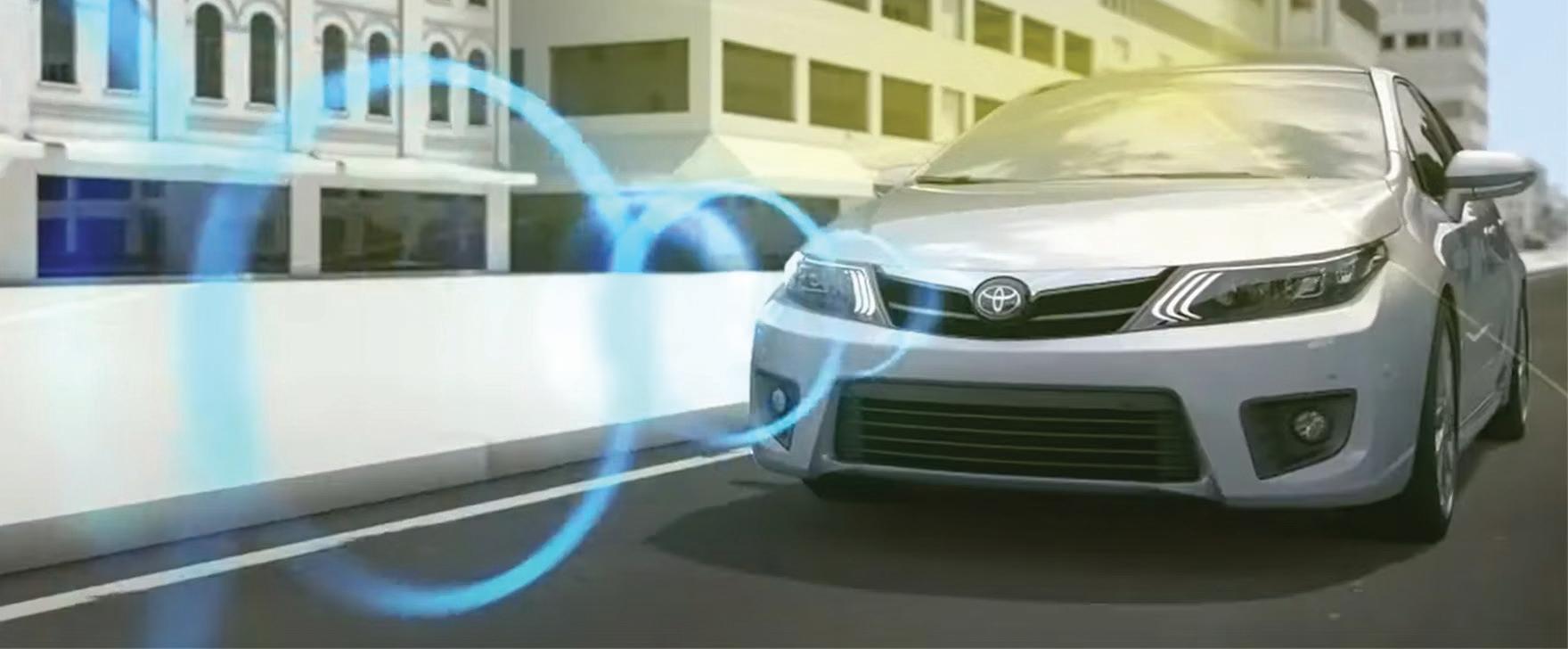
which outlines Toyota’s shift from passive to active safety. The first release traced early innovations to hybrid vehicles like the Prius, where engineers trialed emerging technologies before broader deployment.
For shop owners and technicians, the wide
adoption of active safety systems like TSS means re-calibration and repair considerations are increasingly a part of routine collision work—particularly as sensor-equipped vehicles become more common across all market segments.
Axalta Coating Systems has been awarded the 2025 Diamond Supplier Award from International Motors, LLC., an Illinoisbased commercial vehicle manufacturer and developer of Fleetrite aftermarket parts.
Axalta employees Hadi Awada, president of mobility coatings; Dan Naugle, vice-president of mobility Americas; Phil Henriques, business director and Paul Davenport, heavy duty truck sales director, accepted the award on behalf of the company.
In an announcement post on social media, Axalta stated that “this prestigious honour celebrates our commitment to innovation, quality, sustainability and collaboration.”
International announced the award recipients on July 14, stating in the press release that the award “recognizes suppliers who have consistently demonstrated a commitment to excellence and collaboration across key areas such as technology, quality, delivery, cost, sustainability and people.”
Suppliers were evaluated on their ability to deliver advanced technological solutions, reliable delivery performance and
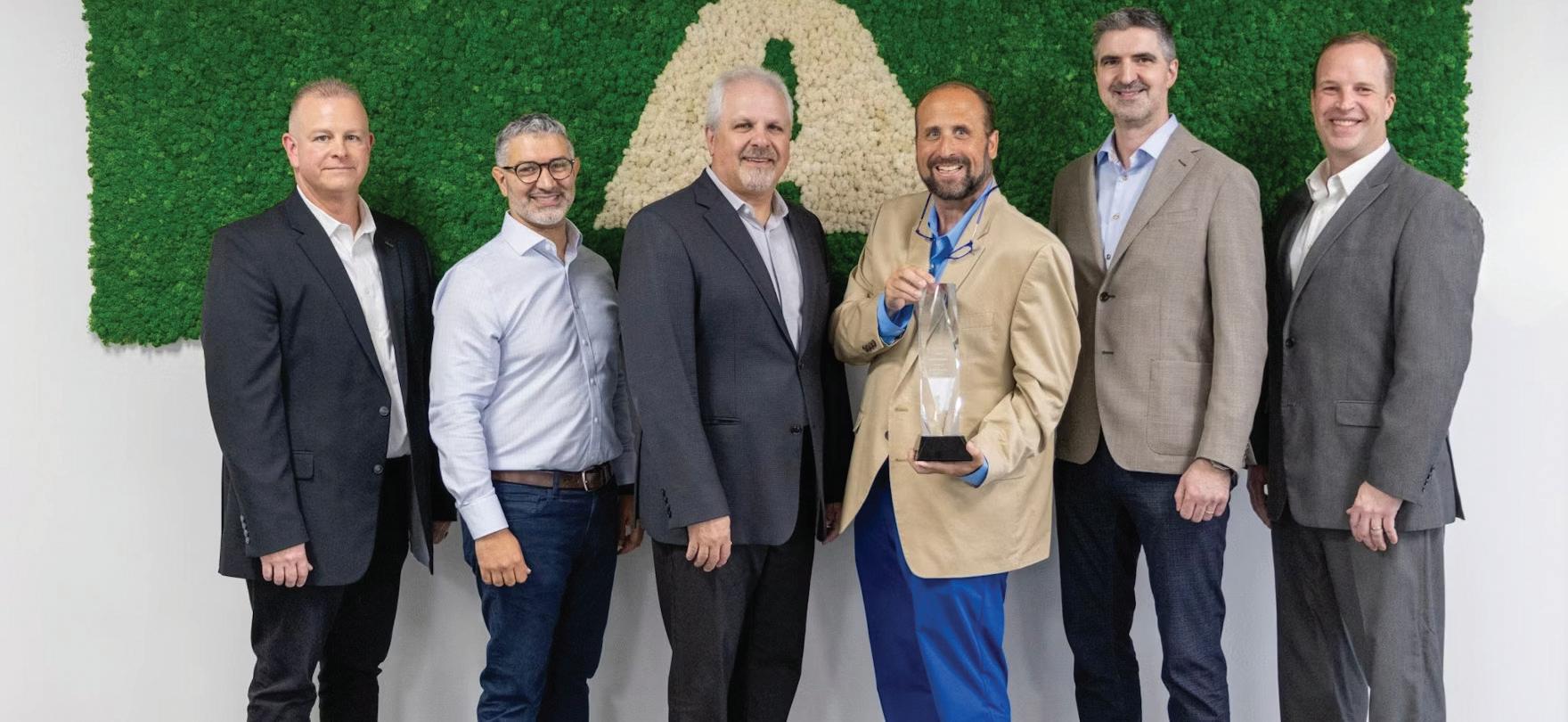
commitment to zero-defect quality. According to International, winners demonstrated strong cost leadership through innovative efficiency improvements in alignment with International’s strategic focus on sustainability.
Six suppliers won the award in addition to Axalta: HG Transportaciones SA de CV, Renaissance Manufacturing Group, Superior Trim, Toyota Credit Canada Inc., VCST International and W.W. Grainger, Inc.
“This year, we are proud to recognize those suppliers who have not only met, but exceeded expectations through exceptional performance, innovation and dedication,” said Peter Friberg, International’s chief procurement officer, in the press release. “I’d like to personally thank each International 2025 Diamond Supplier Award winners for their continued partnership in providing solutions that move our customers forward.”


ACCUWELD®3
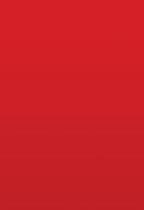
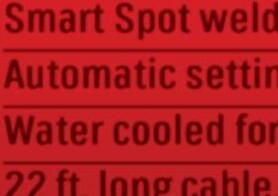

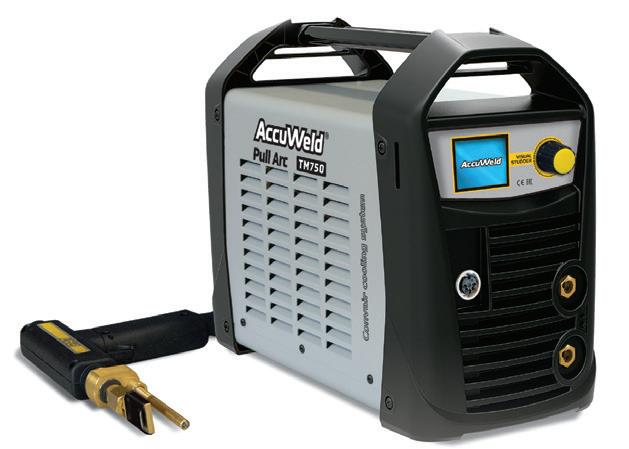
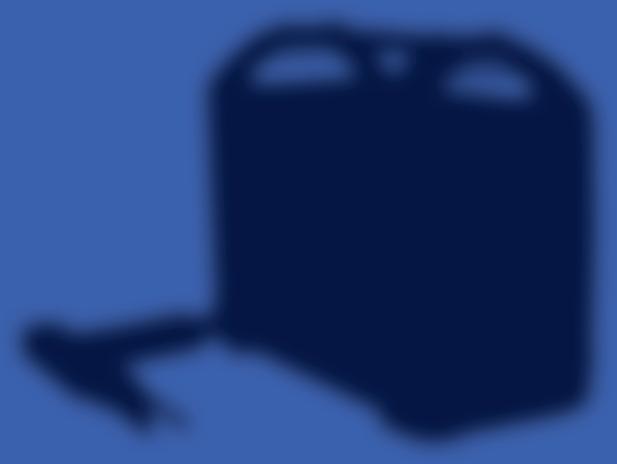
ACCUWELD®

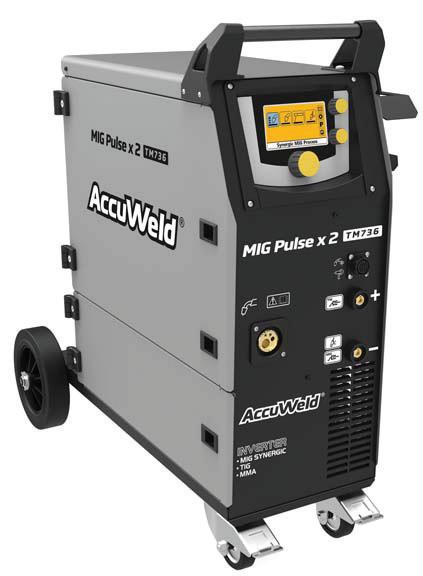
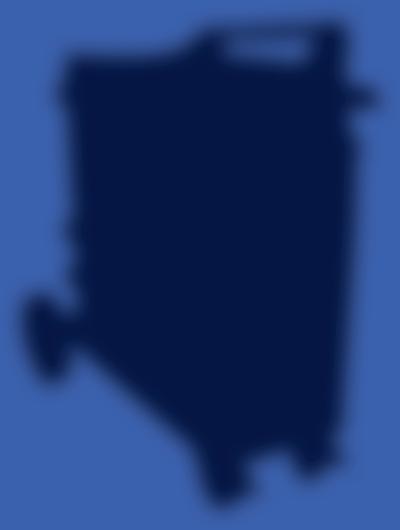
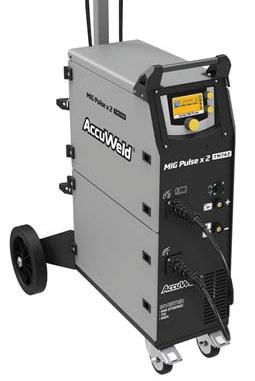

ACCUWELD® 2



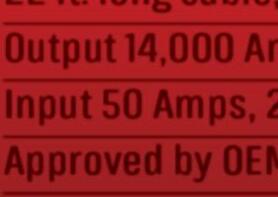

Output 14,000 Amps, 450 daN or 700 daN
Input 50 Amps, 208-240V, 3 Phase Approved by OEMs
















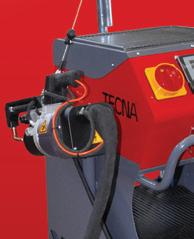
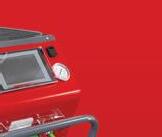






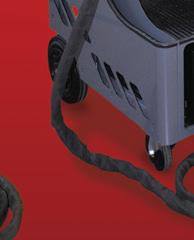


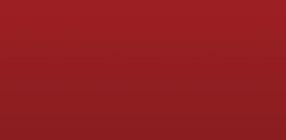
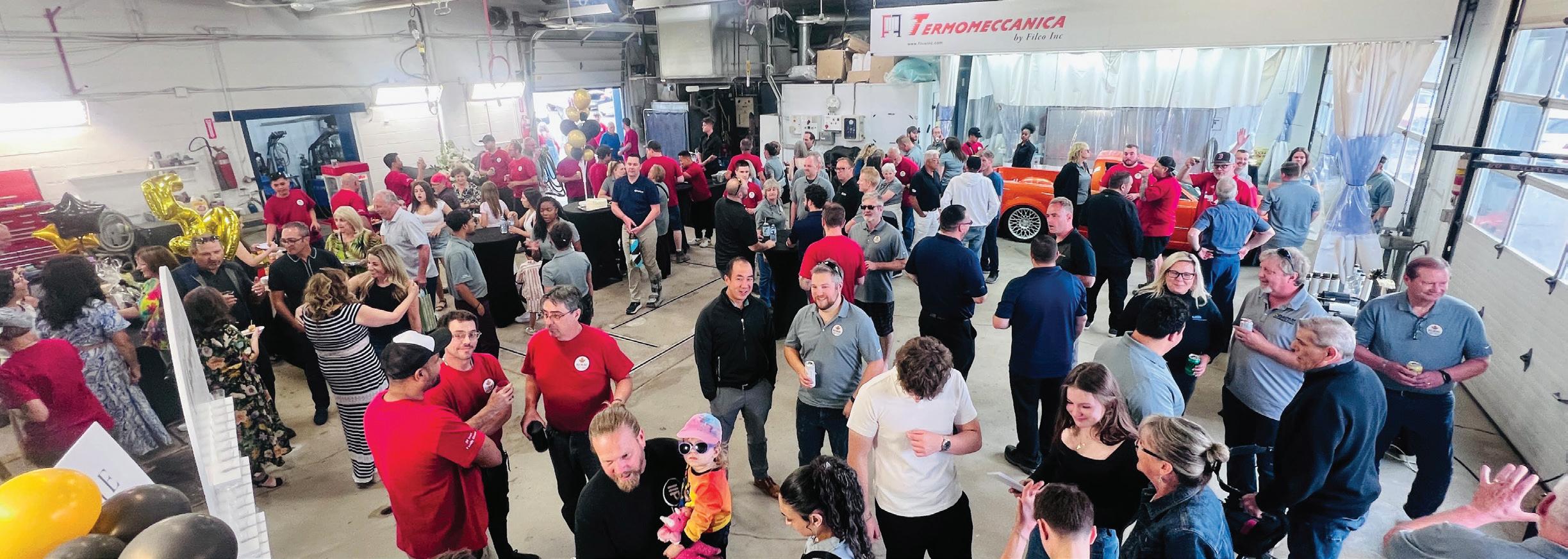
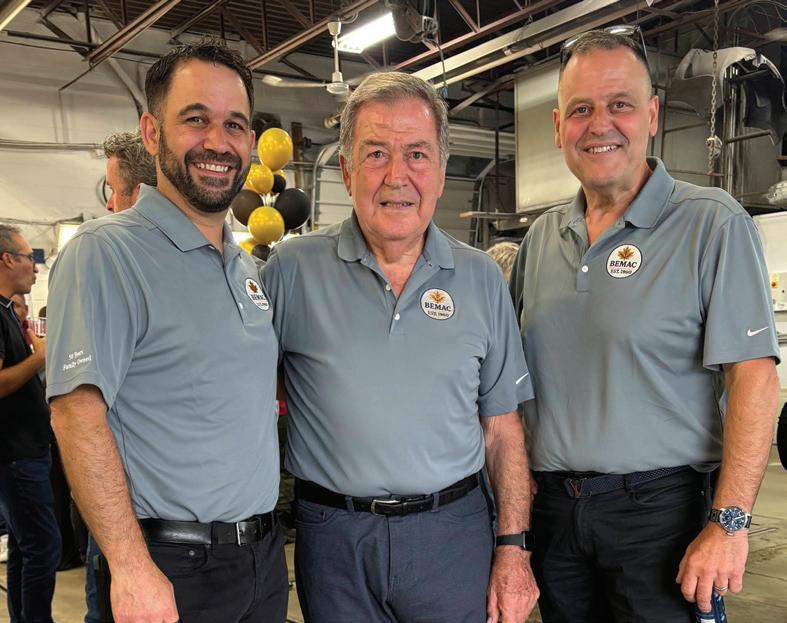
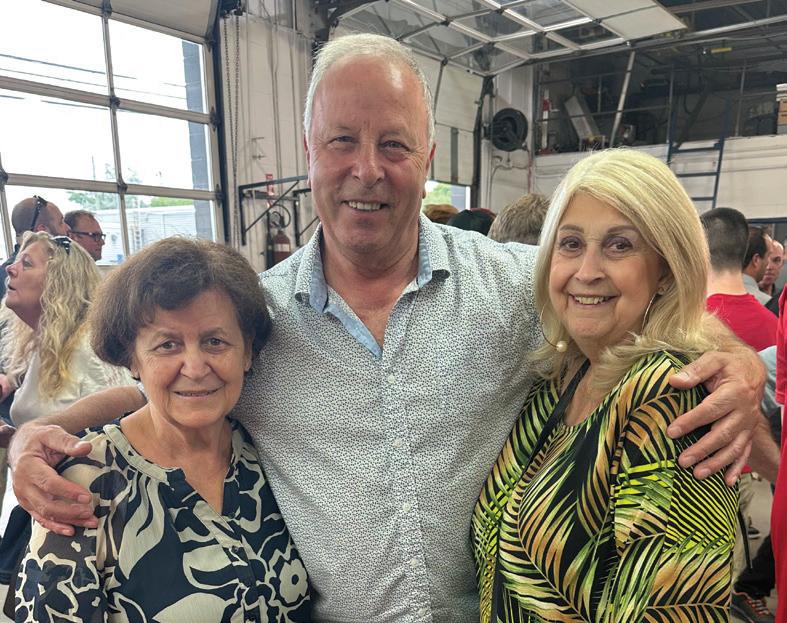
BY GIDEON SCANLON

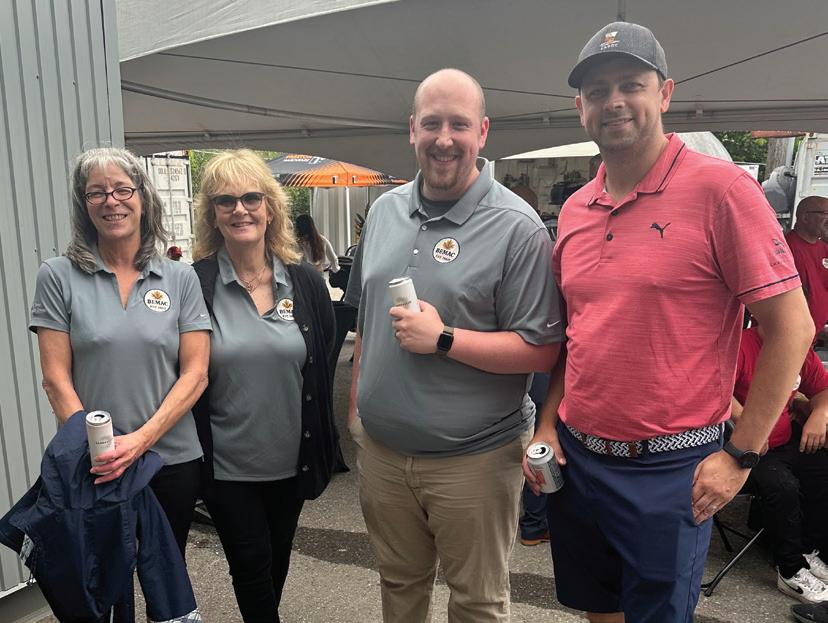
BEMAC Auto Body is celebrating 50 years as family-owned collision repair business.
Founded in 1960, the business was purchased by Gaetano Frangione and his brother-in-law Frank Palermo in 1975. Now led by Gaetano and his sons, Danny and Joe, the business is part of the BEMAC Collision Group, which also boasts seven other collision facilities, as well as two satellite locations and two dedicated calibration facilities.
In a speech delivered during an anniversary celebration held at the flagship location last week, Joe credited his father and uncle
with establishing a firm foundation on which the company was able to flourish.
“[Frank and Gaetano] brought with them a simple philosophy: treat people right, do quality work and always stand behind your word.”
“On a personal note, I feel incredibly fortunate to have worked side-by-side with my father since 1994, with my brother Danny since 2009 and now with my son since 2022,” Joe added. “The same passion and values that Gaetano and Frank instilled in us continue to drive our work today.”
Joe went on to thank the company’s loyal

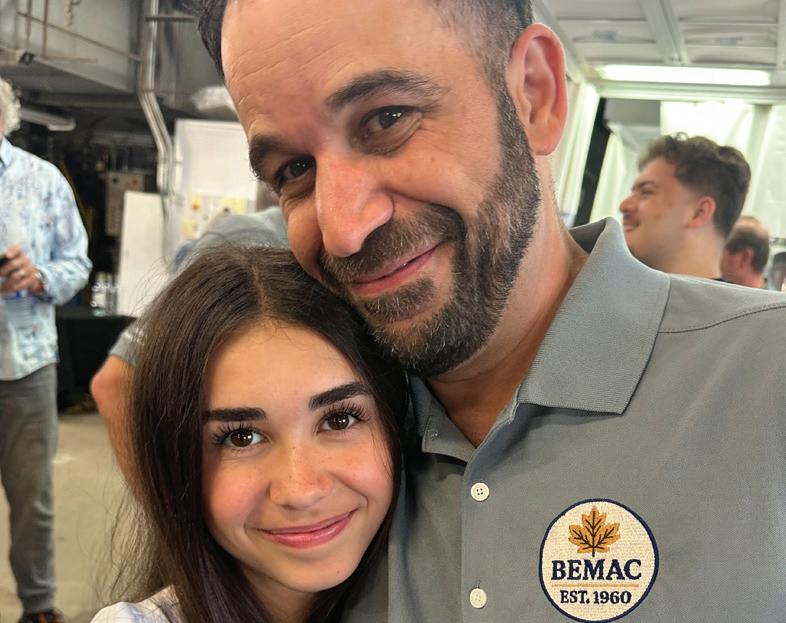
customers, business partners and employees.
“To our customers and industry partners, thank you for your continued trust. To our team members—past and present— your dedication and passion have shaped everything we’ve built. To our families, your unwavering support has carried us through every challenge and triumph.”
Joe added that the company would remain committed to innovation, excellence and serving the Ottawa community with integrity and a personal touch in the future.
“Thank you for being part of this journey,” he said. “Here’s to the road ahead!”


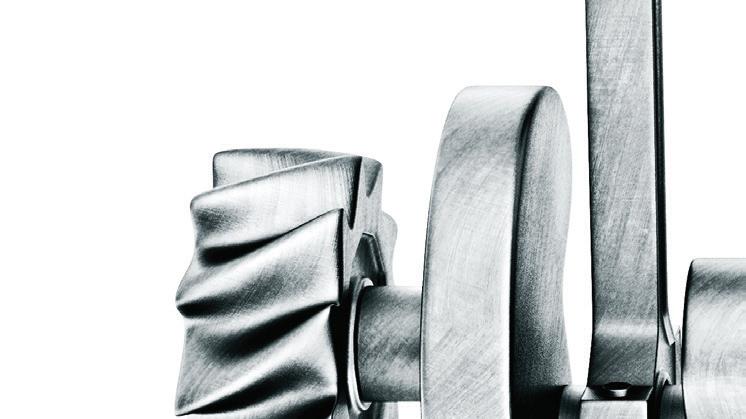
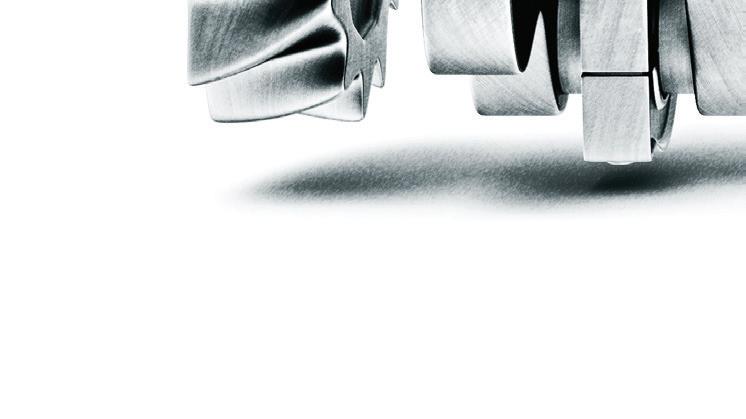


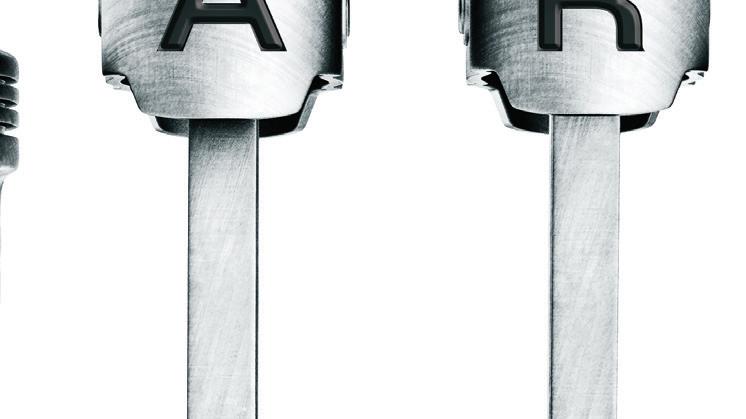
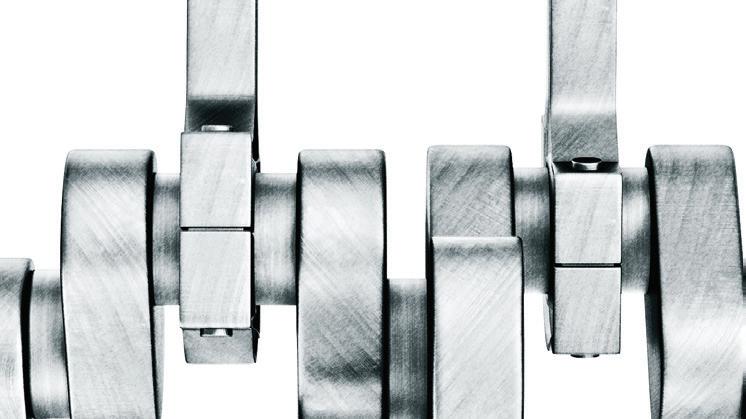


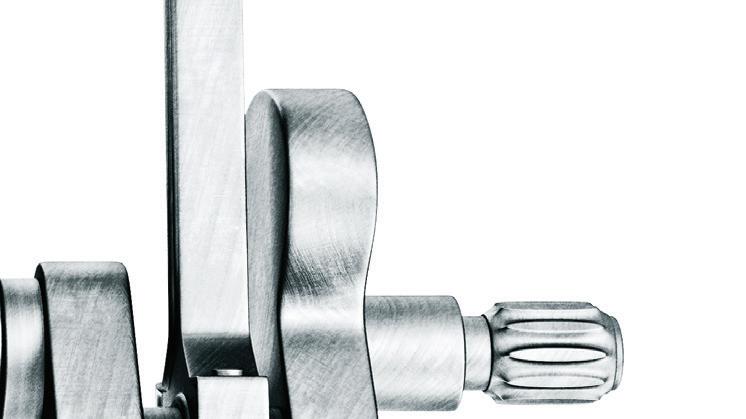
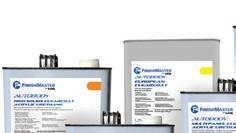
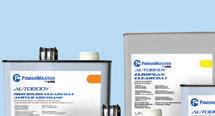



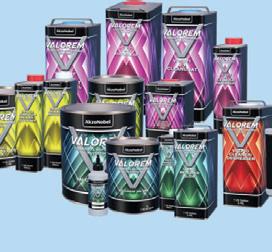

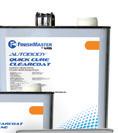
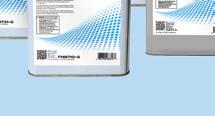

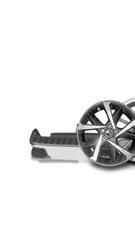
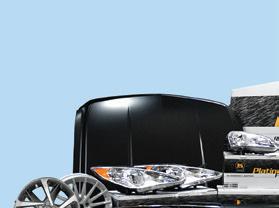
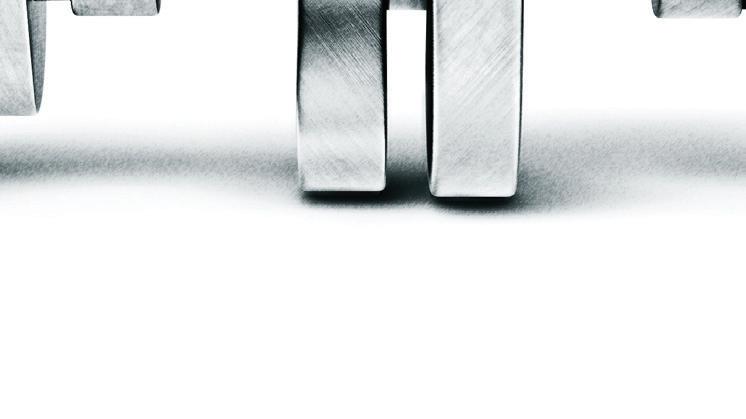
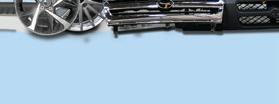
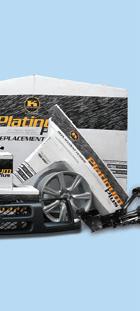

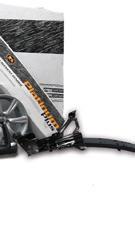


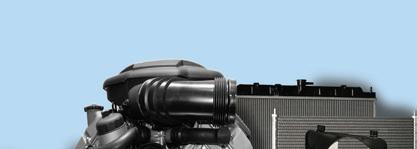
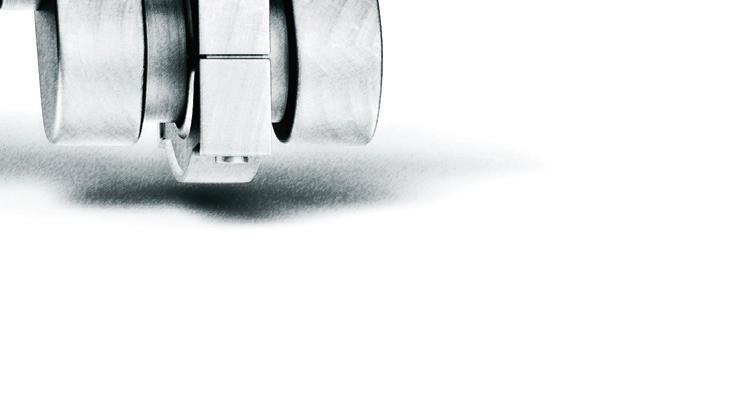
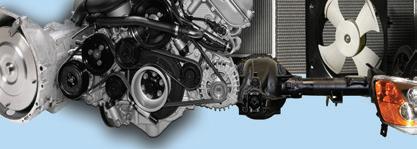

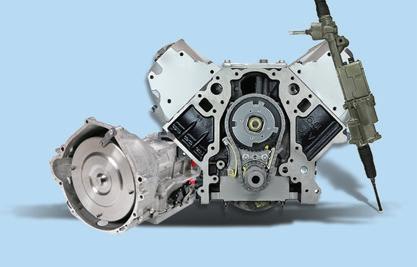
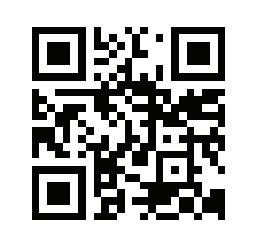

BY GIDEON SCANLON
After a 15-year hiatus, the Consolidated Dealers Customer Appreciation Trade Show returned on May 27.
“The whole team was behind bringing it back,” said Mike Beier, president and chief executive officer of Consolidated dealers. “They felt it was important to do something to bring everyone together, showcase what we have to offer and to show off our head offices in Woodbridge. It was a very good call!”
This year, about 200 people attended the trade show, which featured more than 40 exhibitors, including 3M, BASF, Consolidated Collision Services, Hunter Engineering, SATA, Kent Automotive and LKQ. These partners showcased the latest in collision repair tools, refinishing products, diagnostic technologies and shop management solutions.
Guests were also invited to enjoy refreshment served by the two food trucks, ice cream truck and mobile beer-and-wine bar brought onto Consolidated Dealers’ campus. With so many people enjoying the food, the picnic tables presented an excellent networking opportunity for anyone in the automotive aftermarket.
“It was a great day. People had a lot of fun and got to learn a whole lot as well,” said Beier. “I’m looking forward to our team hosting the next one, and grateful for the contributions of everyone that helped made this event a success.”
Consolidated Dealers, Canada’s first national auto dealer buying group, was founded in 1979. Owned entirely by new car dealers, the co-operative serves over 2,800 customers nationwide, providing products and programs aimed at enhancing dealership and collision centre profitability and ensuring operational success.

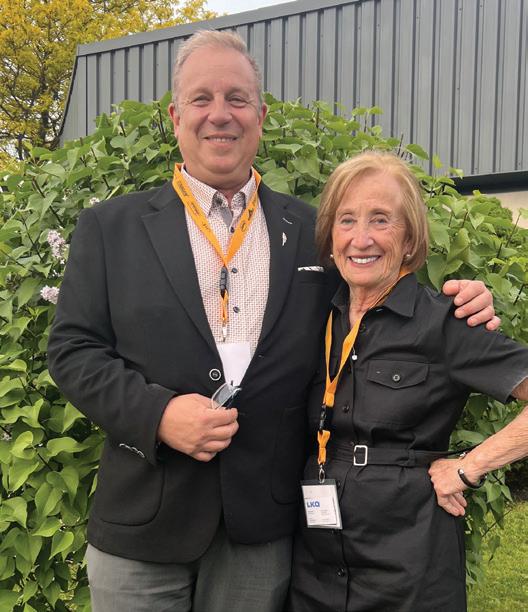

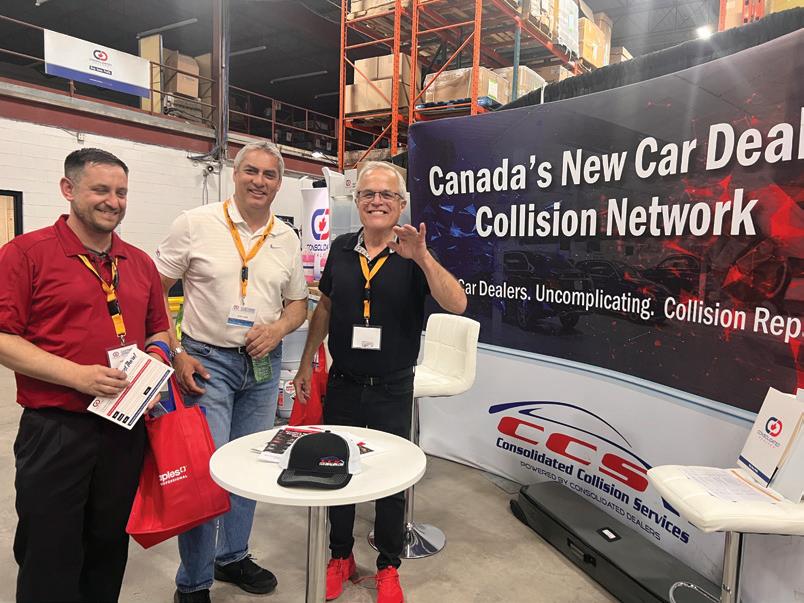
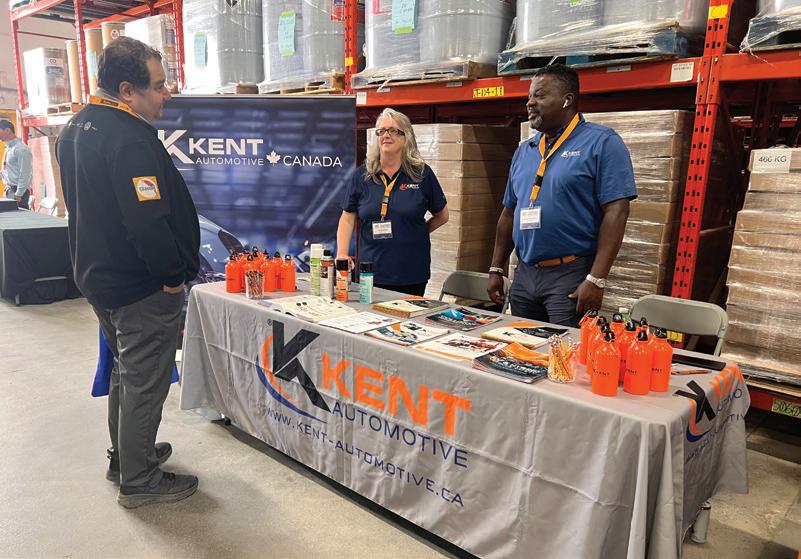
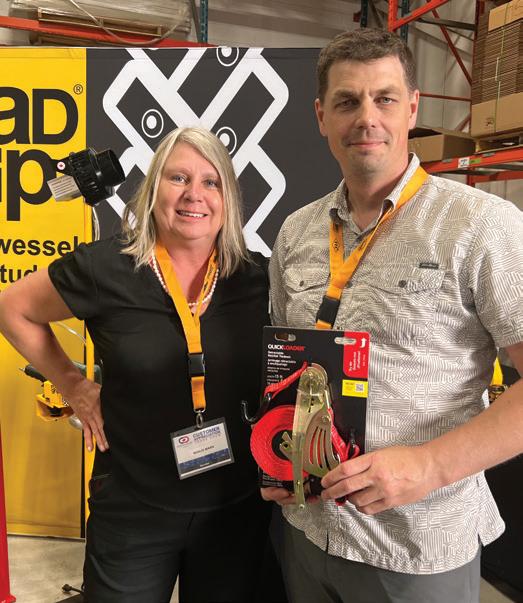

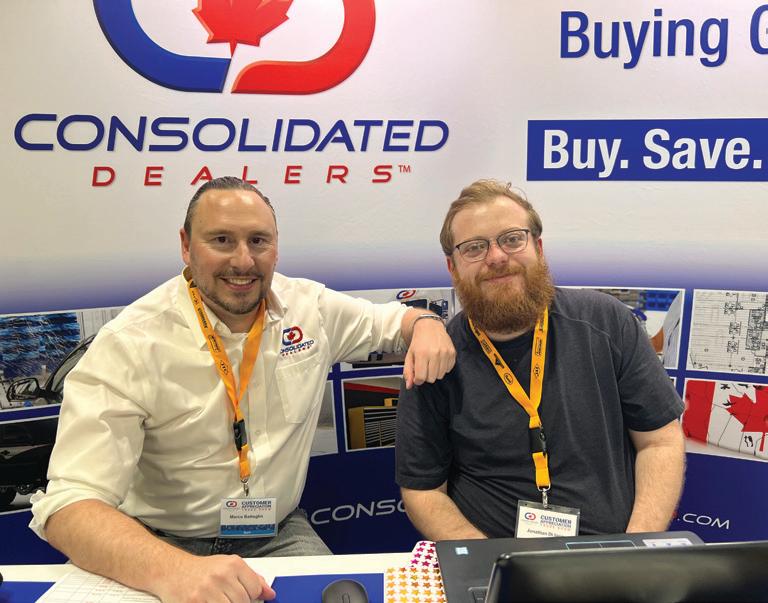
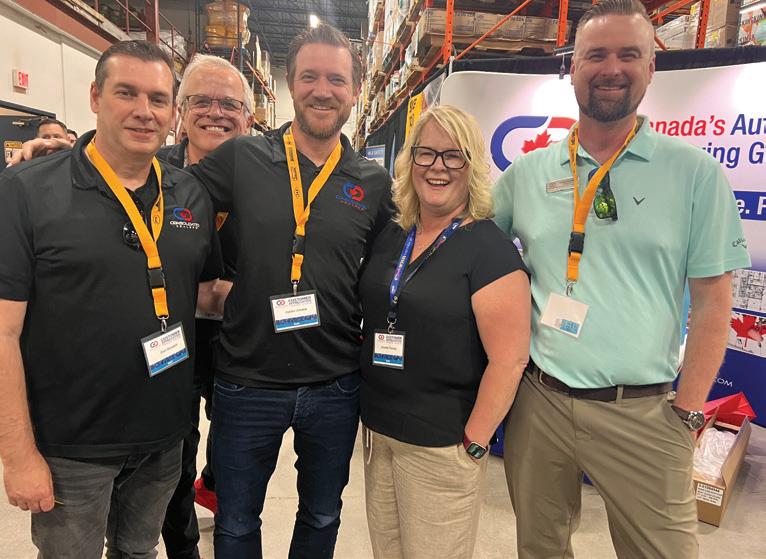
Paint | Aftermarket | Recycled | Transmissions & Engines
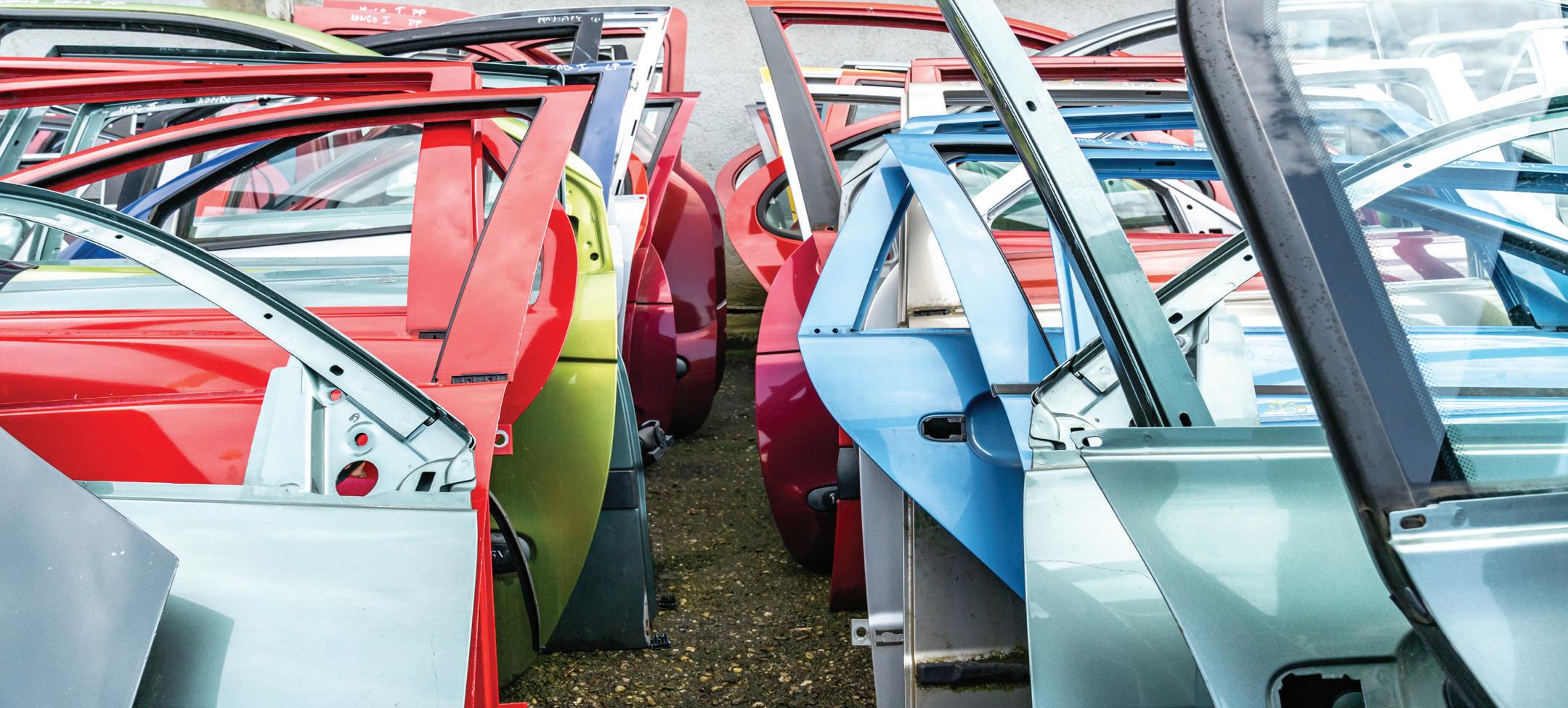
At LKQ, the “R” in P.A.R.T. stands for Recycled OEM parts. LKQ first began 25 years ago through the acquisition of several auto salvage yards, and through the years, LKQ has grown to become the largest recycler of vehicles in the industry. LKQ now operates more than 125 auto recycling yards across North America. Through its state-of-the-art processes, LKQ recycles or re-sells more than 90% of the materials from end-of-life vehicles that would otherwise end up in landfills. Engines, Drivetrain, Suspension, Body, Cooling/HVAC, Electrical, Emissions, Exhaust, Audio, Fuel Delivery, Interior, Power Steering, Restraint System Parts and More…LKQ
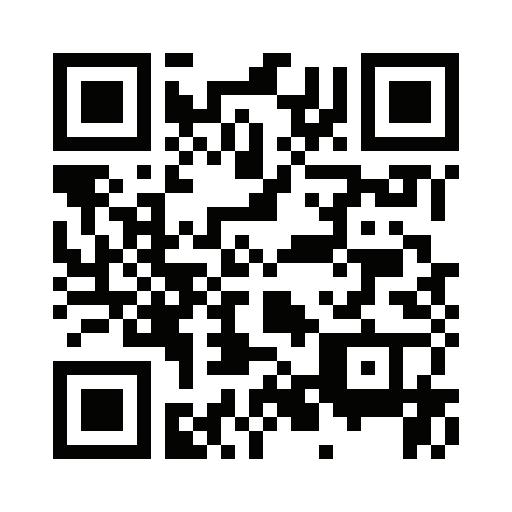

BY MACKENZIE GRANT
Rob Kember’s workdays are never the same—but that’s exactly how he likes it.
On any given morning, you’ll find him pulling into one of Centennial CARSTAR’s 12 locations across Atlantic Canada. It might be Dartmouth— or it could be a quick drive to New Glasgow. Regardless of where he starts, Rob’s schedule centres on showing up, listening in and lending a hand.
“I like to be at the store for opening,” he said. “I usually get involved with the management staff to see what’s going on—if there are any hot issues. I like to be at the production meetings just to hear how they’re carried out.”
From there, he says the rest of the day unfolds based on who needs him. Moving through operations, reviews analytics with teams and leans into one of his greatest thrills—helping shops perform better.
“I like running the business by the numbers,” he said. “I bring analytics to the team every day—targets, areas that need improvement. That kind of work excites me.”
It’s a detail-driven passion that’s helped Rob and his managing partners guide Centennial CARSTAR through remarkable expansion: more than 15 acquisitions in the last nine years. But for Rob, the real story isn’t the growth. It’s the people—starting with his own family.
Centennial CARSTAR traces its roots back to Kember’s father, Ezra, and uncle, Ira who first found success in automotive retail and repairs decades ago.
“It’s nearly impossible to overstate the value of experience. Not the kind measured in weeks or months, but the nearly five decades of experience from which Centennial benefits,” Rob said.
Today, Ezra still works on the shop floor, training members of the third generation— Rob’s cousins’ kids, with his own not far behind, set to receive the same training from their grandfather.
“There’s just a lot of pride in knowing we have this option to include more family,” he
“It’s nearly impossible to overstate the value of experience. Not the kind measured in weeks or months, but the nearly five decades of experience from which Centennial benefits.”
— ROB KEMBER, MANAGING PARTNER, CENTENNIAL CARSTAR
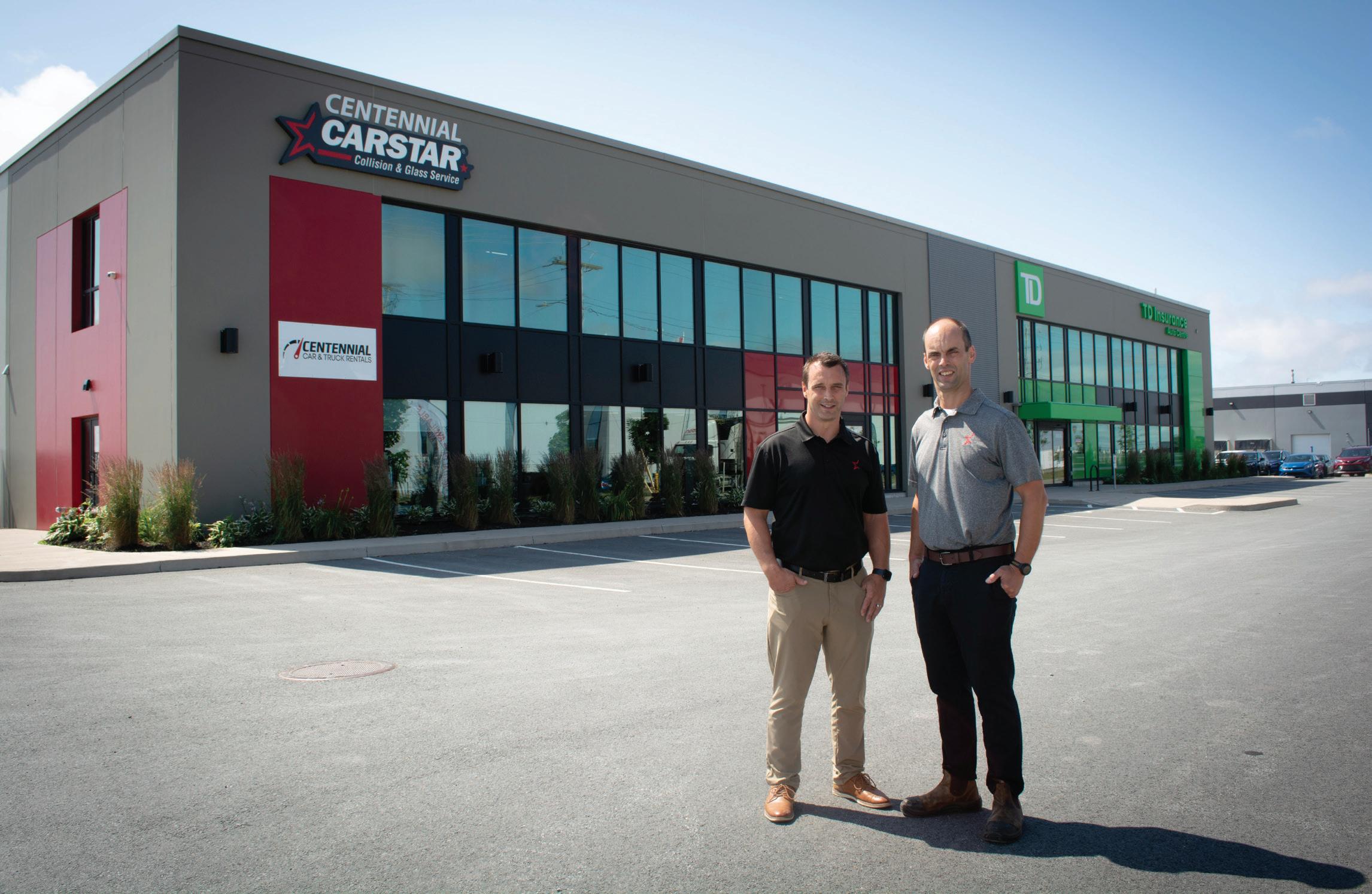
“We thrive off the daily business. I want to see steady growth— manageable, measurable growth that supports our team and keeps the brand strong in Eastern Canada.”

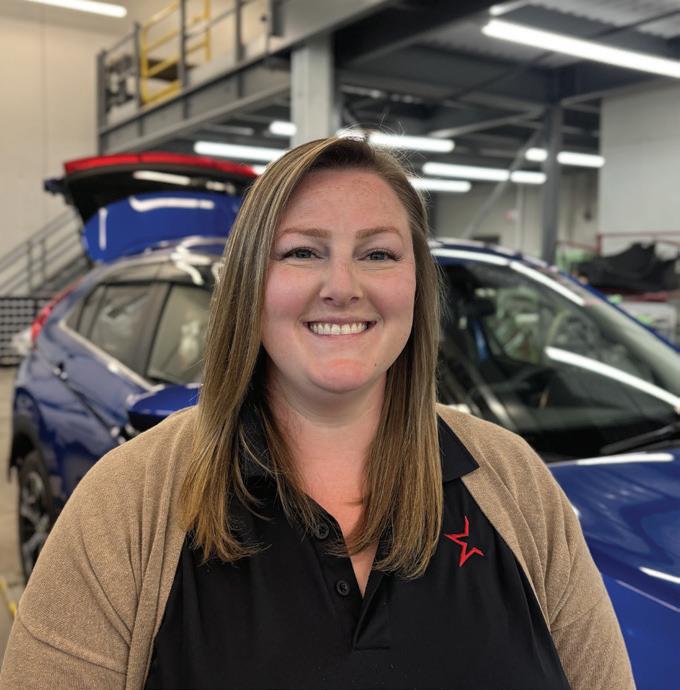
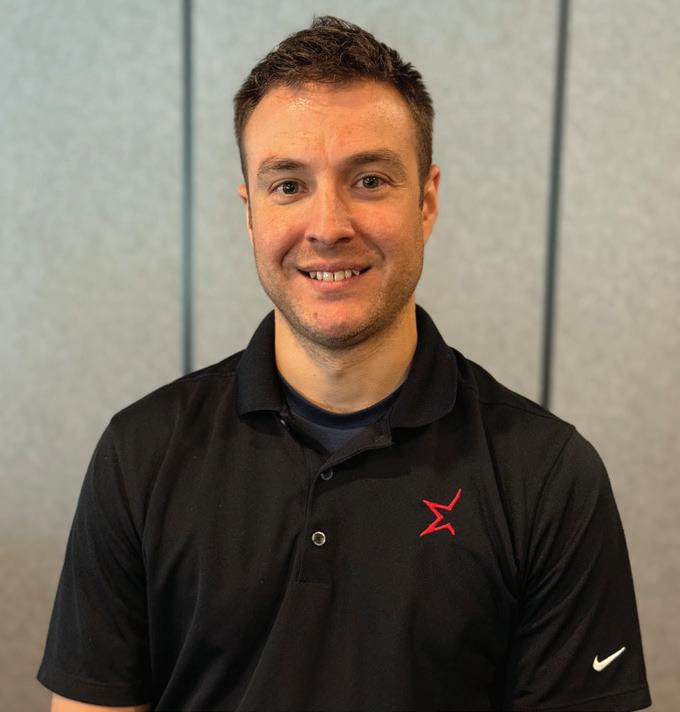

said. “And we’re focused on keeping the values aligned, from top to bottom.”
That family-first approach doesn’t end with bloodlines. Rob makes a point of inviting staff families into the fold—through everything from community fundraisers to seasonal hiring.
“If a staff member’s kid needs a summer job, we find something. Maybe with the maintenance crew, mowing lawns or just being around the business. It introduces them to the industry.”
Though his job title may read “Managing Partner,” Rob keeps his boots on the ground. His leadership philosophy borrows from RISEN From The Shop Floor: Lessons from an Entrepreneur, a book by Sam Mercanti, founder of CARSTAR. The theme of the book is servant leadership and its effectiveness in serving those around you to make the greater whole.
“Servant leadership really resonates with me,” he said. “You lead by serving others— but you also lead by doing what you expect. If I’m going to jump up to greet a customer or take a call, I want my staff to see exactly how I would expect that interaction to go.”
His early days as an estimator left a lasting impression. Even now, if a customer walks into a shop needing an estimate and the schedule’s full, he’ll grab a clipboard and jump in.
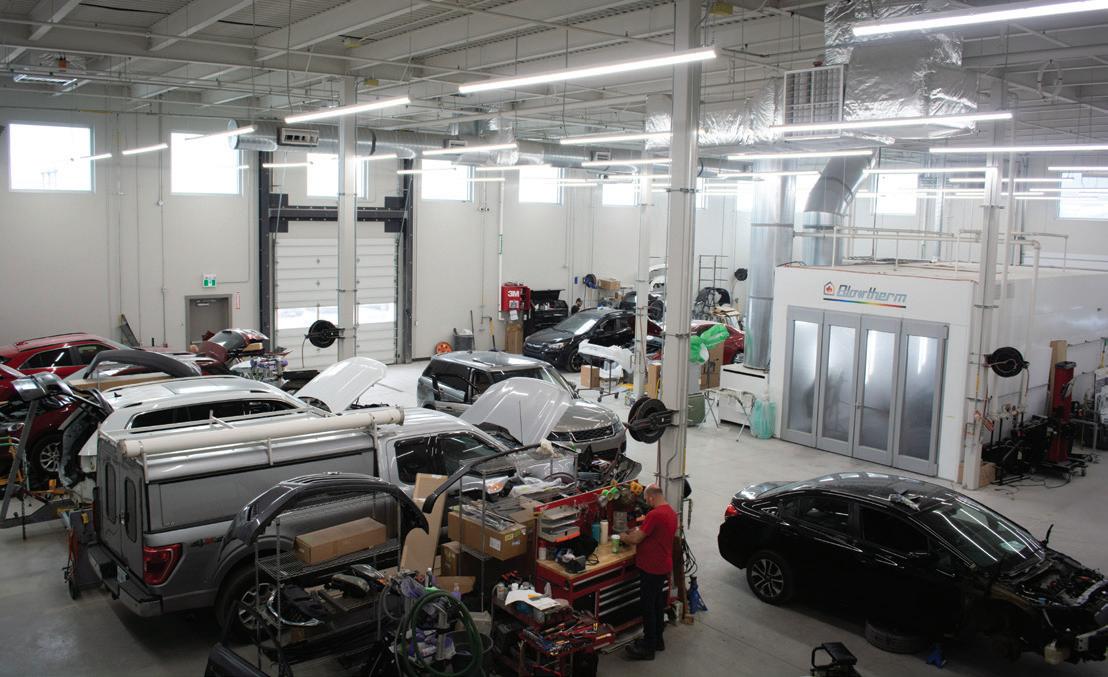
“I still get a thrill from customer service and selling,” he said. “That never left me.”
Rob’s dedication to operations is just as strong as his customer focus. Over the past five years, he’s helped lead the development of Centennial’s management structure, supplier partnerships, SOPs and customer experience protocols.
“Executing on those focal points has noticeably improved our group’s overall stability and consistency,” he said. “There’s greater trust with our insurance partners. And we’re now much more able to measure and quantify our goals and achievements.”
With locations in Prince Edward Island, Nova Scotia and New Brunswick, keeping performance consistent across stores takes effort—but it’s effort Rob welcomes.
“We bring our entire leadership team together frequently—in person—so we can all learn from each other,” he said. “This is where our SOPs are built and put into practice, then shared with each store.”
For Rob, business success is driven by team success. Centennial’s leadership group includes standout contributors like Charlie Yorston, director of parts departments, who says the company’s commitment to growth has been central to his own journey.
“This is the best group of people I’ve had the privilege of working with,” Charlie said.
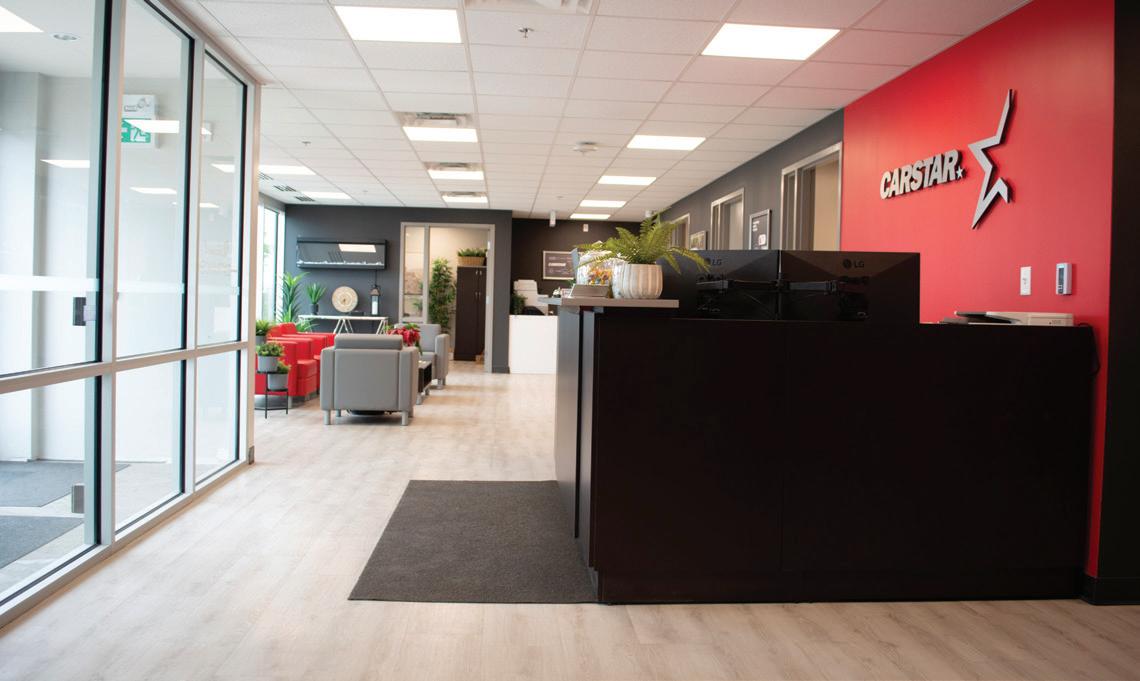
There’s also Joe Potter, director of processes and standards, whose belief in the company’s vision has only grown stronger with every role.
“There are challenges,” said Joe, “but those challenges are really just opportunities for continual improvement.”
Then there’s Cory Gallupe in Dartmouth, who has grown alongside Centennial’s regional expansion.
“This isn’t a company that wants to sit back and rest on its laurels,” he said. “It’s great to be part of a team that is constantly pushing forward.”
Newcomer Courtney Barber, store manager at the Dartmouth TD Auto Centre, agrees.
“There’s a level of transparency around goals and finances that’s really refreshing,” she said. “Centennial truly stands behind the values they promote.”
Centennial CARSTAR doesn’t just operate in Atlantic Canada—it contributes to it. Whether it’s food bank drives, cystic fibrosis fundraisers or school playground builds, the team prioritizes giving back.
“We do a lot of work locally—sponsoring sports teams, organizing Christmas drives or partnering with schools,” Rob said. “We even send staff to help build playground equipment. When staff get involved in those projects, it builds a real connection.”

“If
That community-first mindset is reinforced by CARSTAR head office support, he says, especially when it comes to matching donations or helping fund local initiatives.
Rob isn’t slowing down. With more than 350 employees and a growing management infrastructure, he’s thinking in decades—not quarters.
“We’re not interested in selling,” he said. “We thrive off the daily business. I want to see steady growth—manageable, measurable growth that supports our team and keeps the brand strong in Eastern Canada.”
He also hopes to see Centennial continue to offer opportunities for the next generation— whether they’re family or not.
“We’re always coming across people who have no idea the collision repair industry offers this kind of earning potential—or personal satisfaction,” he said. “If you prioritize great customer service, there’s no reason you can’t be successful.”
At the core of that vision is the idea of passing things on. Rob encourages today’s technicians, especially those approaching retirement, to take an active role in mentoring younger staff.
“I always say: help make the next apprentice a rock star. Treat them like family, and set them up for success,” he said. “That’s how you build a legacy—and keep it going.”
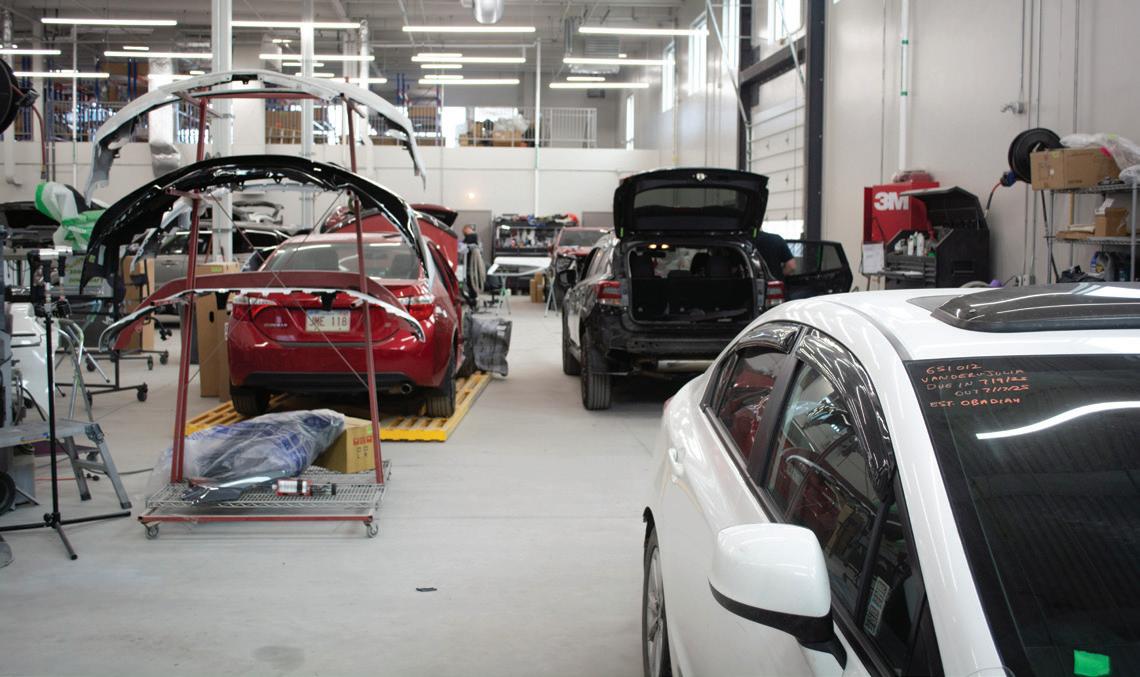

We’ve been proud to be part of the CARSTAR team since 2014. The brand’s strong visibility and trusted reputation have been key drivers in growing our repair volume and revenue, enabling us to expand our shop several times. The ongoing support from CARSTAR — across certifications, marketing, training, and more, has been essential to our continued success and growth.
– Patrick Flibotte, owner of CARSTAR Charlesbourg

BY JAY PERRY
Asmall misconception can lead to growth-stunting errors. That misconception is that taking responsibility is the same thing as being blamed. True leaders take full responsibility for whatever shows up in their businesses. That means the good stuff, like financial success, awards for performance, recognition in the community, etc. They also take responsibility for the not-so-good stuff that shows up in the business. Where is can get deceptive is when we have a “team-fail”.
When we have one of those team-fails (and they happen to everyone occasionally) in taking responsibility the leader is not assigning blame to anyone individual. Let’s face facts. When a team does fail there is usually an individual that played a primary role in that fail. It is easy to blame that person. The problem is that learning stops once blame is assigned.
When a leader takes full responsibility they go beyond what happened and who made it so, to a stage of self-examination. They look
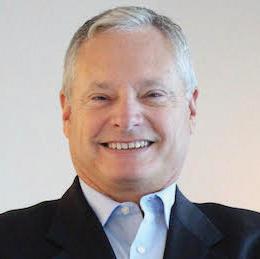
JAY PERRY
to see where improvement could be made in their performance as the leader. They ask questions like, “Did I provide enough training for the team-member(s)?” “Did I give them too much before they were ready to be on their own?” “Should I have been more available to help guide the team?”
That’s taking responsibility and not taking blame or assigning blame and that’s when learning can transpire. Those same types of questions can be asked of the team members, such as, “Did you feel fully prepared for what we were supposed to do?” “When you look back at the situation, is there something else we could have done to prepare for a better outcome?” “If we could roll back the clock on this, what would you do differently?”
These types of questions get people into a frame of mind we call solution-mode. This is where creativity lives. It squashes any desire to do better or be creative when we say things like, “I told you that wouldn’t work. Follow what I say next time.” Think about your own
Jay Perry is the founder of Ally Business Coaching, a process improvement and leadership development firm, and co-author of the book Success Manifesto with Brian Tracy. Jay is also an education partner with California Coast University in Santa Ana, California. He can be reached at jayperryally@gmail.com.
When a leader takes full responsibility they go beyond what happened and who made it so, to a stage of self-examination. They look to see where improvement could be made in their performance as the leader.
experience with leaders you had earlier in your career. If they said those types of things you feel gutted and totally uninspired to offer any alternatives that could improve things for the company. It is dispiriting.
By having these proper kind of conversations with our team, we plant the seed for engagement. We must display a responsible attitude not one that looks to assign blame if we want people to grow with us. People do not screw up on purpose. No one wakes up in the morning and says,”Let’s get to work and see what I can mess up today!” No, everyone has a desire to be considered a valuable part of the team, a contributor to its success. So we as leaders must guide team members down this path of taking responsibility so they can grow which in turn helps us to be the one who’s driving! .



In this third edition, we explore the challenges behind inconsistent apprentice success and the key role employers play. From outdated training methods to mismatched expectations, this conversation offers fresh insight into creating more transparent, personalized and effective apprenticeship experiences.
SHE: So, what would you like to explore today?
HE: Today I’d like to explore why my current strategies in training and developing apprentices are inconsistent in their successes.
SHE: Ok, tell me a little bit about why you feel your current apprenticeships haven’t been successful enough for you.
HE: Over the years I’ve had many apprentices and mentors throughout the company. Many of them were successful to some degree but many were not.
SHE: What made the successful ones, successful?
HE: They achieved their skills goals. Well, more like the industry’s skills goals for new apprentices.
SHE: Interesting. Are you saying that currently you are measuring the success of your apprenticeships based on an apprentice’s ability to reach the skills goals set for them by your industry? Sounds like it’s all been figured out for them: a pretty one-sided approach. Why don’t you think it’s working?
HE: When you say it like that, I don’t think we as an industry even bother to ask the apprentice what they want to learn or how they want to learn. We just set out skills, goals and timelines and even choose their career paths for them. Often choosing the paths we feel will best suit the shop.
SHE: I’m curious, how are employers making those career path choices? Are new apprentices undergoing an assessment process or something like that?
HE: No, that normally doesn’t happen, but I think it would help. But more than that, I don’t believe that all the skills required even come in the same personality.
SHE: Can you give me an example?
HE: Take the body technician role. Our trade requires them to be welders, electricians, computer programmers, HVAC technicians, mechanics and painters all to a certain various degree. If I renovate my house that would represent a greater
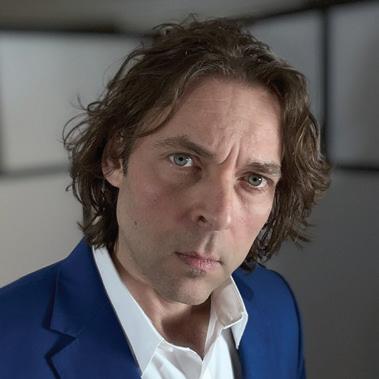
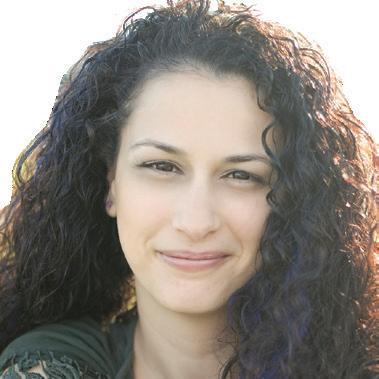
number of people. We are looking for all these skills in each successful candidate. If an apprentice lacks aptitude in one area they aren’t “successful”.
SHE: Wow, I can see how those factors certainly influence the success rate for an apprentice in this industry. I’m curious, are new apprentices aware of all these skill development expectations from the start?
HE: I don’t know, that’s a good question! I don’t think most people know to ask or most employers even think to mention it. I know we like to mention all the cool stuff about working with cars, to help create excitement about the industry. We don’t normally share all the challenging parts about being in this industry. They normally find out later.
SHE: What normally happens when they find out about all the challenges?
HE: We see them leave the trade or hop from shop to shop thinking it will be different.
SHE: Do you see opportunity for change when it comes to starting these new relationships off on a more open and transparent level?
HE: Yes, I feel starting with a simplified and honest conversation with new apprentices about the skills expectations and timelines for each role would be better. This will help set expectations together.
SHE: Sounds great, start building trust right from the beginning. Are there any changes you feel you would like to make when it comes to your future apprenticeships?
HE: I’d like to assess aptitude for each skill and reframe success by each learned skill rather than all or nothing.
SHE: Do you feel that will raise the success rate of your apprenticeships?
HE: I think it will help end the conversation from being one sided.
SHE: Absolutely, these types of conversations will help both sides set themselves up for success by agreeing how future successes will be measured. Is there anything else you feel is blocking more apprentices from being as successful as possible?
HE: Well, our mentors struggle with motivation.
SHE: Why do you think mentors struggle to stay motivated? What do you think that’s about?
HE: Well yes, they do struggle with that as well, but I meant that they see apprentices’ motivation wane. But now that we are saying it out loud, I don’t know which one goes first?
SHE: Ok, so whose motivation would you like to discuss first? Mentors’ or apprentices’?
HE: Let’s go with mentors.
SHE: Ok. How are you picking your mentors? How are you ensuring that your mentors want to be mentors in the first place?
HE: Generally, it’s a senior tech and we ask if they will do it.
SHE: How do you think your current selection system works for the teamed-up mentor/apprentice’s level of engagement?
HE: Sometimes the personalities don’t vibe. Some apprentices are super self motivated. Really eager to learn. They just go with whoever they are given as a mentor, and despite any personality differences they make it work. Some apprentices though need a lot more encouragement and explanation. They’re more difficult to find successful pairings.
SHE: It sounds as though a good personality match between mentor and apprentice is an essential part of this process.
HE: Yes, but the technical learning is one part. The encouragement and motivation and accountability really drain the mentor.
SHE: Do you think you might find the motivation of the mentors would be higher if they didn’t need to provide all the soft skills too?
HE: Could I have someone who can be the motivational support, or accountability partner so the mentors don’t need to be?
SHE: Yes. I would still suggest doing the personality and learning style assessments for all mentors and apprentice candidates. The results from these assessments will help you pair the ideal mentor’s training style and personality to each apprentice’s learning style and personality for more consistent success.
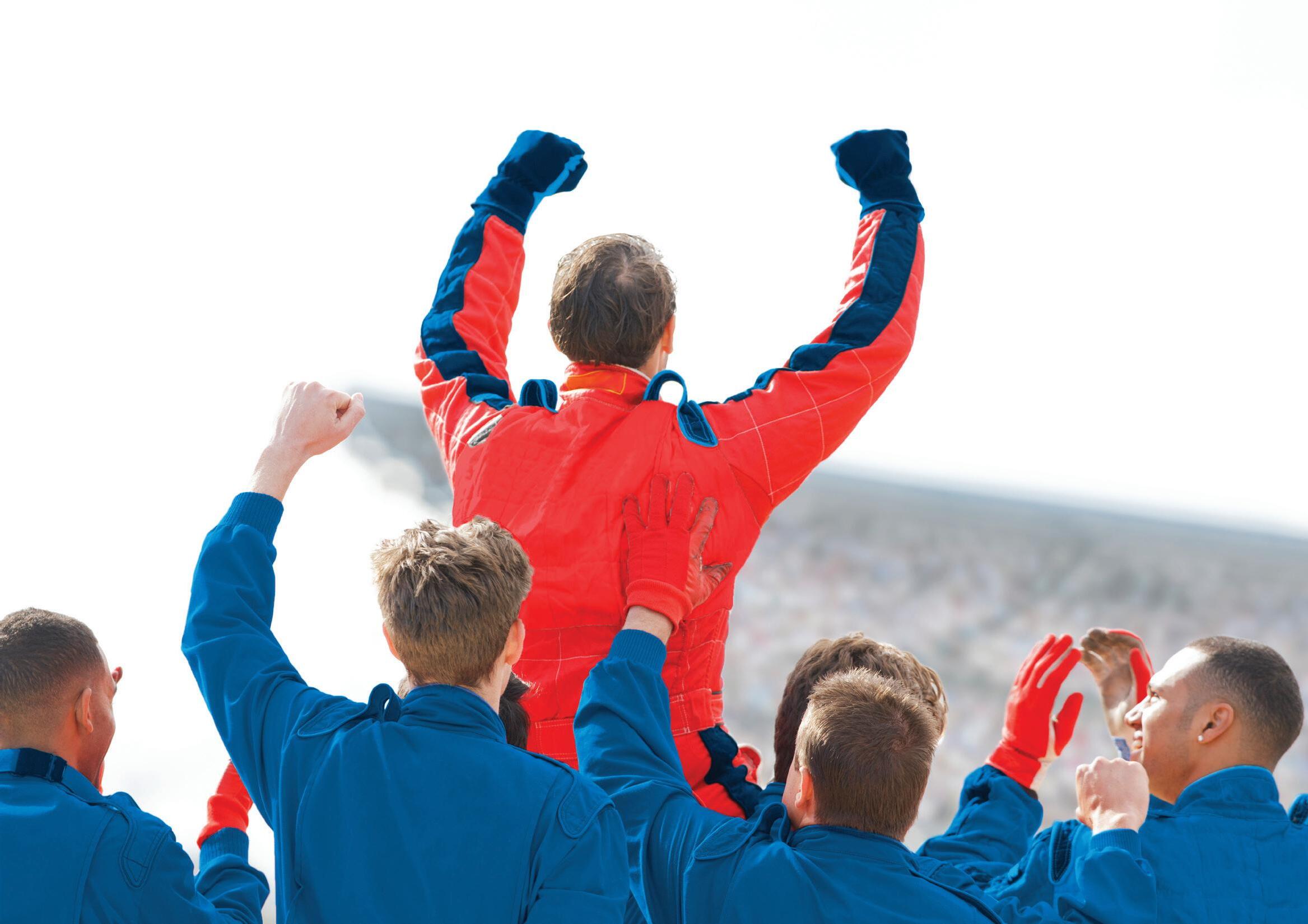
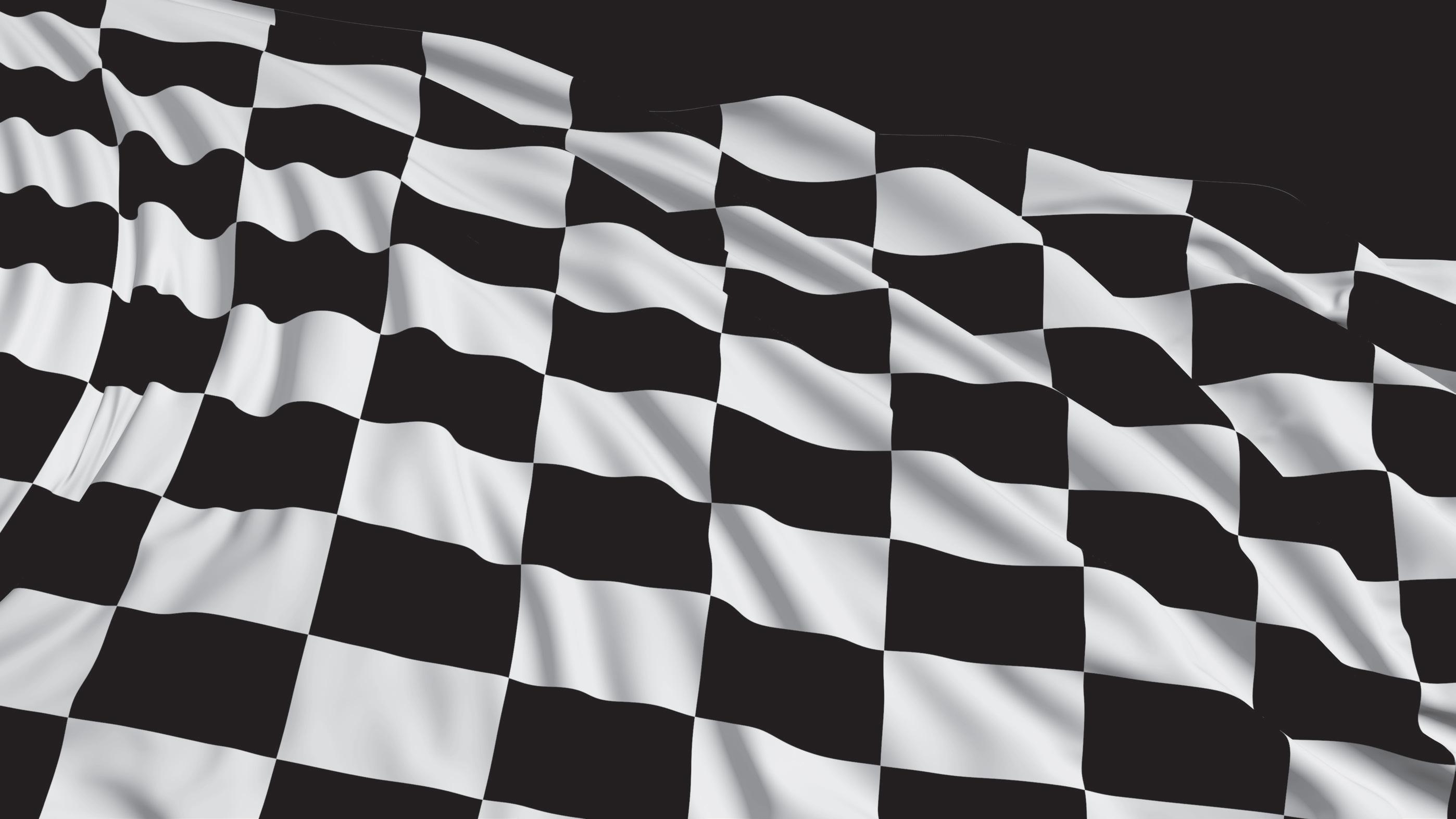



BY STEFANO LIESSI
Let’s say you have a perfectly tuned facility. You repair plan like a trooper, and you line-item everything you do to put that vehicle back on the road to OE spec, in its pre-loss condition.
Let’s say all your technicians are top-grade Canadian triple-‘A’ quality. So, what can you do to drive more business through the door? Marketing? Plaster your name on billboards and bus stop benches? Advertise on the radio? TV? Gift with purchase? Maybe a certification… that’s it. If you get OE certified, that should do it. Sounds like a very logical approach. Brilliant—or is it?
There is a thought process out there (prevalent with some U.S. outlets) that OE certifications are a waste and non-binding—they don’t hold their weight in water. This ideology may have you thinking twice about OE certifications. I understand how one might think this way; however, I don’t share this sentiment.
On that note, let’s discuss the OE certification playing field. The perception generally held of these certifications is that without that OE brand of certification—i.e. permission—you can’t fix that brand of vehicle. Sounds tough; however, it’s a wee bit misleading.
If you repair a vehicle without a certification, could there be negative repercussions? Yes, possibly. For example, the use of non-OEM parts may void a warranty, and the vehicle’s
owner may be upset. Additionally, you may find it challenging to obtain certain parts, such as structural components—which makes it difficult to repair without them. Tooling may also be a factor; without proper tooling, the job just got more difficult.
The OE is implementing a degree of the required skill set needed to fix these vehicles. After all, no hospital wants a doctor who was in the 50th percentile upon graduating with their degree—why should an OEM expect any less? As an OE, they implement specific repair procedures to ensure the vehicle is repaired correctly. Access to these procedures is sometimes limited without a certification.
The misleading part is that you can fix them —if you can get around a few hurdles. So, how can an OE implement the criteria that you will be required to follow?
They can host a training and testing session in their facilities, where they put on a series of brand-specific sessions with their own trained instructors, grading and testing technicians. Another approach is similar but allows the use of third-party instructors within their facilities.
The final option involves subletting the certification process to a third-party company, which would oversee it under licence from the OE—including audits, strategies and training also sublet to a third party.
As you can see, there are a few caveats re-
garding certifications to contend with from the OE level; hence, the negative perception regarding certifications.
Do I think certifications are a good idea? Yes, I do. However (here it comes), a few things need to be clarified.
First—everyone NEEDS to be in it together. Yes, everyone. If one party decides not to abide by the rules, it doesn’t work, and you are wasting your time—and others’.
Who are the players? The shop—from front end to detail—everyone needs to be on board and adhere to the guidelines. Payees need to understand that for this to work, they cannot selectively choose what applies and what doesn’t. The world doesn’t work this way. Sorry, it just doesn’t.
OEMs, you also need to be realistic in what you put out there. Mandating OE-only parts that you can’t supply—or that are discontinued—doesn’t cut it. Aftermarket and salvage are here to stay. They’re a multi-billion-dollar industry. OE-only is not viable or sustainable.
Anyone who thinks otherwise is delusional. You think delays are bad now? Try running the industry on OE-only and let me know how that works out.
How many vehicles are in your shop right now, waiting on an OE part? OEs need to work with the aftermarket and salvage companies— not against them.
If I go into a dealership, it’s not uncommon for them to use aftermarket brake pads and shocks on a vehicle—or front-end bushings. (All safety components.) But if I put an aftermarket fender or salvage headlamp on a vehicle in the bodyshop, would I suddenly be a hack? Please.
To my point—certifications can serve a purpose: regulation. In our industry we have NONE—zero—nada.
A plumber, electrician, carpenter, welder and HVAC professional all have a governing body that implements a code written specifically for their respective industry. It is not to be questioned that if you need outlets in the kitchen, they must meet code. If you want to install a second bathroom, it needs to meet code. If you’re going to change the landscape and parking at your business, it needs to meet code.

If Joey Francoscarapini decides to set up a Quonset hut in Greenacres, Alberta, and repair vehicles—have at it, Joey. Make sure the Quonset hut meets the code.
Sure, Joey has a licence he’s had since ’84, but no one is overseeing his contribution. Has he kept up? Is he repairing the vehicle to meet the OE requirements of a safe repair?
Who is guiding Joey in what he needs to keep up with? Who is watching over the process? Nobody.
Now you can see why everyone needs to be on board.
Without some form of regulation—such as OE certifications—we are living in the wild, wild west.
Are certifications the answer to all our troubles? Likely not. Are certifications a start? Yes,
they are. Should they be regulated as well? Absolutely.
In my opinion—and you are entitled to my opinion—what we have been doing is not working. Customers are mainly unaware of vehicle repair, and most couldn’t care less. All they know is that they should be able to trust that it is repaired properly.
They assume there are checks and balances in place. The plaque on the wall serves as a sign to the customer that you have this under control. Unfortunately, many businesses display it on the wall and then revert to the status quo—failing to follow through.
Take the opportunity to make a change in our industry for the greater good. If you have that OE certification, do yourself, the payee, and your customers a favour… Prove it.
Stefano Liessi is the Training and Curriculum coordinator for Color Compass Corporation. He is also a Red Seal technician and refinisher. Stefano enhances his 40 years of experience with 15 years of I-CAR instruction and a post-secondary degree. He also trains Skills Alberta students and has brought home 11 medals for the province, and taught high school students in the auto shop for six years. He can be reached at sliessi@colorcompass.com.



SALES PLUMMET, CREDITS CUT AND CYBERTRUCK CONUNDRUM
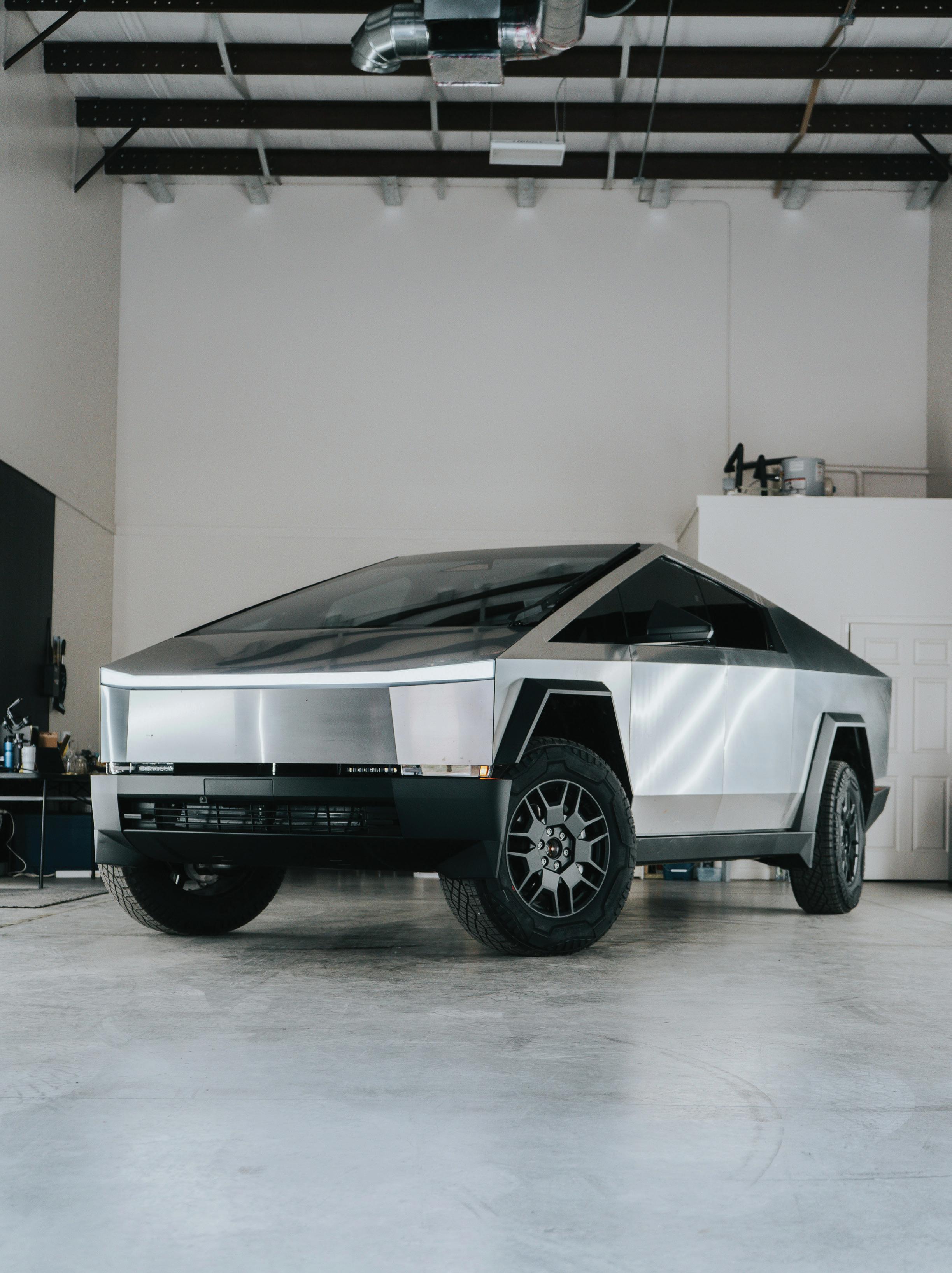
As political backlash, EV policy changes and consumer confidence collide, Tesla faces a critical moment — with implications for Canada’s collision repair sector.
Tesla sales in Canada were already declining prior to the federal government’s suspension of $43 million in EV rebates in March 2025 —an action that accelerated the downturn.
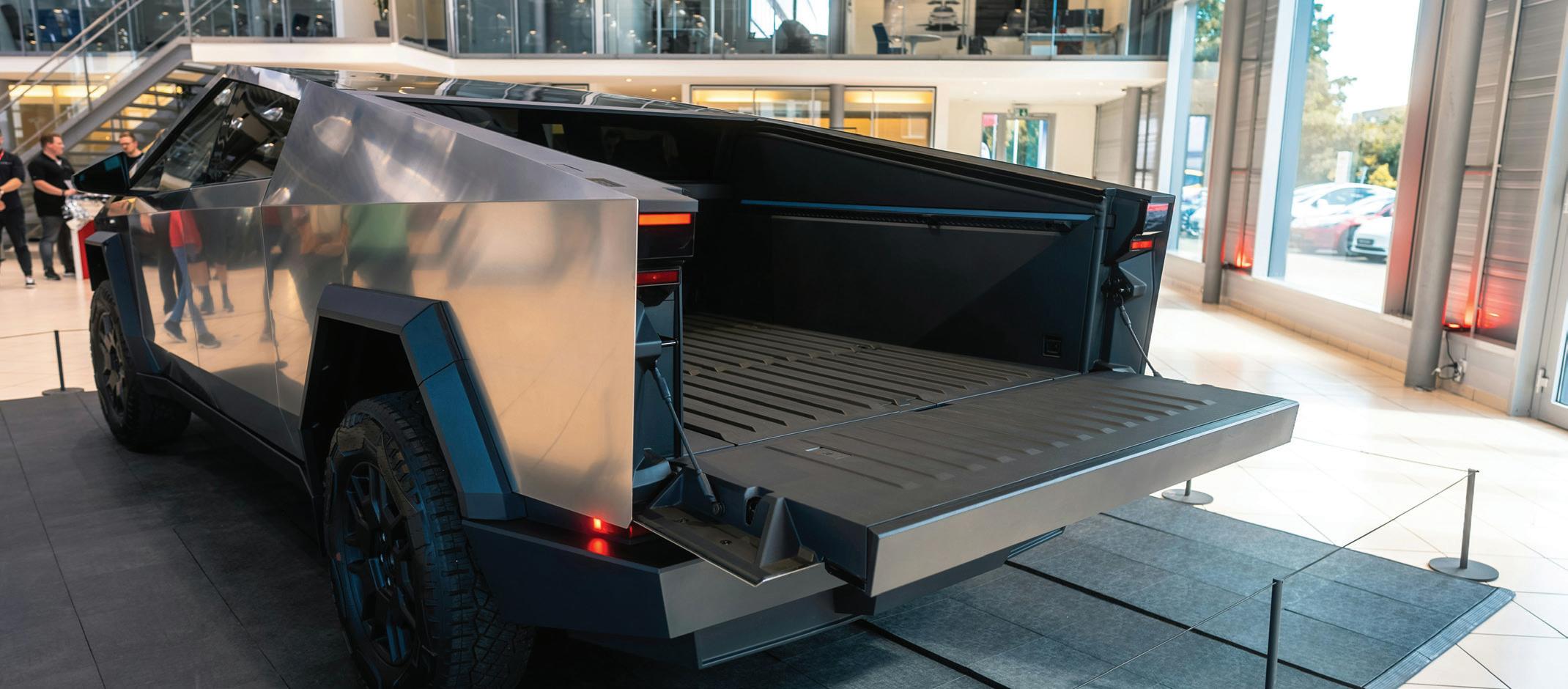
BY GREG HORN
Tesla’s recent turbulence may seem like Silicon Valley drama, but its effects are already rippling through collision centres across Canada. With plummeting sales, a potential collapse of critical EV tax incentives and a glut of unsold Cybertrucks, the future of North America’s most high-profile EV brand is suddenly in question—and the impact on repair volumes, parts availability and longterm viability of Tesla-certified bodyshops could be profound.
Elon Musk’s car company has made headlines recently, with global sales hitting the skids.
While many point to Musk’s shortterm stint as head of the Department of Government Efficiency, his very public feud with President Trump and his support for far-right political parties in Germany as the cause, there are several more—and far more severe—problems on the horizon for Tesla.
Before his affiliation with Trump, Musk made several decisions that are now negatively
impacting the company. Tesla initiated significant price cuts across its models on Jan. 13, 2023, in the U.S. and other markets —in some cases reaching up to 20 percent— affecting vehicles like the Model 3 and Model Y. This angered buyers who had ordered a vehicle at the original price, only to see that by the time they took delivery, the identical car was priced significantly lower. These price reductions hurt resale values and damaged the brand’s perception. Additionally, the unusually styled Cybertruck reached peak production just as sales began to slow, resulting in a glut of unsold inventory.
Tesla sales in Canada were already declining prior to the federal government’s suspension of $43 million in EV rebates in March 2025 —an action that accelerated the downturn. The decline is especially evident in Quebec, where sales plummeted by 85 percent in the first three months of the year compared to the end of 2024.
Despite this sharp drop in sales, Tesla
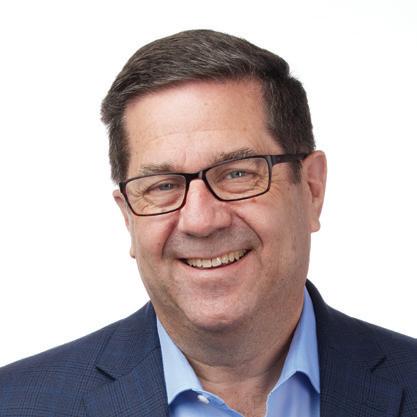
posted a $409 million profit for Q1 2025. However, that figure included $595 million in revenue from selling U.S. regulatory tax credits to other automakers. Without that $595 million, Tesla would have reported a $189 million loss. In 2024, Tesla generated $2.76 billion from these credit sales—a major concern, as the Trump administration has made it clear it wants to eliminate those tax credits altogether.
In addition, the Trump administration’s “Big Beautiful Bill,” recently signed into law, eliminates the US$7,500 tax credit for new EVs and the US$4,000 credit for used EVs as of Sept. 30, 2025—a change that will further impact Tesla sales.
Now, Tesla is facing a dramatic fall in sales, the possible elimination of a $2.76 billion revenue stream, a glut of its most expensive vehicle—the Cybertruck—and a damaged public reputation due to its CEO’s actions. Those are significant headwinds to overcome.
The question is: will Tesla survive?
Greg Horn is the chief industry relations officer at PartsTrader and writes collision industry articles and blogs, in addition to creating quarterly webinars for the industry. He is frequent keynote speaker at collision repair conferences across North America. Horn previously served as Mitchell International’s vice president of industry relations and data analytics, where he published the company’s Industry Trends Report.
A true ‘car guy’—he has owned more than 62 cars—Horn began in the industry working in Volkswagen and Porsche parts departments in high school and college. He began his auto claims career at Safeco and went on to hold senior leadership positions at many large insurance companies. He has also served on the I-CAR Education Foundation; the General Motors Safety Council and GM Fixed Operations Advisory Council. Horn also recently served two years as trustee with the Collision Industry Foundation. He studied at the University of Heidelberg in Germany as well as California State University, Long Beach, and holds degrees in Business Administration and German.
Anew report from Electric Mobility Canada predicts the nation’s transportation sector is about to undergo a major transformation.
According to the report, electric mobility’s slice of transportation-sector GDP is set to climb from a modest 17 percent in 2026 to a commanding 47 percent by 2035. This means more electric vehicles (EVs) on Canadian roads—and by extension, in collision bays.
The EMC report estimates EVs could account for anywhere from 21 percent of the light-duty fleet in Nunavut to a whopping 75 percent in Quebec by 2035.
During the same period, employment in the electric side of the mobility sector is expected to grow from 16 percent to 45 percent.
Canada’s electric vehicle adoption rates remain significantly behind that of the European Union. According to a recent report from Clean Technika, Europe saw a 28 percent in EV sales in April. Excluding Tesla, which saw a 50 percent year-over-year decline, the

market grew 33 percent.
Battery electric vehicle sales reached 184,000 units, up 26 percent year-over-year. Plugin hybrid electric vehicle sales increased 30 percent year-over-year to 98,000 units, and are up 12 percent year-to-date at 368,000 units.
Plugin vehicles accounted for 26 percent of the European auto market in April, with 17 percent from battery electrics and 9 percent from plugin hybrids.
Battery electrics made up 67 percent of all plugin sales this year, while plugin hybrids
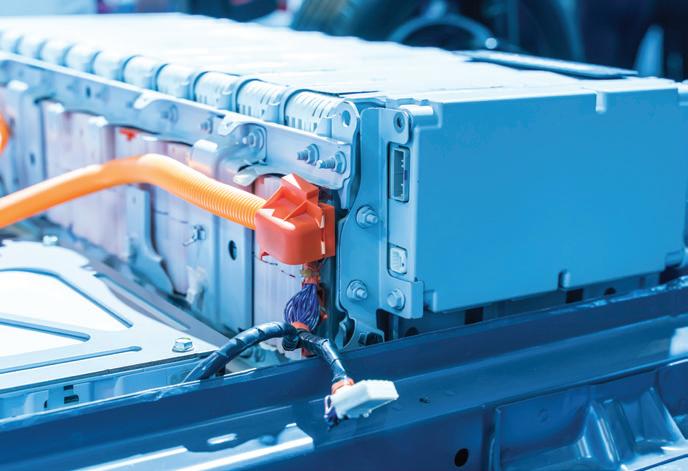
comprised 33 percent, identical to the 2024 breakdown. Diesel vehicle sales declined 25 percent and now hold 9 percent of the market. Petrol vehicles dropped 22 percent year-overyear and represent 28 percent of the market.
Hybrid electric vehicles grew 17 percent year-over-year in April, with a market share of 35 percent. Altogether, 61 percent of all vehicles sold in Europe that month had some form of electrification.
At the current rate of expansion, 100 percent of all vehicles sold in the EU should have some level of electrification by 2032.
Non-operational electric vehicles are now barred from boarding boats operated by British Columbia Ferry Services Inc. making it very difficult for Gulf Island residents to secure repairs.
B.C. Ferries’ new rules prohibit EVs with significant damage—such as exposed batteries, fluid leaks and wiring issues—from boarding ferries. EVs with minor damage can still be transported, but require approval from the ship’s captain.
According to Southern Gulf Islands Tourism, the latest statistics from the Insurance Corporation of British Columbia state that 6.5 percent of residents on Salt Spring Island own an EV and 4.1 percent of residents across the rest of the Southern Gulf Islands own an EV.
Village Bay Repairs, an auto repair and maintenance shop on Mayne Island, doesn’t do EV repairs, and owner Mike Maxwell says that “Owners are certainly going to be in trouble though. How would they get them off the island, I wonder?”
The updates to B.C. Ferries’ internal policies come in response to Transport Canada guidelines on the fire risk posed by the lithium-ion batteries in EVs. Transport

Canada’s policy, which requires damaged or defective batteries to be removed for transportation, has been in place since 2014.
In a statement to Black Press Media, B.C. Ferries said “We recognize this presents challenges for customers and commercial operators, particularly as EV adoption increases. However, the safety risks associated with transporting potentially damaged highvoltage batteries, especially when the vehicle cannot be assessed under its own power, require a cautious approach.”
Langley-Abbotsford MLA Harman
Bhangu has raised “serious concern” over Transport Canada’s new rule banning nonoperational electric vehicles from BC Ferries. In a June 30 letter to federal and provincial transport ministers, Bhangu said the policy is “trapping” island residents, forcing them to pay for costly repairs even when no local services are available. He called it a “failure in planning” and claimed tow truck operators are now refusing EV jobs. Peninsula Towing, which handles 10–15 EVs daily, says the ban threatens their work. BC Ferries says it’s seeking clarification on safe transport options.
Montreal’s luxury collision scene just got a bold new boost.
After decades as a cornerstone of the city’s high-end repair market, AutoLux has evolved as part of the rebranded group of ACX collision centres—sleek, sophisticated and unapologetically reimagined. The grand reopening wasn’t just a ribbon-cutting—it was a statement.
“We’re very honoured to align the ACX brand with AutoLux,” said Tim Loehn, Director of Operations at AutoCanada. “It’s one of the most recognized names in the Montreal market.”
The transformation is more than a fresh coat of paint. The facility now boasts modernized customer spaces, a striking new exterior and elevated branding aligned with both ACX and Mercedes-Benz standards. The relaunch event drew more than 150 guests, stopping traffic and turning heads with a parade of ultra-luxury vehicles, curated décor and an unmistakable air of prestige.
“There was a lot of excitement, some
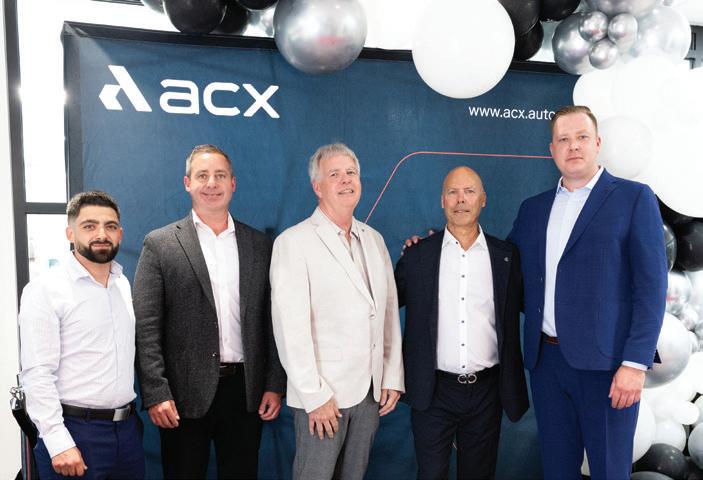
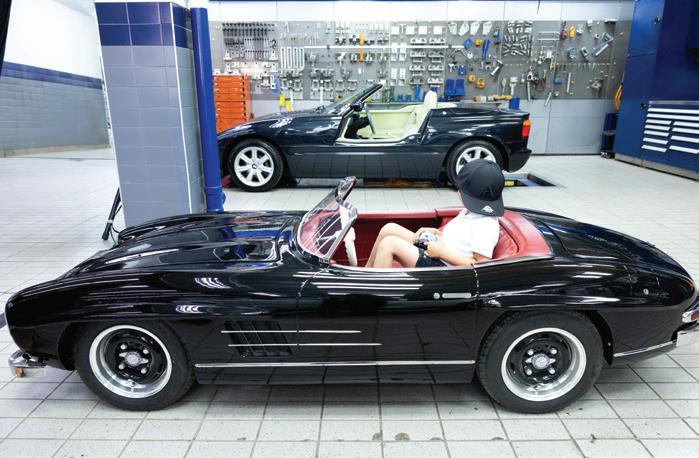
suspense, even,” said Loehn. “But the respect for the legacy of AutoLux is there—and the future under ACX is looking just as strong.”
The new design includes a MercedesBenz exclusive lounge with luxe finishes,


preserving the brand’s customer experience while blending it with ACX’s forward-thinking vision. Completed in two meticulous phases, the transformation pays homage to AutoLux’s roots while steering confidently into the future.
Ottawa just got a jolt of high-voltage innovation.
ACX 417 has officially opened its bay doors—and with it, a bold new era for electric vehicle collision repair in the capital. Rising from a site with nearly four decades of collision repair history, this brand-new, purpose-built facility doesn’t just represent progress—it accelerates it.
“It took us four years from design to completion,” said Mike Li, General Manager. “This moment means everything to us.”
ACX 417 is built with the future in mind, tailored for the specialized demands of OEM-certified EV repair. Tesla tops the current roster, but the roadmap ahead includes names like Rivian, VinFast and beyond. From the first customer handshake to the final delivery, every step is engineered with meticulous precision.
“We want to offer customers true attention to detail—and set a new standard in Ottawa,” said Li.
But ACX 417 isn’t just a local play—it’s a key part of a national strategy.“There’s only

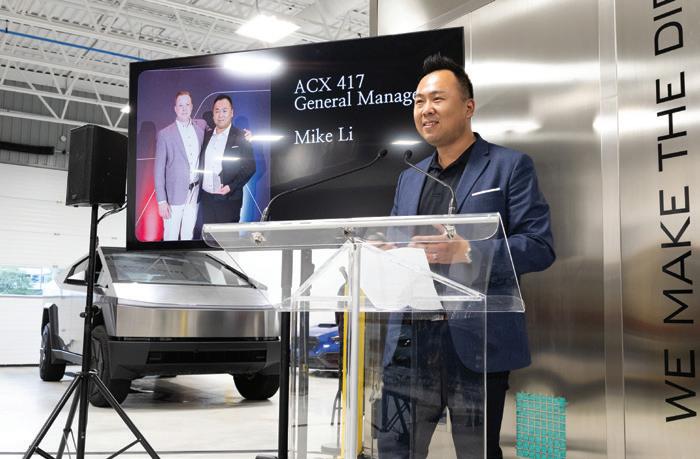
one true way of performing collision repairs, and it’s through OEM certification,” said Tim Loehn, Director of Operations. “And this location embodies that philosophy.”
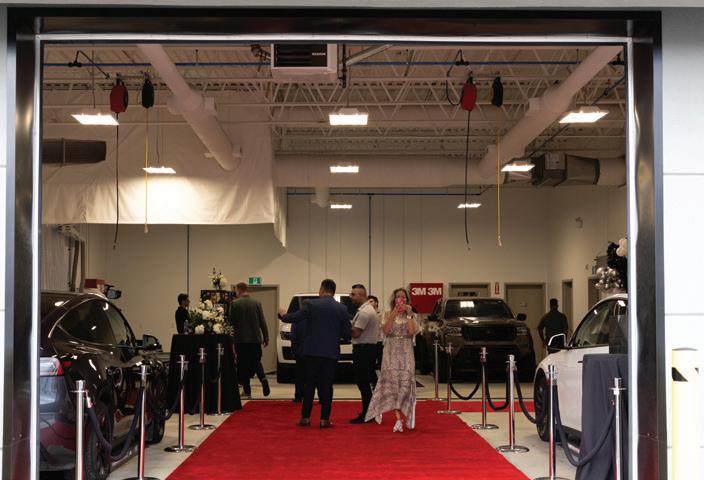
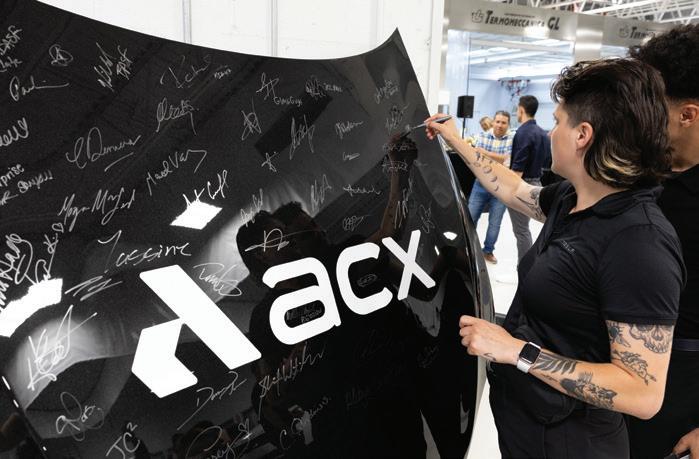
This new brand identity reflects their commitment to innovation, excellence and customer satisfaction. ACX 417 is more than a shop. It’s a statement.
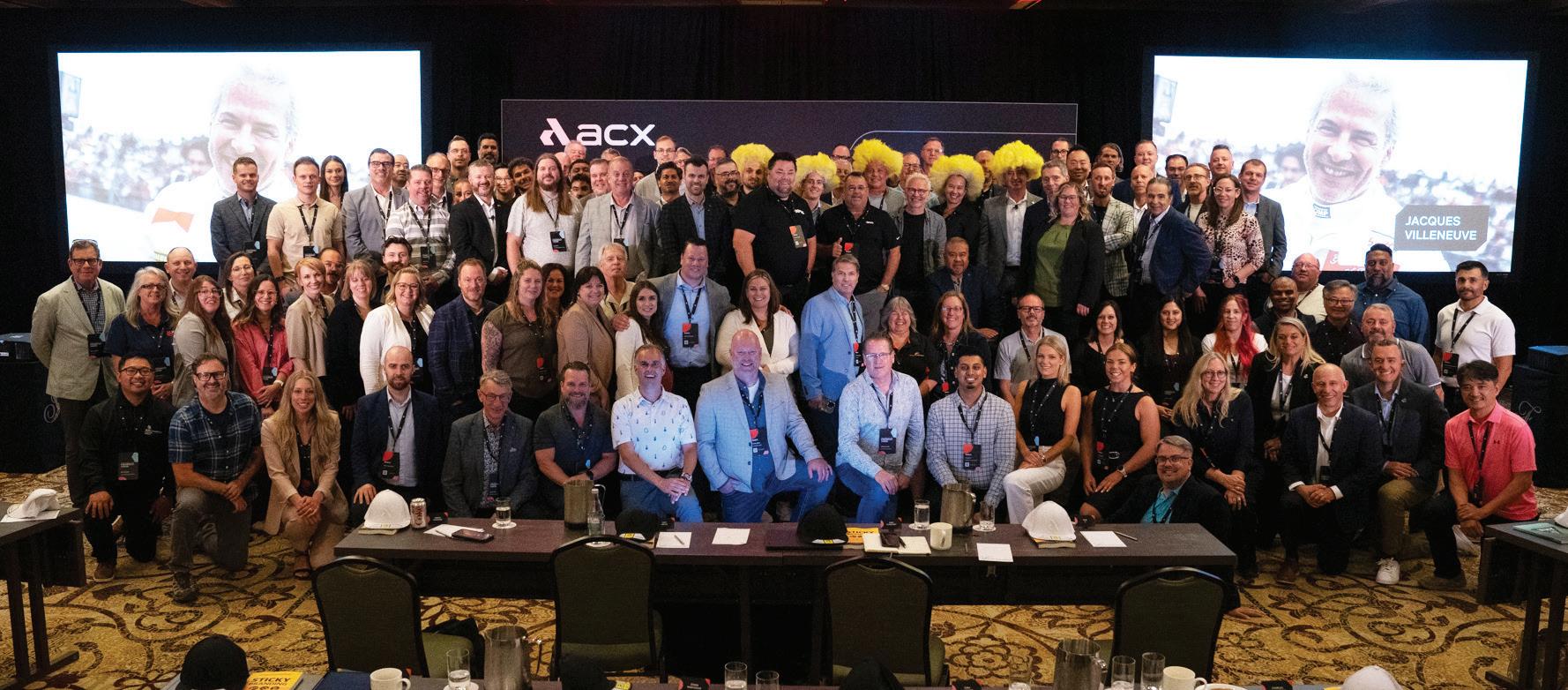

BY WILLIAM SIMMONS
They came for the strategy, stayed for the scenery and left with a whole new sense of direction.
ACX’s annual conference, this year titled “ALIGN 2025 – Enhanced Vision” brought AutoCanada’s collision and hail repair crew to new heights—literally and figuratively—at the Fairmont Tremblant. Nestled in Quebec’s Laurentian Mountains, this year’s event wasn’t just about looking back at the numbers. It was about planting a flag for what comes next.
There’s no mistaking it: ACX is changing. The clearest sign came as the curtains lifted— figuratively—on the network’s new identity. Sleek visuals, a revitalized logo and a dynamic online rollout are just the surface. Behind it all was a months-long effort that Keven Lupien described as more than a rebrand—it was a reframing of purpose.
The redesigned ACX isn’t just meant to look modern. It’s meant to move. A new website and a full digital ecosystem are set to follow, aiming to create a stronger, clearer bridge between the teams doing the work and the customers relying on them.
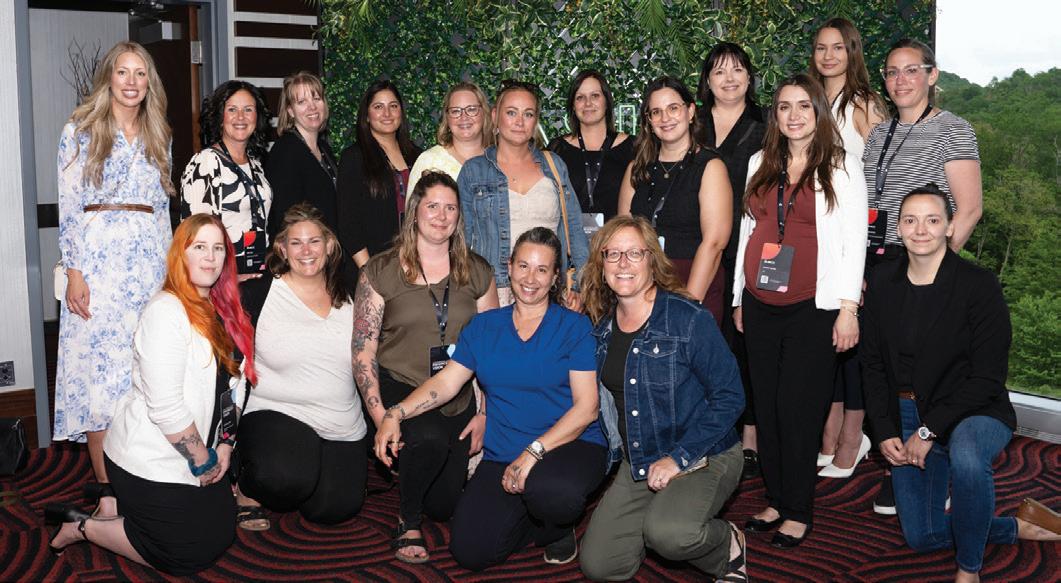
Throughout the conference, one theme came up again and again: clarity. And perhaps no one challenged perceptions more than Dr. Niree Kodaverdian, who walked the room through the stories we tell ourselves about the economy—and why so many don’t hold up. Labour shortages, recession whispers, spiking insurance rates—each headline has a backstory, and often, a more complex reality. Kodaverdian connected the dots between rising U.S. debt, shrinking exports and increased household spending, all while showing how these forces subtly shape the future of collision repair.
Sean Carey reminded everyone why the word “rollercoaster” isn’t just a metaphor— it’s a business model. With OEM programs shifting, DRP contracts evolving and IT systems still catching up, collision operators face more curveballs than ever. But Carey wasn’t there to warn—he was there to point out where opportunity still lives. Services many shops overlook, from tire work to recalibrations, may be the key to weathering turbulent market cycles.
At the same time, Jeremy Miller challenged attendees to think bigger about positioning. Branding, he argued, isn’t just about slogans or colours—it’s about controlling the narrative in your customer’s mind. Miller’s workshop cracked open how certifications and culture can become selling tools, not just checkboxes. The energy in the room made it clear: ACX is ready to compete not only on quality, but on identity.
Jacques Villeneuve, Canadian racing legend and former IndyCar and F1 world champion, arrived as a surprise guest speaker. With the perfect blend of horsepower and humility, Villeneuve shared stories from the track that echoed themes from the conference: precision, discipline and the power of a great team.
Arthur Crawford spotlighted ACX’s drive to elevate its people—with leadership training, technical skills and a sharp focus on safety as a differentiator.
And AutoCanada President Jeff Thorpe put it plainly: the reason this network keeps breaking records isn’t luck—it’s people. With over 5,000 members across the country

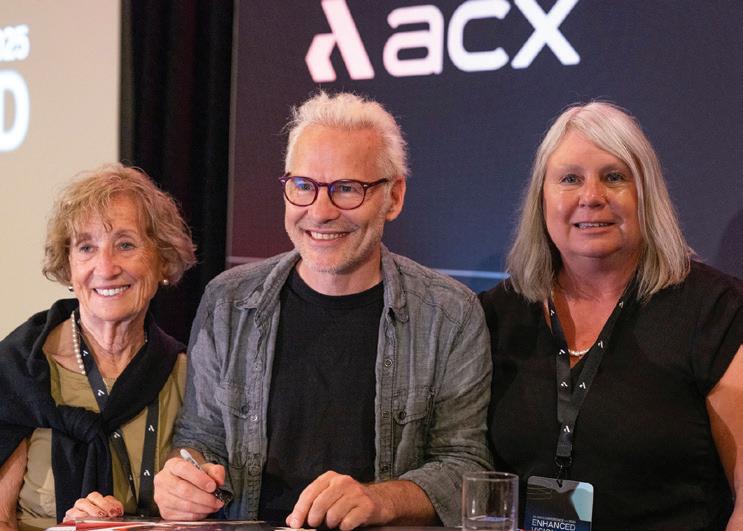
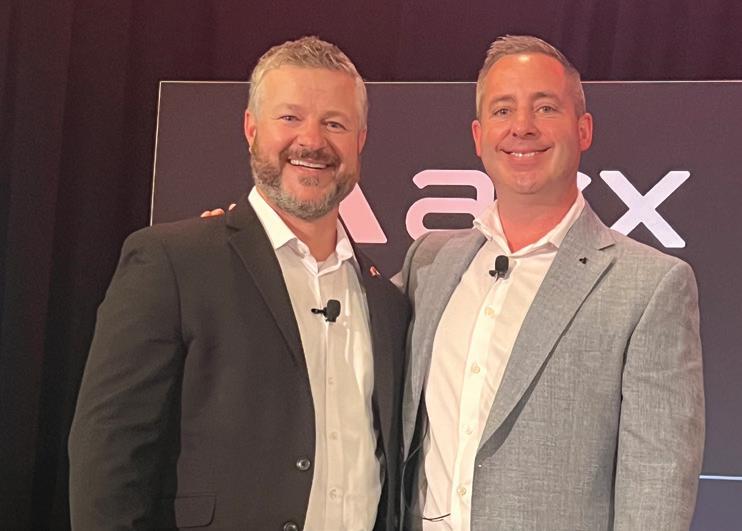
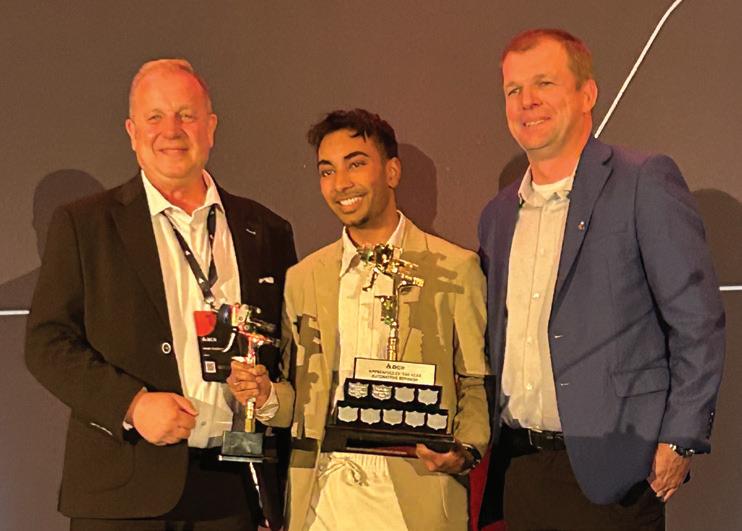
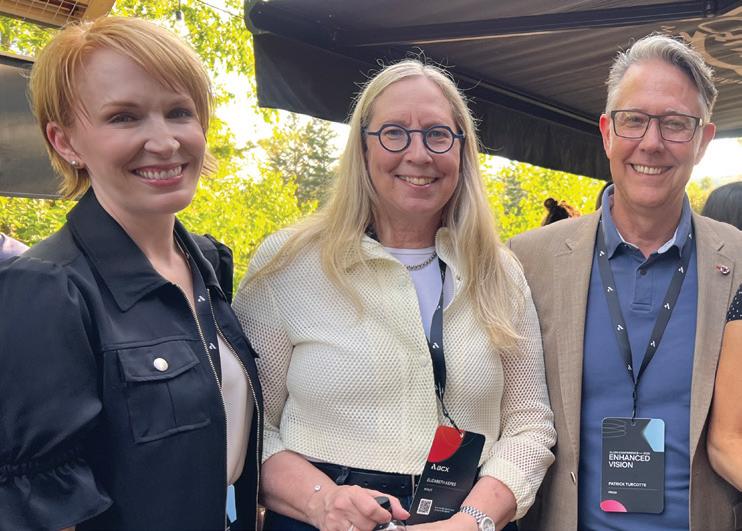
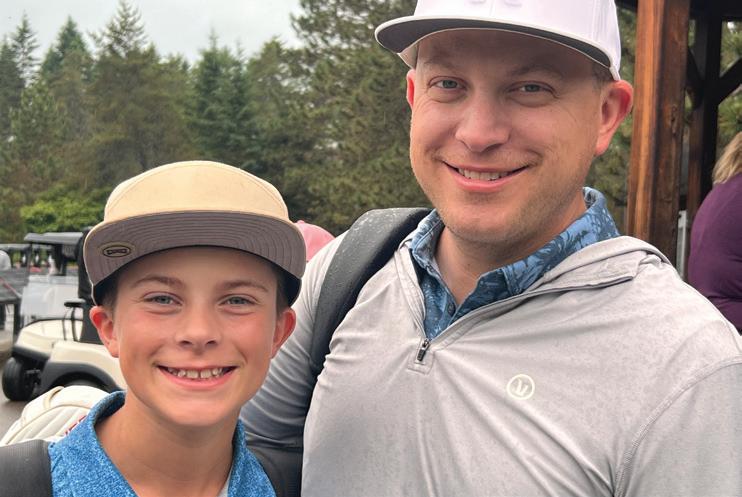
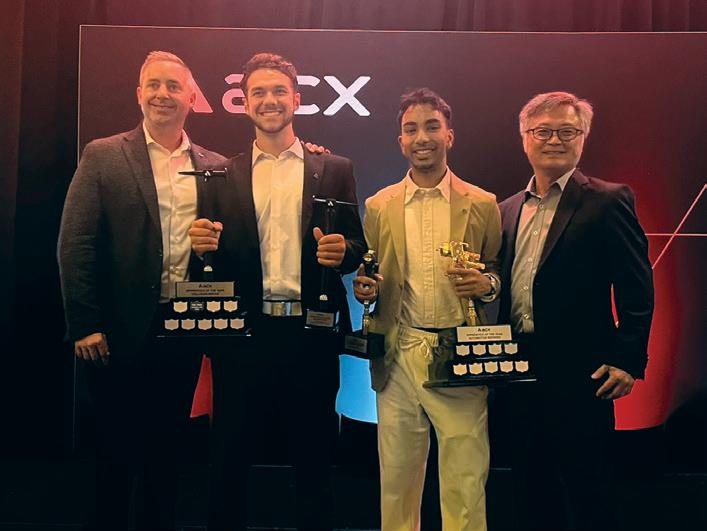
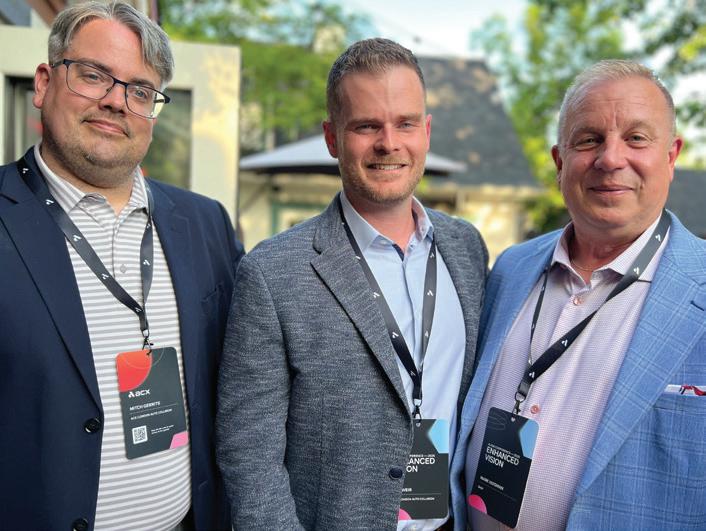
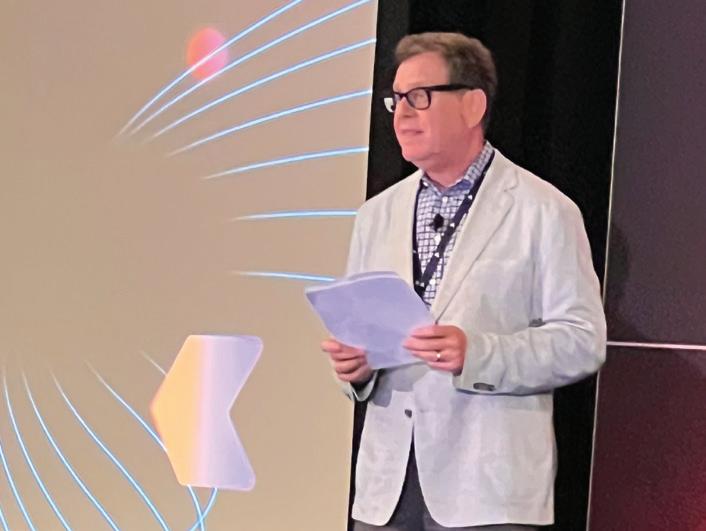
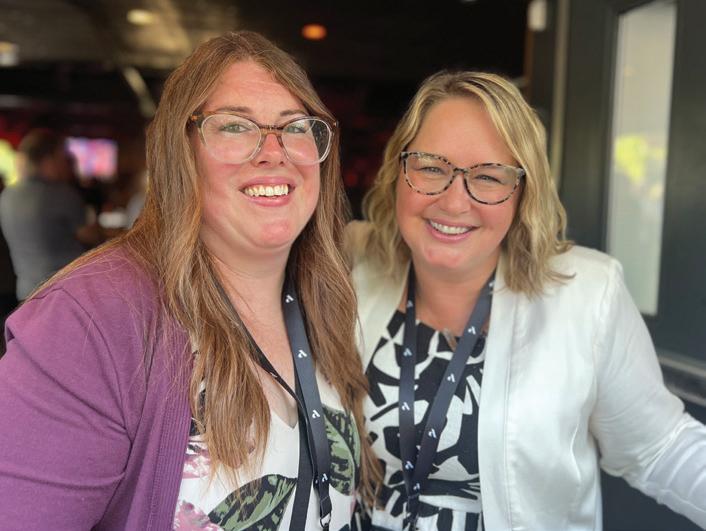
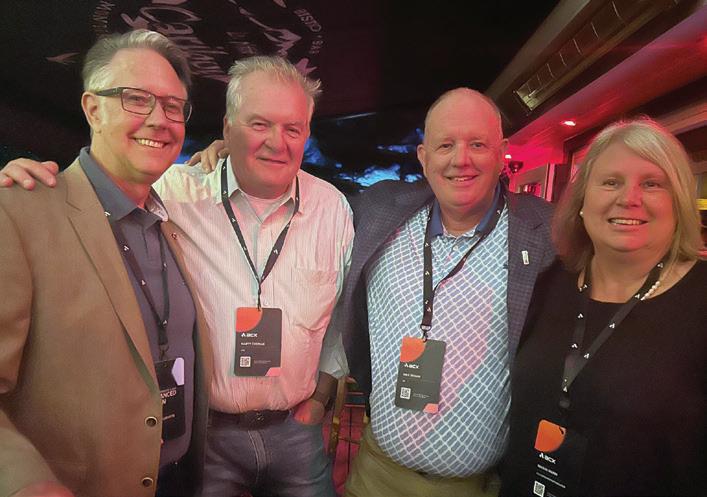
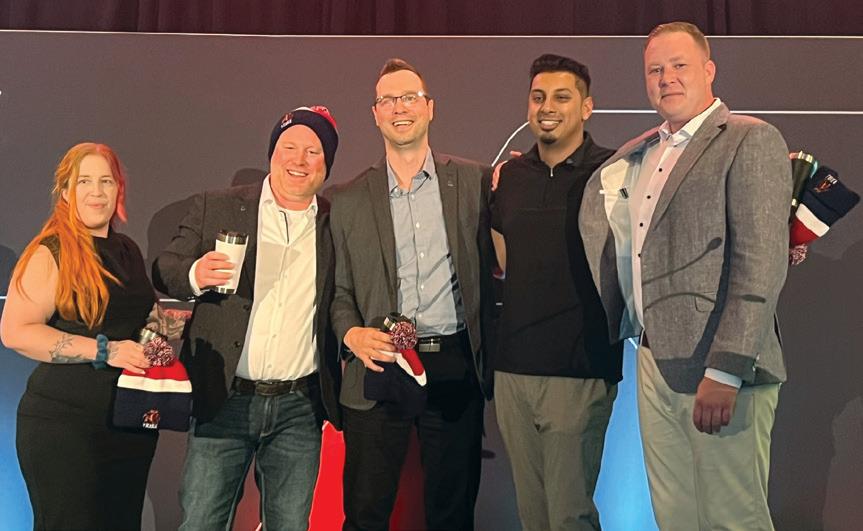

and growing, ALIGN 2025 served as both celebration and recommitment.
Before the final evening’s celebration began, Paul Antony brought the message home in a closing address that hit both the head and the heart.
“Collision repair is one of the only industries where doing things right means the customer never comes back,” he said. “As odd as that is—we want them to return, but for coffee and visit, not because of another accident. So we set the standard: do it once, do it right and make sure they tell everyone else.”
He continued:
“Every number we report, every milestone we hit, every ounce of momentum—we owe it to the people. The ACX team delivers exceptional results, day in and day out.”
This three-day, high-impact conference wrapped up in style with a gala dinner and awards celebration that felt more like a championship win than a closing ceremony. Attendees gathered for one final night of connection and recognition as the ACX management team presented gifts to top performers and standout leaders across the network.
In the quiet hours that followed the final toast, some attendees lingered over late-night snacks and last laughs, maybe not wanting to let go of the mountain air just yet.
But come morning, they’d be back in their shops and offices. Realigning—again—with a little more perspective in their pocket and a clearer view of the road ahead.
For a look at the new ACX website visit www.acx.auto
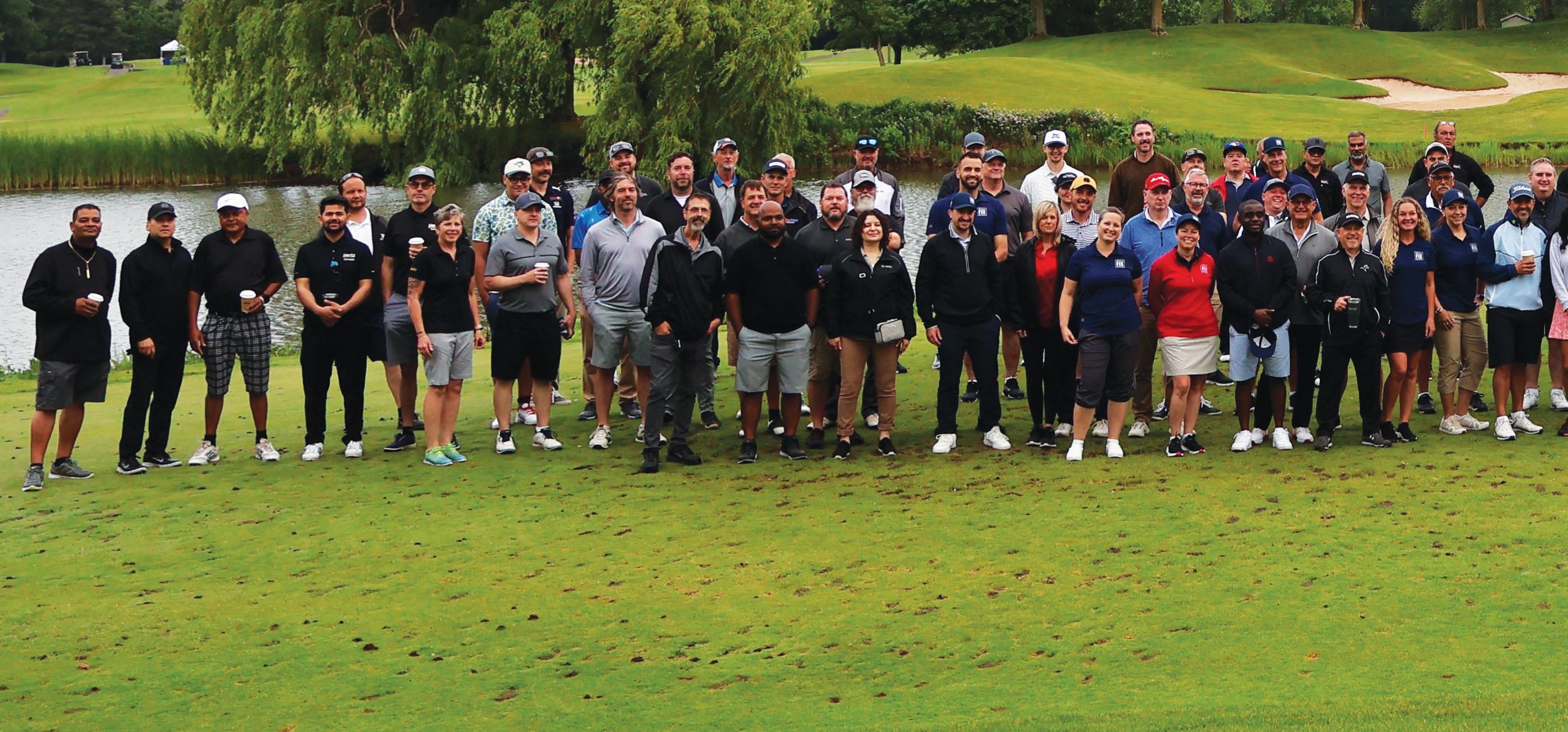
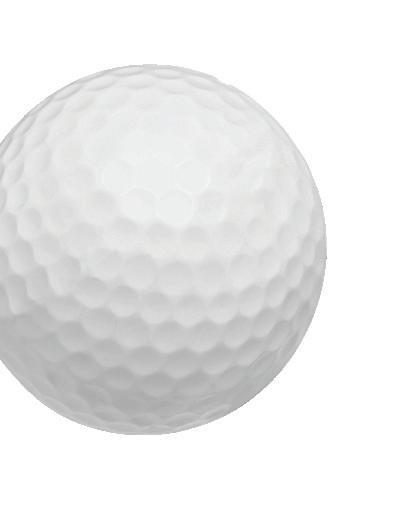
BY WILLIAM SIMMONS
Rain clouds and scattered showers didn’t dampen spirits at Glen Abbey Golf Club, where Fix Network Canada hosted its 16th annual Fix Masters Golf Tournament on June 19, 2025. With teams made up of insurance representatives, franchisee members, vendor partners and friends, the tournament was once again a sold-out success, raising more than $5,000 in support of Ronald McDonald House Charities (RMHC) Canada.
Despite a grey sky and a few umbrellaworthy moments, attendees arrived in high spirits, ready to play and give back. Between bouts of drizzle, participants enjoyed oppositehand drives, beat-the-pro challenges and hole-in-one contests, all designed to test their skills—or at least their patience.
“The Fix Network Ontario annual charity golf tournament was another great success this year,” said Amin Youssef, regional vice president – Ontario at Fix Network. “Hosted at the beautiful Glen Abbey golf course, it was a sold-out event that brought together our network’s strategic partners, vendor partners, insurance partners and media partners—all in the spirit of having fun while making a meaningful impact at the same time. And a meaningful impact we collectively delivered. We thank our industry partners for joining us and eagerly look forward to another great tournament in 2026.”
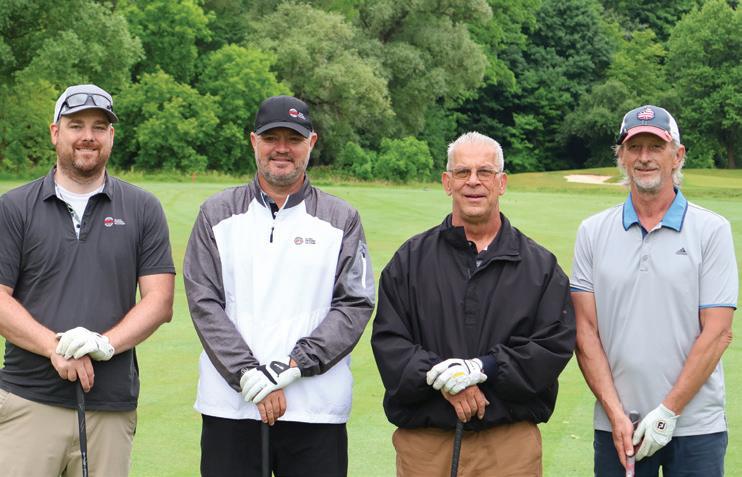
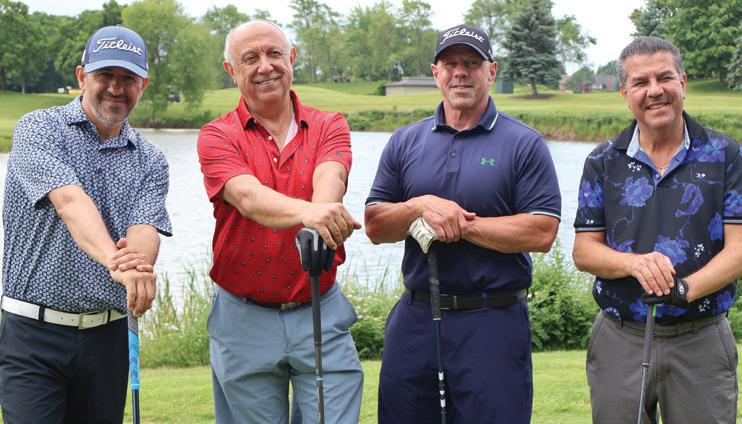
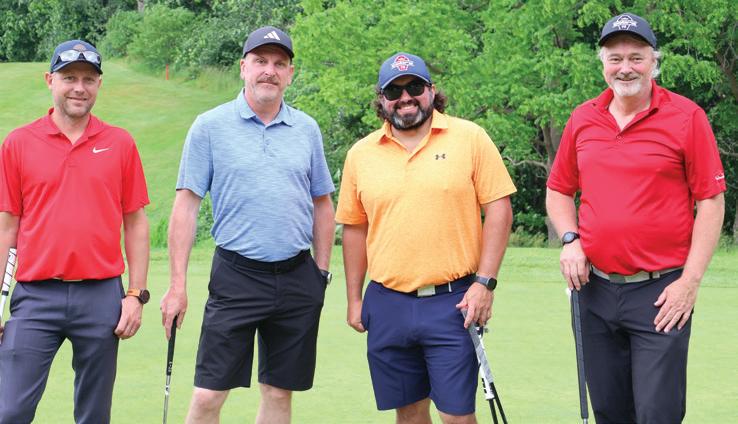
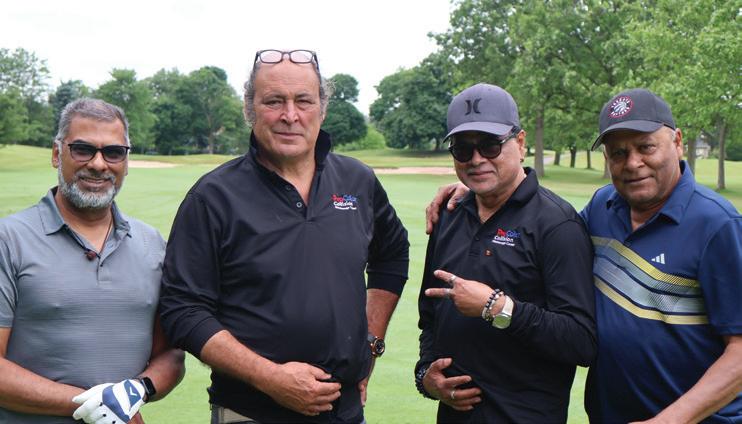

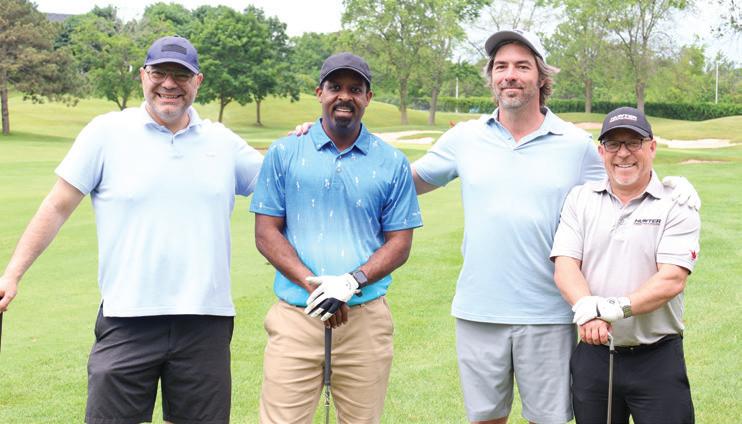
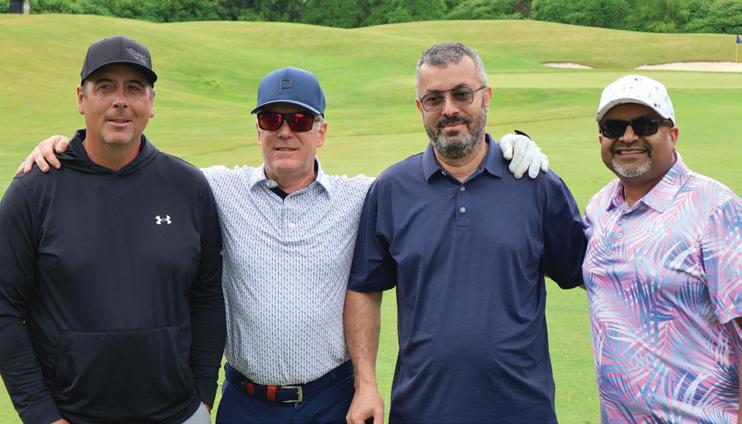


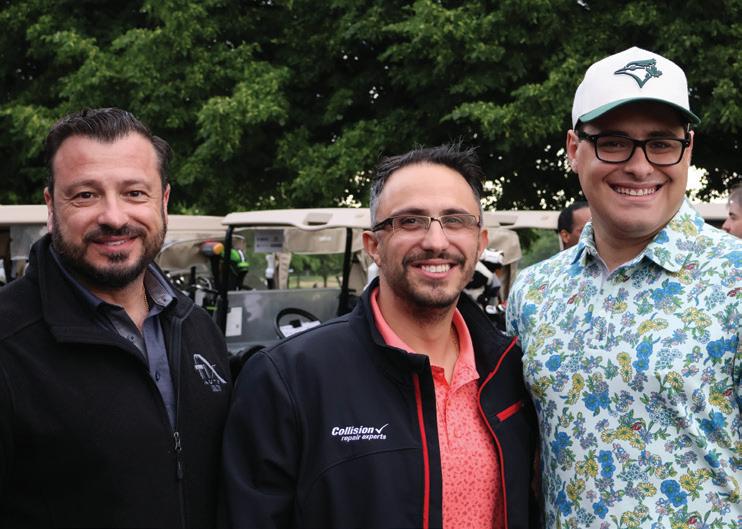

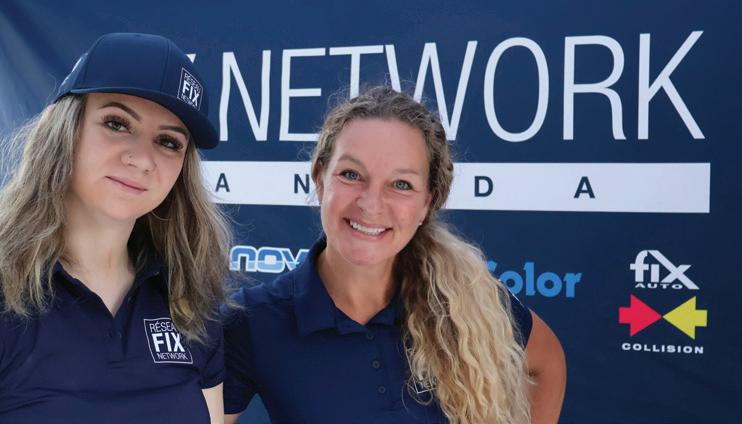

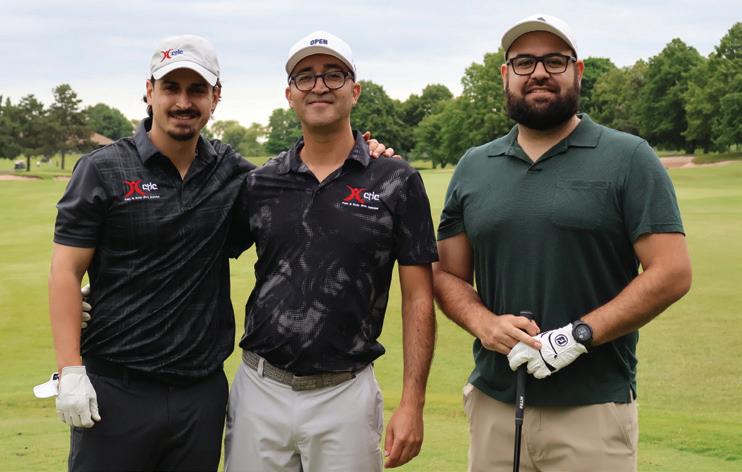
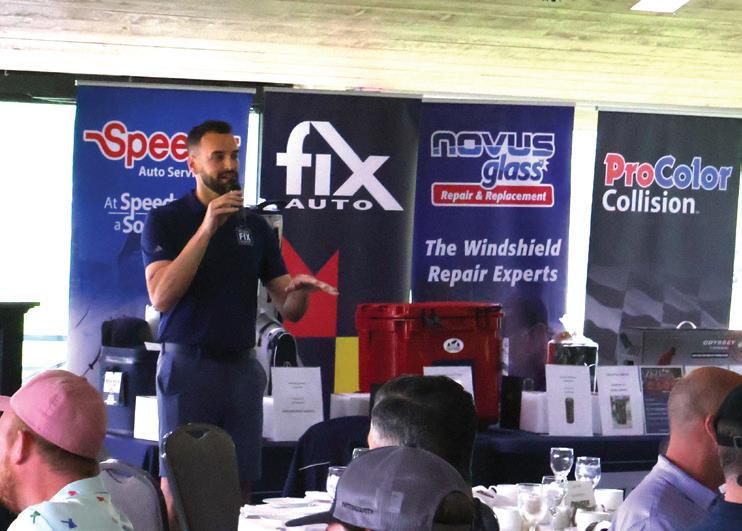

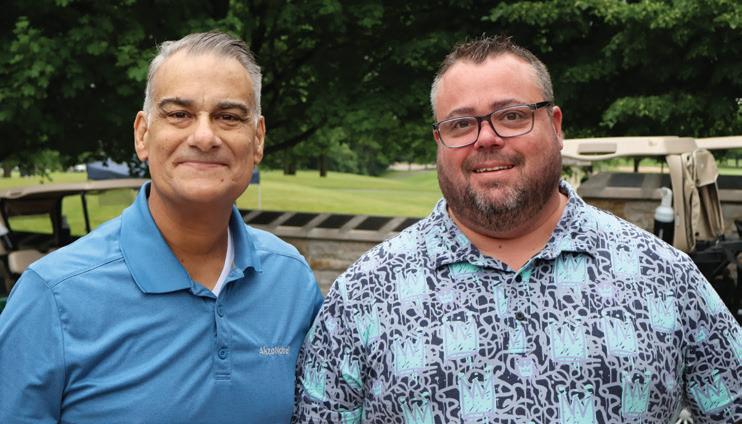
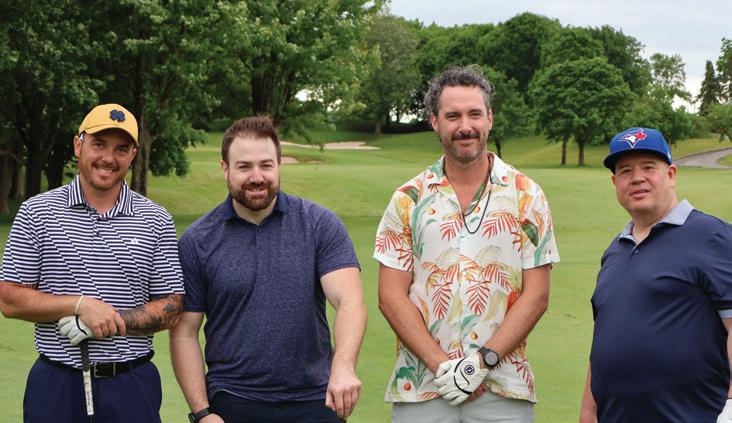
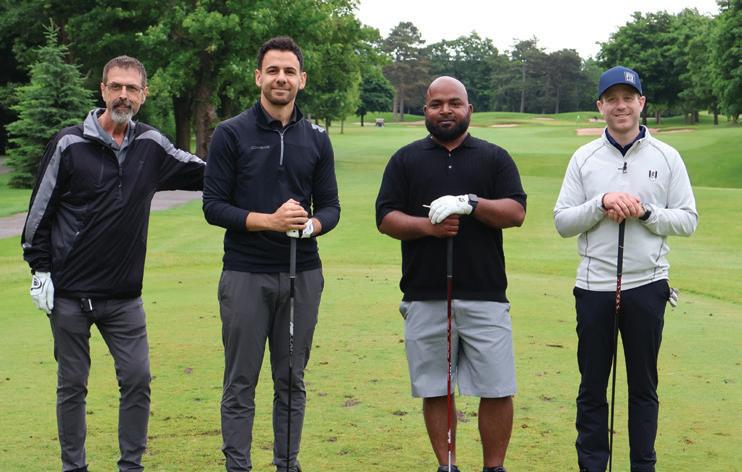

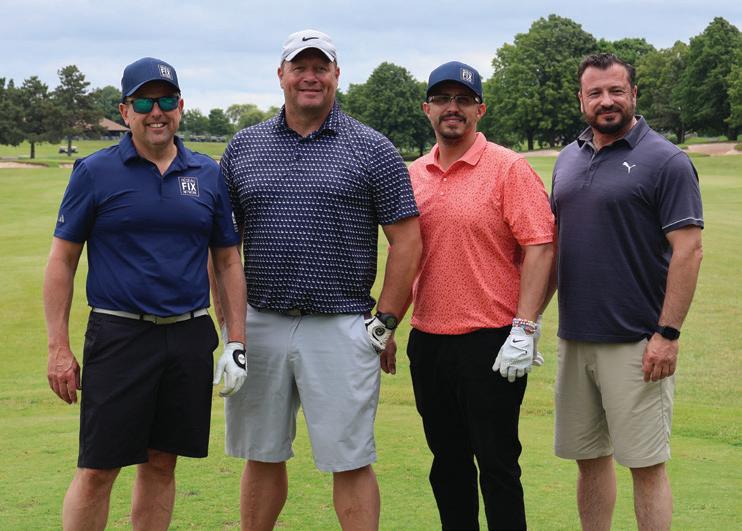
For many, the event served as more than just a golf outing. It was a long-awaited opportunity to reconnect face-to-face with industry peers, swap stories and share a few laughs between tee-offs and rain delays.
“It was a great day on the course with the Fix Auto team, industry colleagues and business associates,” said Johnny D’Ambrosio of Fix Auto St. Catharines, Welland and Niagara-on-the-Lake. “It was awesome seeing so many familiar faces and catching up with some great people. Beautiful course, great company—can’t ask for more.”
Although no one left with a prize from the hole-in-one contest, many departed with something better—the sense that their participation made a difference. And maybe a couple of new rain-soaked socks, too.
From raising funds for families in need to reinforcing the strength of the collision repair community, the 2025 Fix Masters Golf Tournament proved that even a cloudy day can shine when it’s filled with purpose.
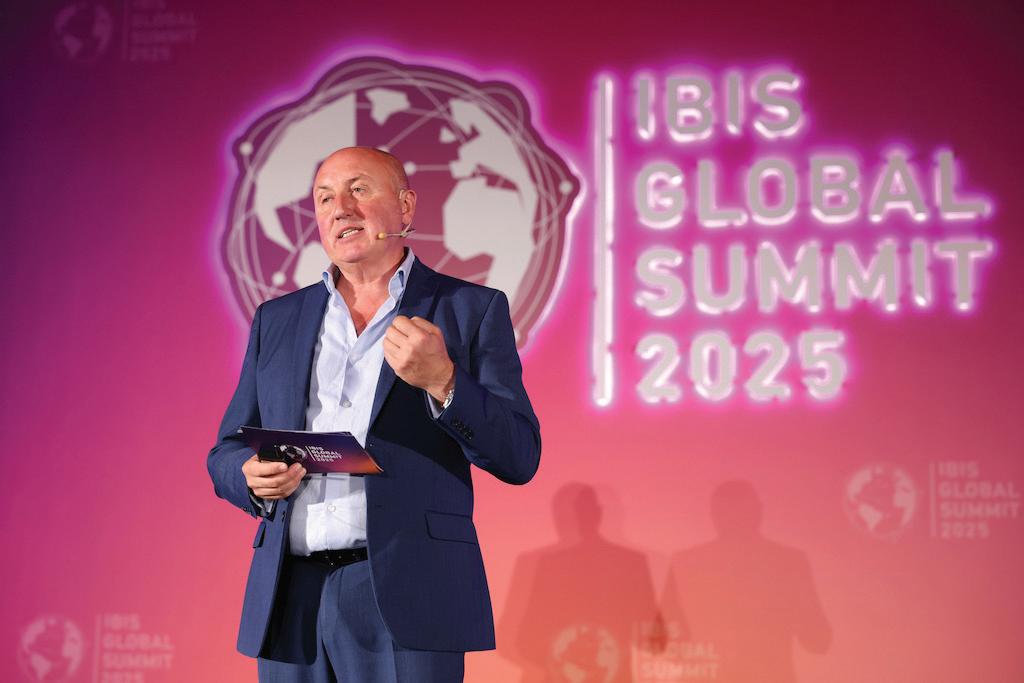

In Istanbul, where Europe meets Asia and minarets rise between centuries-old domes, the global collision repair industry gathered for the 2025 IBIS Global Summit—seeking direction in a world where borders may blur but challenges remain sharply defined.
Held June 24–26 at the Swissôtel The Bosphorus, the summit brought together more than 350 leaders from over 30 countries. With the theme “Shaping the Future: Leadership Through Collaboration,” the agenda reflected a sector on the edge of transformation—caught between rising expectations, volatile markets and revolutionary technologies.
From the start, it was clear the collision repair conversation has shifted. This year’s focus wasn’t just on operational efficiency or technician shortages—it was on geopolitics, artificial intelligence, sustainability and repairability. Economics professor Michael Cox warned of “mutually assured economic destruction” in a prolonged U.S.-China tariff standoff, while Turkish strategist Erda Gercek cautioned that redirected exports could harm emerging markets. The collision industry, they argued, is no longer insulated from global trade shocks—it’s embedded in them.
That complexity echoed throughout the leadership panels. Canadian executive Ryan Bruno of CSN Collision joined peers from South Africa, Germany and the EMEA region to examine how modern leadership must evolve. “Ultimately it’s about helping people adapt to change,” Bruno noted. “Perfection is often the enemy of progress,” added BASF’s Roar Solberg, while Charles Canning emphasized preserving culture during disruption. The tone was candid, the stakes clear.
Among the most pressing conversations was the question of repairability and the OEM’s evolving role. Bayram Sucuoglu of Ford kicked off day two by urging collaboration between manufacturers, repairers and retailers. “Customer care must come first,” he said. A follow-up panel with Toyota’s Stefan Van Beneden, Betag Innovation’s Dave Flockhart and others praised the industry’s pace of innovation. “We should be proud of our contribution to sustainability,” Van Beneden said.
Sustainability itself was redefined in an ESG-focused group session. Raya Makawi called it “a growth opportunity,” not a cost. Fabien Boschetti of Axalta warned that “waiting for regulation will be too late,” while Chris Daglis urged attendees to “create your own future.” Where ESG was once a box to check, it’s now a competitive differentiator— and that shift was palpable.
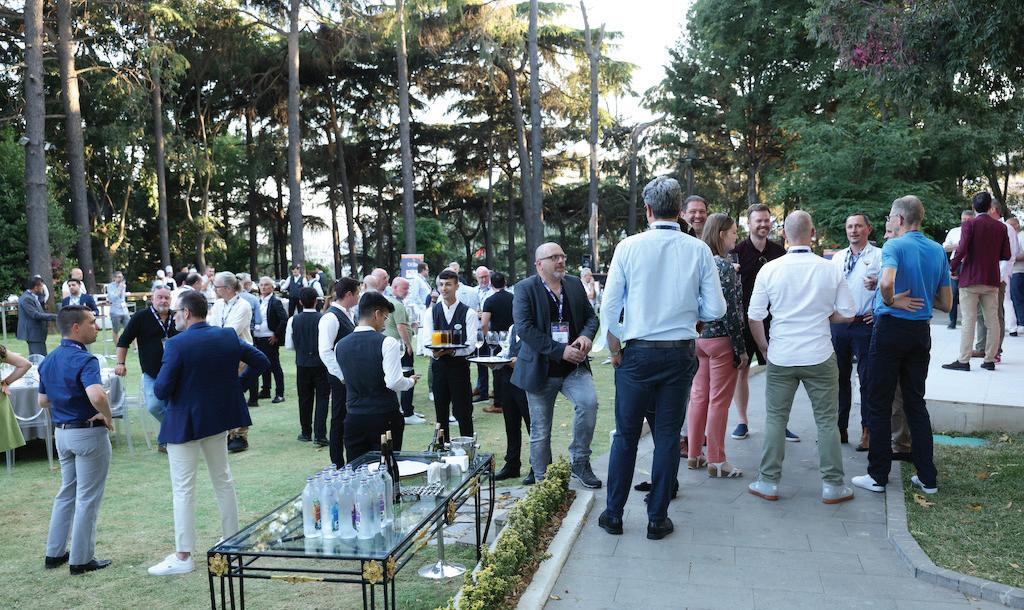
This year’s focus wasn’t just on operational efficiency or technician shortages—it was on geopolitics, artificial intelligence, sustainability and repairability.
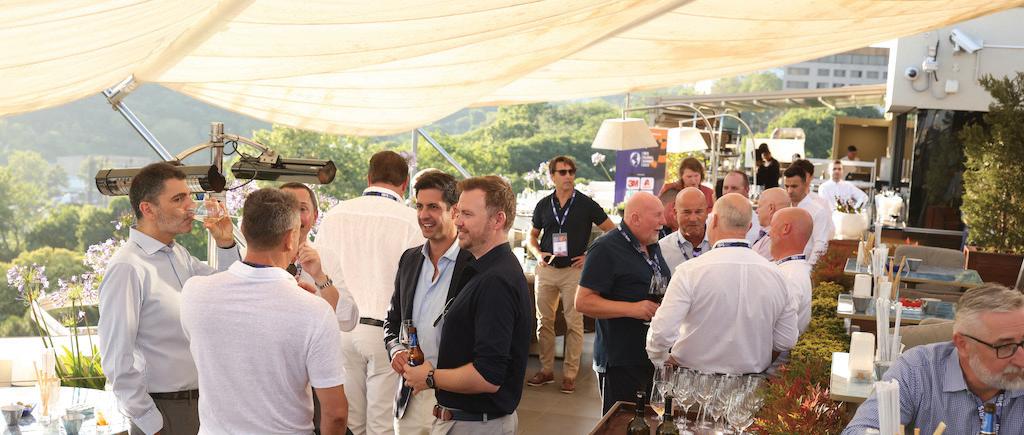

Technology, meanwhile, dominated the middle of the conference. In back-to-back sessions, Sharad Bapat of Dscvry AI and Maher El Ghailani of Solera mapped out what a meaningful AI integration looks like. “Start slow,” said Bapat. “It’s already around you—use it to improve process.” El Ghailani’s advice was strategic: build a clear business case, audit your data, pilot modestly and measure relentlessly. “If we don’t use AI,” he warned, “we will disappear.”
The summit’s final session zeroed in on insurability in a world of EVs and automation. Eman Mojali of Bahrain National Insurance called AI “a universal opportunity,” while Sinem Gurun of HDI Sigorta emphasized customer transparency and traceability. Michael Lastuka of State Farm added: “We’re willing to go the extra mile to understand these vehicles and support our customers.”
Throughout the week, IBIS provided moments of cultural reflection and informal exchange—whether over traditional Turkish coffee, courtesy of RS Automotive Group, or during the gala Sundowner Reception with Axalta. These touchpoints underscored the human side of the business—reminding attendees that collaboration happens best not just in boardrooms, but between people, cultures and perspectives.
As attendees packed their bags and looked out over the Bosphorus one last time, the message was clear: collision repair isn’t just evolving—it’s global, interconnected and urgent. And whether you’re scanning a VIN in Vancouver or fixing a panel in Paris, your challenges—and opportunities—are increasingly shared.
The future of the industry, like the city that hosted its summit, sits between worlds. It’s what we do next that will define the road ahead.

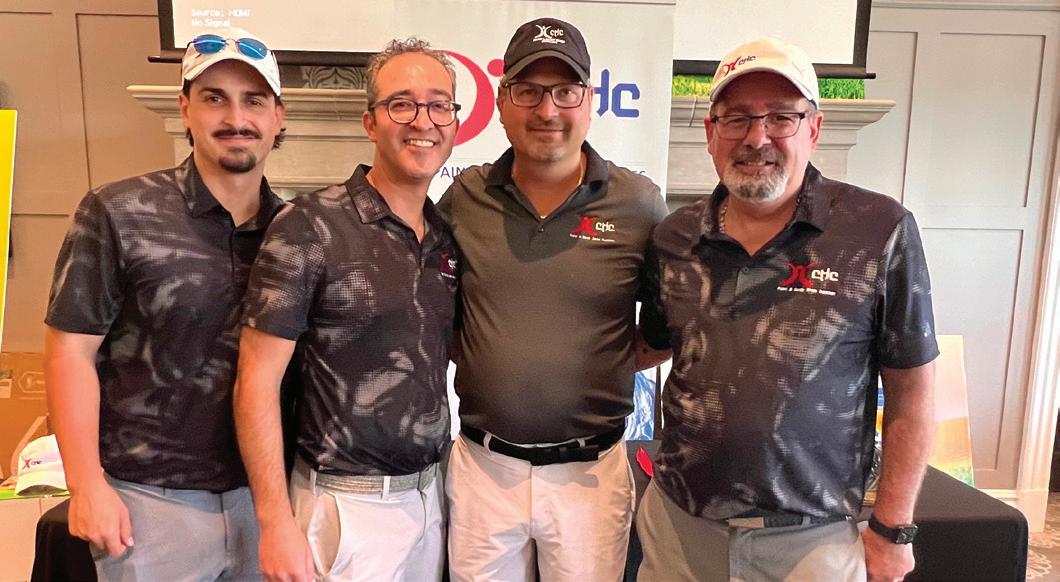
BY WILLIAM SIMMONS
There’s nothing like a game of golf to mark the official beginning of summer— especially when it includes camaraderie, sun, snacks, a little bit of friendly cheating and a whole lot of laughter.
That was certainly the case at the annual CHC Paint and Supplies Golf Tournament, held at the scenic Cedarbrae Golf Club in Scarborough, Ontario. With the first foursome teeing off at 9 a.m. sharp, more than 140 guests—including suppliers, collision repair shop owners, managers and a few mysteriously unregistered “golfing experts”—were greeted with warm sunshine and even warmer hospitality.
From the very first drive, the day was about more than just golf. It was about community.
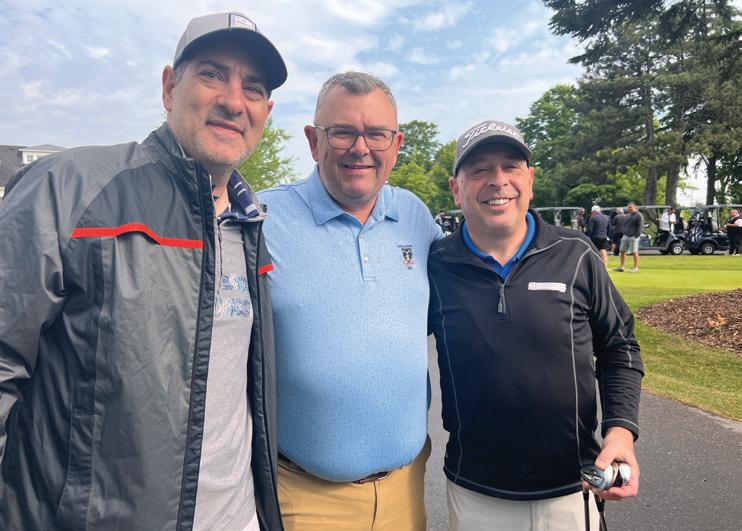
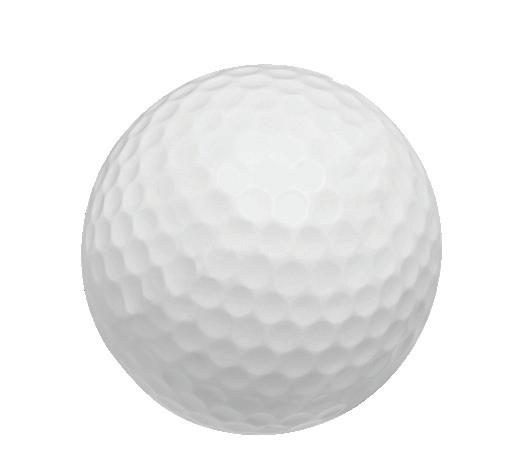
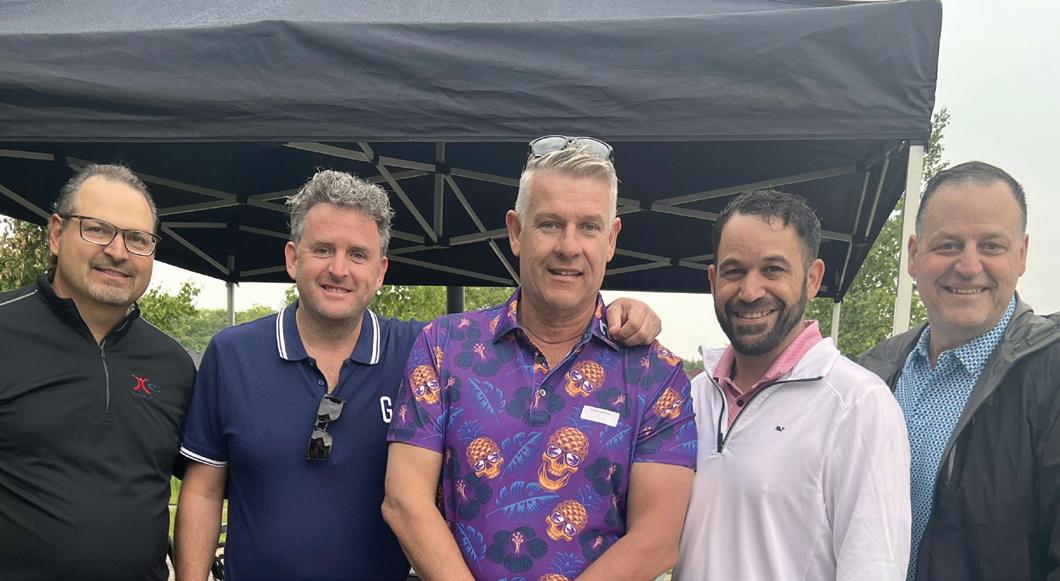
“We always say it’s not about who wins—it’s about who tells the best story afterward,” laughed Manny Pacheco of CHC Paint and Supplies, as he greeted participants over coffee and breakfast sandwiches.
That said, there were a few ringers in the crowd who came to play. Reports of precision putting and long drives floated across the course—along with the odd rumour of mulligans quietly multiplying. But no one seemed too concerned. “If you’re not improving your score by creative means, are you even at a supplier tournament?” joked one golfer between swings.
By midday, the sun was high, the scorecards were... creative and the laughter echoed from tee to green. Some players tried to keep a straight face while “coaching” their teammates
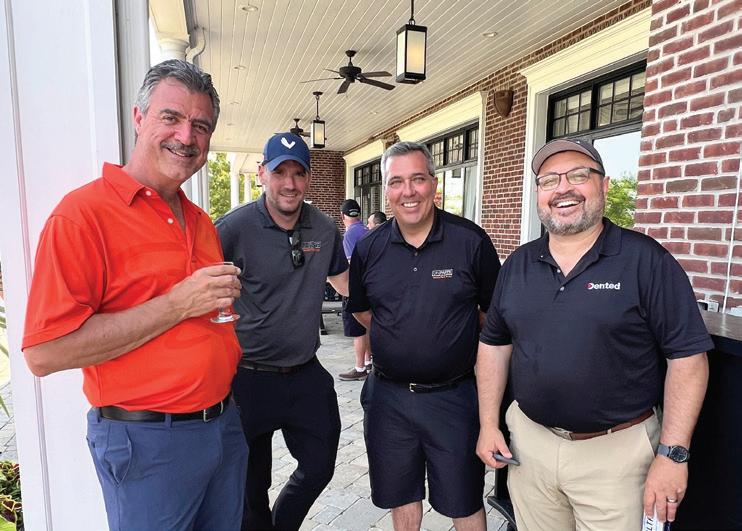
on wind direction and grass grain. Others were more focused on locating their fifth lost ball before lunch.
Back at the clubhouse, the CHC team had set up a raffle with amazing dinner offering the perfect setting for post-game war stories. Bragging rights were handed out just as generously as door prizes, and no one left empty-handed.
Attendees were quick to agree. “It was one of those days where you remember why you love this industry,” said Mike Savage of 3M. “You’ve got great weather, great golf and a chance to connect with shop owners, managers and suppliers in a setting where no one’s rushing a deadline or chasing a part. Just good vibes and a lot of laughs.”
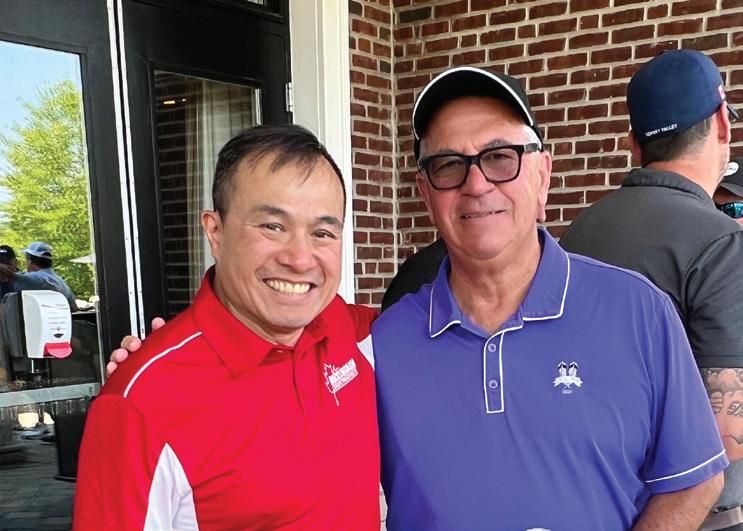
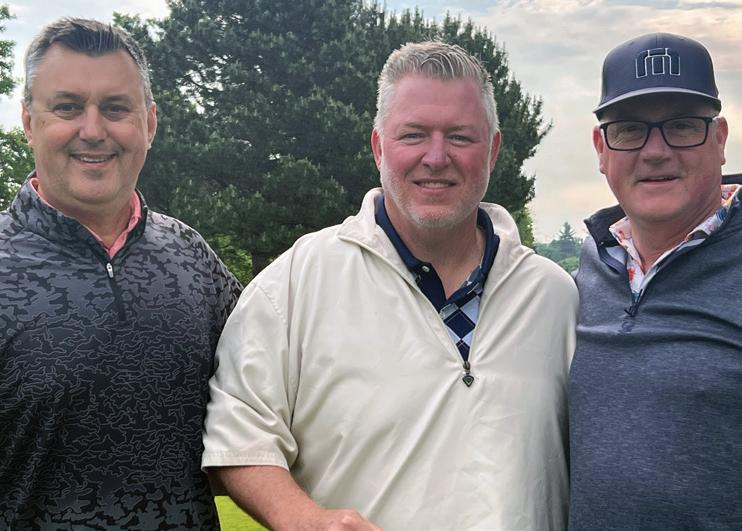
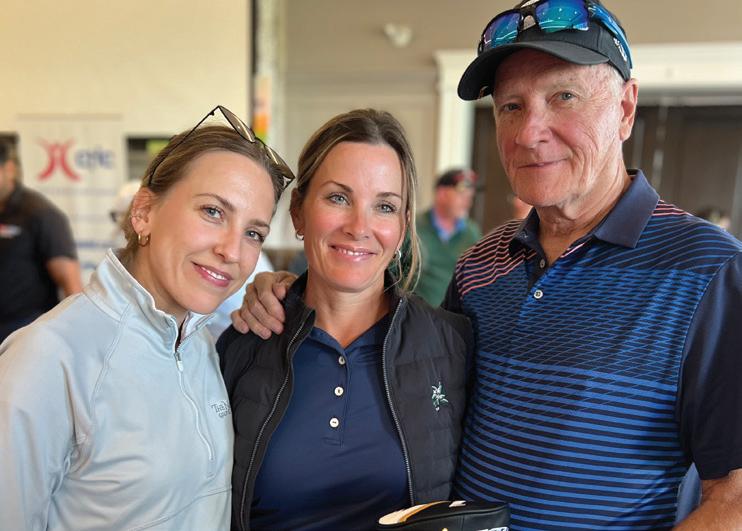
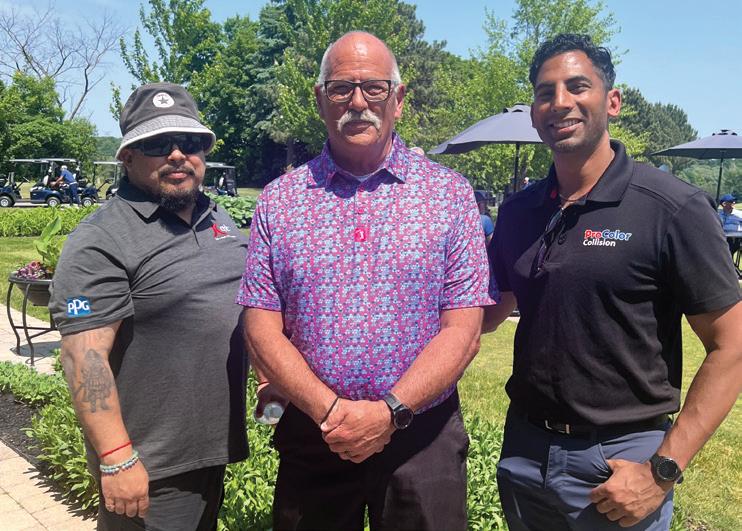
The real prize, of course, was the chance to connect. With the industry as busy as it’s ever been—and with challenges ranging from parts availability to technician shortages—it’s rare to find a moment where everyone can pause, chat and laugh over shared experiences.
“Events like this remind us how tight-knit and fun this industry really is,” said Pacheco. “We’re out here because we genuinely like working with each other. Even if someone cheats their way to a birdie.”
“What an unbelievable day on the course with Pino and his team from CHC—fantastic golf, great weather and the chance to connect with some of the best people in the industry.
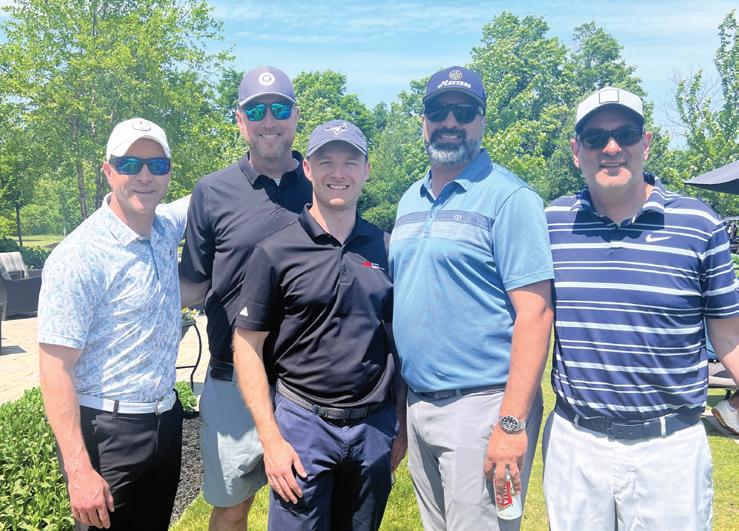
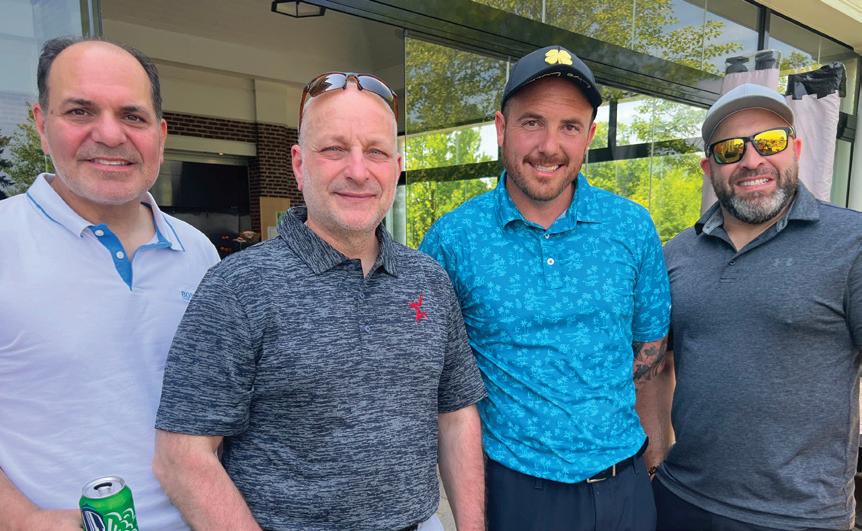
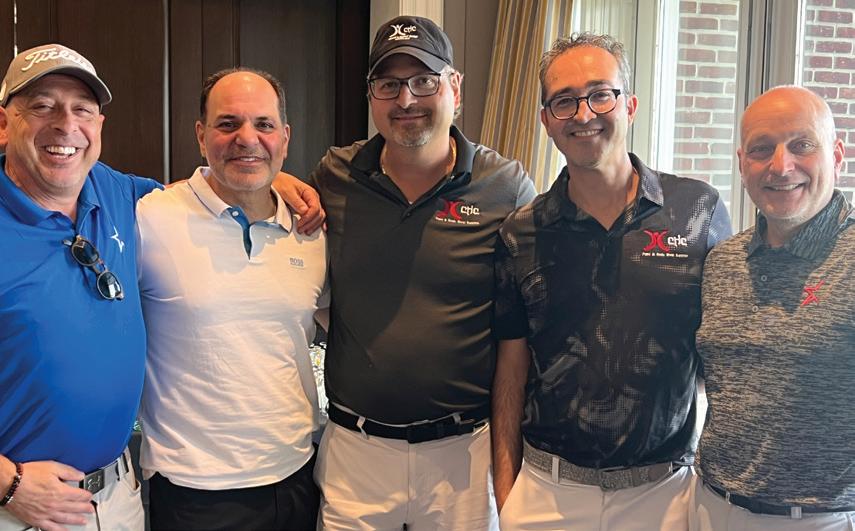
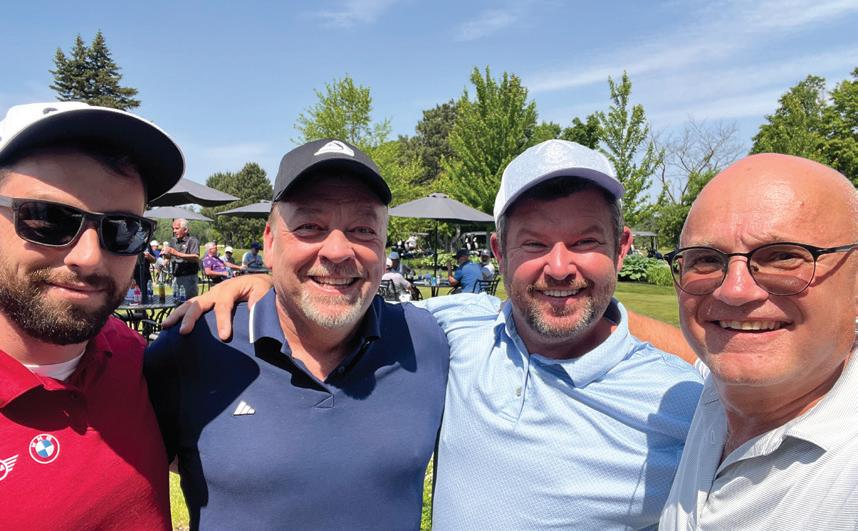
Days like this remind us why relationships matter,” said Dave Foster, senior vice president of operations at CARSTAR Canada.
Pino Chiappetta, president of CHC Paint and Supplies, summed it up best: “It’s quite an honour to have so many great people support this event. I mean, where else can you wear plaid shorts, swing a club like a maniac and still be considered a professional?
We’re truly lucky.”
According to PPG Canada’s Keith Chapman, “The golf tournament is a fantastic opportunity for everyone in the collision repair industry to step away from the daily pressures and connect in a relaxed, friendly
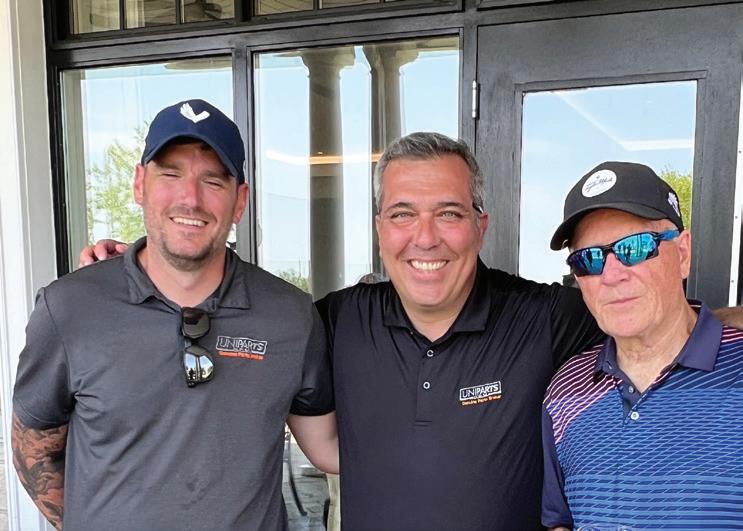
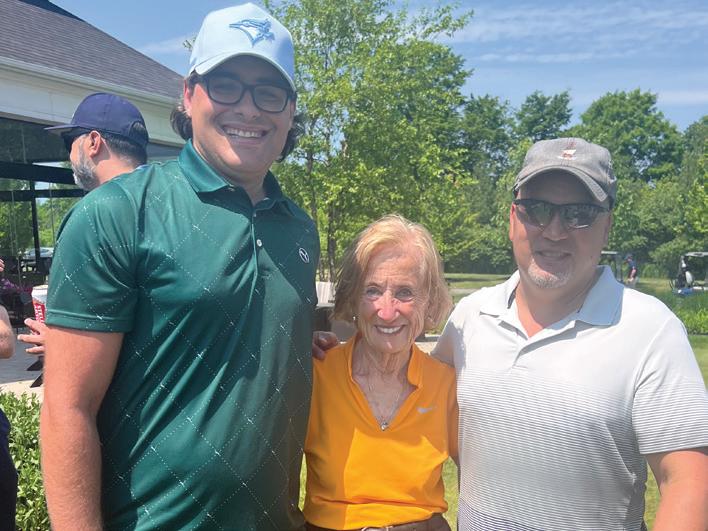
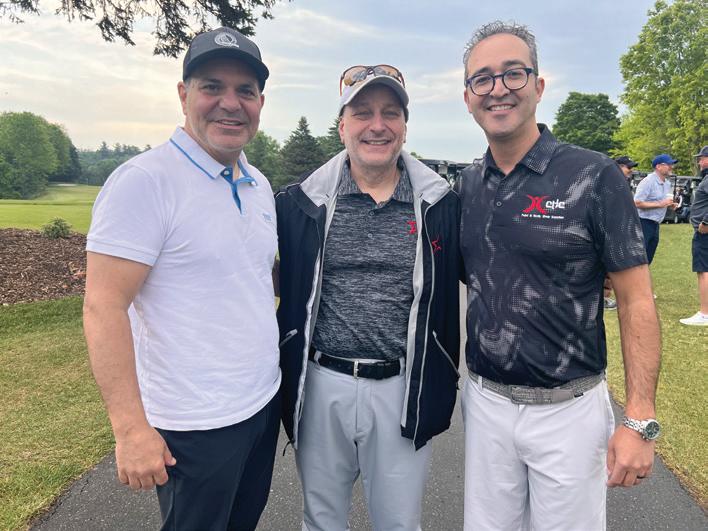
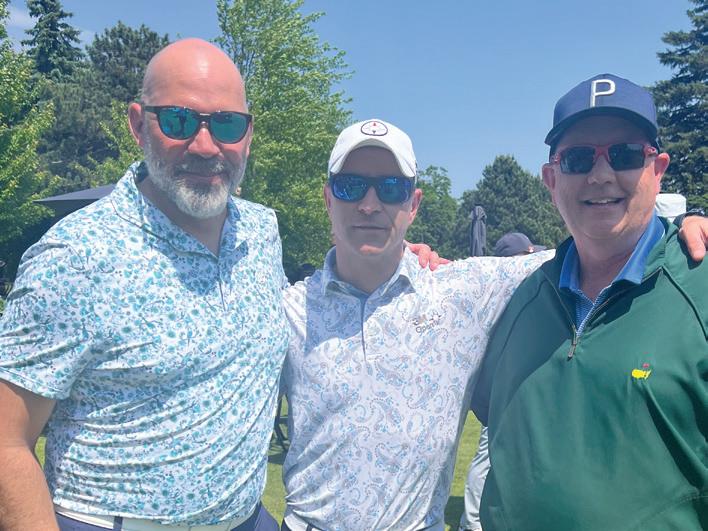
setting. It’s about more than just the game —it’s about building relationships, sharing laughs and celebrating the community that makes this industry so resilient and dynamic. And truthfully, no one does this better than the team at CHC.”
By the time the final scores were turned in (some more believable than others), the sun had dipped just enough to signal the end of a perfect day.
Thanks to CHC Paint and Supplies for putting on an event that hit every note: great weather, great food, great company—and yes, some pretty decent golf. As for who won? Let’s just say... everyone.
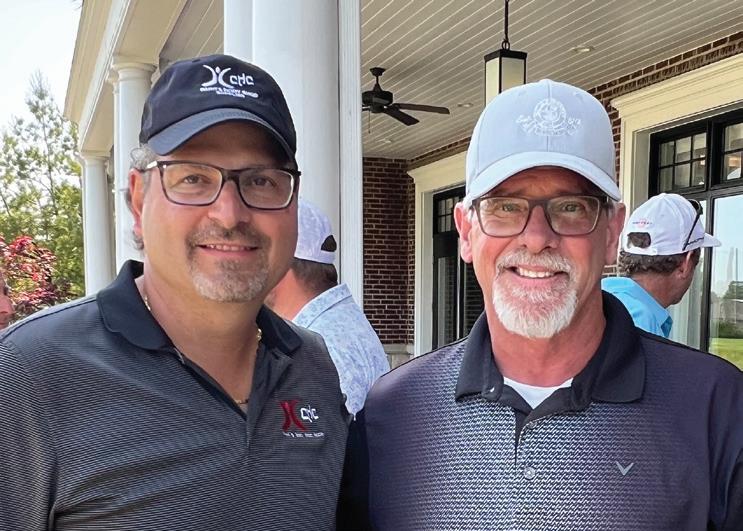
BY SADIE MCDONALD
Enterprise Mobility held its 27th annual charity golf tournament on July 8, raising $145,000 as part of their ongoing efforts to combat food insecurity in Canada. Stakeholders from Canada’s insurance and replacement industry came together to raise funds and awareness for Food Banks Canada, a key partner of Enterprise’s Fill Your Tank program.
In addition to the tournament raising the most successful amount yet, Enterprise made a 50 percent match towards Food Banks Canada’s After The Bell program, which provides children with nutritious meals during the summer when school-centred support is not available.
Enterprise Mobility’s Fill Your Tank program has been fighting hunger by providing funding for local food banks and key partner organizations in North America and Europe since 2016. The Fill Your Tank program intends to donate $30 million to Food Banks Canada by 2030.
Enterprise Mobility partners attended the event and the golf tournament was followed by a reception and remarks from Enterprise Mobility’s executive team. Food Banks Canada has been addressing food insecurity for 40 years, sharing more than $829 million in food support and $245 million in funding since 2010.
“Food insecurity remains a critical issue in towns and neighbourhoods across Canada, and often does not get the attention it rightly deserves,” said Jennifer Everett, vice president of sales, replacement & leisure division Canada at Enterprise Mobility. “We’re thrilled with the support we’ve received from our partners and sponsors year in and year out at this event as we look to further our support of Food Banks Canada’s overall mission.
“It is nice to see everyone getting together to support a great cause,” stated Sonia Bouthillette, vice president of sales and operations in Canada for Fix Network. “There is no single banner: everyone is just getting together.”
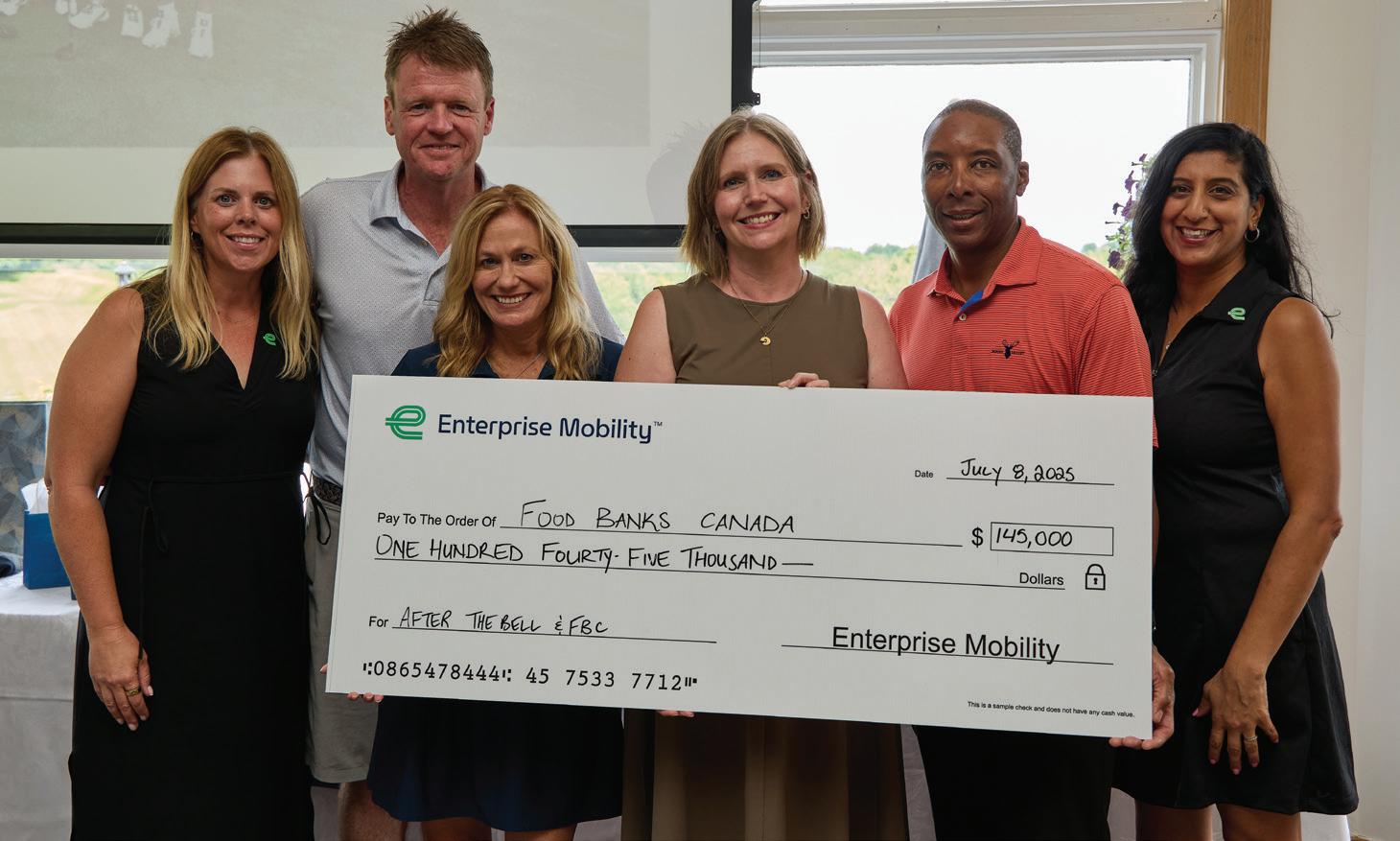
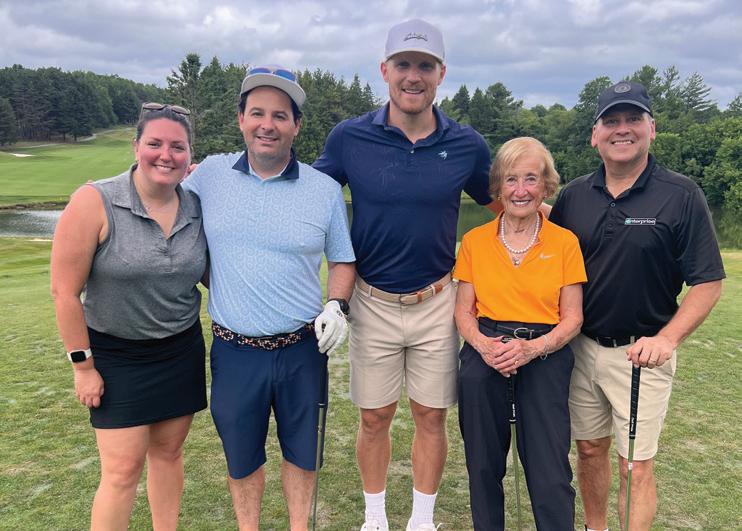
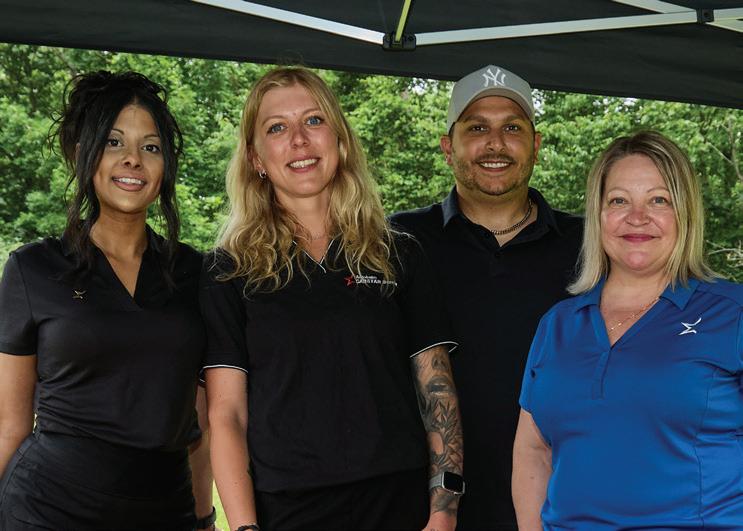
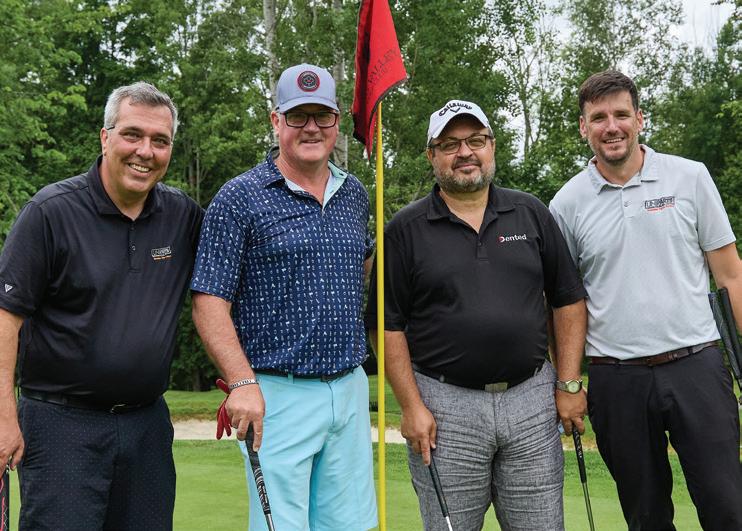
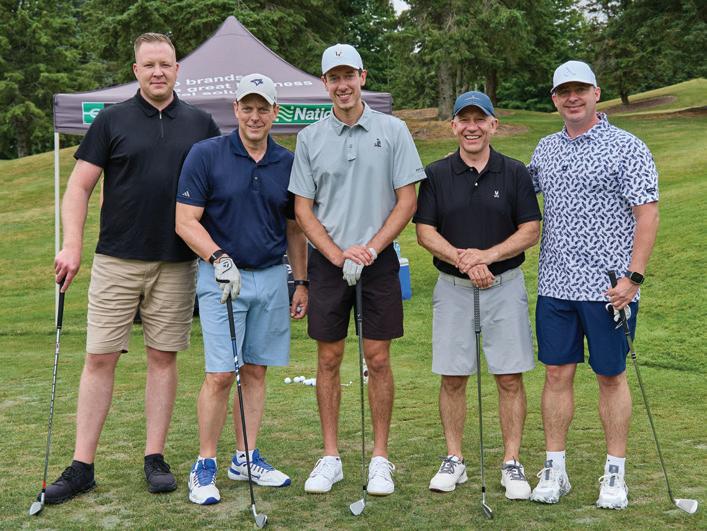
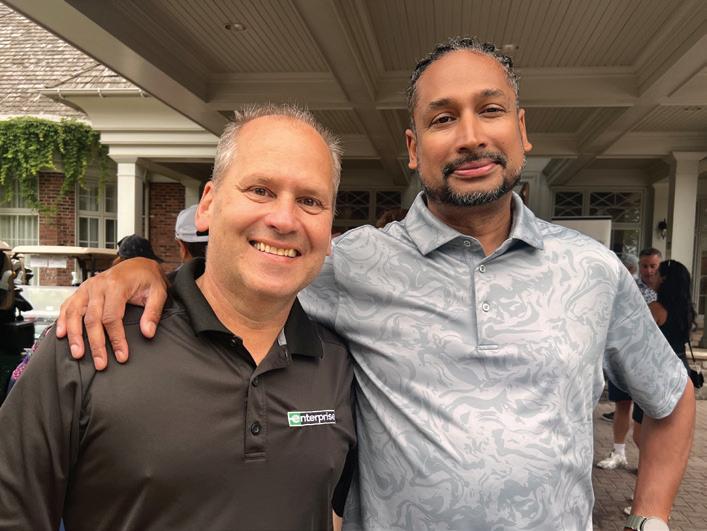
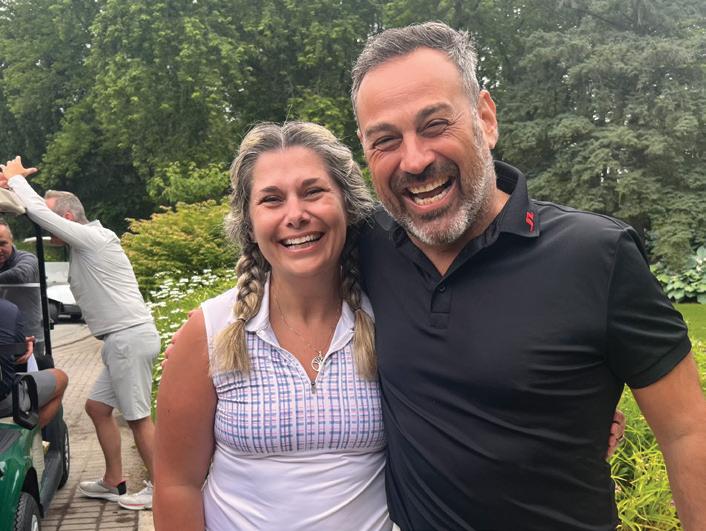
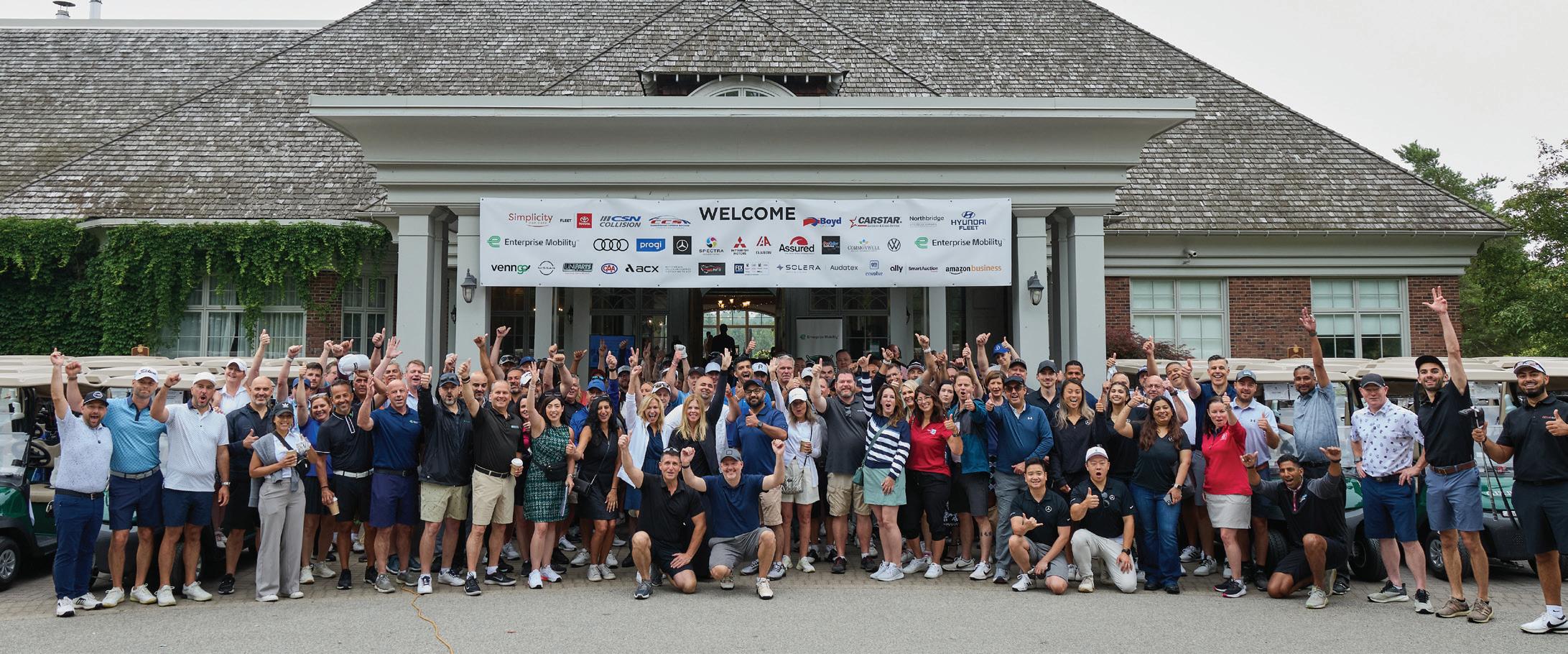
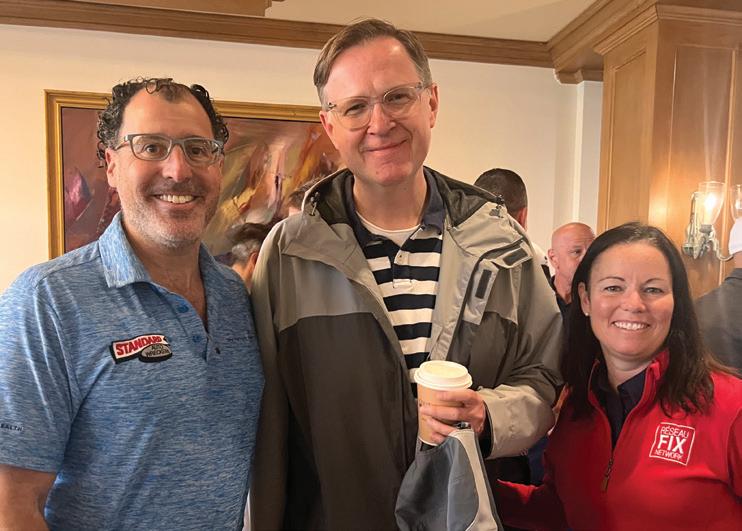
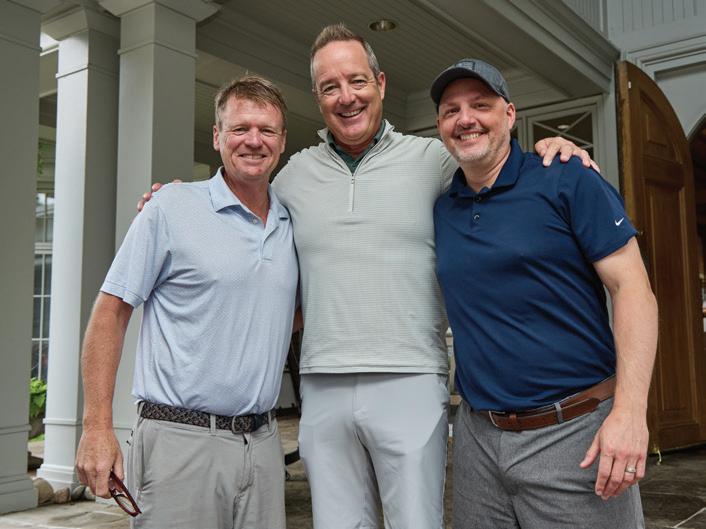
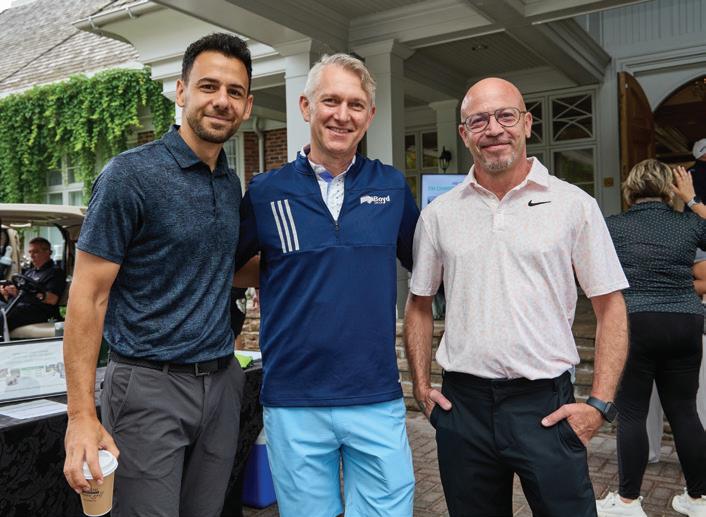
15–16 September 2025
Lienzo Norte Conference Center, Ávila, Spain
IBIS returns to Ávila for a third time on the 15–16 Septembe r in partnership with CESVIMAP, to offer an extraordinary platform for collaboration and innovation. Register today for this world class event, and the opportunity to network with top industry leaders covering both the Spanish and Portuguese collision repair markets. For more information, go to www.ibisworldwide.com
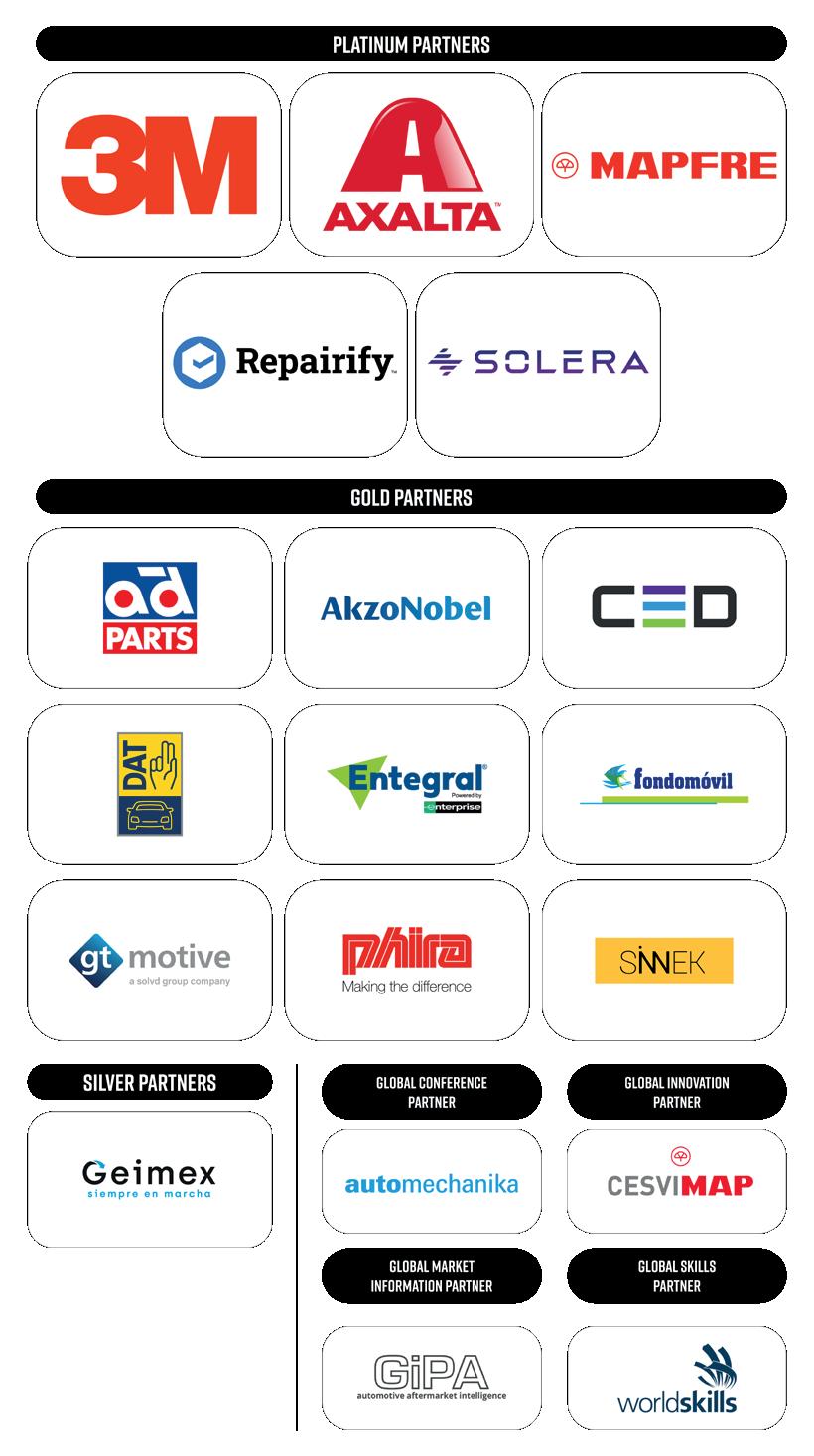
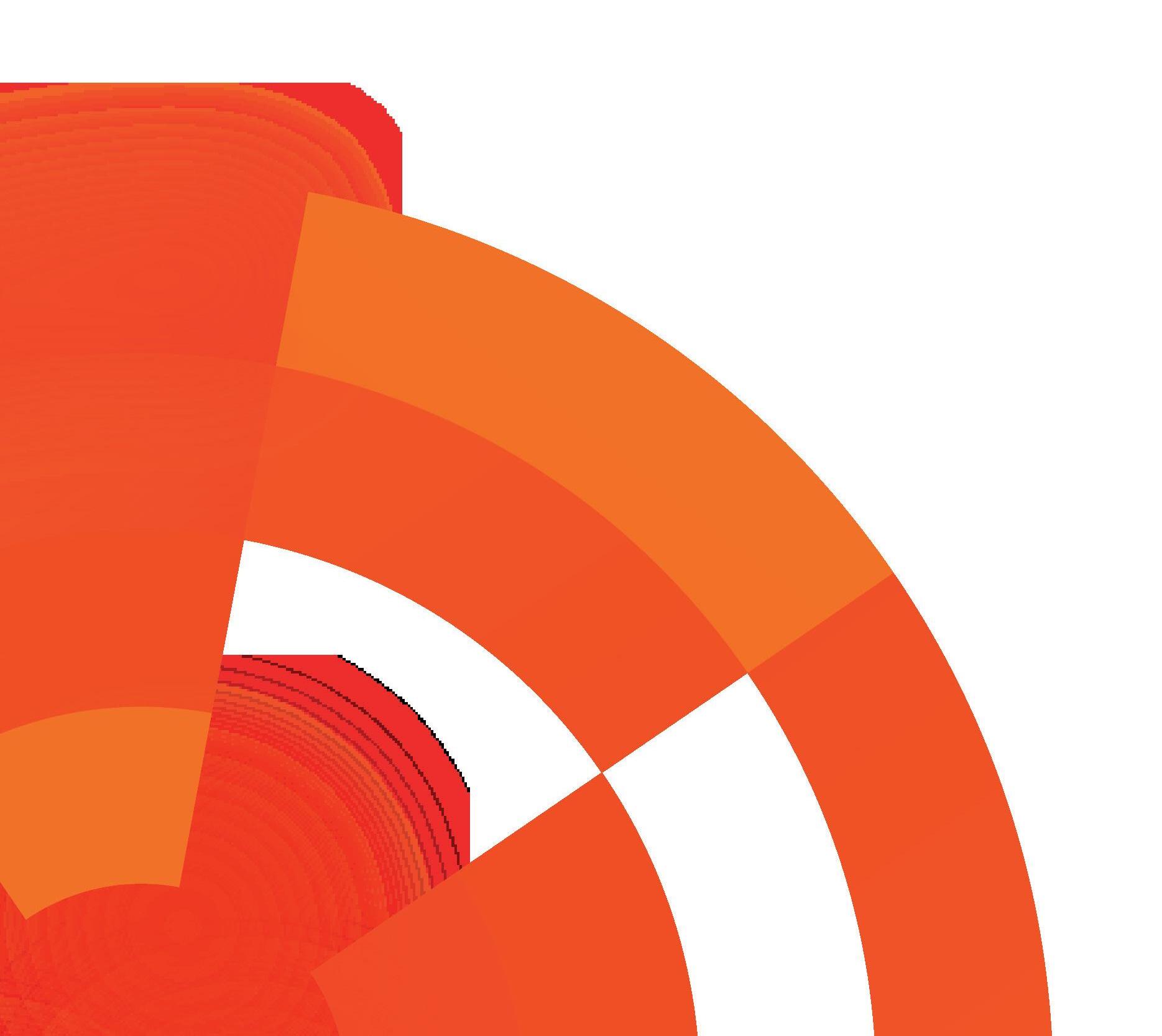

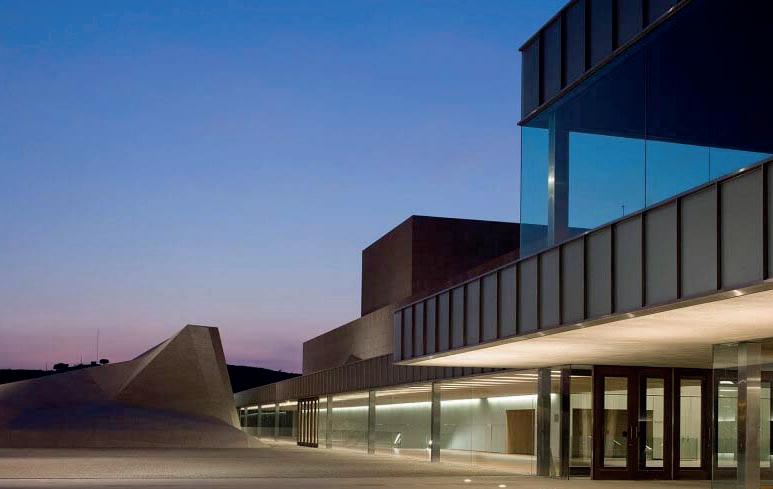

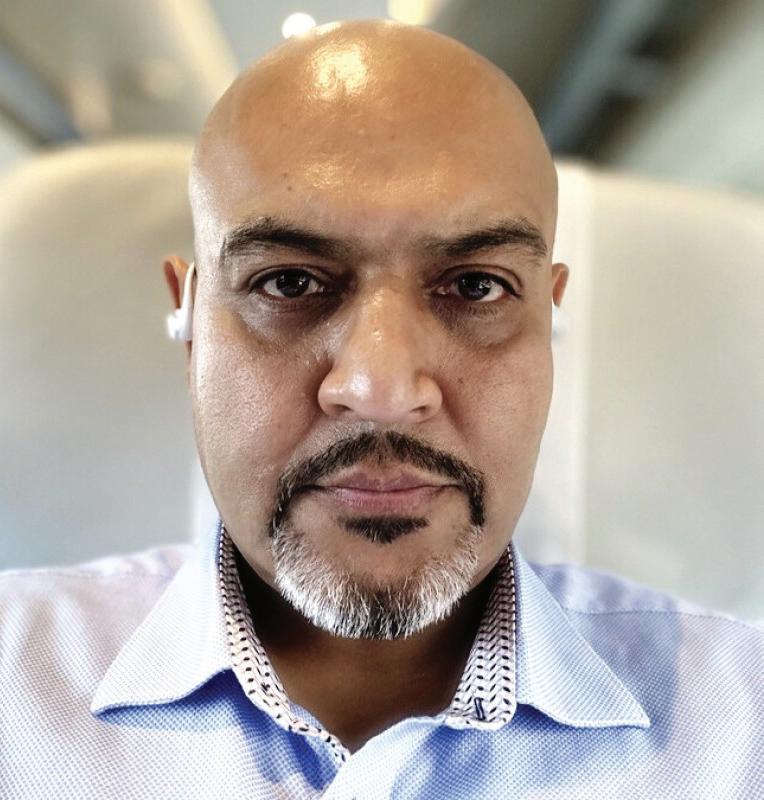
At the 2025 IBIS Global Summit in Istanbul, artificial intelligence took centre stage in conversations about the future of the collision repair industry. One of the speakers leading that dialogue was Max Ali, a seasoned expert in AI-driven estimating solutions. Following his presentation on how AI is transforming real-world repair workflows, Collision Repair caught up with Max to dive deeper into the industry’s response, the biggest misconceptions around AI, and what a truly intelligent repair process might look like.
Collision Repair magazine: You recently spoke at the IBIS Global Summit in Istanbul about AI in the collision industry. What was the feedback like, and what were your key takeaways?
Max Ali: The feedback was very encouraging. Attendees found the session informative and appreciated the opportunity to understand where AI is practically delivering value today and how it’s evolving. There was a real appetite to move beyond the buzzwords and look at how AI is being applied on the ground.
My key takeaway was that while there’s strong interest, there’s still a lack of awareness around just how many parts of the repair journey AI can enhance—especially in terms of integrating it into the traditional estimating process.
CRM: There’s been a lot of industry talk about AI in recent years. What’s the most common misconception you hear?
Ali: The biggest one is that AI will replace human estimators. That’s not the case. What AI is really doing is helping to alleviate the increasing pressure on estimators, especially as the industry faces a shortage of experienced professionals and a slow pipeline of new talent. AI can automate lower-complexity, repetitive tasks, giving estimators more time to focus on the more nuanced, highvalue decisions. It’s a tool to support—not to substitute.
CRM: Do you see a future where estimating becomes fully ‘human-less’? If so, when and under what conditions?
Ali: Yes, for certain types of claims— particularly low- to medium-impact and cosmetic damage—we’re already close to that point. AI is advanced enough to handle these scenarios with minimal to no human input.
But for full autonomy to become the norm, we’ll need continued improvements in accuracy, seamless integration with insurer and repairer systems, and broader trust in AI-generated assessments. That said, the real potential isn’t just in automation—it’s in changing how we approach the repair process altogether.
CRM: What do you mean by changing the process? Can you elaborate?
Ali: Traditionally, everything starts with the estimator. Only after they’ve seen the vehicle
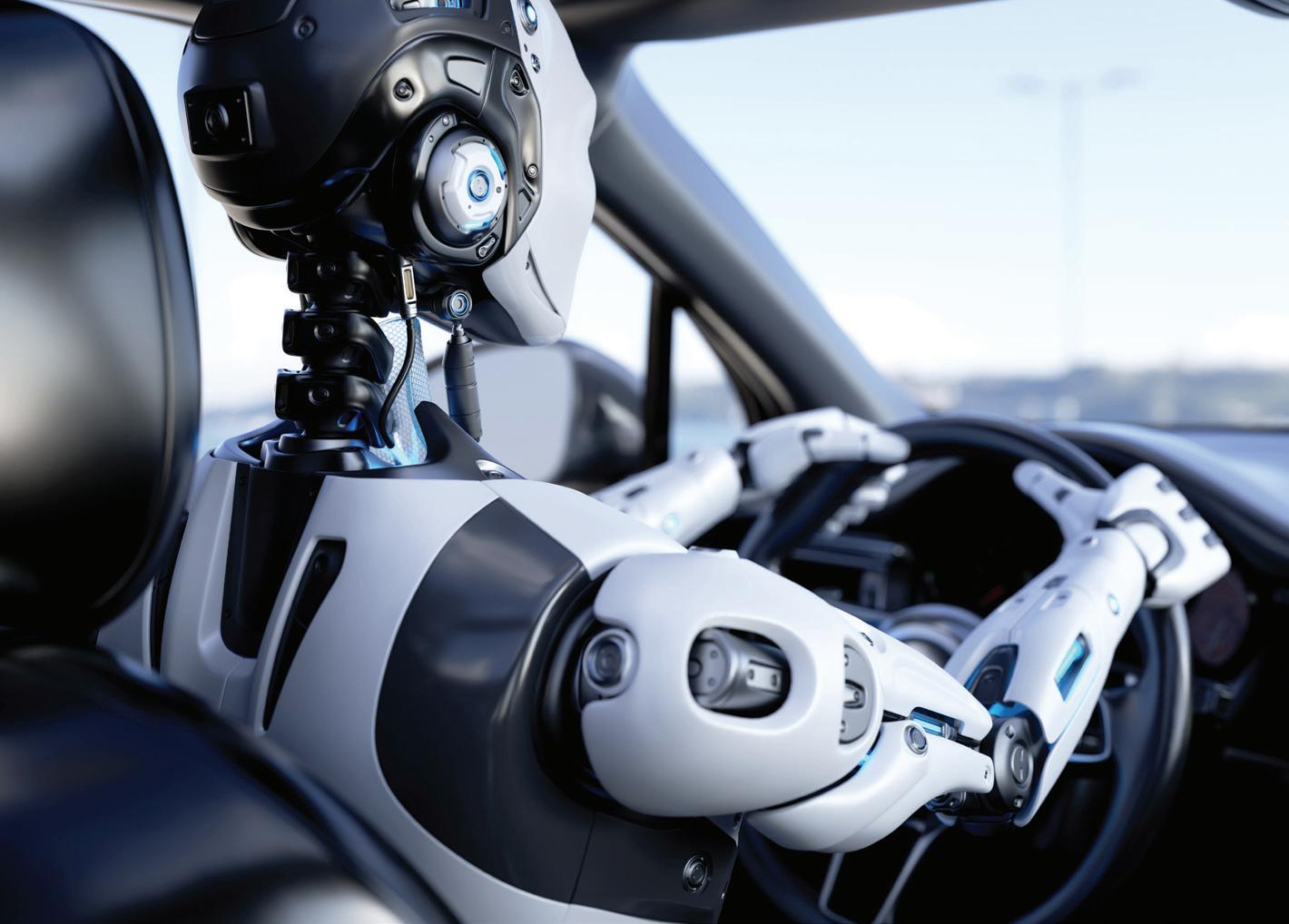
This pre-estimate capability isn’t just faster; it’s smarter. It’s one of the most overlooked benefits of AI, yet potentially one of the most impactful for efficiency, cycle time and customer satisfaction.
CRM: In your view, who has best captured the AI message in this space—both in vision and execution?
Ali: Having worked in this industry through its major transitions—from paper-based estimating to digital platforms and now AI—I’ve seen many approaches.
What makes Tractable different is our blend of industry experience and AI science. We don’t just train models on historical data; we design them to reflect real-world decisions made by experienced professionals.
That human grounding ensures our AI doesn’t just “guess” damage—it understands it in the context of repairability and workflow. It’s that commitment to practical, usable AI that sets our vision apart and keeps us aligned with the real needs of the industry. and written the estimate can repair planning, parts ordering and scheduling begin. But AI allows us to rethink that flow. A customer, the recovery driver or even front-of-house staff can upload photos
generate an initial damage assessment that helps pre-load the work schedule and initiate parts procurement—often within minutes.















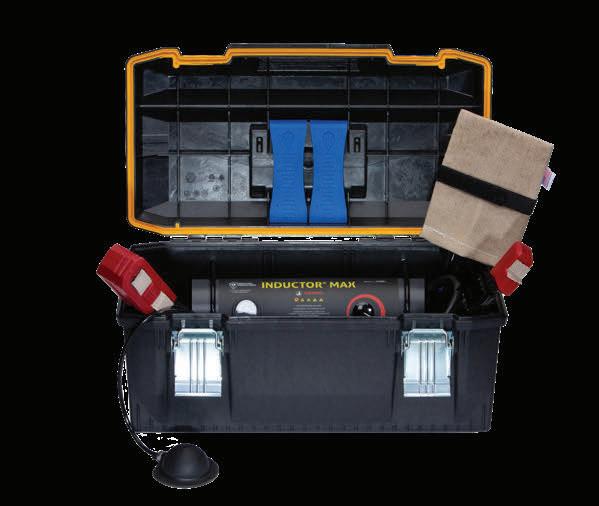
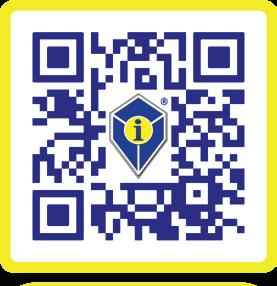


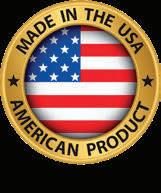
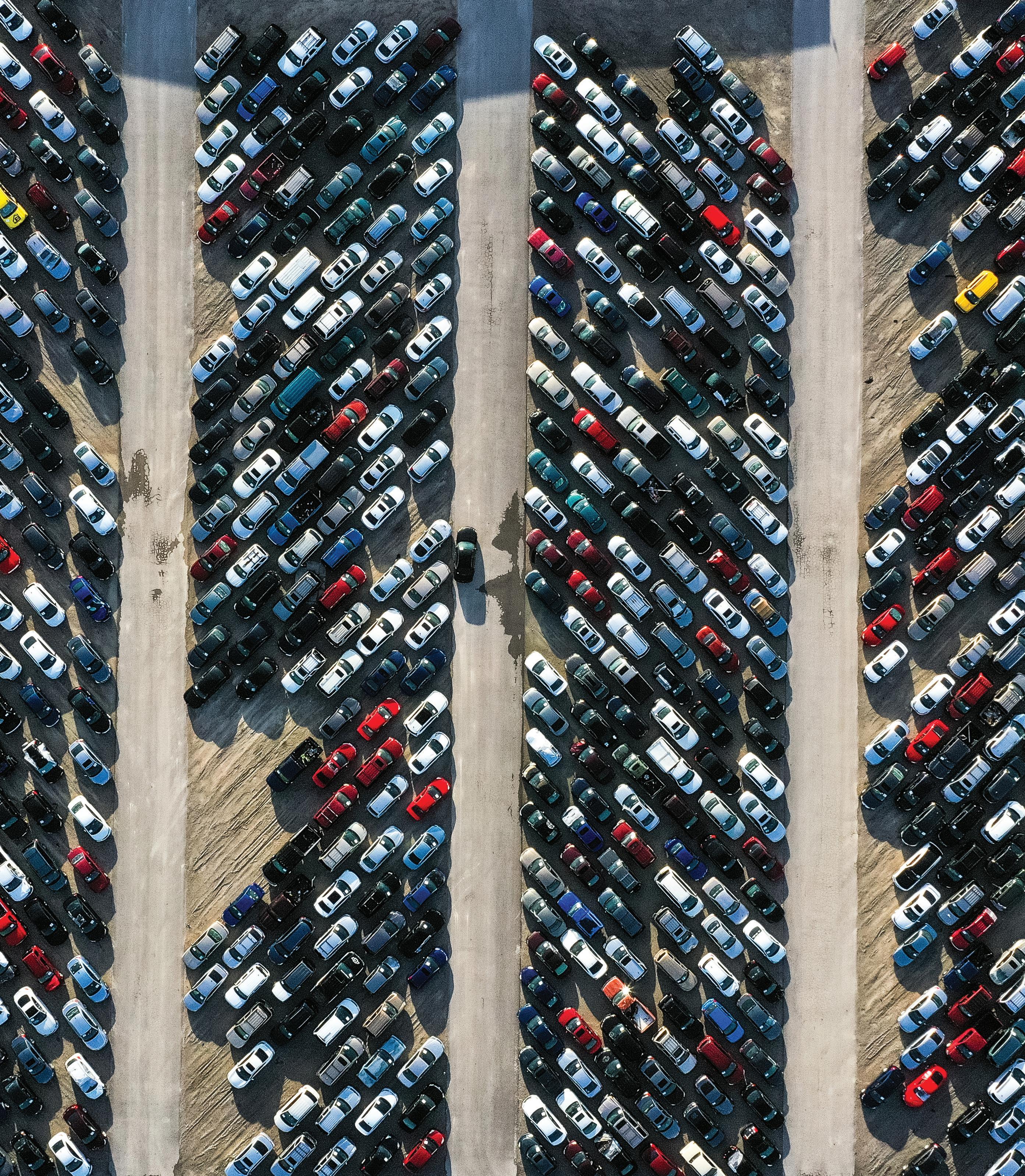
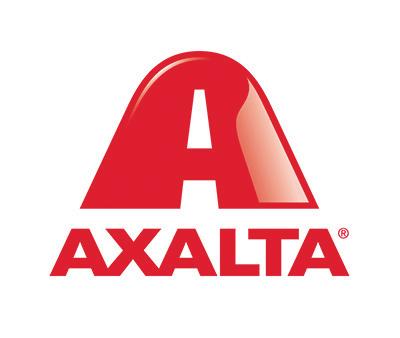
Proper surface preparation is a critical step in achieving high-quality results in automotive refinishing. Whether restoring a vehicle’s appearance or completing collision repairs, technicians rely on effective cleaning and preparation methods to ensure coatings adhere correctly and perform as intended. However, regulations around product use—particularly those targeting environmental impact—have introduced additional layers of complexity.
The Canadian law on the concentration of volatile organic compounds (VOCs) in automotive refinishing products came into force almost 15 years ago, yet some confusion still remains about the correct preparation of surfaces to be repainted, especially when it comes to the surface cleaning operations.
There are three options for cleaning surfaces: soapy water, cleaners to remove stains and prepare surfaces for sanding and surface cleaners.
Soapy water is the first step, no matter what repairs need to be made. This removes any organic contamination that other products can’t (tree sap, insects, mud, calcium, etc.).
Anyone who has ever tried to remove a hand mark from a part that has been handled without gloves knows that only soapy water will effectively remove this type of contamination.
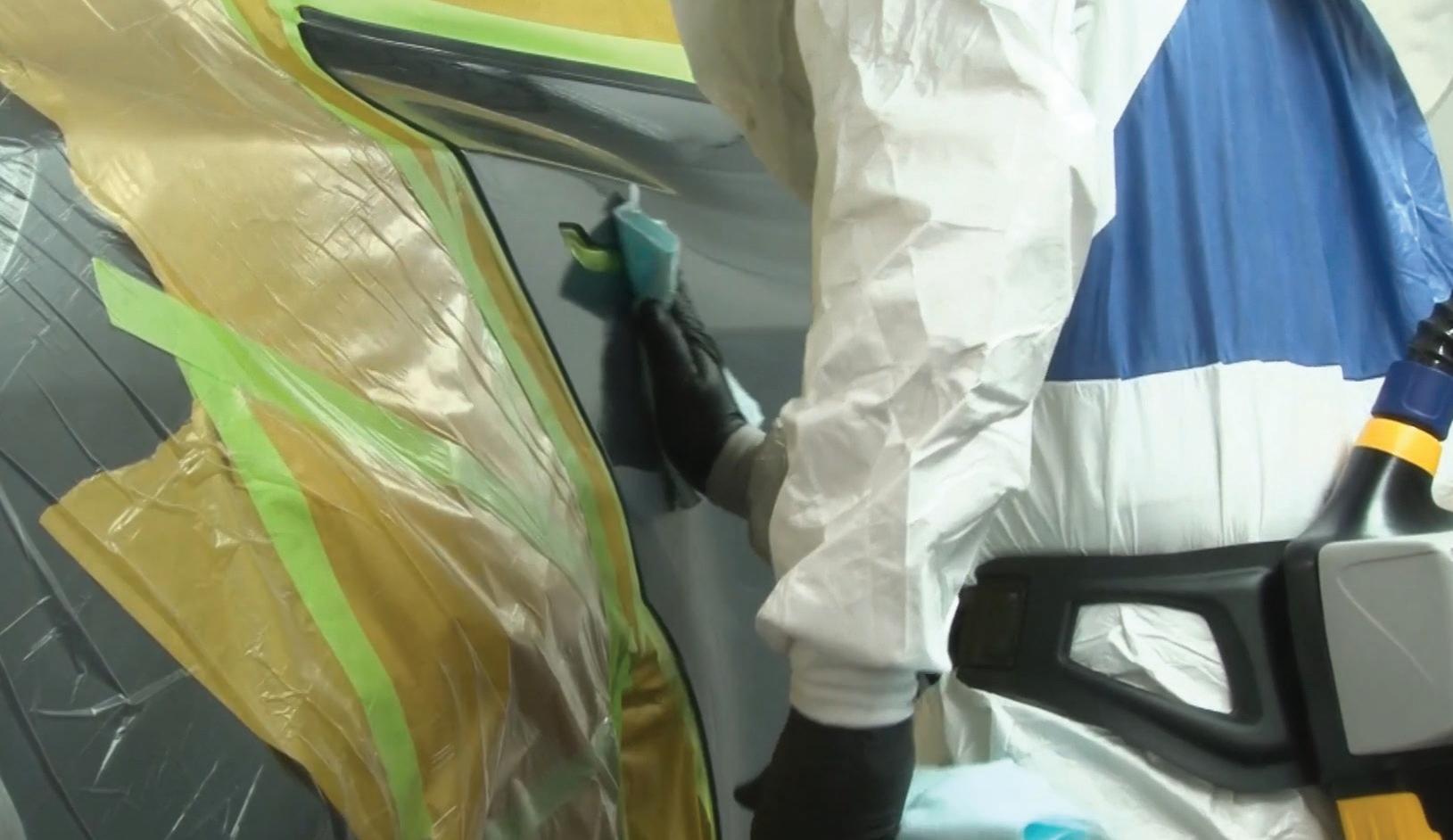
Pre-sanding cleaners are made up of solvents and there’s no maximum VOC limit in the regulations. They are be classified as degreasers. However, the regulations require that they be applied using a pump bottle (pressurized bottle) to limit the solvent evaporation in the air.
These cleaners can only be used before sanding, to remove tar stains for example. The following is part of the text in the legislation: Cleaning products in manual spray bottles used to prepare surfaces prior to sanding are not covered by the VOC regulations.
This is where confusion persists in many workshops. Many paint technicians believe that if they are still on sale, they can still be used as a final wash before applying colour, for example. Another belief is that if the solvent cleaner is in a spray bottle, then they can be used as a surface cleaner for all operations, which is not true.
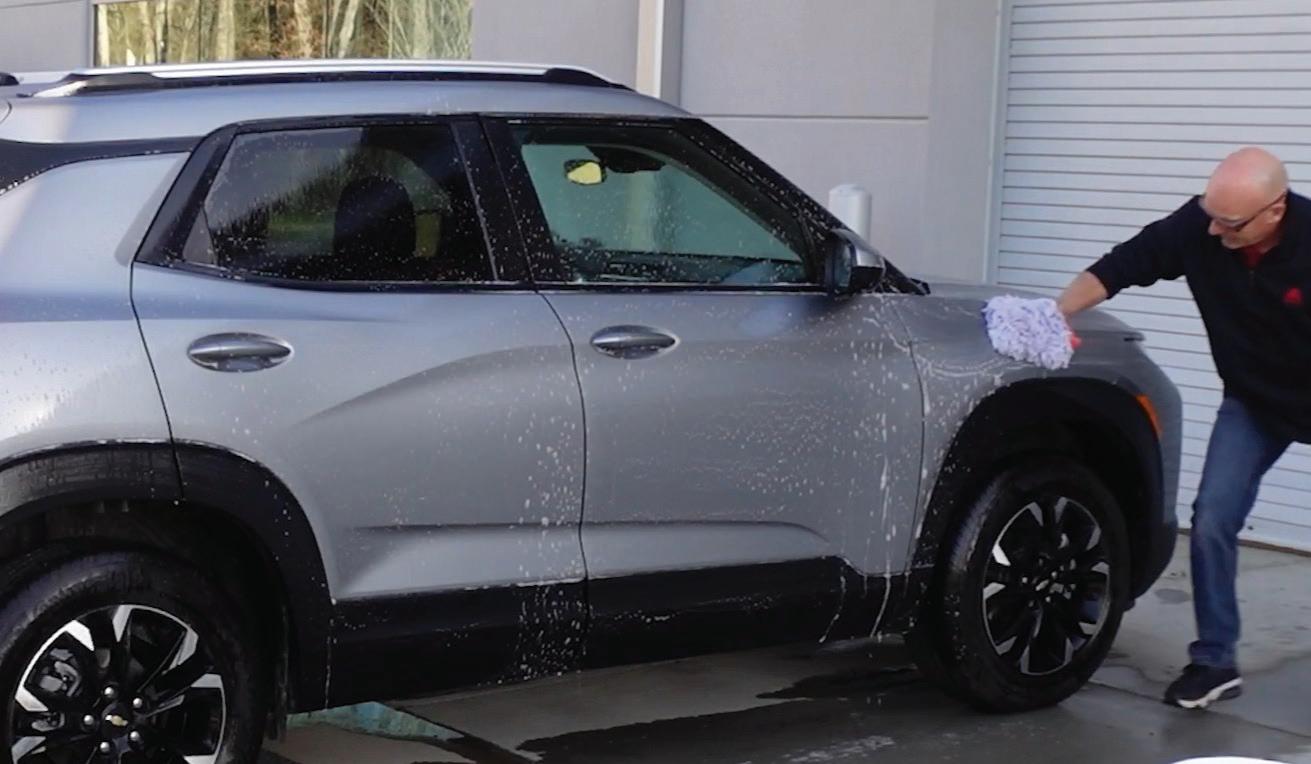
The regulations define surface cleaners as follows: A product used to prepare motor vehicle surfaces for the removal of foreign matter prior to the application of a coating.
A coating could be an undercoat, basecoat colour or single stage finish. Surface cleaners have a VOC limit of 50g/litre. This means that for every 1 litre of product used, 50 g of solvent will evaporate in the air. This also explains why surface cleaners are water-based to meet this limit.
The only exception to the regulation is for products in aerosol cans. The regulation does not apply to automotive refinishing products that are imported, sold or offered for sale in a non-refillable aerosol container. This means that a solvent-based cleaner in an aerosol could be used as a final cleaner before paint. This however would prove quite costly. A pump bottle is refillable, and therefore not exempt.
It’s the responsibility of each shop to ensure compliance with VOC regulations. Inspectors can easily review your purchasing records and compare the volumes of solvent-based versus water-based cleaners. If your usage skews heavily toward solvent-based products, it may raise red flags and put your shop at risk of non-compliance.

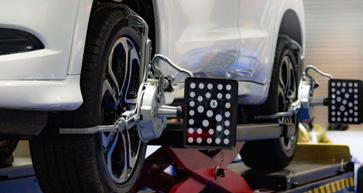








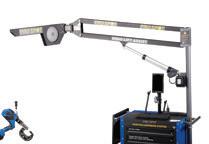











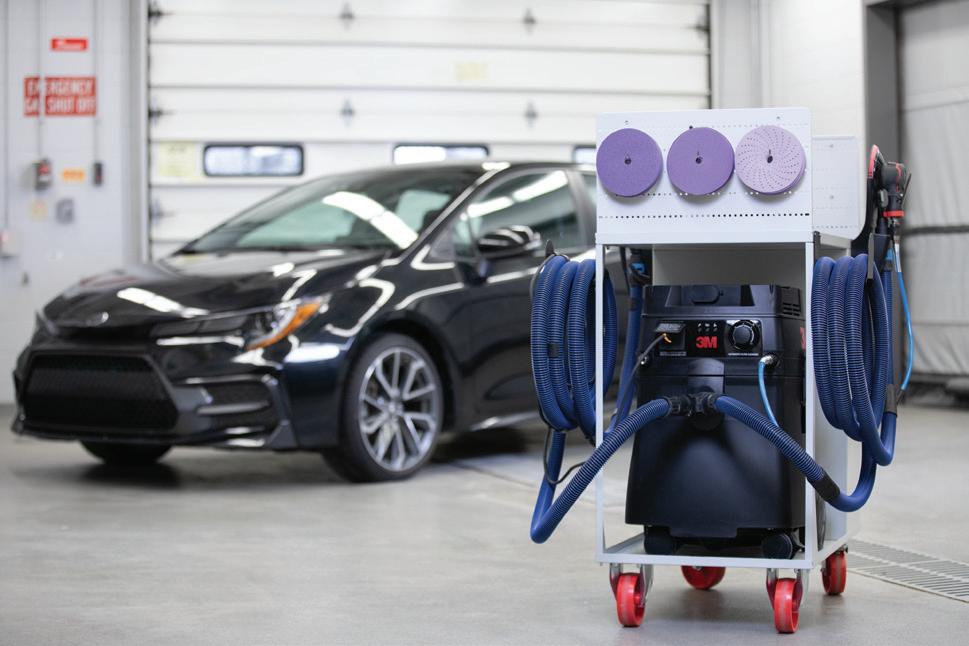
The 3M™ Clean Sanding System is a complete sanding solution for efficiently moving through your essential surface preparation and finishing work. The system includes our dust extractor, pneumatic and/or electric random orbital sanders, mobile workstation, wide selection of quality abrasives and personal protective equipment.
For more information visit https://www.3mcanada.ca/3M/en_CA/p/c/ tools-equipment/dust-extraction-systems/i/automotive/collision-repair/

car-o-liner.com
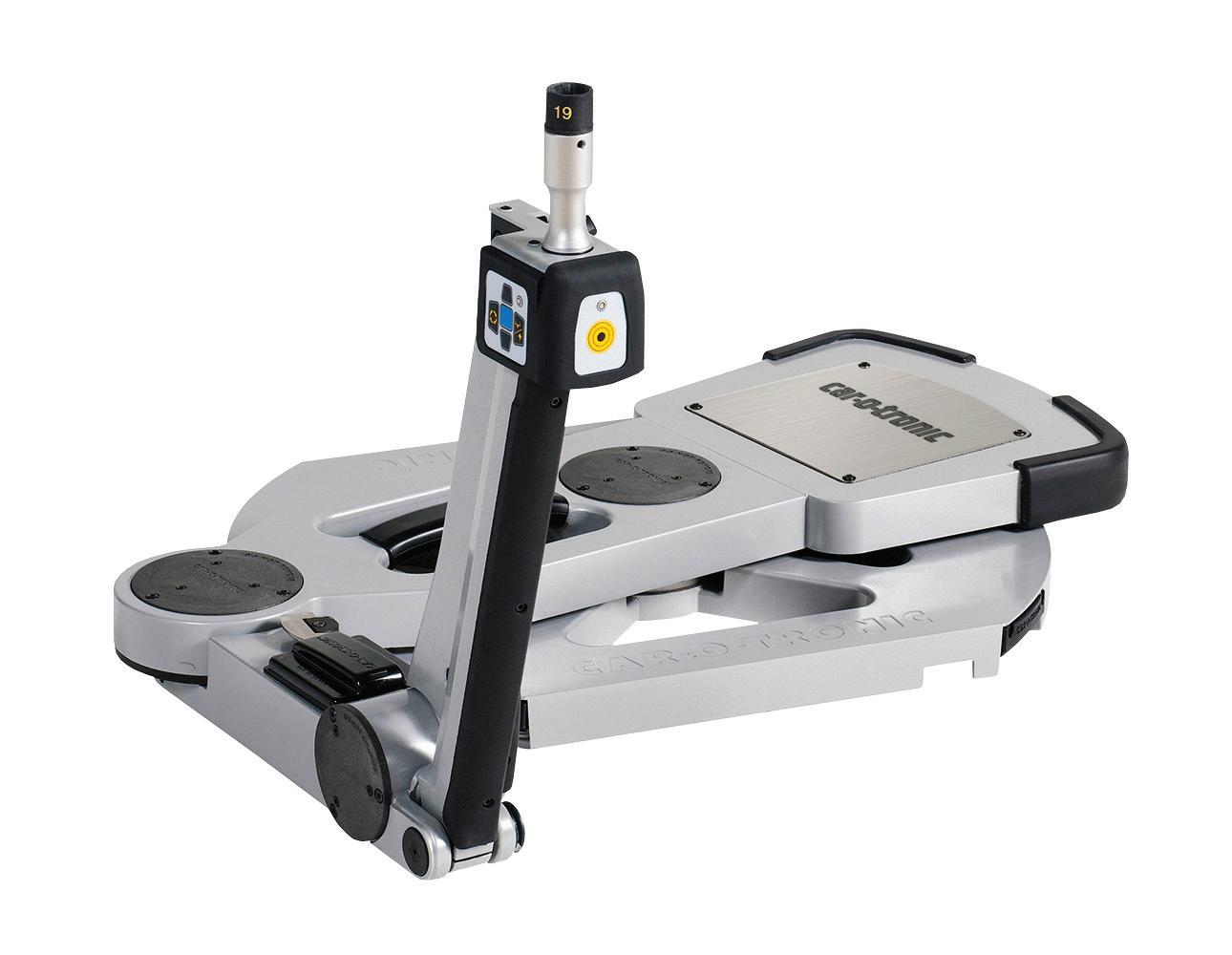
Experience advanced upper and lower body measuring with Car-O-Tronic®, the industry’s most powerful electronic system. Paired with Vision2™ X3 software, it delivers real-time, wireless data and seamless guidance for fast, accurate repairs—compatible with all Car-O-Liner® benches.
For more information visit car-o-liner.com
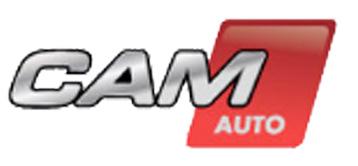

camautopro.com
CAMAUTO Premium Elite Cart is a heavy duty, mobile cart that helps you carry all your PDR and GPR tools. Equipped with a drawer, a steel tab organizer top for better tool and tab organization, and two foldable trays that can be used as side tables and bent for more efficient storage.
Visit this link to see what is included in the cart, https://camautopro.com/ en/products/camauto-pro/mobile-carts/41/premium-elite-loaded-cart/

New OEM-approved applicators are turning ‘arts and crafts’ into factory-grade precision.
In a trade where time is money and accuracy can mean everything, collision centres across Canada are discovering a revolutionary way to streamline one of the more painstaking parts of vehicle repair— seam sealing.
Thanks to 3M’s OEM Match Seam Sealer Tips, technicians can now recreate OEM seam sealer beads with near-perfect accuracy—directly from a cartridge, without the laborious prep work traditionally required. The system includes a line of precisely engineered tips designed to replicate common factory sealant patterns, saving shops time, reducing materials and delivering more consistent results.
“This solution has shifted the industry standard operating procedure (SOP) for applying seam sealers and replicating OEM appearance,” said Hillary Lenz, 3M’s marketing development manager. “We created applicators that match OEM beads exactly, and these tips are actually listed in multiple automakers’ repair manuals.”
It’s a significant milestone for 3M. The OEM Match Seam Sealer system has not only won internal accolades—such as 3M’s Center of Technical Excellence Innovation Award—but has also delivered tangible results in the field, far exceeding the company’s product launch expectations.
“We’ve exceeded our launch goals,” added Lenz. “And more importantly, we’ve given technicians something that makes their jobs easier and their repairs more reliable.”
For those on the shop floor, the benefits are immediate. As Branden Loesch, 3M’s lead application engineer for OEMs, explained, traditional seam sealer replication was often
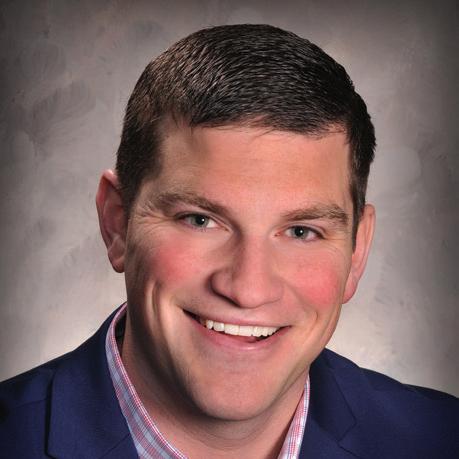
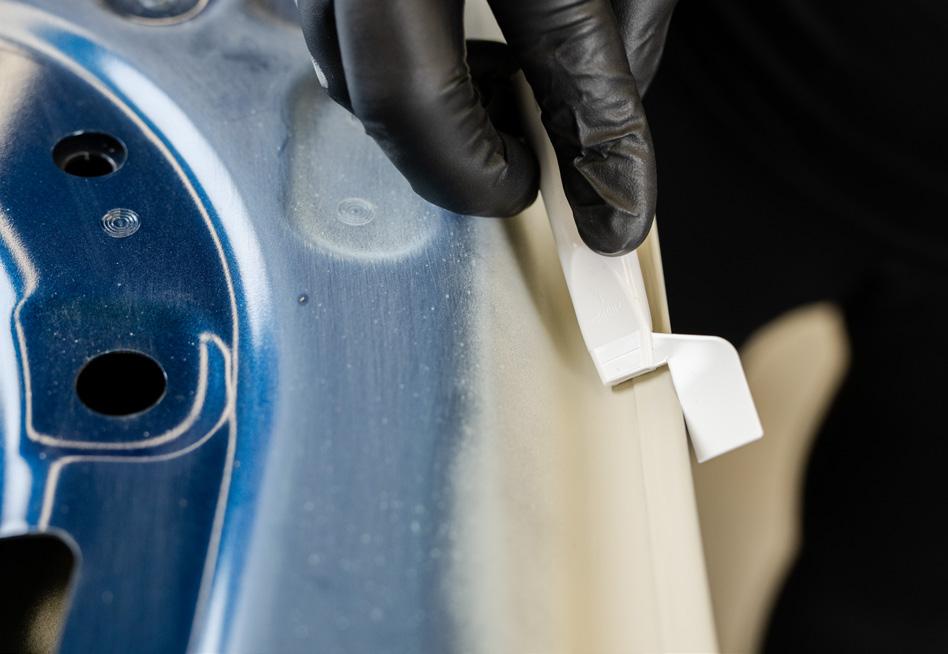
“Now we can skip all the masking and go straight to applying a consistent bead that looks just like the factory.”
—
Approved by OEMs, trusted by techs— 3M’s seam sealer tips are helping shops get it right the first time, every time.
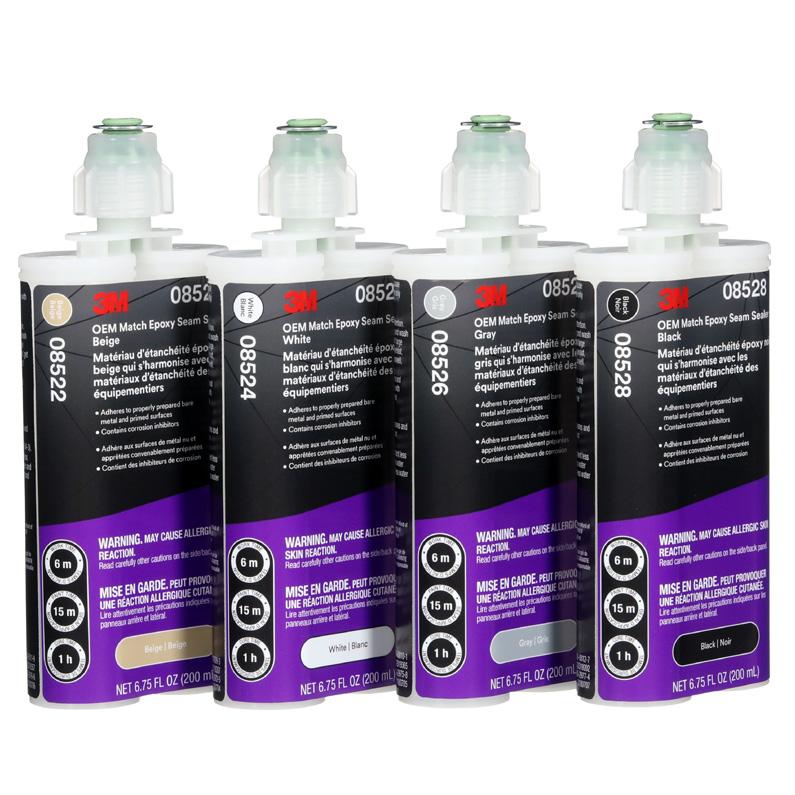
a game of improvisation. “Technicians used to call it ‘arts and crafts’—you’d tape everything off, apply the bead, tool it, blow air on it, dab it with a pad, just to try to match the OEM look,” he said. “Now, you pop on the right tip, and go. It’s that simple.”
3M’s system currently includes four applicators: the Wing Tip for hem flange seams, the Ripple Bead Tip for textured finishes, a Sprayable Tip for larger surface areas and the Wide Stream Tip for flatter seams—each compatible with both 1K and 2K seam sealer cartridges. These tips are engineered not only for accuracy but also for efficiency.
“We’re helping skilled techs do more in less time, and we’re enabling newer techs to
get it right without years of trial-and-error,” said Loesch. “That’s huge in a market where skilled labour is in short supply.”
And the financial benefits? They’re built in. By eliminating the need for extensive masking, tape usage and rework, shops can cut down on materials and labour while improving consistency—particularly important for OEM-certified facilities under constant scrutiny for repair accuracy.
It’s a rare case of a product living up to the hype—and one that could redefine how Canadian bodyshops think about seam sealing.
“It’s easier, it’s better and it saves money,” said Loesch. “That’s a lot of positives for one product.”

Collision shop owners, managers, and insurance companies are always looking for ways to work smarter and care for the environment. Nitroheat’s heated nitrogen technology is one solution that helps meet these goals.
Nitroheat heats pure nitrogen before it is used in the paint process. This heated nitrogen creates a dry, clean spray when painting cars. Without extra moisture or dirt, the paint goes on smoother and needs less work later.
• BETTER PAINT JOBS: The heated nitrogen helps break the paint into very small droplets. This makes the paint stick to the car better and look more even.
• LESS WASTE: More paint sticks to the car instead of being wasted as overspray. This can lower the amount of paint and chemicals used in each repair.
• FASTER DRYING: The heated spray helps the paint dry quicker. This means cars can be fixed and returned to their owners sooner.
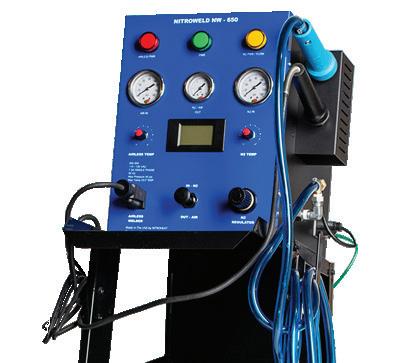
For both collision shops and insurance companies, reducing waste is a big win. Nitroheat helps in these ways:
• LOWER CARBON FOOTPRINT: Using less paint and chemicals means fewer resources are used. This helps reduce the overall carbon footprint of the repair process.
• REDUCED REWORK: With a better finish on the first try, there is less need for extra work. Fewer repair cycles mean less energy is used and less waste is produced.
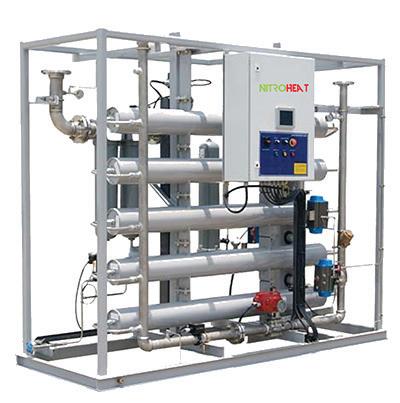
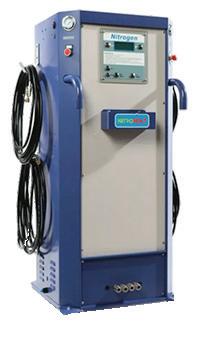
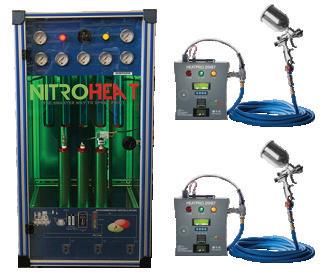
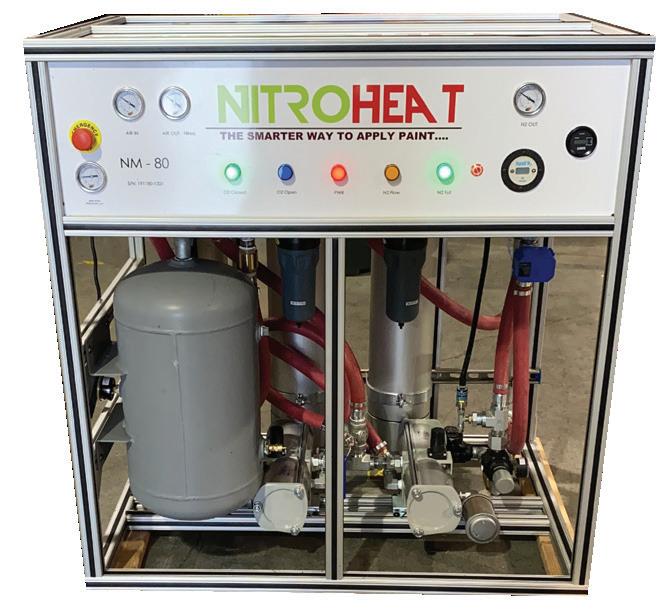
By using Nitroheat’s heated nitrogen, collision shops can improve the quality of their work while also helping the environment. For insurance companies that must meet green standards, supporting shops with these new tools is a step toward reducing harmful emissions. Both groups can benefit from saving money on materials and energy, while also showing a commitment to sustainability. Using Nitroheat is a practical way to boost quality and efficiency in car repairs. It is a tool that not only helps get the job done right but also protects our planet for the future.
For more information about featured products, contact daniel@nitroheat.com or visit www.collisionrepairmag.com/15735849.
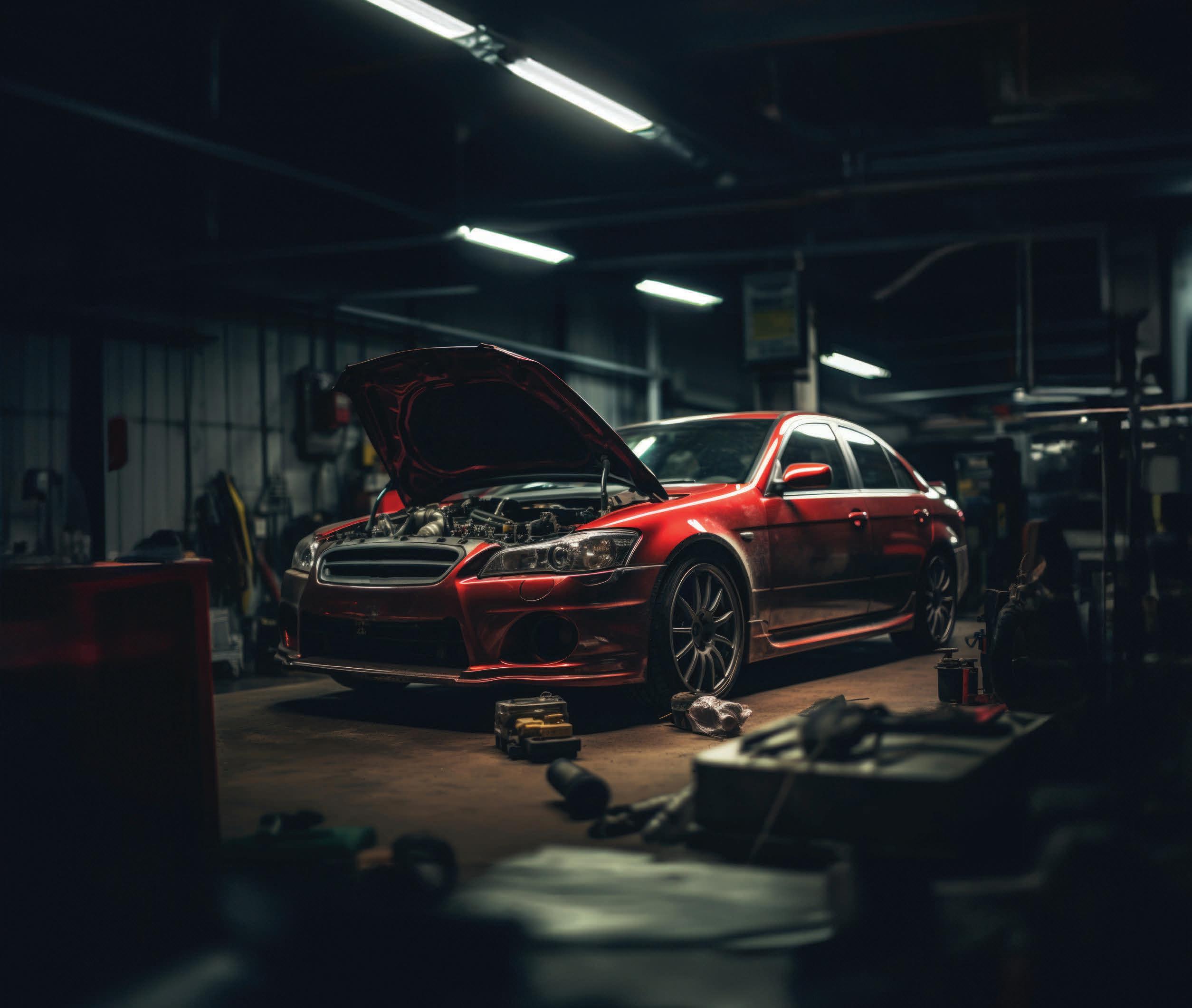





GONFLABLEAIRBAGLATÉRAL TOAVOIDSERIOUSINJURYORDEATH:
AVERTISSEMENT
•Donotuseseatcoversthat Seeblocksideairbagdeployment. owner’smanualformoreinformation.POURÉVITERDESBLESSURES GRAVESOUMORTELLES: •Nevousappuyezpascontrelaporte. •N’utilizezpasuncouvre-siège quipeutbloquerledéploiementdu Voircoussingonflablelatéral.lemanuelduconducteurpour deplusamplesrenseignements.
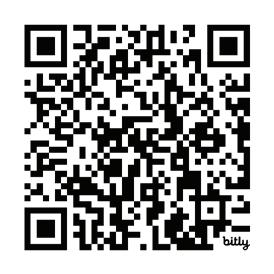

BY FOCUS ADVISORS
As the collision repair industry’s leading mergers and acquisitions advisors, Focus Advisors has talked to hundreds of collision repair entrepreneurs. We’ve seen how owning one’s real estate creates significant wealth. We see three primary value drivers:
1. INCREASING VALUE UPON AN EXIT.
If the business owner is looking to sell their enterprise, they’ll become the landlord for the buyer. The buyer will sign a long-term, triplenet (NNN) lease with rent determined as a share of the business’s revenue. Higher rent and a reduced cap rate enhance property value.
2. DIVERSIFICATION UPON AN EXIT.
By selling their business, but holding onto the building, body shop owners can diversify so the total value is no longer tied to their success alone.
3. HELPING FINANCE GROWTH.
Owners can borrow against their real estate equity to finance acquisitions or buy “build-tosuit” brownfield or greenfield developments.
We’ve observed that selling both the real estate and the business at once surrenders a great degree of value.
The U.S. and Canadian collision repair industries are consolidating rapidly. Most consolidators are funded by private equity and don’t own property. They don’t want to tie up their expensive capital in long-term assets that create wealth slowly. There is much greater risk involved in profiting from an acquired business than there is for buying property that will never lose all its value.
Occasionally, consolidators will buy the seller’s business and real estate in one transaction. This happens if the seller would like to have a total exit. Immediately after closing on both the business and the real estate, the consolidator re-draws the lease to make it more favorable to their longterm objective and promptly sells it to an institutional buyer.
We’ve observed that selling both the real estate and the business at once surrenders a great degree of value.
VALUE DRIVER 1: REAL ESTATE
INCREASES VALUE UPON AN EXIT.
When collision repair owners explore an exit with a buyer, and keep the real estate, they enter a long-term lease. This lease is typically triple-net (NNN) and amounts to 5-6 percent of the seller’s last 12 months of sales, unless local fair market rents are significantly different. The lease is typically 10 years and should include rent escalators and extension options.
When valuing their property, many owners use a real estate broker to provide them with local rents or comparable property values. But that’s not how to value collision repair-occupied real estate. The lease tends to be based on existing sales. For operators generating a high volume of sales out of a small footprint, come exit-time, they will be able to secure an above-market rent.
However, the primary value driver is “cap rate compression”.
Commercial real estate is valued based on two things: net operating income and capitalization rates.
The net operating income (NOI) for a property is the revenues generated by the property less the operating costs of running the property. In a NNN lease structure, the tenant pays for operating costs separately from the rent they pay.
The second component is how highly investors value that income stream, as measured by the capitalization rate. Less risky properties have lower capitalization rates.
NOI divided by the cap rate is the property value. A large private equity-backed consolidator is viewed as a “credit tenant”. This means that they have a large balance sheet that attracts institutional investors.
Let’s say a collision repair entrepreneur has the choice of selling their business and leasing their property to a nearby single-shop operator versus a consolidator. And say their business is doing $5 million in annual sales. Assuming a five percent rent factor, their NNN rent would be $250,000 per year.
OPTION 1:
SELL TO A LOCAL SINGLE SHOP
VALUE OF PROPERTY =
$250,000 NOI / 11.5 PERCENT
CAP RATE = $2.17 MILLION
OPTION 2:
SELL TO A LARGE CONSOLIDATOR
VALUE OF PROPERTY =
$250,000 NOI / 6.5 PERCENT
CAP RATE = $3.85 MILLION
The example shows that a credit-worthy tenant might create 77 percent more value for the property. That is cap rate compression.
We advise collision repair owners to focus first on selling the business to the right buyer, then only once it’s sold and the lease is signed to sell the property.
Owning one’s real estate might enhance the value of the business itself. That’s because risks involved in acquiring a business with a third-party landlord can erode the confidence of potential buyers or make a deal go sideways.
Operators can’t eliminate all the risks real estate presents. We’ve seen our fair share of difficult or unreachable landlords, challenging local land use policies or fire marshals, environmental risks, or informal arrangements or easements with neighbors. The enhanced control and flexibility in the deal from owning the real estate can grow the value of the enterprise, property aside.
Real estate ownership allows collision repair entrepreneurs to view selling their business as a diversification strategy. They can sell their business, invest those proceeds elsewhere, and retain the property. By signing a long-term lease, they get to receive “mailbox money”, benefit from cap rate compression, and still have some investment exposure to the collision industry via their tenant. Sellers have ample choices for investing the proceeds. They can benefit from borrowing against their increased equity in the building. A property with lots of equity built up is a piggy bank for diversification.
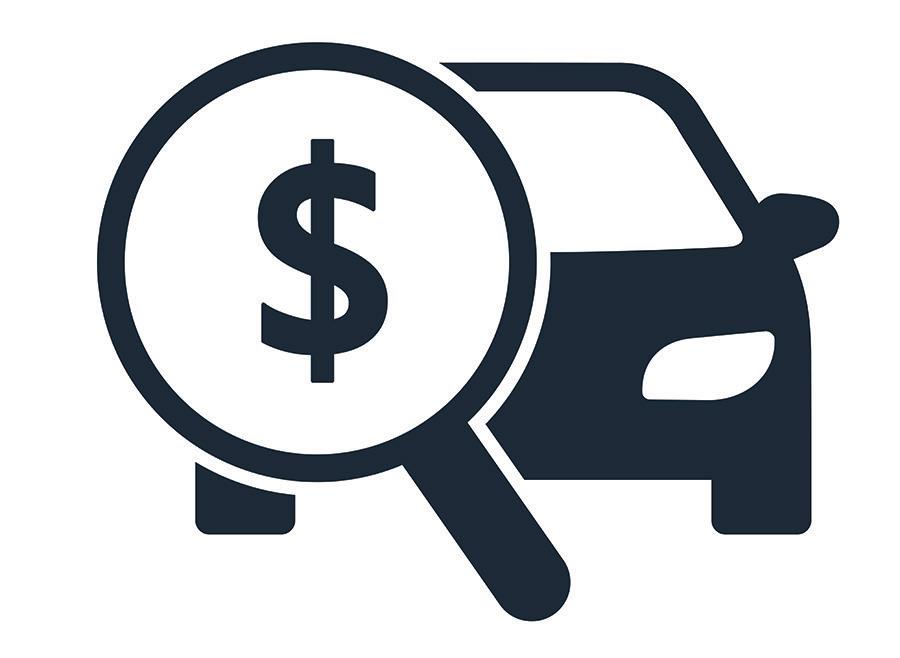
Real estate is a mechanism for owners looking to grow. They could borrow against their property or divest some of the ownership to outside investors to free up capital.
Here’s an example:
Buy a $4 Million revenue shop for $2 Million.
• Put $1 Million down and get a $1 Million note from the seller.
• The business generates $300K in cash flow after debt service; that’s a 30 percent cash-on-cash return.
Alternatively, one could buy the real estate under that $4 Million shop for $2 Million.
• Put $400K down and get a $1.6 Million note. This yields more like $65K in net cash flows (NNN rent less covering debt service); that’s a 16 percent cash-on-cash return.
Real estate ownership allows collision repair entrepreneurs to view selling their business as a diversification strategy.
One can choose: 30 percent or 16 percent returns. If they want to grow quickly, they should buy the business, but not the property.
If they’re looking to preserve capital for acquisitions, we recommend they’re thoughtful about the risks associated with whatever real estate they lease to avoid any future pitfalls. On the bright side, we’ve seen many collision repair entrepreneurs negotiate advantageous terms in leases and it has rewarded them greatly.
Buying the real estate also gives operators more flexibility when pursuing brownfield and greenfield developments. They have more control over budgets, layouts and timing.
Real estate should be a part of evaluating any growth strategy; one should consider its utility for borrowing, tax advantages, operational flexibility, diversification, cap rate compression, etc.
Focus Advisors (www.focusadvisors.com) is the leading M&A firm in the collision industry, a FINRA-registered and regulated investment bank, representing MSOs, dealerships, larger single shops, equipment distributors and paint jobbers, helping entrepreneurs create and realize equity value by providing expert advice, raising capital and facilitating the sale of their businesses. With 25 years of industry experience, Managing Director David Roberts, a co-founder of Caliber Collision, has led more than 46 transactions with a combined transaction value exceeding $600 million including Tripp’s Collision, Tom Masano Dealership Collision and Colorado Auto Body.
Investment Banking Services and Securities offered through Independent Investment Bankers Corp., Member FINRA/SIPC. Focus Advisors is not affiliated with Independent Investment Bankers Corp.

BY ABDALLAH AMRO
The collision repair industry is experiencing a wonderful transformation, led by a new generation of customers who are more informed, digitally connected and discerning than ever! These smart consumers truly value clear and honest communication, often turning to online reviews, social media and detailed digital records to carefully evaluate every part of their vehicle repair journey. This global transformation is clearly evident in the thriving automotive industry of Saudi Arabia, currently the 22nd largest in the world, valued at USD $1.51 billion in 2023 and expected to grow to USD $2.31 billion by 2029. With rising vehicle ownership and an increased need for collision repairs, consumers in the kingdom are turning to digital tools to ensure quality in repairs. They specifically seek OEM-compliant services, authentic parts and clear billing, often verifying provider accountability through online reviews and social media conversations.
It’s so exciting to see how far we’ve come! Customers are becoming much more involved in verifying the claims made by repair shops regarding OEM procedures, the authenticity of parts and the quality of repairs. They thoughtfully examine billing practices, the parts used and the documentation, often comparing these with online resources to make informed choices. This proactive approach truly shines through in the data. In 2024, a review of 1,258 customer surveys in the collision repair segment revealed 4,391 complaints, bringing to light key themes that influence customer expectations.
At the core of this transformation lies trust, which is fundamentally rooted in transparency within collision repair. The data highlights key issues like the Return of Old Spare Parts, Genuine Service Documentation, Consistent Invoicing and adherence to Repair Plans. It’s common for complaints to arise regarding issues such as missing parts, ambiguous repair records or inflated invoices. Increasingly, customers are verifying these claims through online reviews and social media. When a shop fails to provide clear proof of original parts or lacks complete documentation, it can deeply undermine the trust customers have in them.
Another critical aspect highlighted by customer complaints is communication. The themes of Effective CRM Systems and Easy Communication and Follow-Up reveal that customers increasingly demand timely, transparent updates throughout the collision repair process. When shops provide clear explanations and regular progress reports, it builds confidence, makes customers feel involved and strengthens trust in the service. This proactive communication often results in positive online reviews and encourages repeat business. On the other hand, we often hear complaints about communication challenges, like infrequent updates, unclear explanations or imprecise information regarding repair status. These concerns can really lead to
frustration and dissatisfaction, and they can hurt a shop’s online reputation too. The data clearly shows that open and responsive communication is absolutely essential—a vital ingredient for ensuring customer satisfaction and loyalty in today’s digital-driven world.
Building on that, today’s collision repair customers truly value being fully involved and having transparency at every stage of the repair process. The importance of Customer Consent on Repair Plans and Fair Compensation for Customer Concerns highlights their genuine desire to understand exactly what repairs are being performed and why they are necessary. It’s wonderful to see customers taking the initiative to verify these details online before giving their approval, as they compare estimates and reviews to ensure they receive honest and fair service. Complaints about vague communication or unapproved repairs can quickly affect a shop’s reputation, so maintaining clarity and openness is essential!
The importance of Customer Consent on Repair Plans and Fair Compensation for Customer Concerns highlights their genuine desire to understand exactly what repairs are being performed and why they are necessary.
The data highlights how essential price transparency is in building customer trust. Customers carefully examine aspects like Clear Pricing, Consistent Pricing and Inclusive Offers, often comparing these claims through online reviews and community forums before making their choices. When there are inconsistencies—like estimates that don’t match final bills or hidden charges that surprise customers—trust can quickly be undermined, leading to dissatisfaction and negative feedback. However, businesses that focus on transparent, consistent and fair pricing typically enjoy stronger loyalty,

garner more positive reviews and inspire repeat business.
Customer feedback shows us that today’s collision repair customers are not only wellinformed but also have high expectations. They actively engage with digital platforms to check in and share their experiences, making trust and transparency more important than ever. In this new era, thriving collision repair businesses will embrace transparency as their guiding principle—because in a world where customers are more informed than ever, trust really means everything.
businesses that focus on transparent, consistent and fair pricing typically enjoy stronger loyalty, garner more positive reviews and inspire repeat business.
Abdallah Amro is a seasoned automotive executive with over two decades of leadership experience in aftersales, franchise operations and service innovation across Saudi Arabia. Currently serving as Director at Fix Auto, Gulf Motors Company, he oversees nationwide franchise operations and spearheads digital transformation in service delivery. Abdallah holds dual MBAs in Strategy and Operations Management, and he is pursuing a PhD in Business and Management at Management and Science University, Malaysia. His research interests include customer loyalty, service quality and CRM in the automotive sector, with a focus on bridging academic insight and real-world practice.
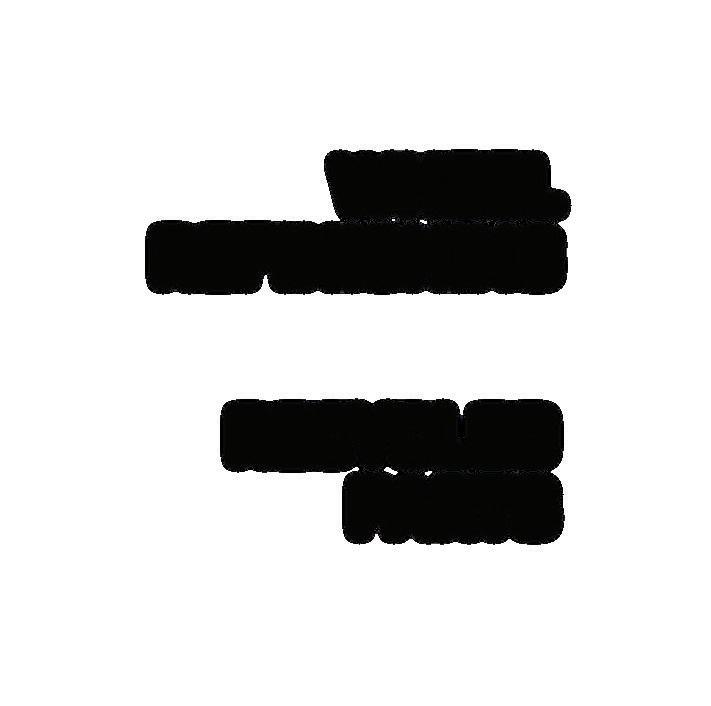
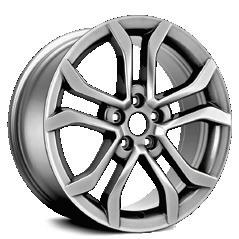

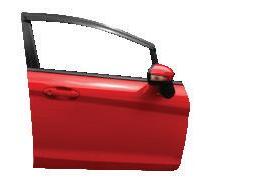
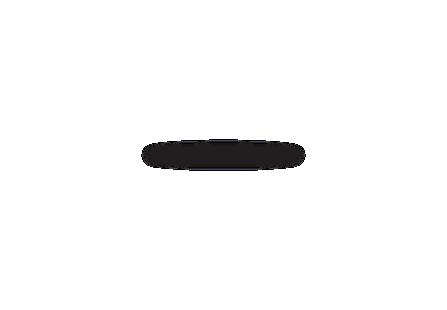
In this episode of Industry Insider, Stuart Klein discusses his career path and the critical role of I-CAR Canada in enhancing collision repair training in Canada. He explains how I-CAR Canada supports ongoing technician education beyond Red Seal certification and offers recognized designations like Platinum and Gold Class recognition. He also highlights partnerships with organizations such as the Canadian Welding Bureau to improve enhance training access, particularly in remote areas. I-CAR Canada’s subscription model helps shops train staff efficiently, and achieving Gold Class recognition reflects a shop’s commitment to quality and staying current with industry changes.
Collision Repair magazine: Welcome back to the Industry Insider podcast! Today we’re joined by Stuart Klein, VP of Collision Programs at AIA Canada and Executive Director of I-CAR Canada. Thanks for being here, Stu. Let’s start with a quick intro—tell us about your journey and contributions to the industry.
Stuart Klein: Thanks, Allison—great to be here. I’ve been in the industry for over 46 years, starting as a technician, which sparked my passion for collision repair. I spent 10 years in insurance, followed by 15 years with a major network, where I audited and coached shops, and managed training. I’ve been involved with I-CAR Canada for decades—first as a student, then as a trainer for 25 years. Two years ago, I joined AIA Canada, the not-for-profit that’s been delivering I-CAR training in Canada for over 15 years. That’s the short version!
CRM: We’ve known each other for a long time, and I know how dedicated you are to the industry. So let’s dive in—can you explain what I-CAR Canada is and how it operates in Canada?
SK: Sure. I-CAR is a U.S.-based not-forprofit founded in 1979 to develop training for the collision repair industry. The name stands for the Inter-Industry Conference on Auto Collision Repair, reflecting the fact that its direction comes from all segments of the industry—over 500 volunteers help shape its programs. Over time, I-CAR has created eight defined training paths known as the Professional Development Program, outlining the skills needed for key roles in a shop. In Canada, AIA Canada holds the contract to deliver I-CAR training and has done so for over 15 years. Nearly all of I-CAR’s content applies directly to the Canadian market, as our industries and vehicles are very similar.
CRM: Excellent. We have a lot of experience in this industry. So I understand, as you mentioned, there are different levels to the I-CAR Canada platform, whether it comes to shops or technicians. Can you educate us and provide some more information on the different tiers that are available?
SK: Sure. I think most of the people reading or listening to this podcast probably know that there are two main credentialing systems that I-CAR Canada has, which are called Platinum and Gold Class. Platinum is a designation that an individual can reach, and Gold Class is a designation that a shop can reach if they have a certain number of Platinum individuals working for them.
CRM: We’ll get into that at the latter end of the podcast. But I’d like to know, Stu, what are some benefits to having a Gold Class certified collision repair centre?
SK: There are many benefits to achieving I-CAR Canada Gold Class recognition, beyond just meeting OEM or insurer requirements. While the Red Seal program is valuable—I’m a Red Seal tech myself—it lacks ongoing training, varies by province and isn’t mandatory everywhere. Gold Class helps fill those gaps by ensuring every technician and estimator meets consistent, up-to-date standards.
Red Seal technicians do receive 74 I-CAR credits, but there’s still a training gap—especially around areas like welding certification—that Gold Class helps cover. I-CAR Canada’s Platinum role training is actually a bit more advanced and is continuously updated every four years.
Gold Class shows a commitment to ongoing education and technical excellence. It’s a higher standard that many OEMs and insurers recognize and require. More importantly, it’s
currently the only truly standardized training framework in Canada built for the industry.
CRM: You mentioned that Gold Class isn’t just about OEM accreditation and that it also covers important training gaps like welding certification—something Red Seal doesn’t require. Can you tell us more about AIA’s partnership with the Canadian Welding Bureau and the program you’ve developed together?
SK: Sure. The Canadian Welding Bureau is part of our Industry Training Alliance under the sustaining partner program. I-CAR sets industry training standards but isn’t the only trainer. Through the alliance, partners like CWB have their training reviewed and accredited by I-CAR. This means technicians can earn I-CAR credits without repeating similar courses, which saves time and money.
CWB offers two key programs: automotive steel and aluminum welding, both accredited by I-CAR. Since welding certification is required for Gold Class and some areas lack training options, CWB’s strong remote training helps expand access across Canada, especially in underserved regions.
CRM: Excellent. Stu, for shops that might be at ground zero, what does becoming an I-CAR Gold Class certified entail? What are some of the requirements they may need? They might think it’s a big mission, but it’s for your ultimate service-like requirements. So what would they need to be able to meet that?
SK: Starting from scratch, becoming Gold Class is a big task—likely a three-plus year journey, especially with no Red Seal techs or prior training. It requires having Platinumcertified individuals in key roles: structural tech, non-structural tech, refinisher and
estimator. The estimator role is especially important since it’s not covered by Red Seal. If you have Red Seal techs, you can transfer their credits to I-CAR Canada and get 74 credits, easing the process. Using the Training Alliance can also help avoid redundant courses.
To support shops, I-CAR Canada offers a subscription program giving unlimited access to online training for a flat yearly fee—like an all-you-can-eat training buffet—which is a great resource for those pursuing Gold Class.
CRM: OEM certification is crucial today, especially with OEM demands. But customers mainly want quality repairs and assurance. Having that I-CAR Gold Seal shows shops provide the right repairs. How has this benefited their business?
SK: We’ve got about 700 Gold Class shops presently in the Canadian market. And these are industry leaders that typically when you talk to them, they’re saying that they see the value in keeping abreast with what I-CAR likes to call the technical tsunami.
That is I-CAR, trademarked wordsmithing and it’s kind of good wordsmithing because with this non-stop barrage of changes and technical updating with vehicles, you know, how are you keeping up with it? I-CAR Gold Class demands that you keep up with it. So all those reasons that I’ve already mentioned are things that these shops talk about. We have training paths for production managers and ADAS, so once you get past the actual requirements for Gold class, there is just a ton of training in there to keep your staff up to date.
My experience has been as soon as I think I know something, something happens that reminds me how little I actually know. Anyway, I’d say that’s sort of an overview of what I hear from those leaders in the industry
that are doing it for the benefits we’ve already talked about. They’re not doing it just so they can meet a mandate.
CRM: I think you guys are doing an incredible job. Are there any last words you’d like to give to the industry?
SK: Well, thank you for the kind words. Maybe the last thing I’d say is for a shop to maybe look into the benefits of subscription. That’s certainly not for every shop. It’s not a one size fits all. You pay per person that’s required to train and you get unlimited access to on-line training. You also get a 10 percent discount on welding programs. The shops that are using that presently, they’re getting really good value because they’re doing more training at a little lower cost per unit is what happens for people that are really interested in training. And like I said, There’s ADAS courses and there’s production manager.
There’s OE specific courses, EV courses. There’s over 170 online courses. It’s so much more than just gold class.
Another benefit is that employees may come and go out of your shop. You’re not paying extra in that case, you’ve paid for subscription so if somebody new comes in your shop, you just update your shop roster with I-CAR and they start training. So there’s a lot of benefits that way. The other thing too is updates to the program. You know, like I mentioned, every program is reviewed minimum every four years. And sometimes they do a very small update. This might only be one or two slides. Technicians might retake the course and they kind of, they might complain a bit, quite honestly because they’re taking the whole course again for one slide. Well, if you’re on subscription, it’s no additional cost.
Yes, you do have to spend 30 minutes and take the course just to see what the update
was because it’s new information but there’s no extra cost. And the other thing too, like I said that these programs are very dynamic and they respond to the market needs like the platinum Role, that is not chiselled in stone and it will change from time to time. In fact, In 2026 in Canada, the platinum rolls will receive a bit of an update where there’s going to be some requirement for some fundamental ADAS training under each of those platinum rolls. So just watch for that. And if you’re on subscription, those courses are no extra charge. You just have to find the time to take them. That’s my little plug for subscription. I think it’s a really good product that will really help some shops. I can tell you the shops that are on subscription now are loving it.
CRM: Thank you Stu. That sounds like a great program. I personally look at some I-CAR courses myself. They are fantastic. So I really appreciate that and I really appreciate having you on here. It’s given me a lot of knowledge as well as I’m sure our audience has gained a lot of knowledge.
SK: Thanks for having me, CRM. It’s always a pleasure talking.
CRM: You can find us wherever you listen to podcasts—Apple Podcasts, Spotify, SoundCloud, Yahoo Music, and more. Be sure to download and subscribe so you don’t miss our next episode. Thanks so much, everyone!
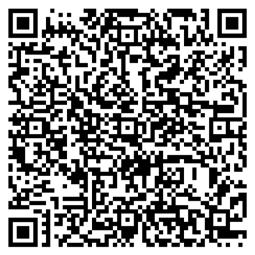
Listen to the full podcast by scanning the QR code or visiting the podcast section of collisionrepairmag.com









Afamiliar roar returned to Standard Auto Wreckers—not of engines, but of hydraulic rescue tools, saws and the dedicated teamwork of first responders. On June 5 and 6, the auto recycling yard once again transformed into a high-intensity training ground, hosting the 2025 Transportation Emergency Rescue Committee (TERC) Regional Vehicle Rescue Challenge.
Organized by TERC Canada and hosted in collaboration with the Markham Fire Department and the Markham Fire Extrication Team, the two-day event brought together fire departments and emergency response crews from across the region. These elite teams tested their mettle in realistic extrication scenarios, proving that effective vehicle rescue is as much about precision and planning as it is about bravery.
The Challenge featured two competition pits—limited and unlimited—where teams were given just 20 minutes to safely extricate a live “patient” from a mock vehicle collision. Judged on command structure, hazard control, disentanglement technique and rescuer and patient safety, the competition put participants through the kind of pressurecooker conditions that mirror the chaos of a real accident scene.
In the limited pit, teams could use only hand and pneumatic tools. In the unlimited pit, all tools—including hydraulic cutters, spreaders and stabilizers—were allowed.
The Burlington Fire Department claimed top honours, winning both categories and securing the overall title. They will go on to represent Canada on the world stage next year.
Standard Auto Wreckers, was proud to once again open its gates. For David Gold, owner of the facility, the event is more than just a competition—it’s a mission.
“We’re all proud to be a part of it,” said Gold. “Everyone feels good to be helping first responders.”
Beyond supplying vehicles and space, Gold and his team assist with logistics, equipment setup and even support crews travelling internationally.
“One person can make a difference, and everyone should try,” said Brad Sterling of the Markham Fire Department, quoting John F. Kennedy in a heartfelt tribute. “David Gold has had a massive impact on the fire service—not just here in Markham, but across departments. He provides vehicles, facilities, staff support and even attends our events in the U.S. His unwavering commitment has


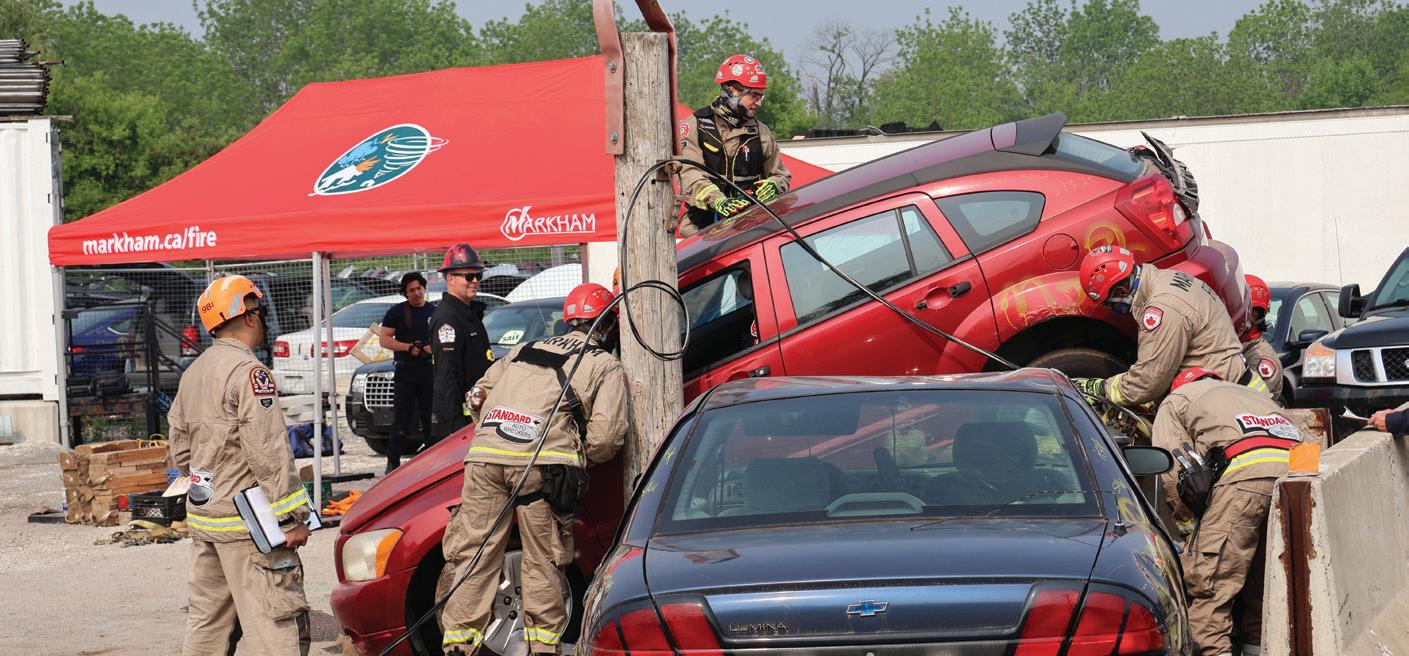
made him family to our team.”
Events like the TERC Regional Challenge shine a spotlight not only on emergency responders but also on the critical partnerships that make this life-saving training possible. From local businesses donating vehicles, to auto recyclers offering space, to municipal fire departments dedicating time and resources— every stakeholder has a role to play.
“We are sincerely grateful for our Chiefs and the time they spend with us,” Sterling
continued. “They’ve helped build a strong culture. This isn’t just about auto extrication— it’s about growing as a team and serving our community better.”
As TERC Canada and Standard Auto Wreckers look to the future, the goal remains clear: better training, safer roads and stronger communities. With public support and private leadership like that of David Gold, the next generation of rescue heroes will be even better equipped to face the challenges ahead.
One of the world’s largest auto parts sellers has released a major report on the environmental impact of its activities.
In its 2024 sustainability report, LKQ showcased the significant strides in environmental performance, circular economy leadership and community engagement it made throughout the year in which the company processed 735,000 vehicles and sold nearly 12 million recycled parts.
The company reduced its Scope 1 and 2 greenhouse gas emissions by 16 percent relative to revenue, compared to a 2022 baseline. This was accomplished through the increased use of renewable energy, fleet fuel initiatives, energy efficiency upgrades and network optimization efforts. For collision repair facilities using LKQ parts, the company’s carbon reduction also alleviate Scope 3 emissions.
“We’re focused on continuous improvement in reducing greenhouse gas emissions across our operations,” said Justin L. Jude, LKQ’s chief executive officer. “This commitment is linked to our dedication to frugality and waste reduction, going beyond just
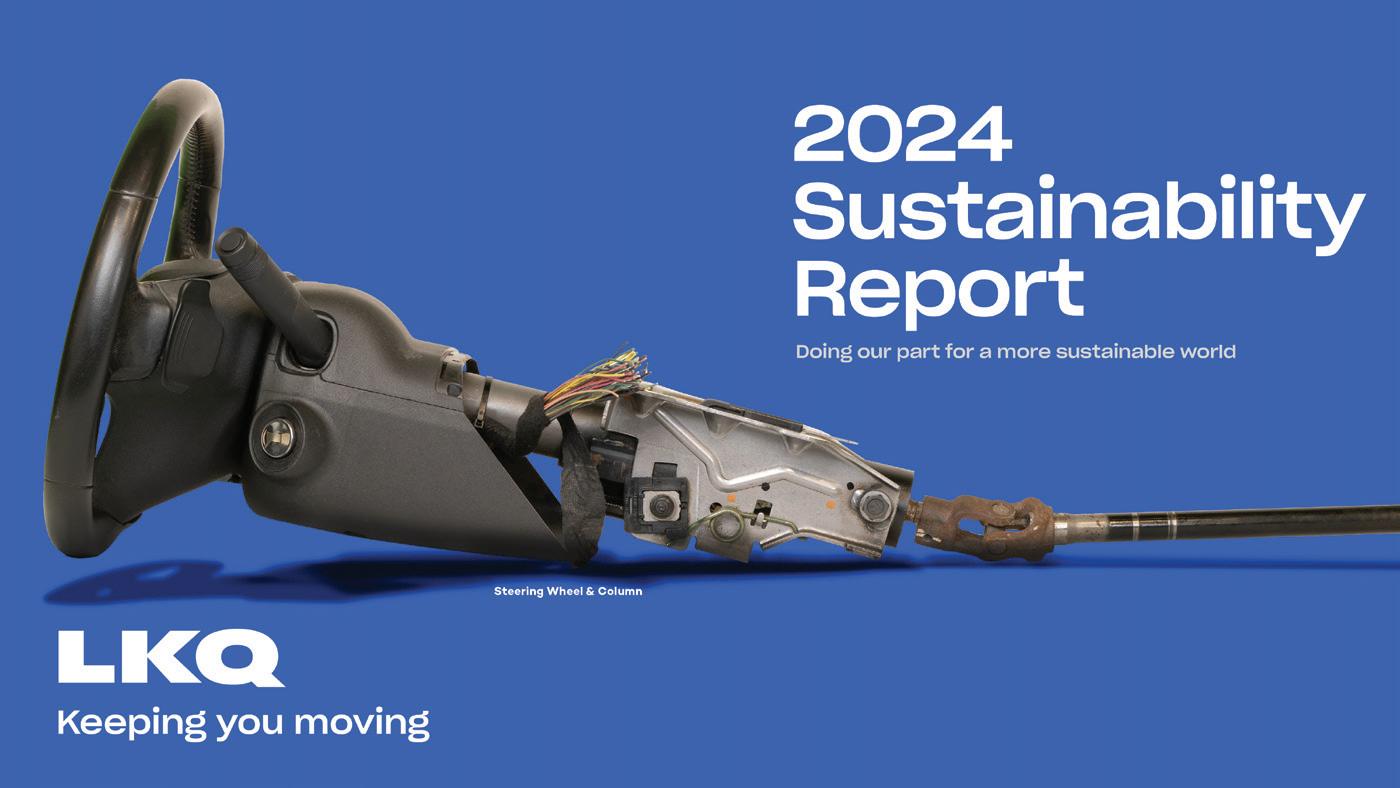
regulatory compliance. Our goal is to continue sharing best practices across our global operations, particularly in areas like electricity consumption reduction and fleet efficiency initiatives.”
Looking ahead, LKQ aims to reduce global Scope 1 and 2 emissions by 30 percent by 2030 relative to revenue and achieve net-
zero emissions across its operations by 2050.
During the year, LKQ donated more than US$4 million through to support health, education, veteran services and environmental stewardship. Employees participated in over 200 local initiatives, demonstrating the company’s commitment to social responsibility.
Canada’s automotive spare parts logistics market is poised for strong growth, driven by rising vehicle maintenance needs and rapid technological change.
According to a report by Custom Market Insights released June 25, 2025, the global market is projected to expand from US$312.61 billion in 2025 to US$663.27 billion by 2034, at a compound annual growth rate of 8.67 percent
In the North American context the U.S. remains a dominant force with a mature automotive manufacturing base and tight supplier networks. Key seaports offer specialized vehicle-handling facilities and are linked to well-developed inland trucking and rail systems, enabling efficient transport of spare parts . The continent also leads in adopting smart logistics technologies like cloud platforms, autonomous vehicles and advanced tracking systems to improve speed and reliability.
The report’s SWOT analysis highlights several strengths for the industry, including its established warehousing and transport infrastructure, an increasing number of older
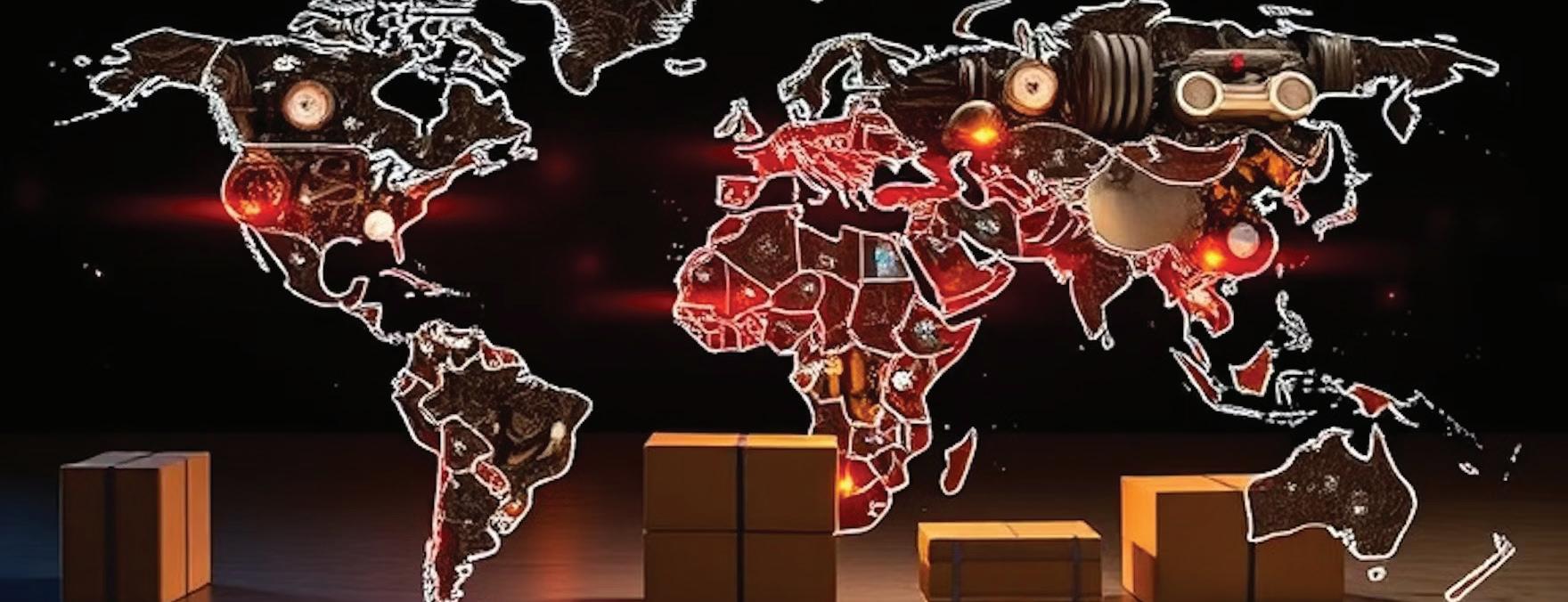
vehicles driving demand and the growing use of AI-enabled inventory management.
It also identifies weaknesses such as the complexity of coordinating large distributor and supplier networks, challenges in maintaining optimal inventory levels without incurring high costs and the risk errors in real-time tracking systems may disrupt operations.
Opportunities include growth in emerging markets, expansion of online parts sales channels and integration of blockchain, IoT and AI to improve logistics efficiency. Threats include trade-related disruptions affecting
parts cost and availability, and intensifying competition from local suppliers offering lower-cost alternatives.
Supplementary data from Research and Markets shows the broader automotive logistics market will grow from US$261.7 billion in 2025 to US$553 billion by 2034 at an 8.7 percent CAGR.
Analysts also report that global spare-parts logistics reached US$49.2 billion in 2024 and is expected to grow at 3.3 percent annually through 2033, while reverse logistics in Canada alone generated US$15 billion in 2024 and is forecast to grow at 15.1 percent a year.

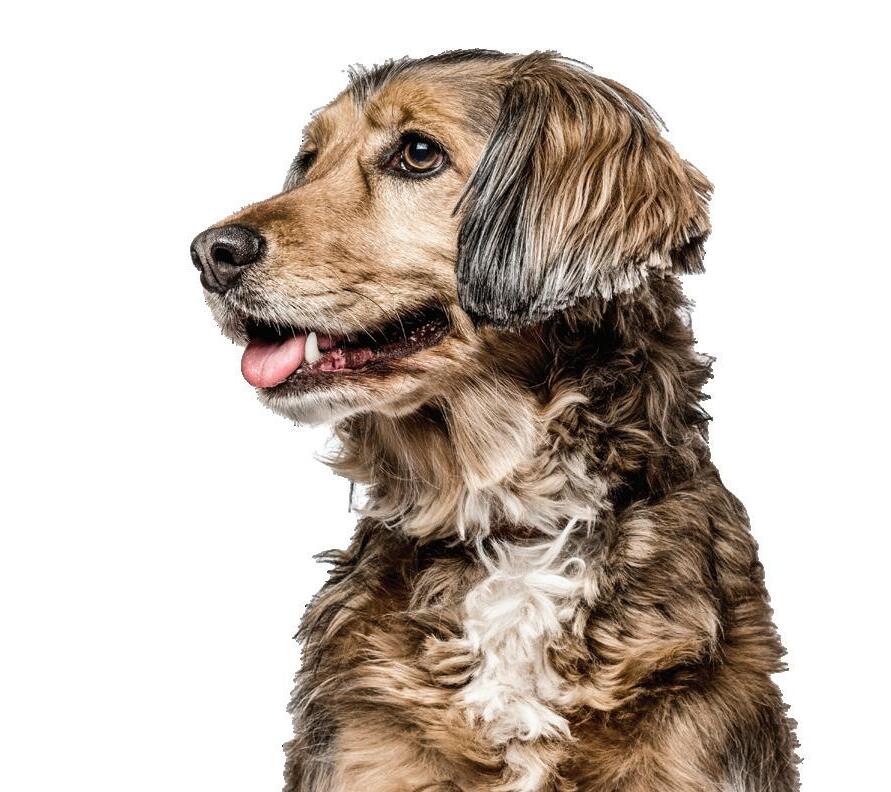
At Collision Repair magazine, we know that it takes more than tools and talent to keep an autobody shop running smoothly—sometimes, it takes four legs, a wagging tail and a whole lot of personality. So, we asked our readers to share photos and stories of their pets who punch in beside them every day, lifting spirits, greeting customers and supervising snacks. The results? Pure joy. Meet a few of the furry all-stars redefining what it means to be a team player in the collision repair world.
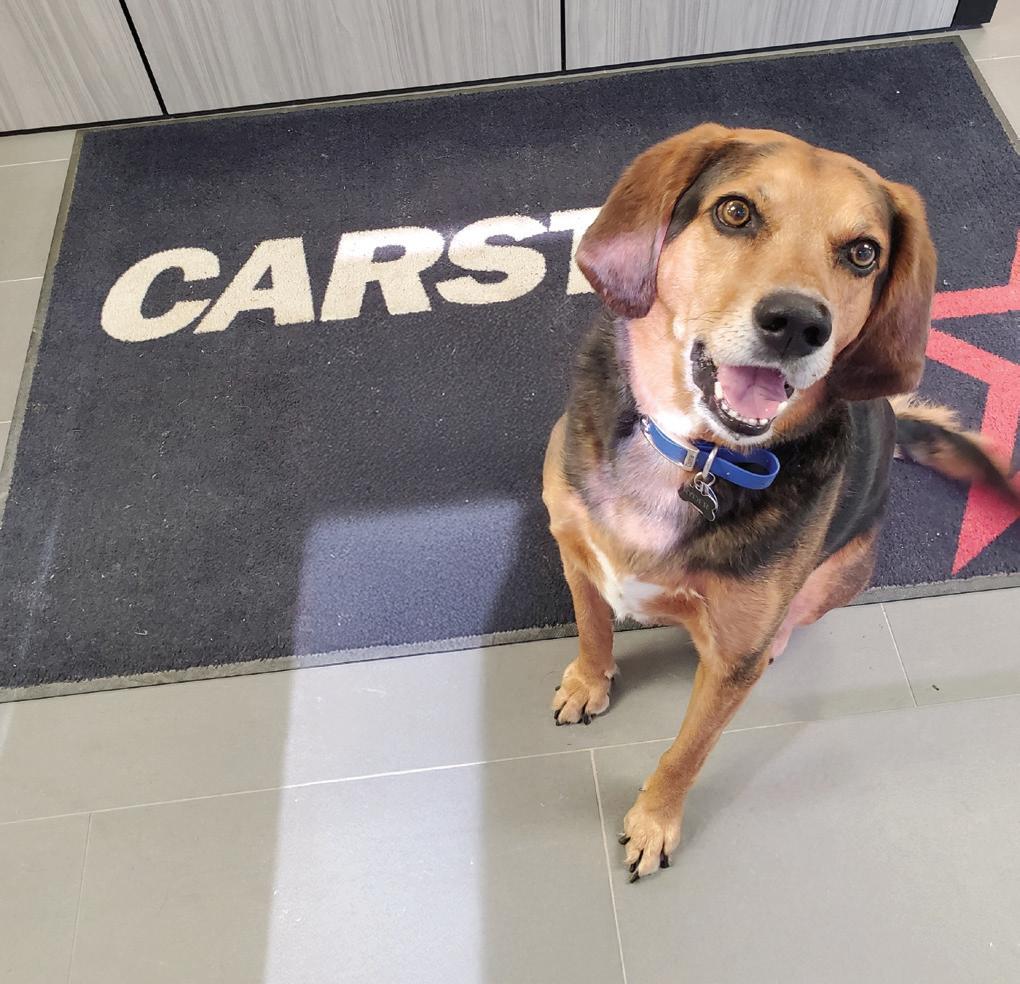
Ryder’s resume is stacked. Officially titled Customer Greeter, Ryder welcomes every guest with a wagging tail and warm eyes, putting anxious minds at ease from the moment they walk in.
But that’s not all. As Chief Stress Reliever, he’s on call for cuddles and quick pets whenever things get hectic. And in his role as Shop Supervisor, Ryder keeps a close eye on daily operations—especially when snacks are involved.
He even made a professional appearance at a CARSTAR Regional Meeting, proving he’s not just a pretty face, but a pup with purpose.
Marvin is more than a greeter—he’s a full-on emotional support system for customers and staff alike. His signature smile is described as “contagious and therapeutic,” offering comfort when things get stressful.
Marvin is always ready to lend a paw, and he’s happy to accept his paycheque in treats. A true Fix Auto Stratford family member, Marvin reminds everyone that kindness (and kibble) go a long way.
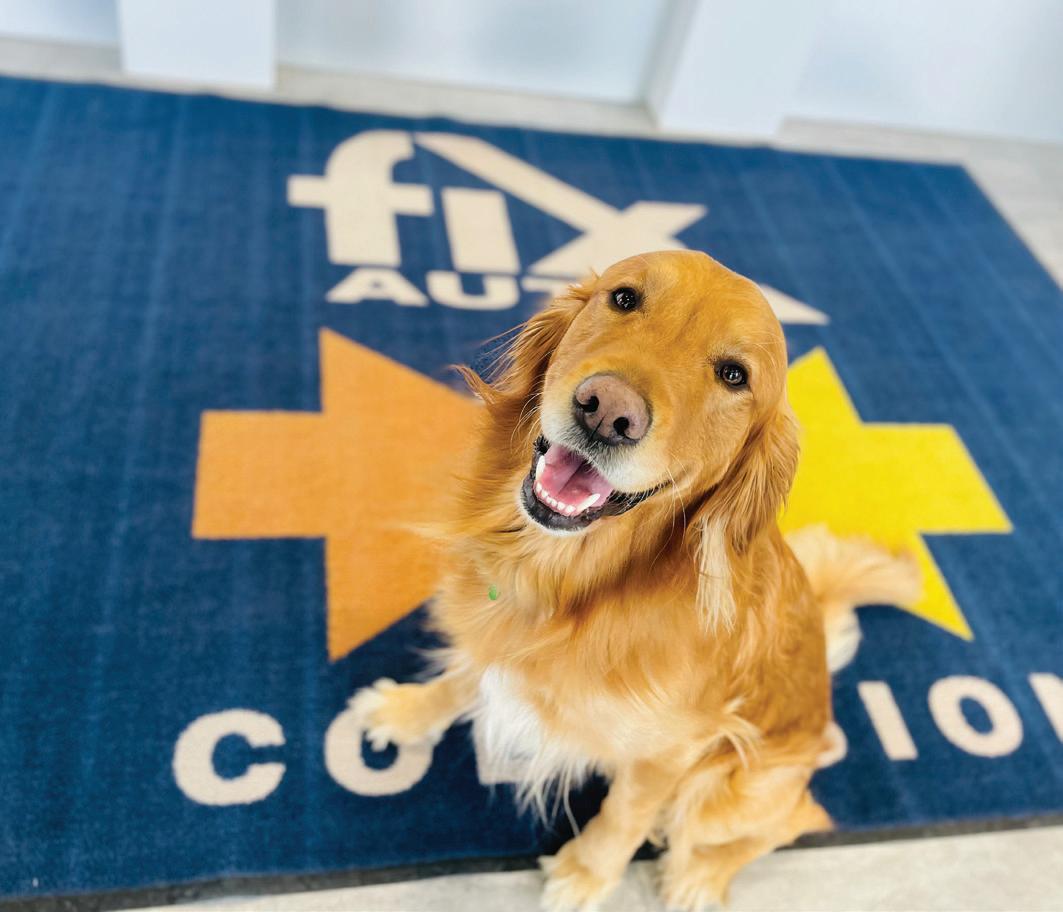
Hank doesn’t just work at Elite Body Shop—he runs it. Sharing an office with Hank means business is getting done. Between “closing deals” and overseeing car movements on the lot, Hank’s got it all covered.
During meetings, he’s courteous enough to pop in for a quick hello before letting the humans carry on with their less important tasks. In a recent employee engagement survey, at least seven staff members listed him as the best part of their job.
By day he’s Henry, the professional. By night, he’s Hank—a country-music-loving, beer-appreciating, turbo-diesel-truck-whistling legend. His dislikes? Reflective surfaces, automatic doors and Swiffer Wet Jets. Opposable thumbs? Overrated. Hank gets the job done anyway.
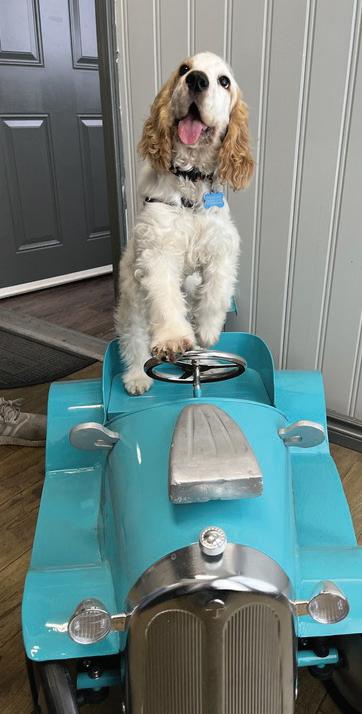

In a world of revving engines and ringing phones, Celly brings the calm. Nicknamed the biggest chiller you’ve ever seen, she creates a peaceful, positive vibe in the office that’s as soothing as a Sunday drive. In the chaos of a busy repair shop, Celly is the zen in the storm, keeping the flow steady and the humans grounded. No stress, just flipping fun.
Do you have a shop pet who’s part of the team? Send us your photos and stories—we’re always on the lookout for Canada’s next four-legged foreman. Visit www.collisionrepairmag.com/page/pet-profile-submissions



BY COREY CARLAW
When I first got into this trade, I was naïve. I thought working in collision repair was straightforward: fix the cars, treat the customer right, work as a team with the insurance company and move on to the next. I assumed we were all on the same side—the shop, the insurer, the customer—united by a simple goal: getting people back on the road safely, with as little stress as possible.
What a life to look forward to! A job unified by a single purpose: an excellent customer experience. Sign me up.
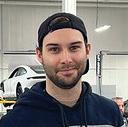
experience. The other side is bound by cost control and policy interpretation. Cue the tension.
Ask any estimator or production manager and they’ll tell you—it’s not one big thing that creates the friction. It’s the constant pushback.
• Weld burn cleanup? “We don’t pay for that.”
• OEM research? “That’s included in repair times.”
(It isn’t, by the way.)
• Chipguard removal? “Built into the labour times.” (Also incorrect.)
It’s not that insurers are out to get us—it’s that we’re working toward the same goal, but under two completely different sets of rules.
Reality hit quickly. Within a matter of months, I realized this industry—especially at the front lines between bodyshops and insurers—often feels more like a battleground than a partnership. That initial confusion I felt? It turns out I wasn’t alone. It’s almost a rite of passage for anyone trying to do things properly in a system that constantly pulls in opposite directions.
Shops are responsible for restoring structural integrity, following OEM procedures, documenting every operation and staying profitable in a high-overhead business. We get paid for what we do—but only if someone agrees to pay it. And more often than not, that “someone” is the insurer, who’s under pressure to control costs and settle claims quickly.
This isn’t a smear article. It’s an uncomfortable truth: our partner is pitted against us by the rules of the game. Why hate them for it?
Insurers aren’t staffed by villains. Adjusters and appraisers are often doing their best under rigid guidelines, internal metrics and limited authority. They’re fielding a flood of claims, balancing company policy with repairer expectations and catching flak from both sides. They’re often told what not to pay for—even when they believe the work is justified. They answer to someone.
See what I mean? They aren’t out to get us. We’re playing the same game—just with different rules. Unity of direction? Unfortunately, not.
So here we are: one side pushing for safe, complete, documented repairs based on a world-class customer
And when you explain—calmly, with documentation, photos and P-page references— you’re told: “We just don’t pay for that.” Or worse: “Push too hard, and we may rethink the relationship.”
You begin to realize the problem isn’t a misunderstanding or villainous behaviour—it’s the structure. The DRP model places shops in a position where their professional judgment is second-guessed, and insurers are set up to control the process without taking responsibility for the outcome.
No, I’m not being rude. It’s just a fact.
So—has the industry gone mad? Maybe. Or maybe it’s always been this way. Conflict is, unfortunately, built in. We aren’t truly aligned, even if the customer experience gives the illusion that we are. We’re reading from two different rulebooks, with different people to answer to.
This isn’t to say one side is wrong or the other is right. It’s just a reality check. It’s easy to feel like you’re walking into a battleground. It takes a bigger person to acknowledge the struggles on both sides and show respect for them. Let’s get into a mindset where we can still share a post-game handshake. I still believe the customer deserves more than a silent war behind the scenes. And while we may never fully fix the relationship, we can at least start by being honest about it.
The industry is changing faster than ever. If we don’t remember to drop our guards and treat each other with respect, we’ll only add to the chaos. We already face enough difficult situations every day.
Let’s try to change the industry—one conversation at a time.
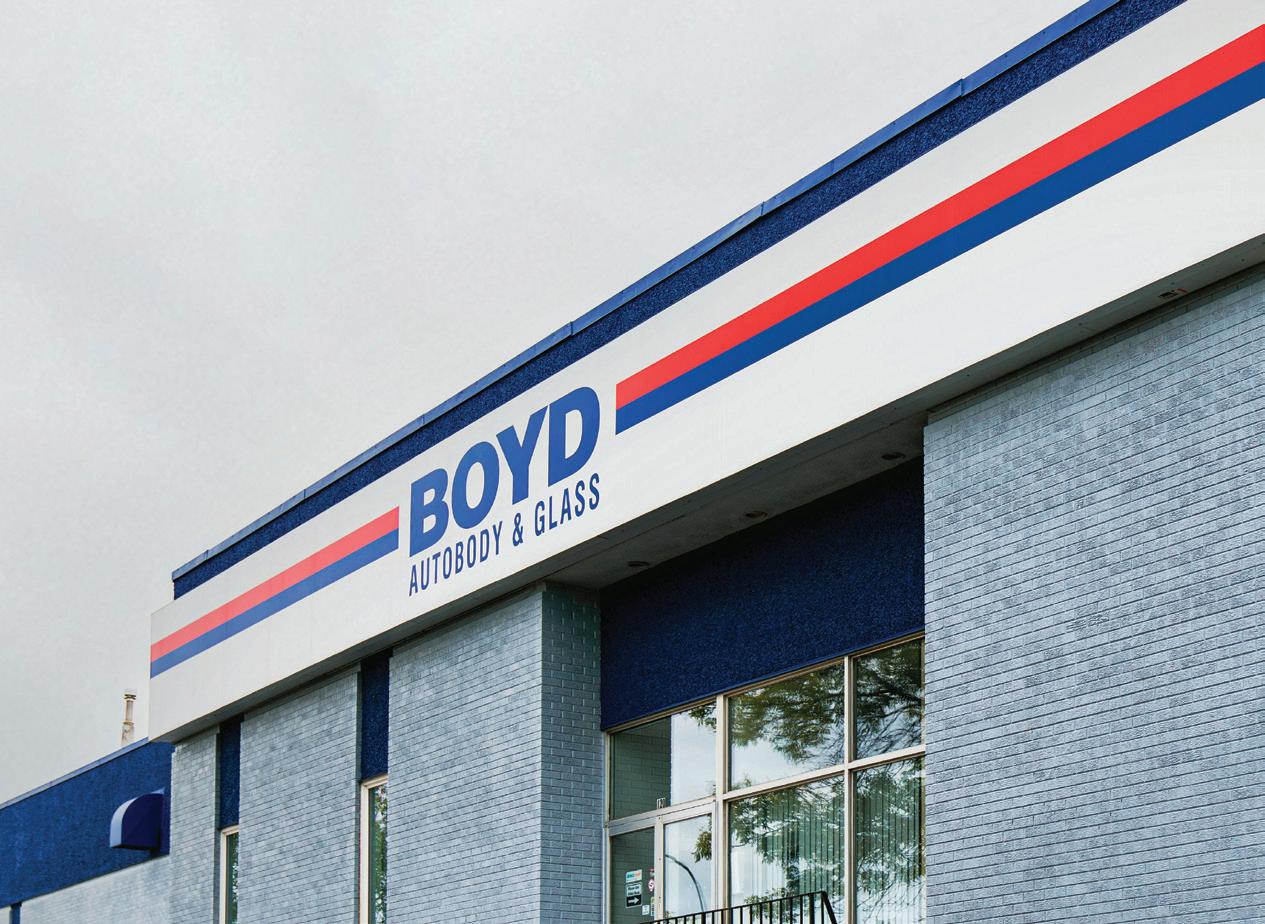
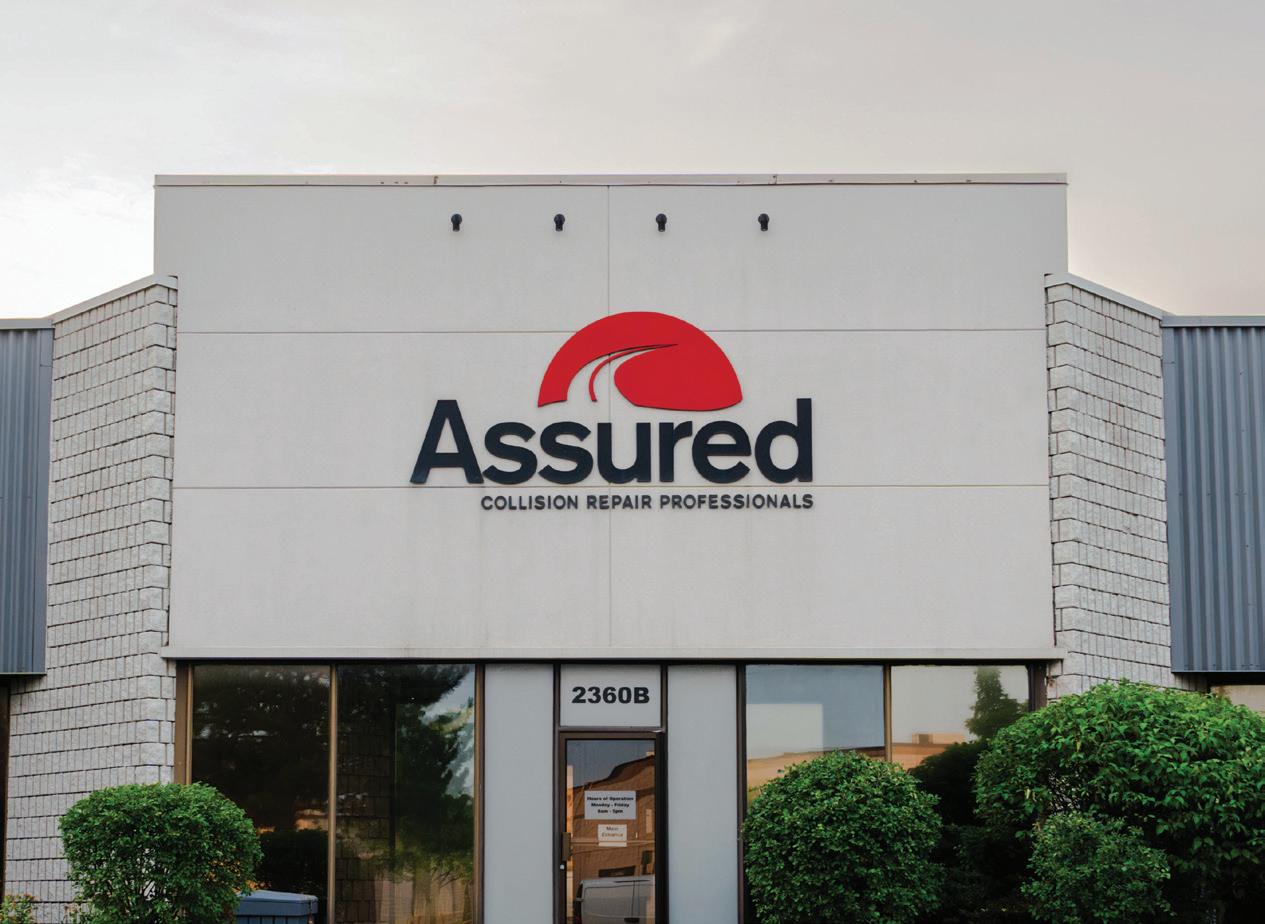
Make the decision to sell your business a smart business decision.
When you’re ready to sell your collision repair business, the Boyd Group is ready for you. We’re the leading, scaled operator in Canada with a highly experienced team offering bestin-class performance, earned on a trusted reputation. Ensure continuity for your people and the communities you serve, reach out today!
With a waterborne basecoat that’s easy to mix, match and apply and that uses the same coat flash application you’ve already perfected, Cromax® EZ makes an exceptional finish feel effortless. Discover how easy an outstanding finish can be.
axalta.us/ez
